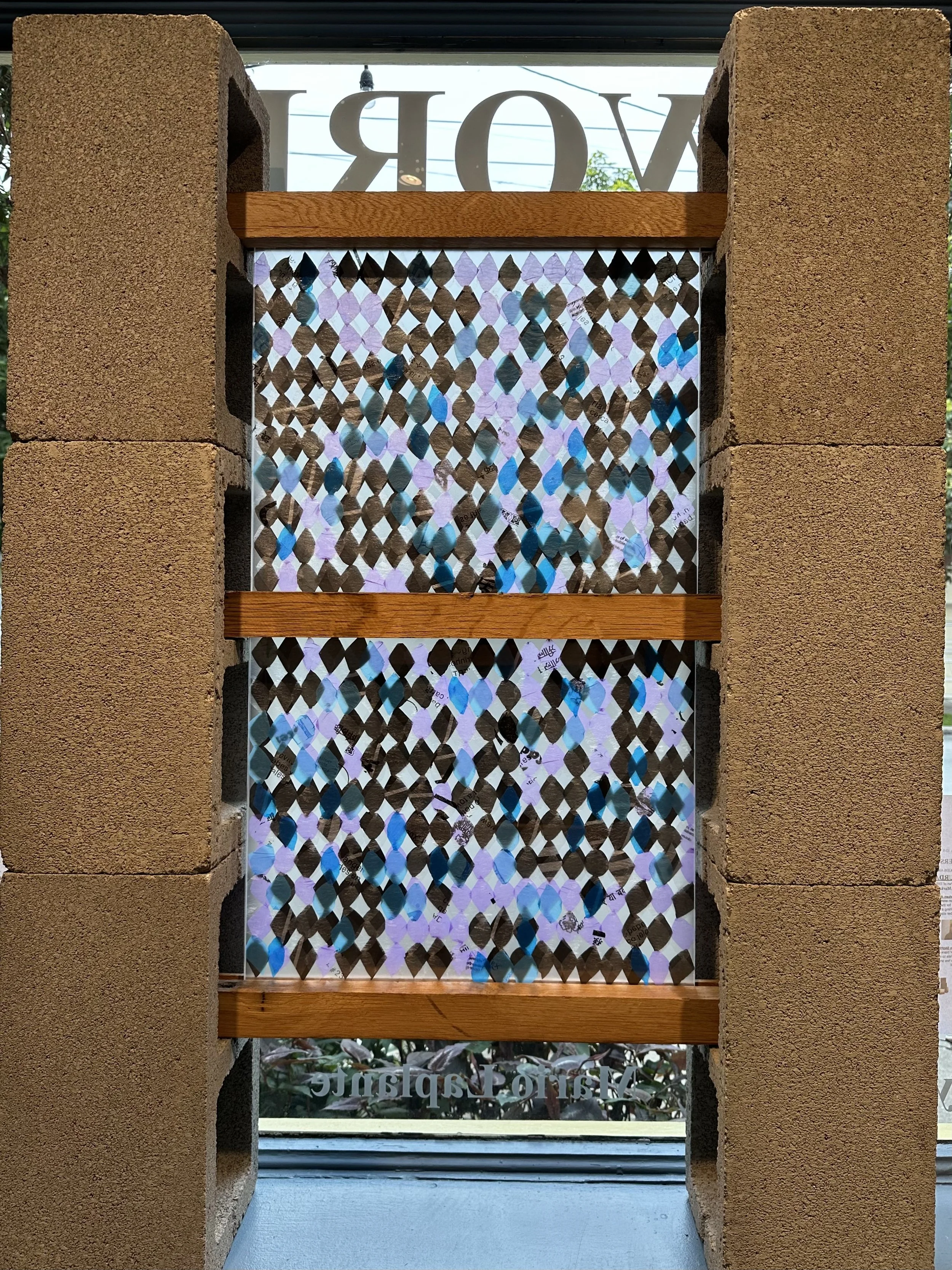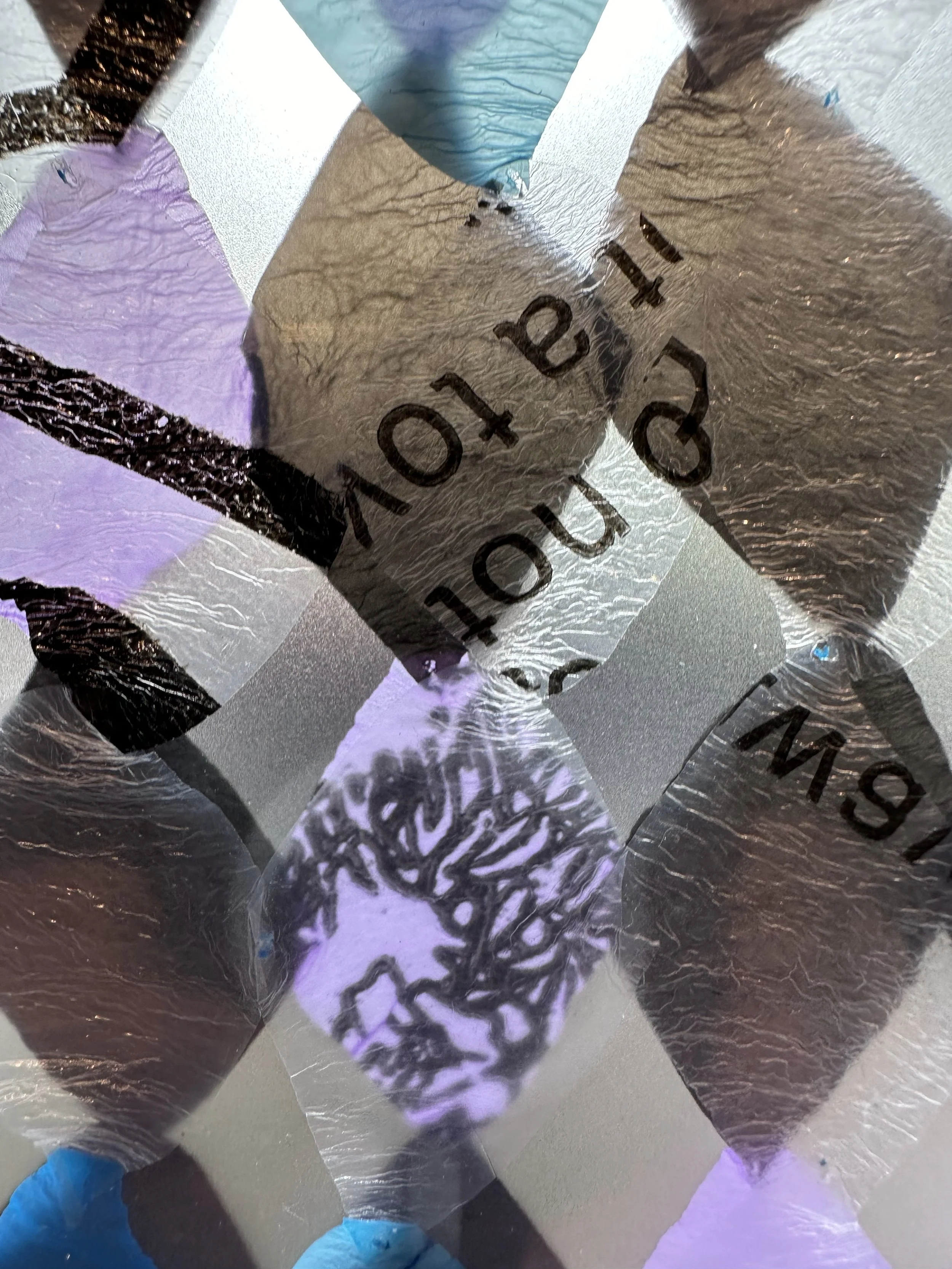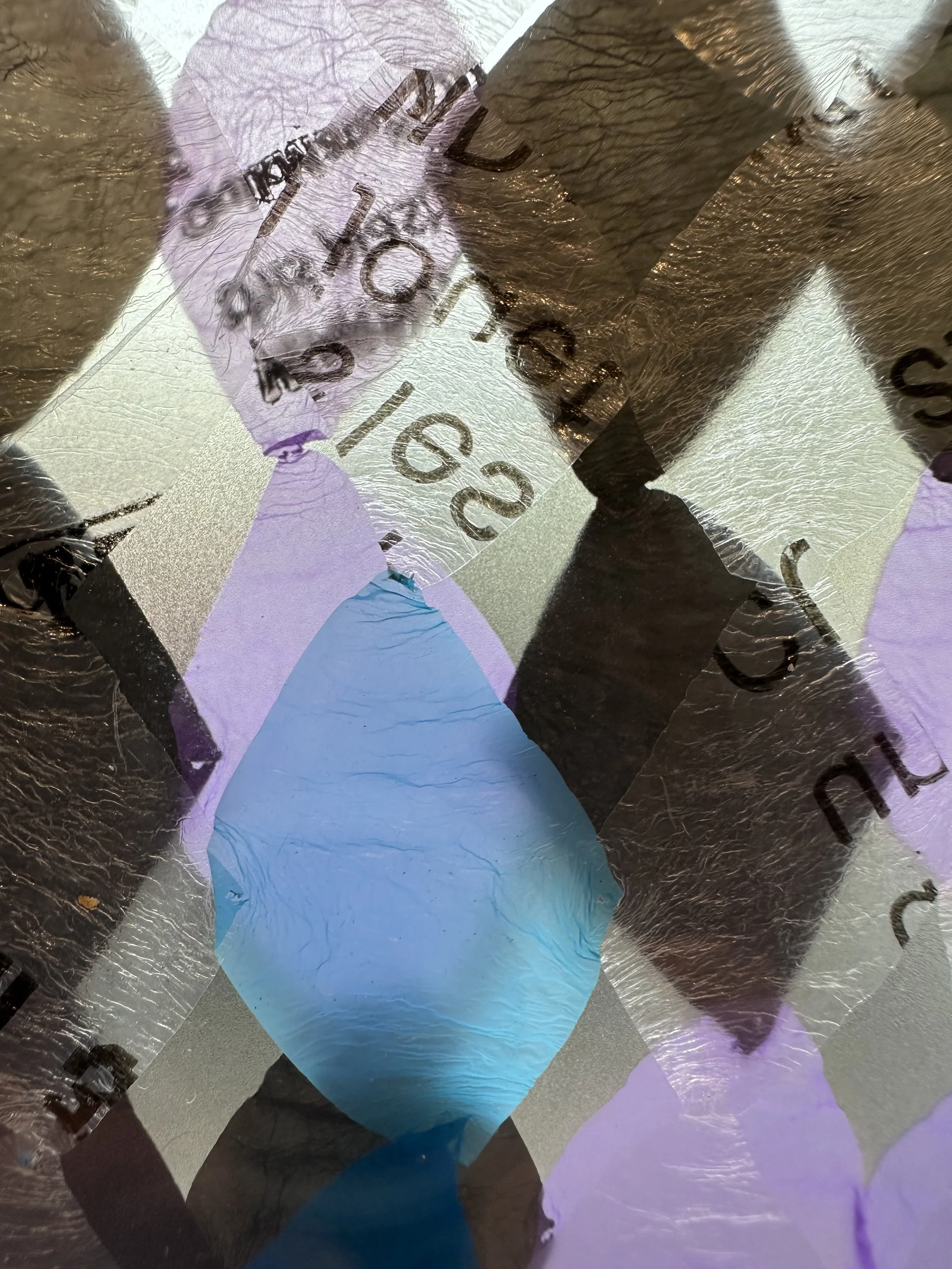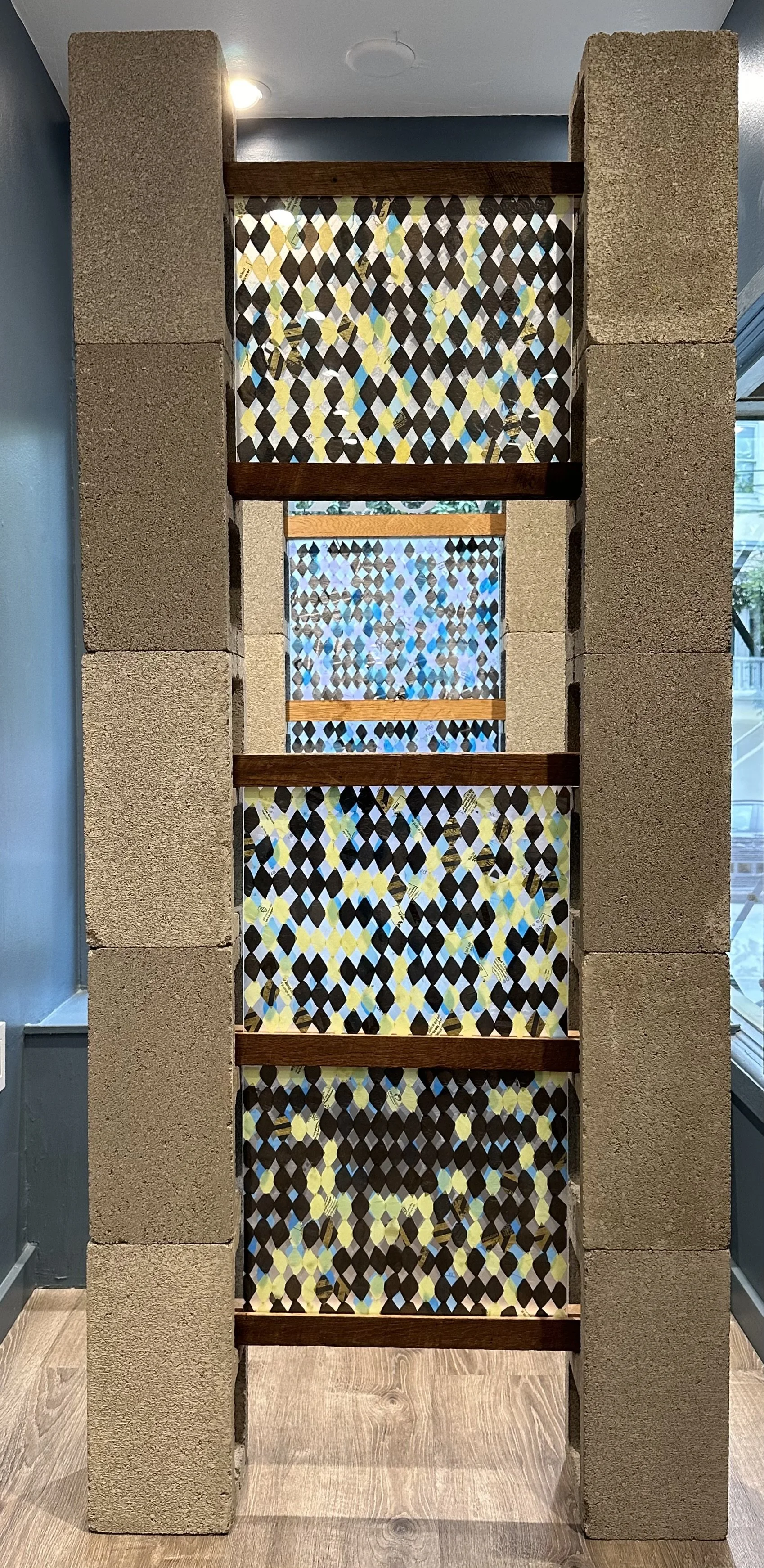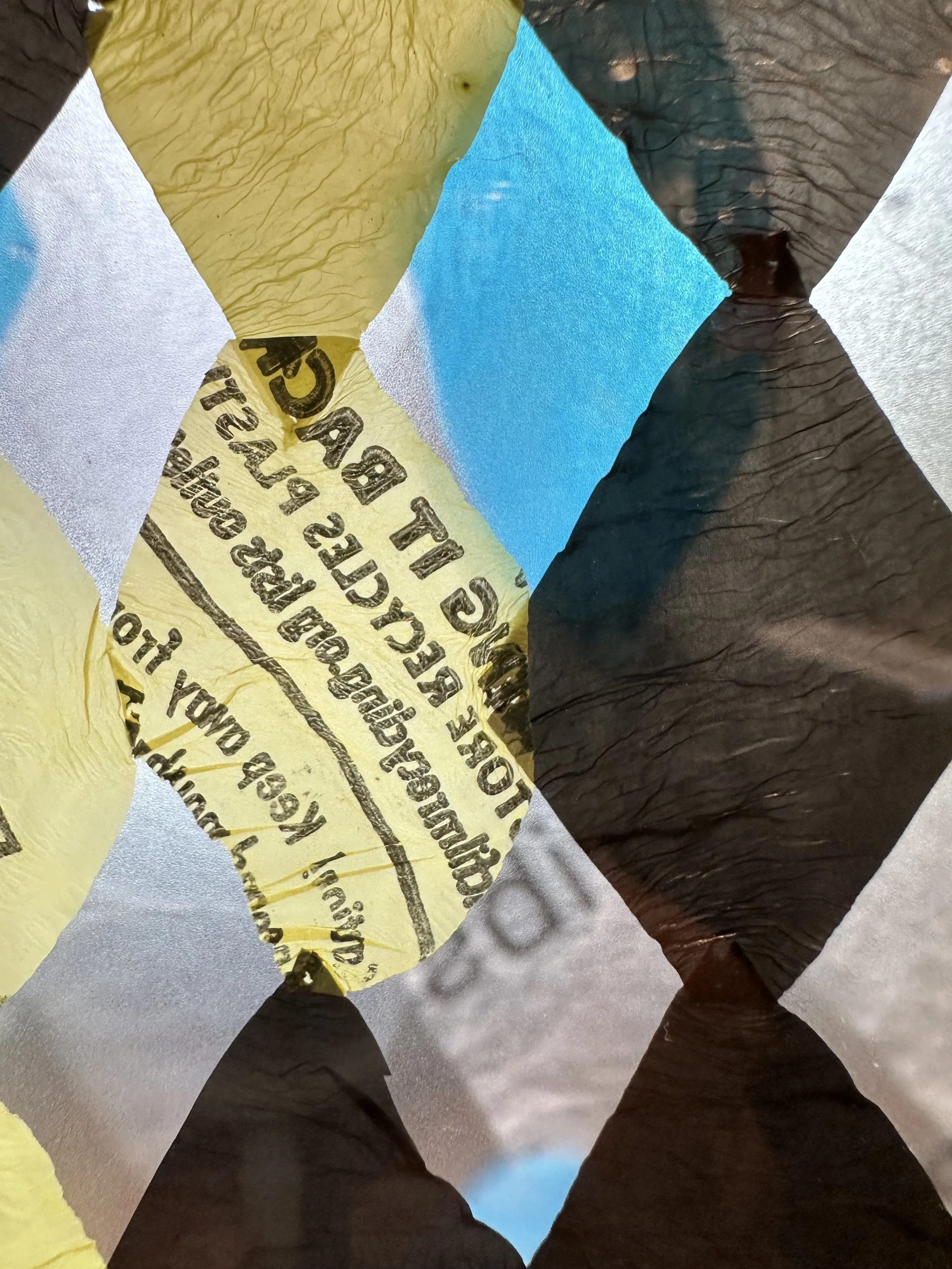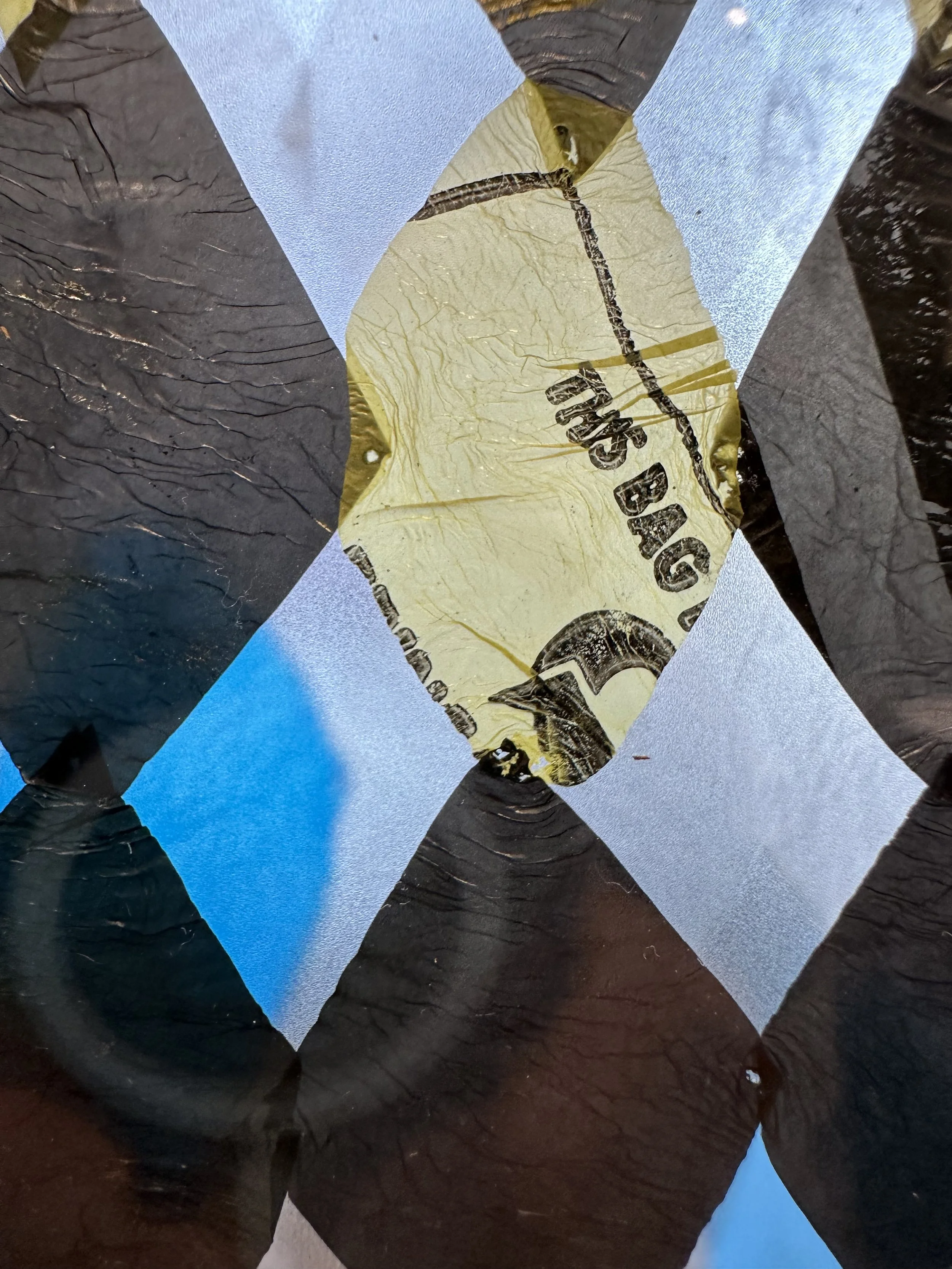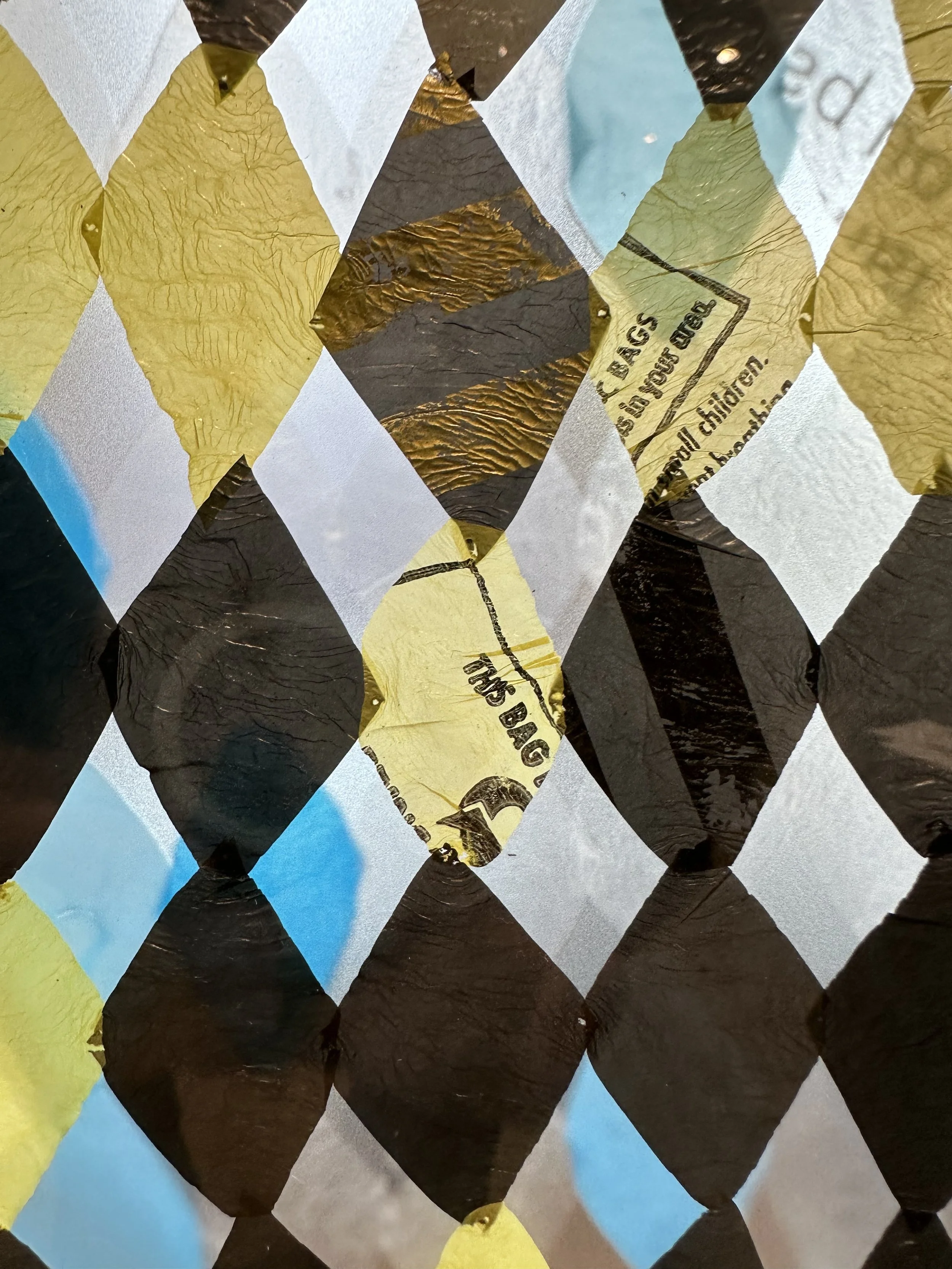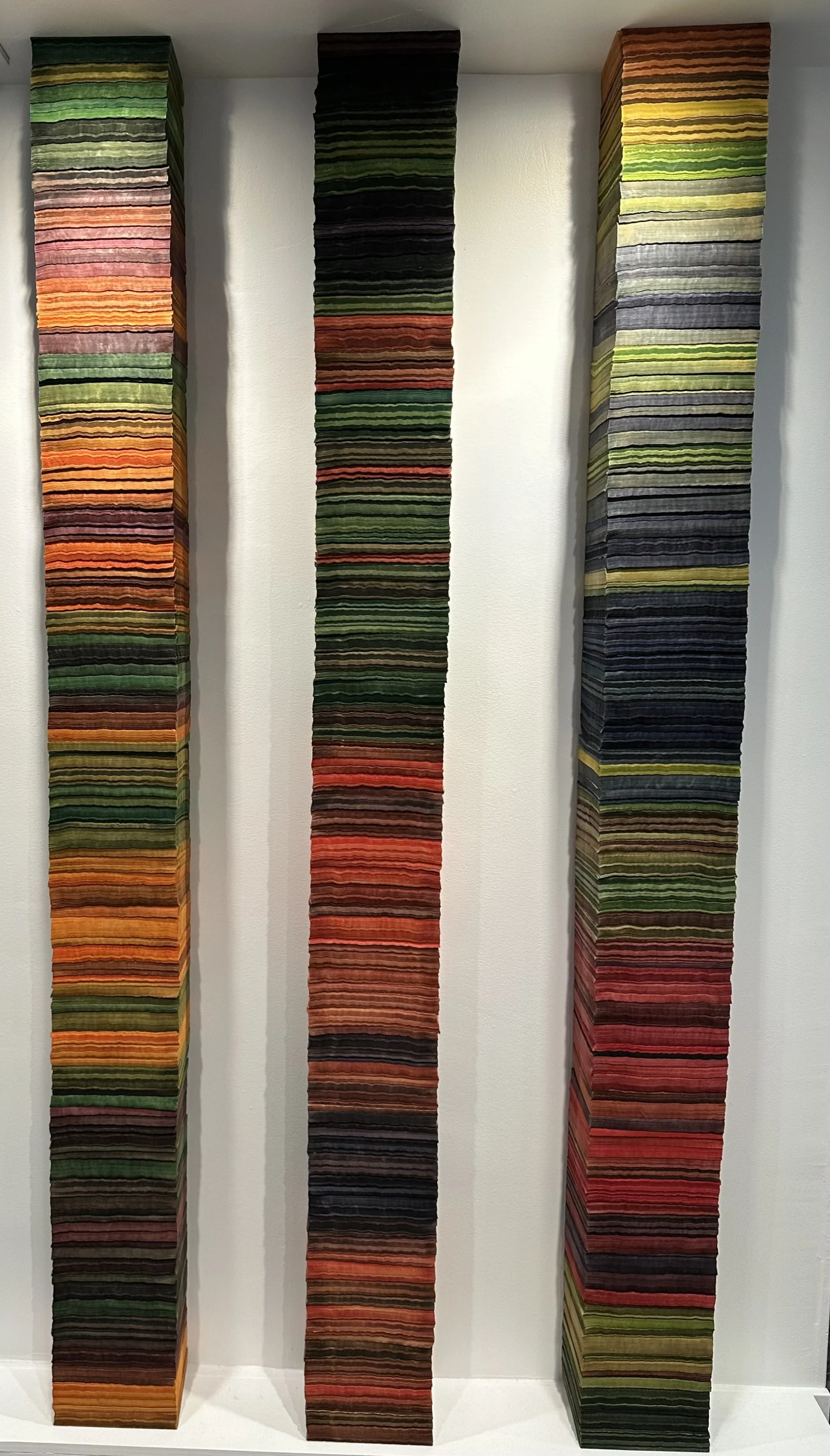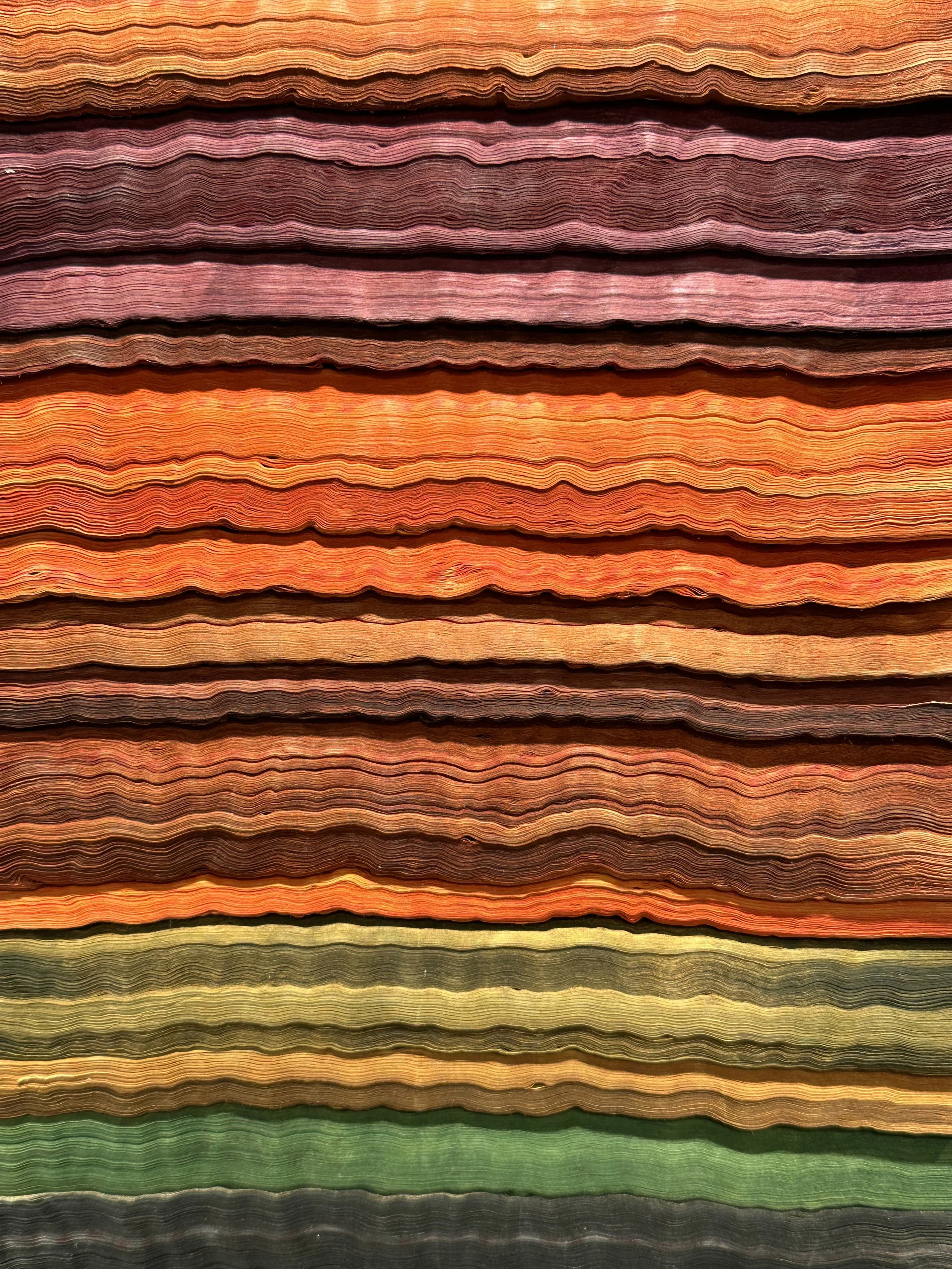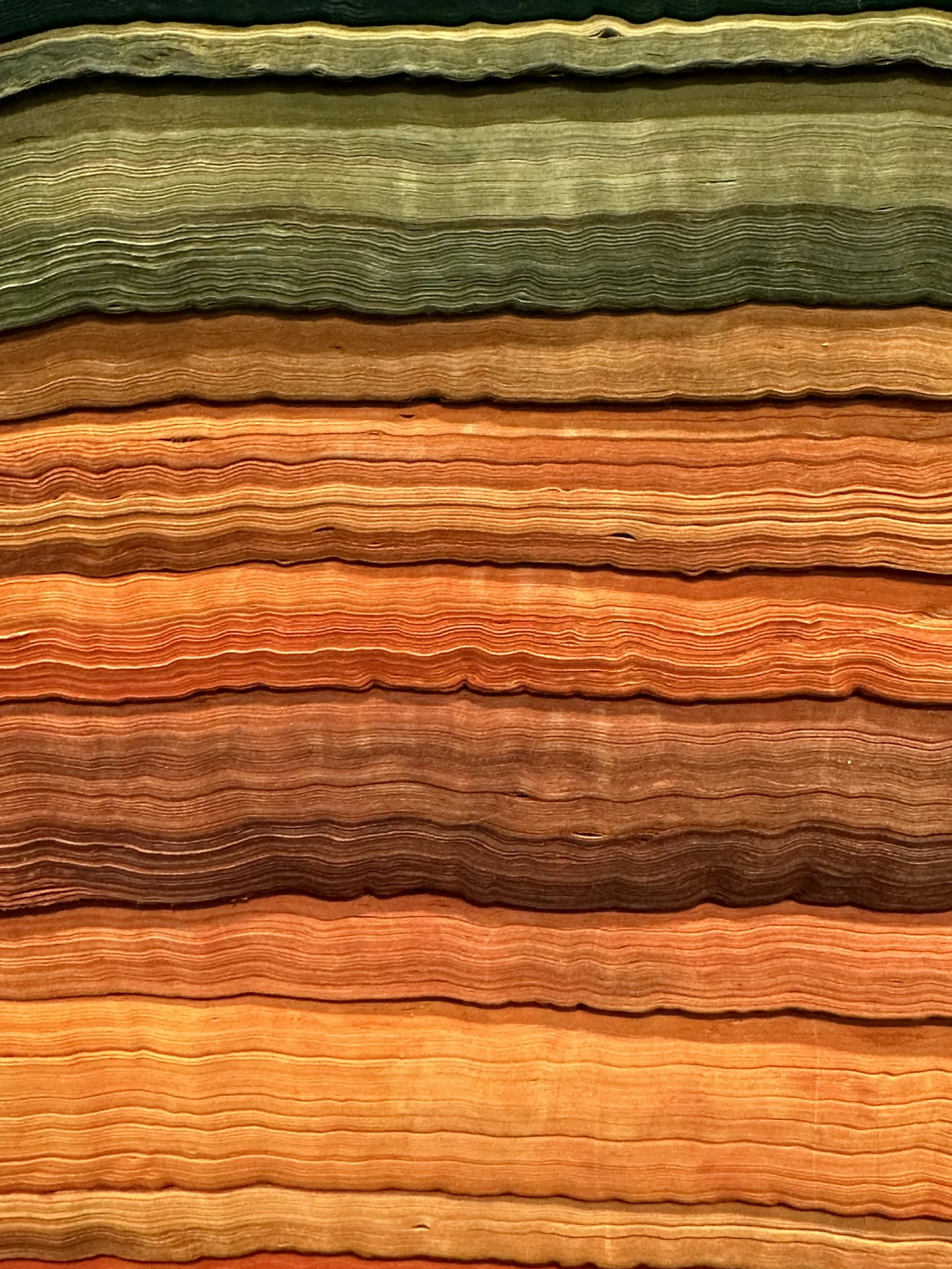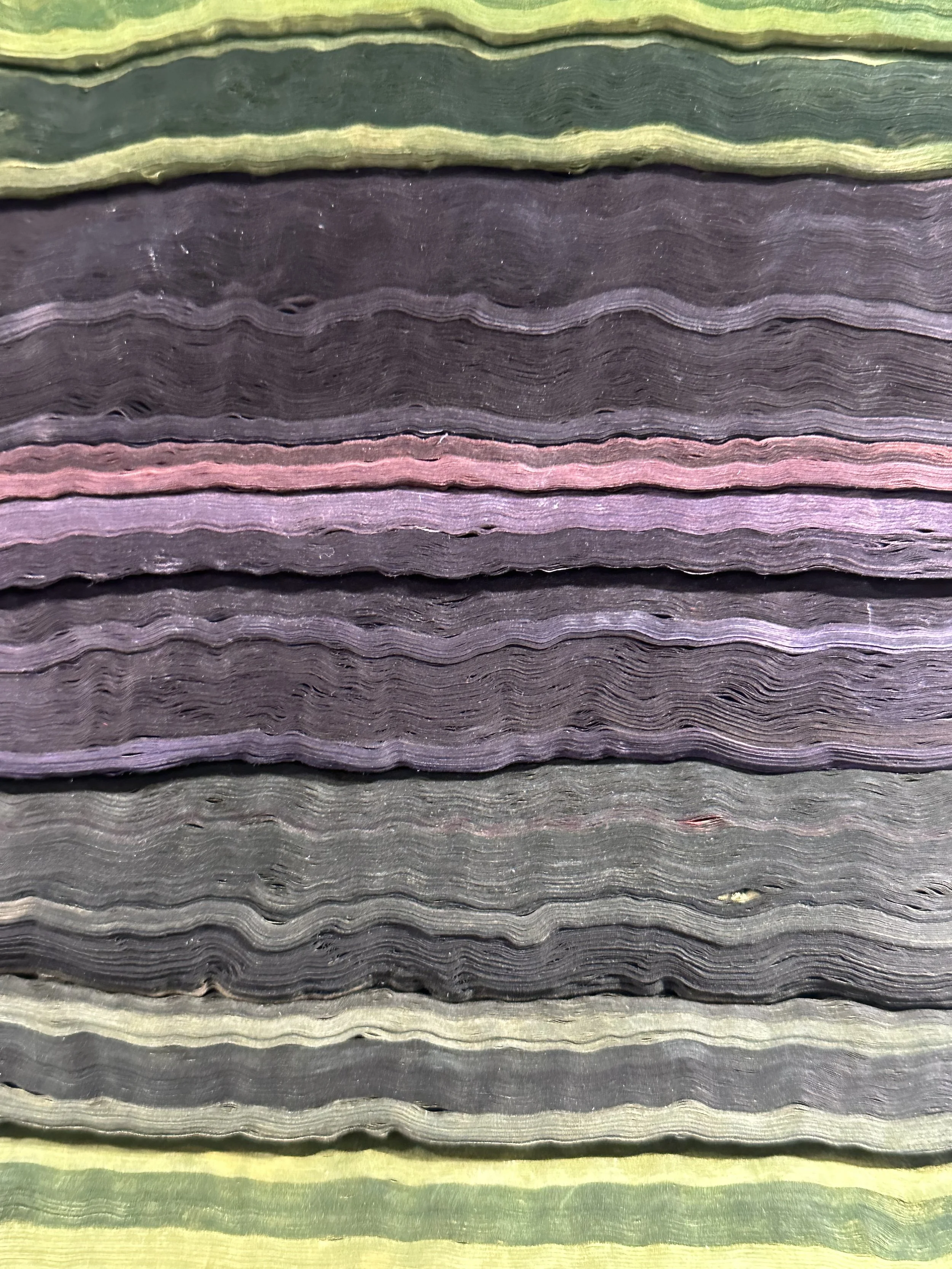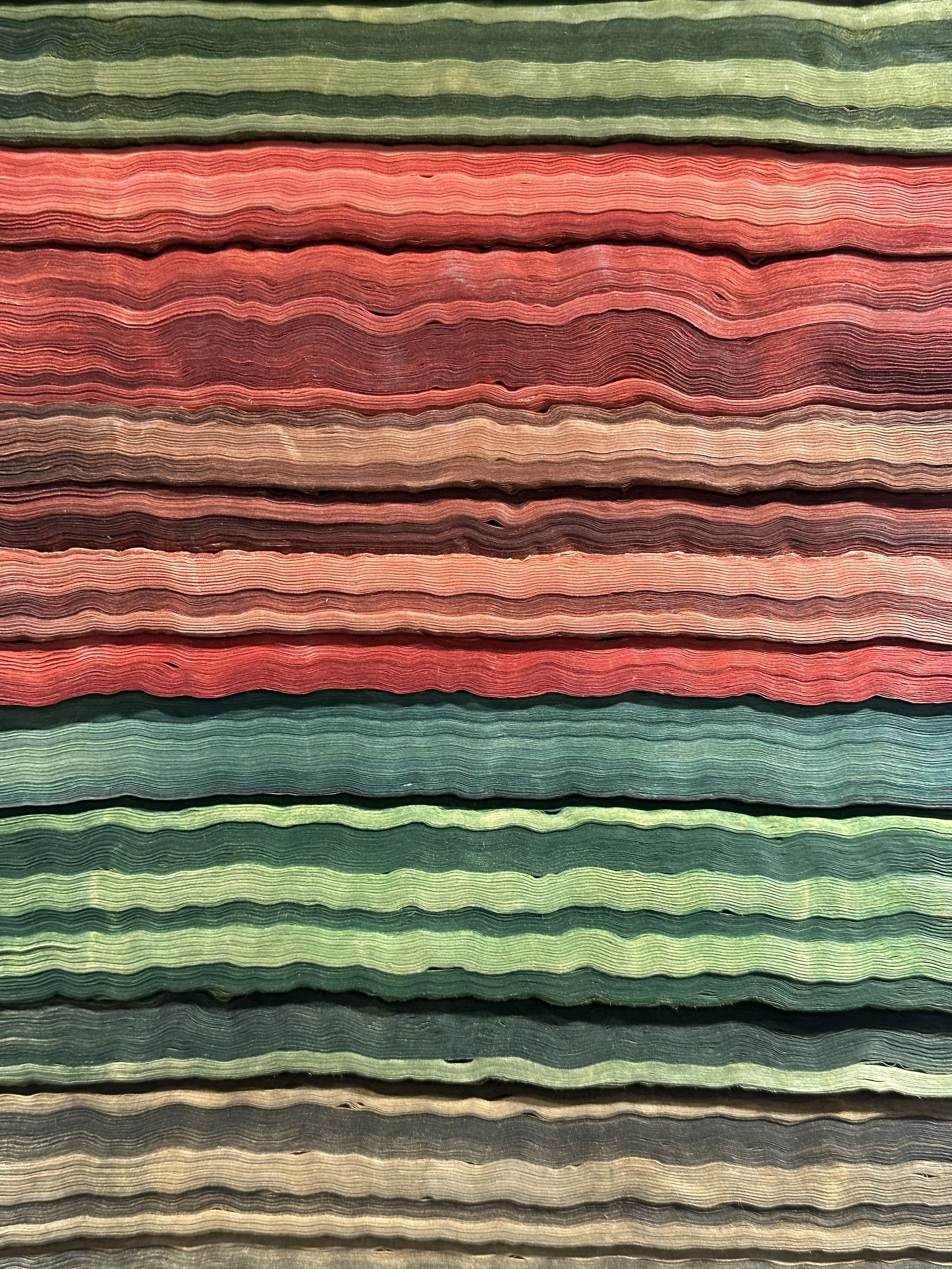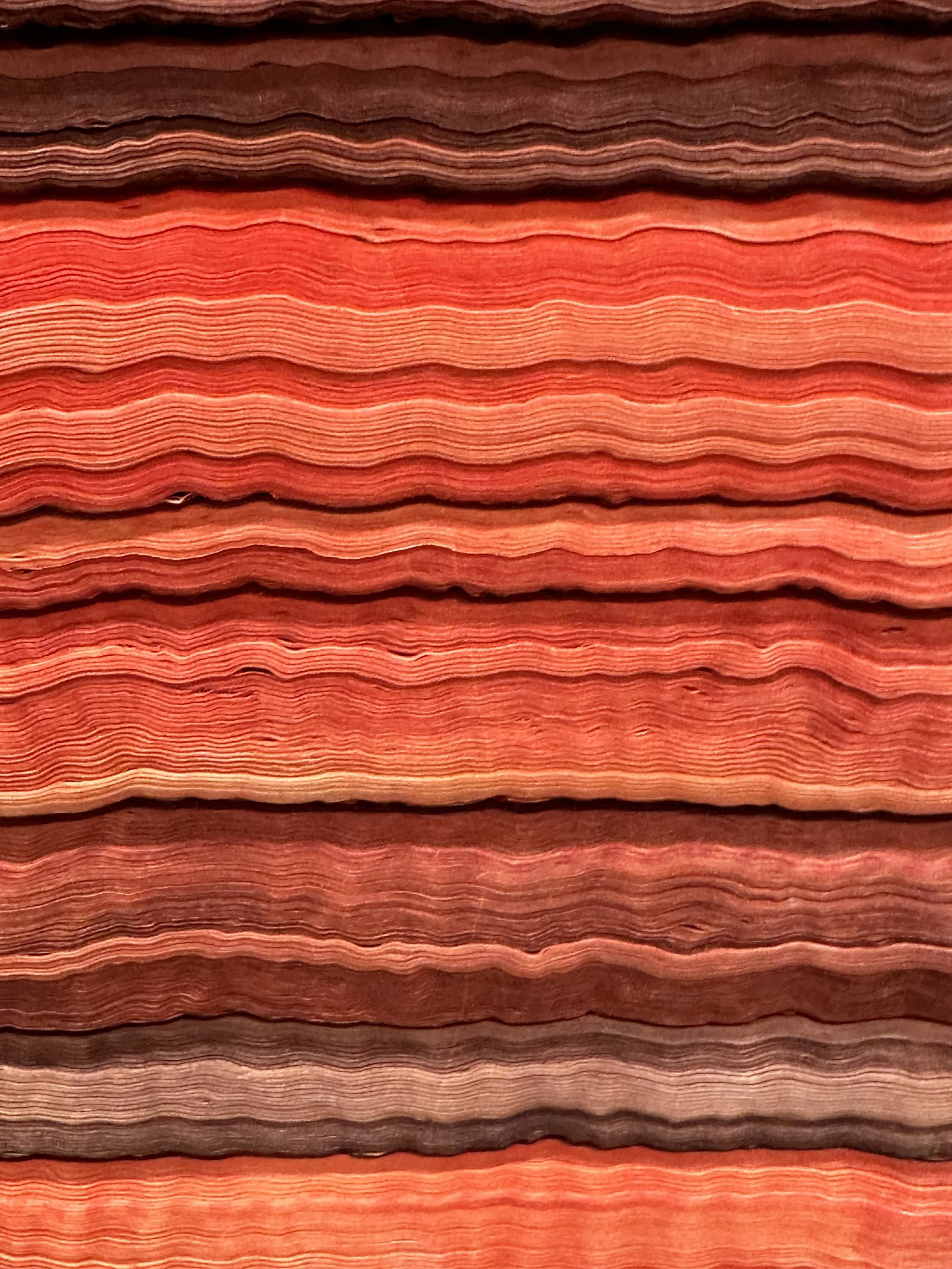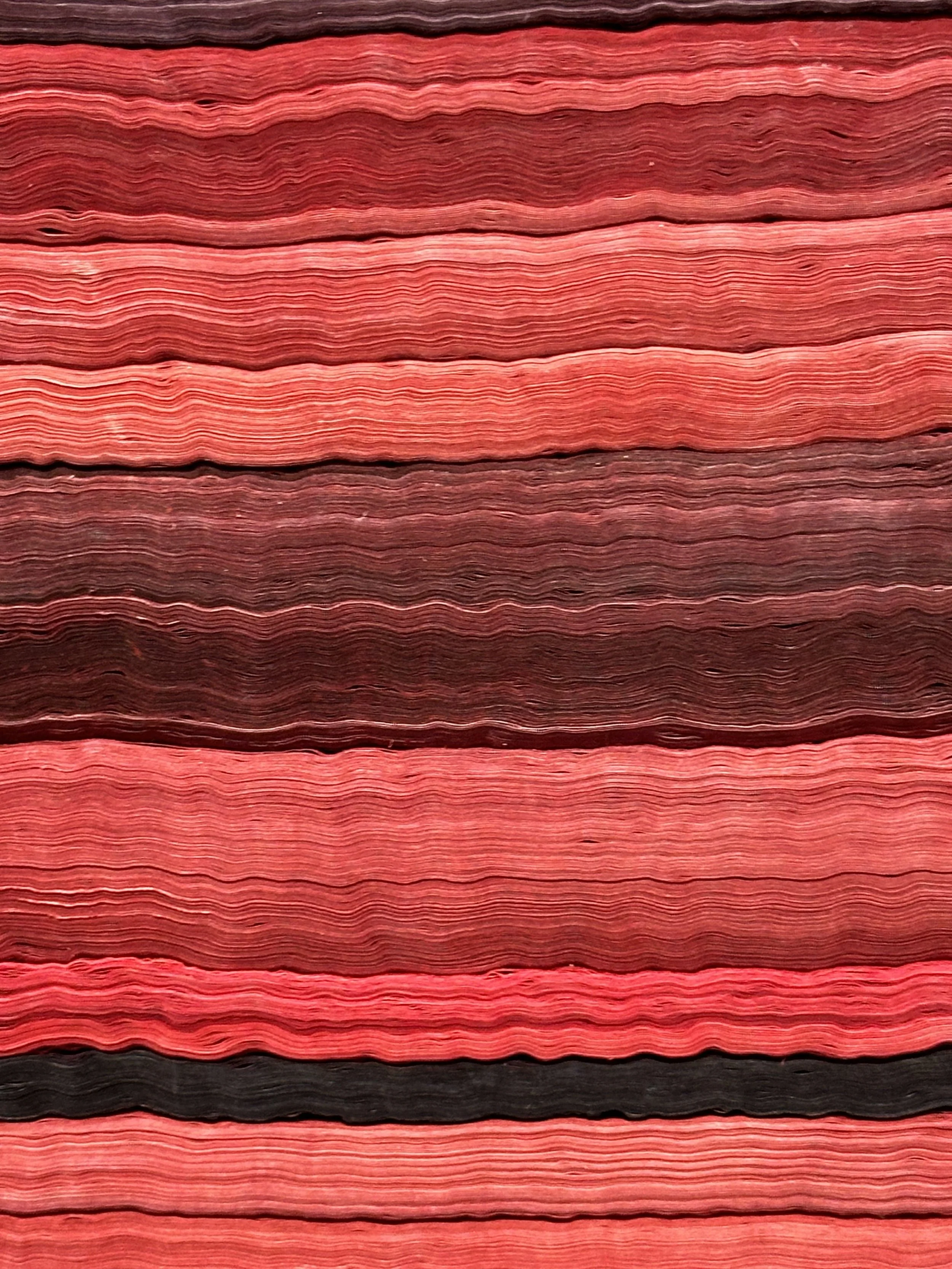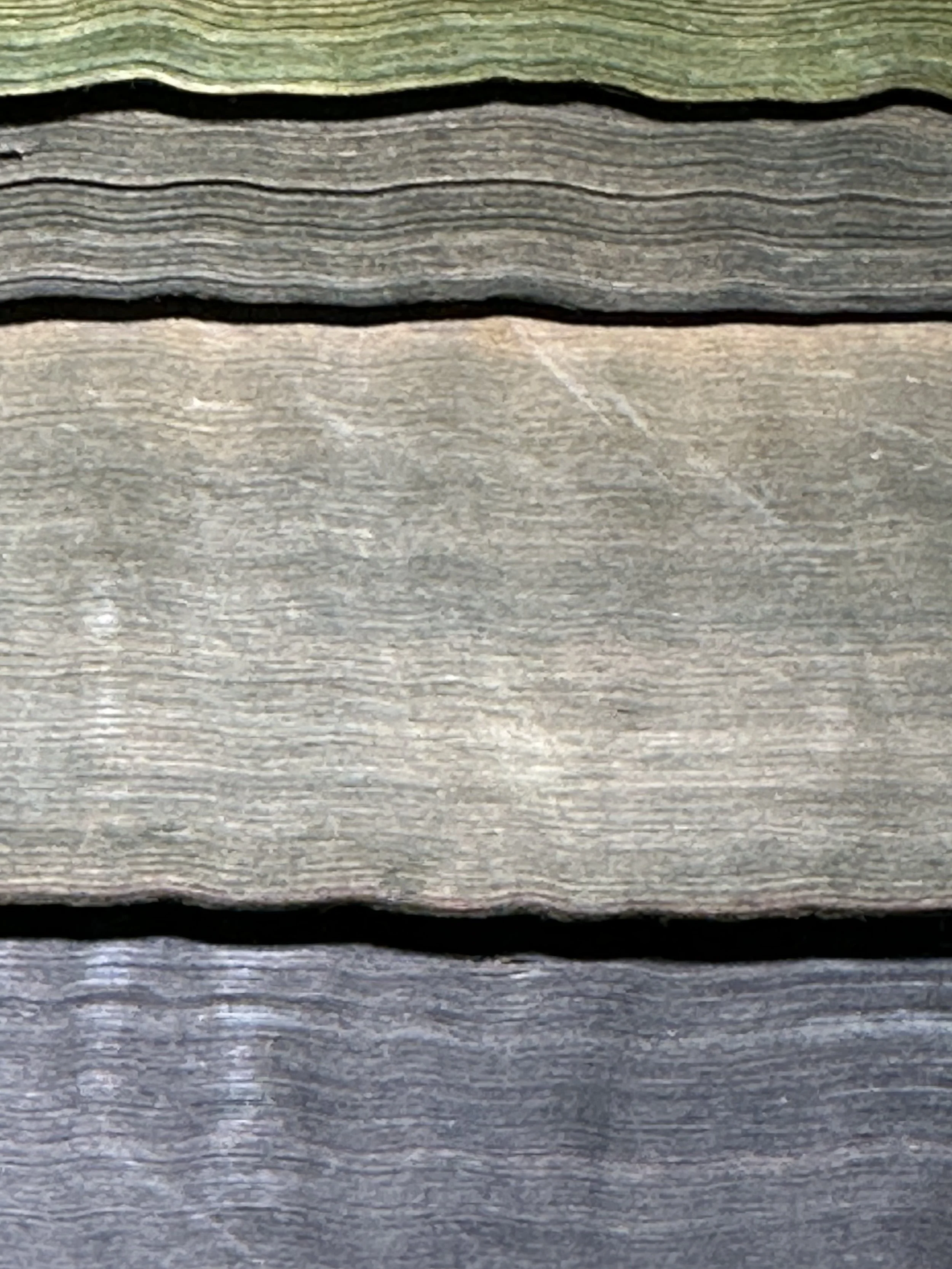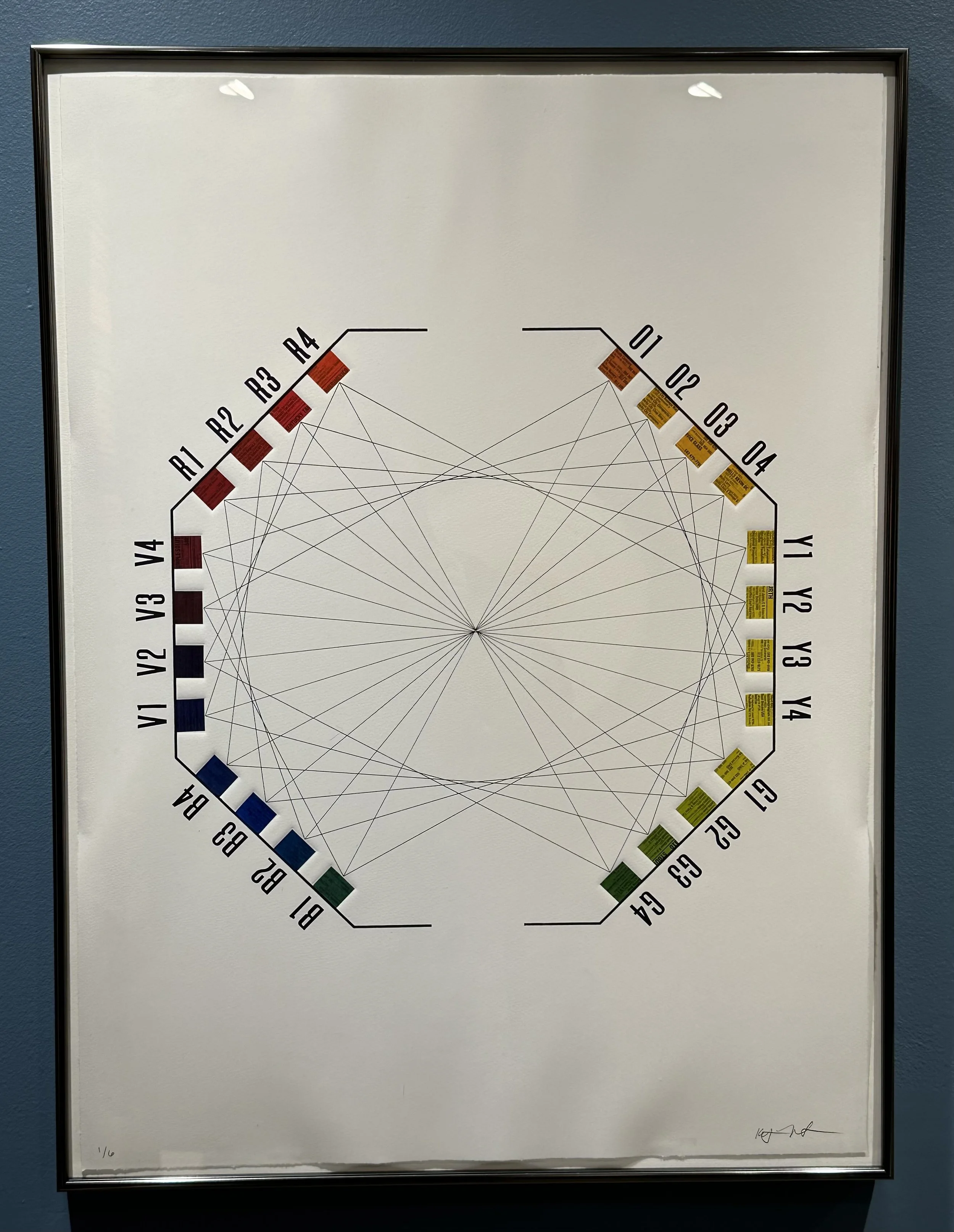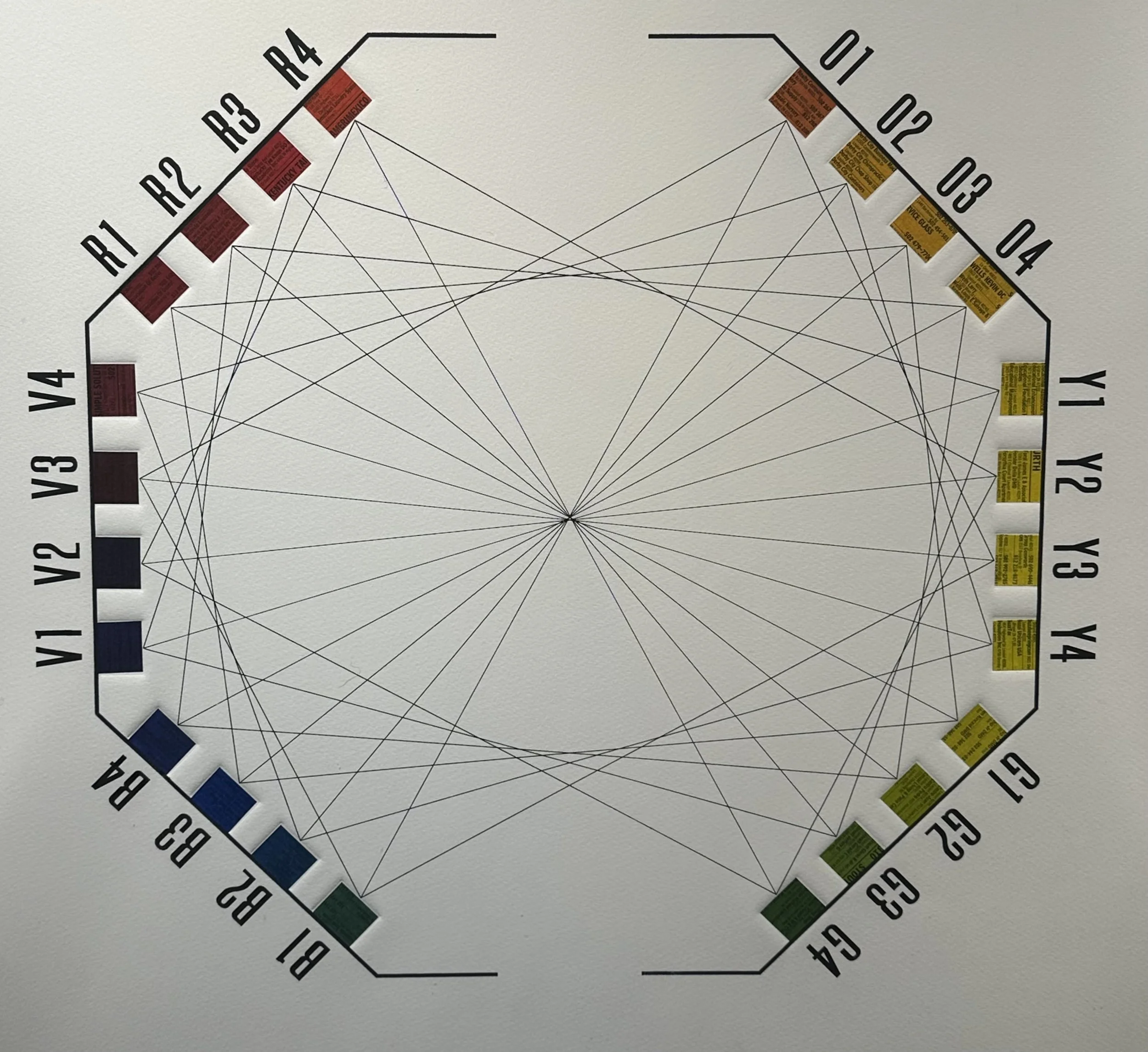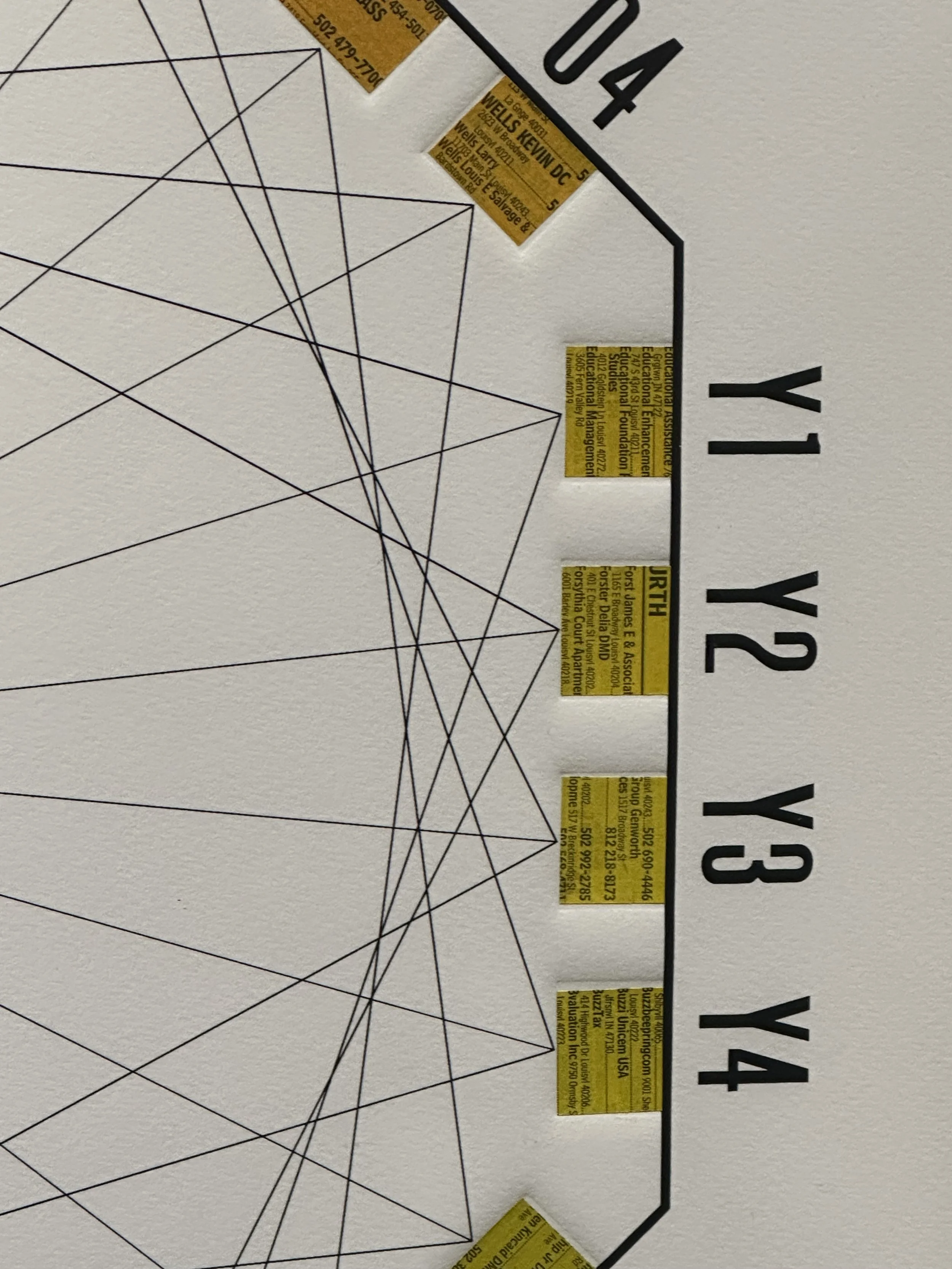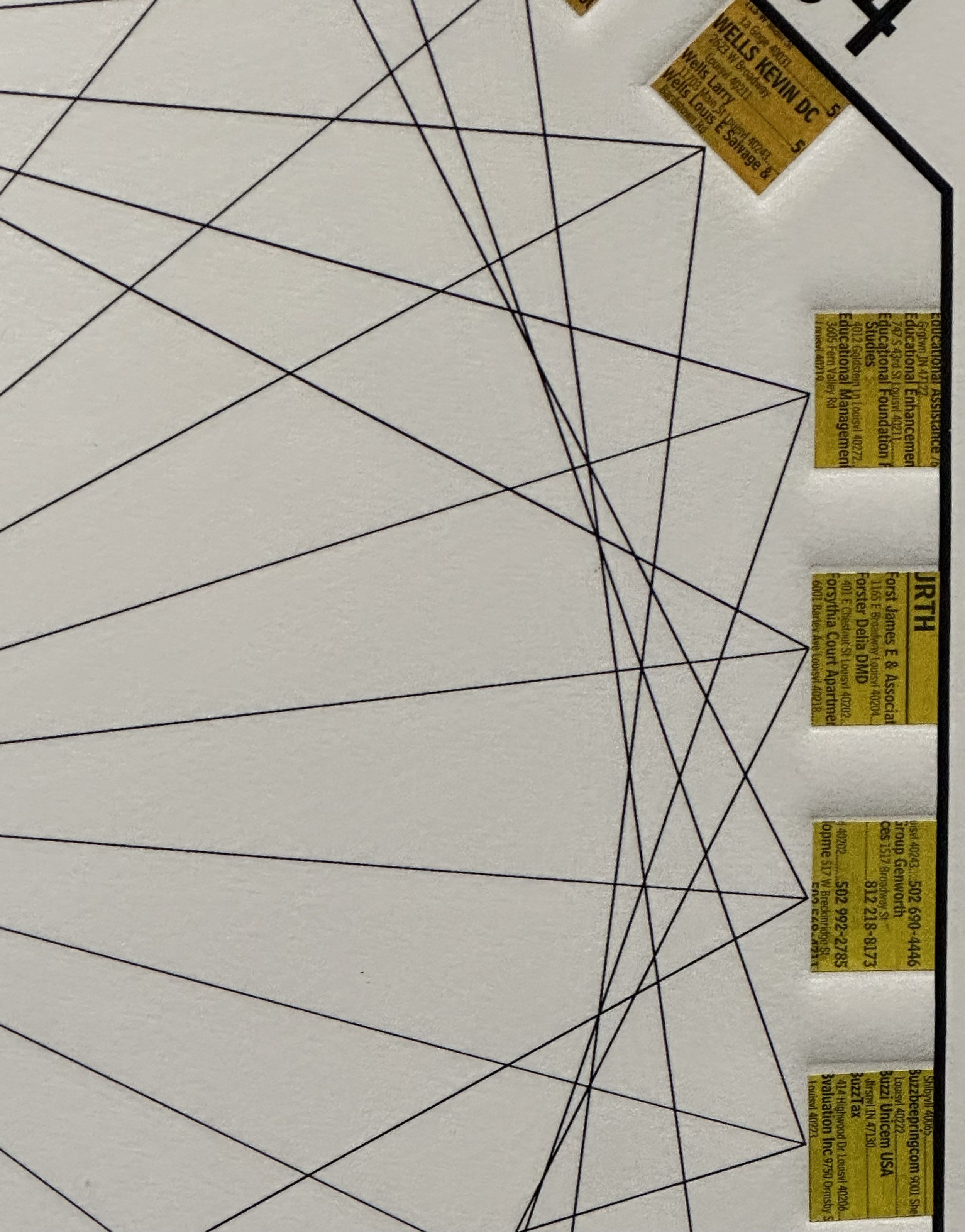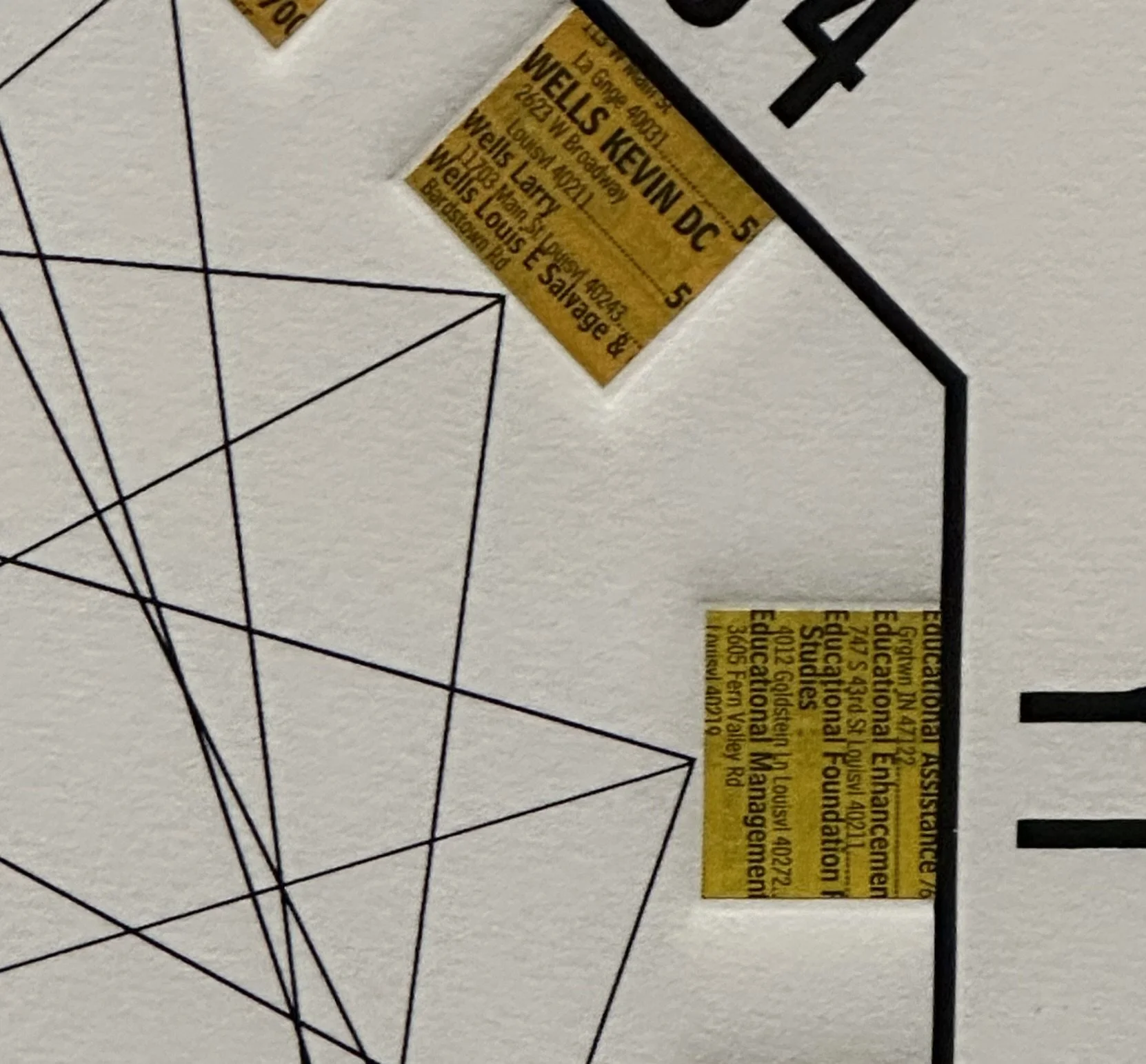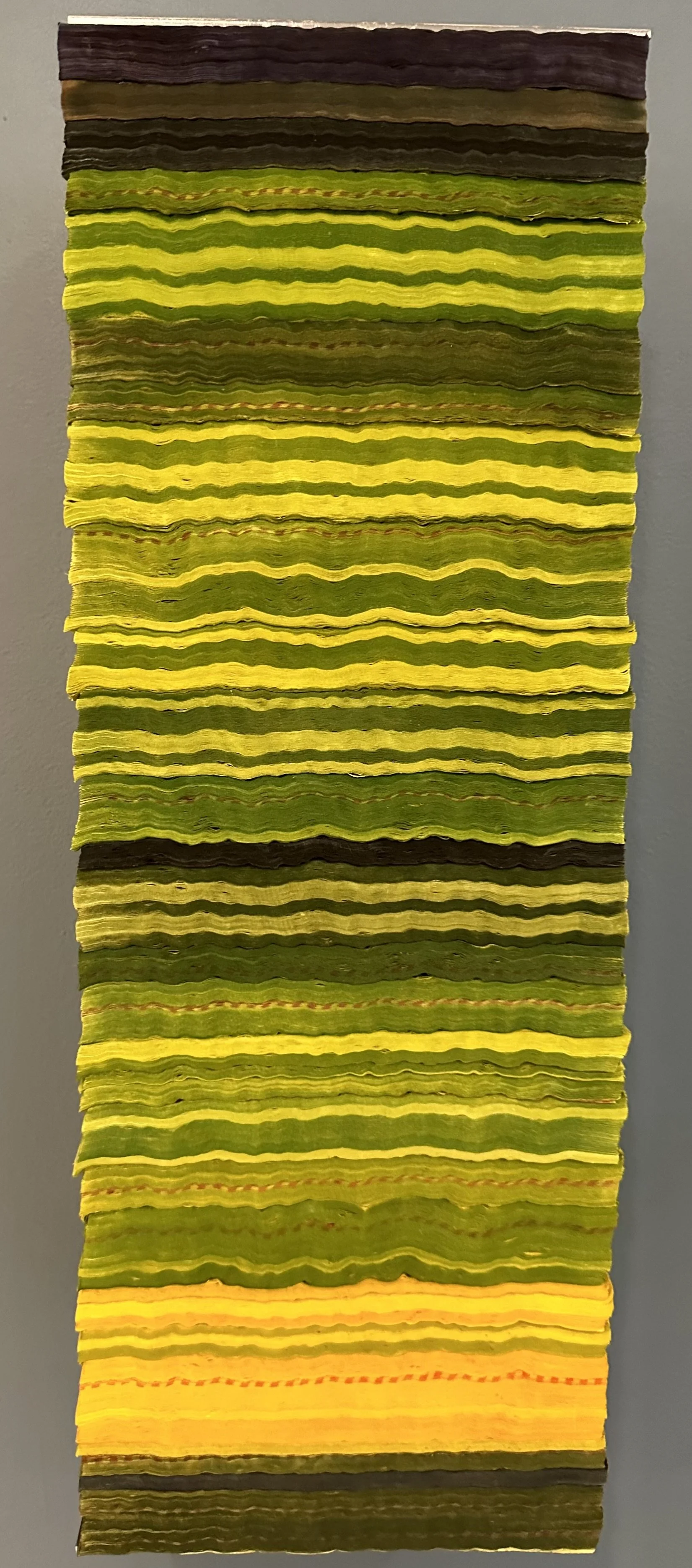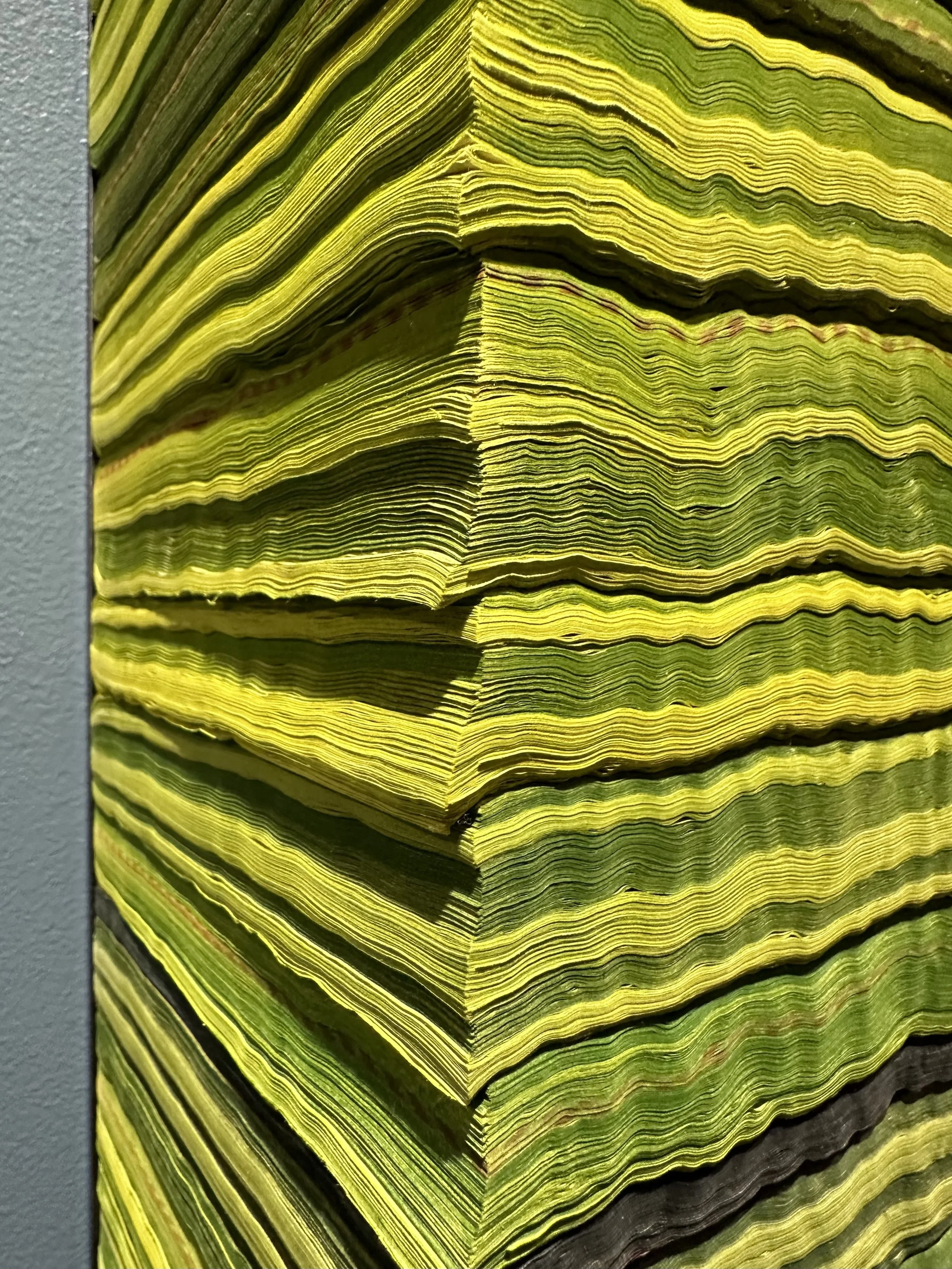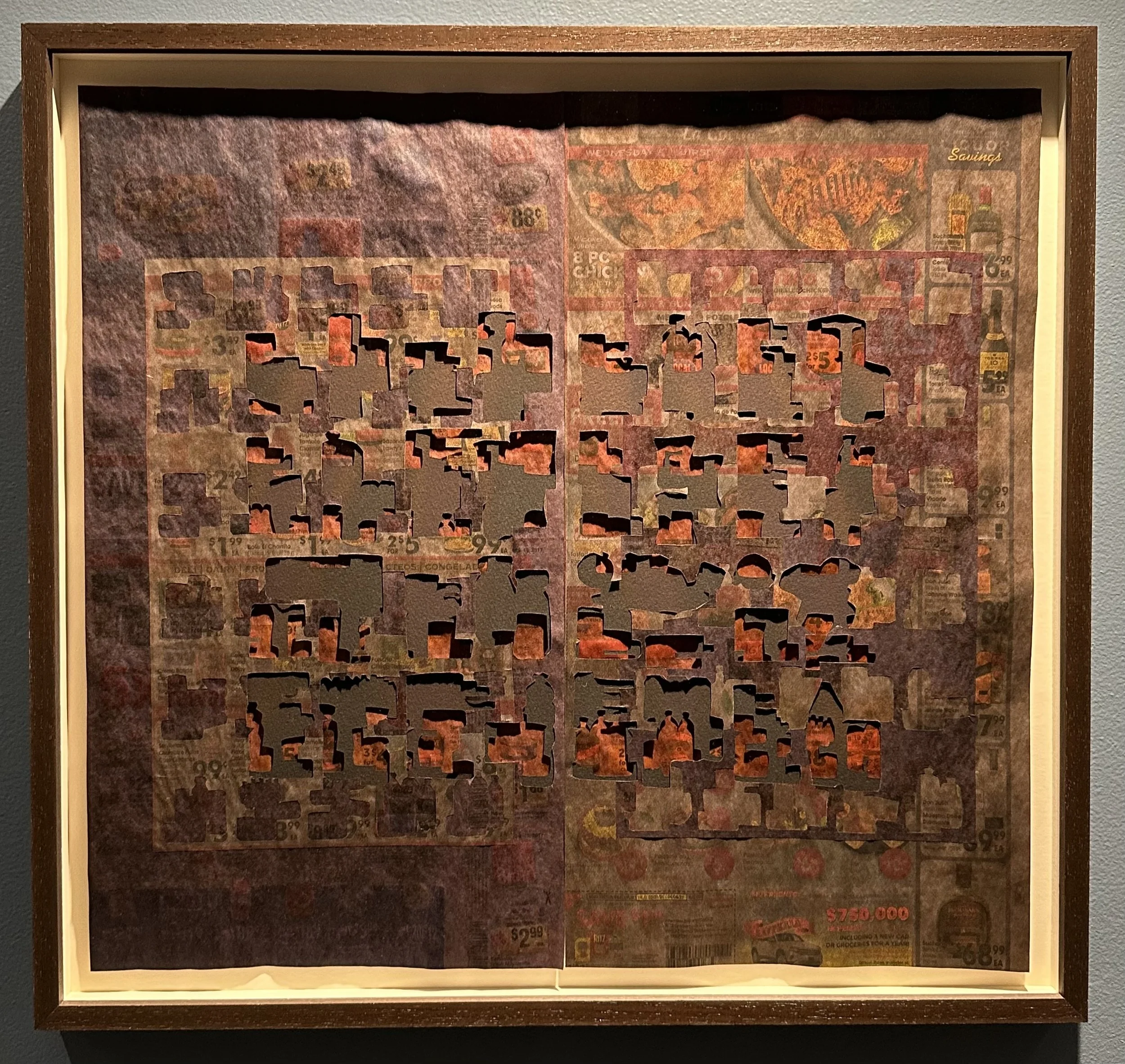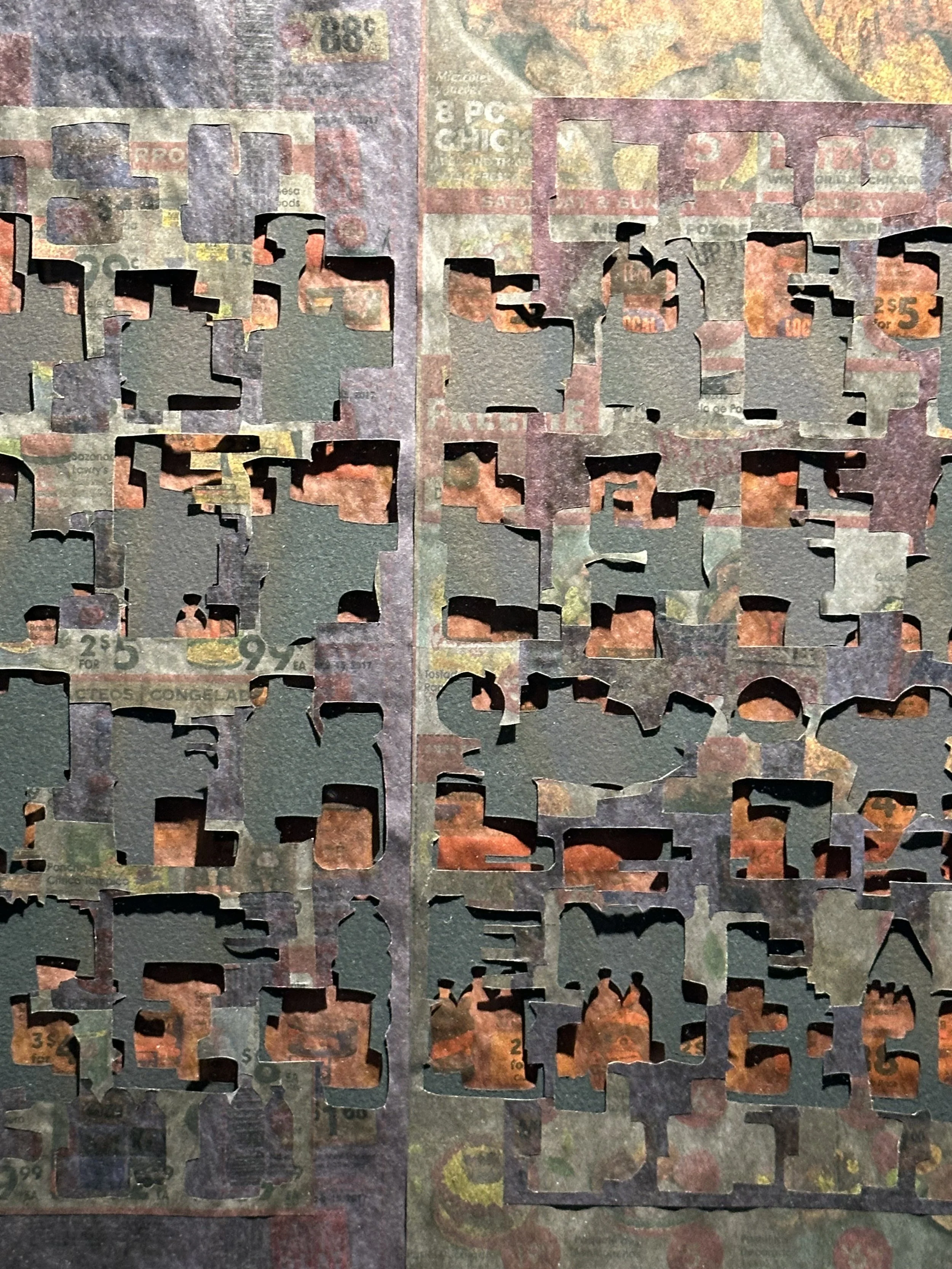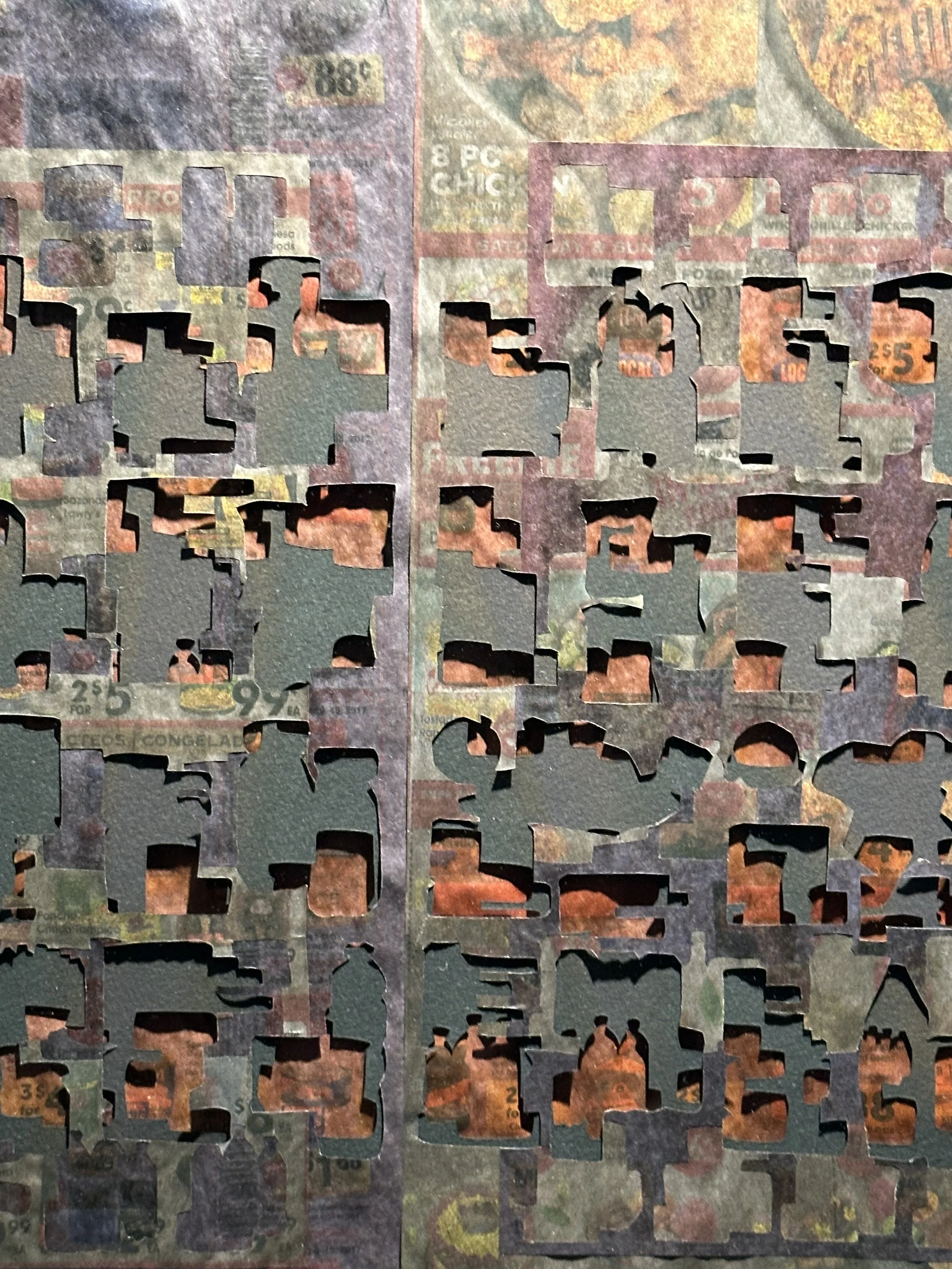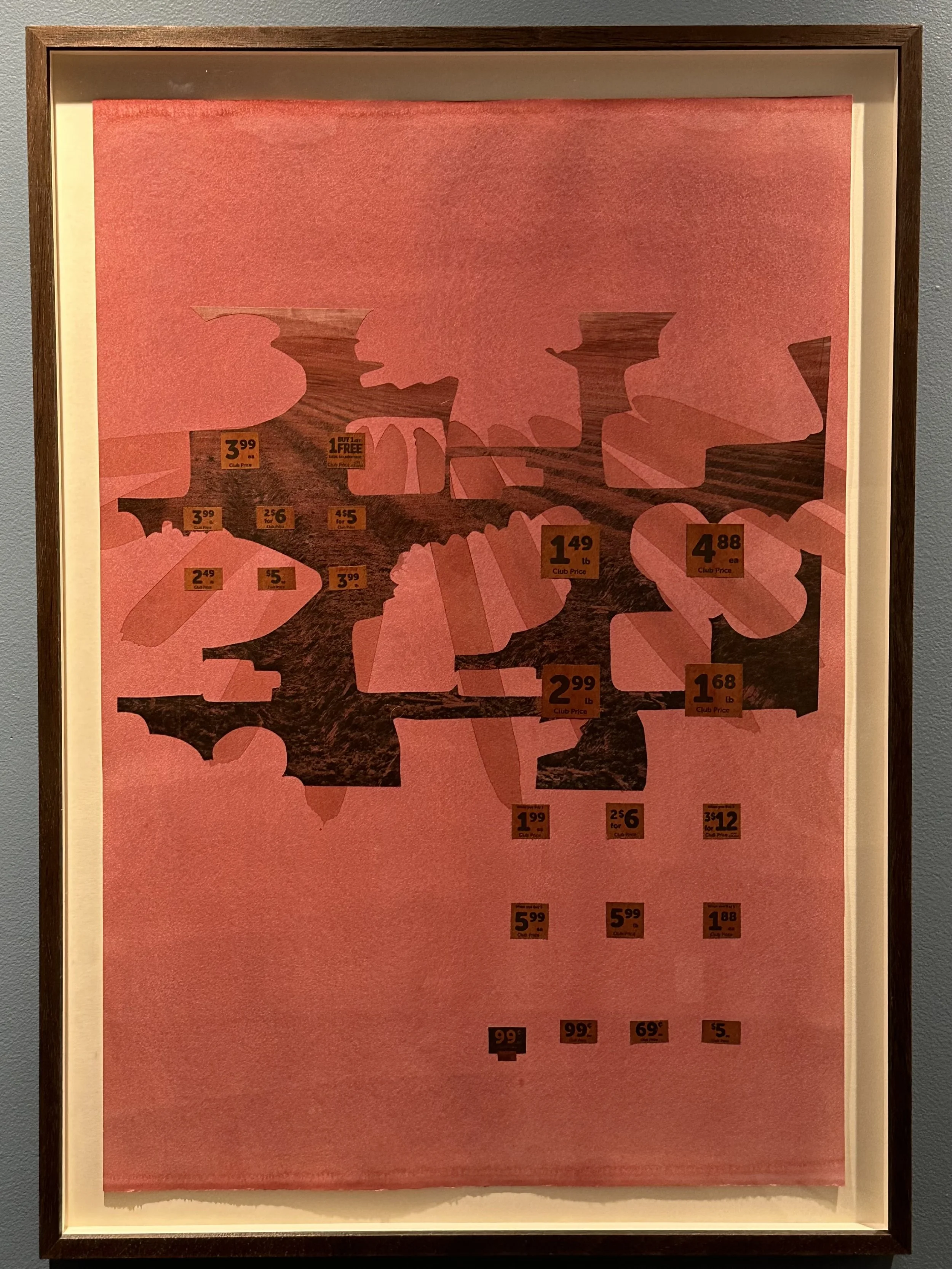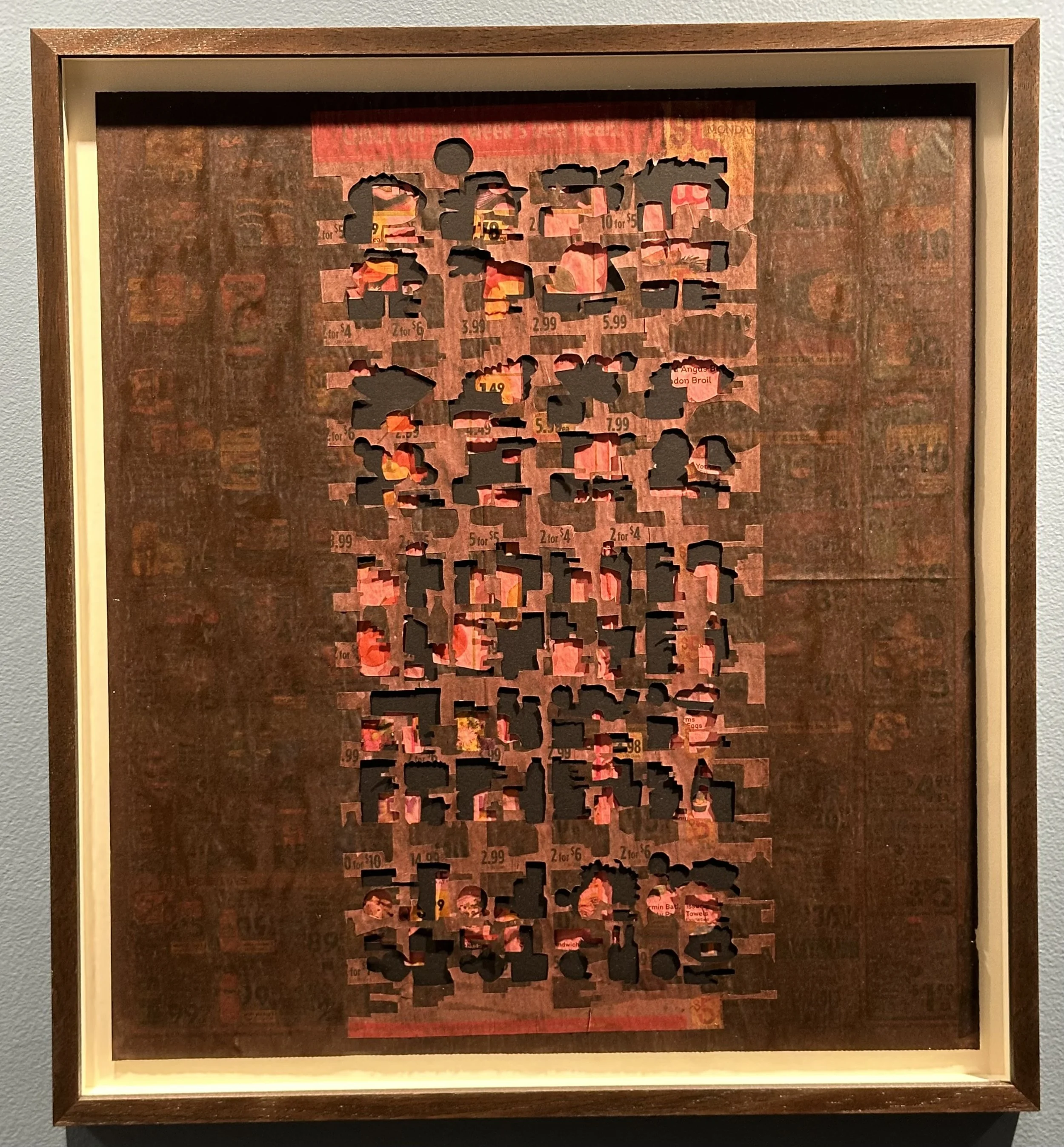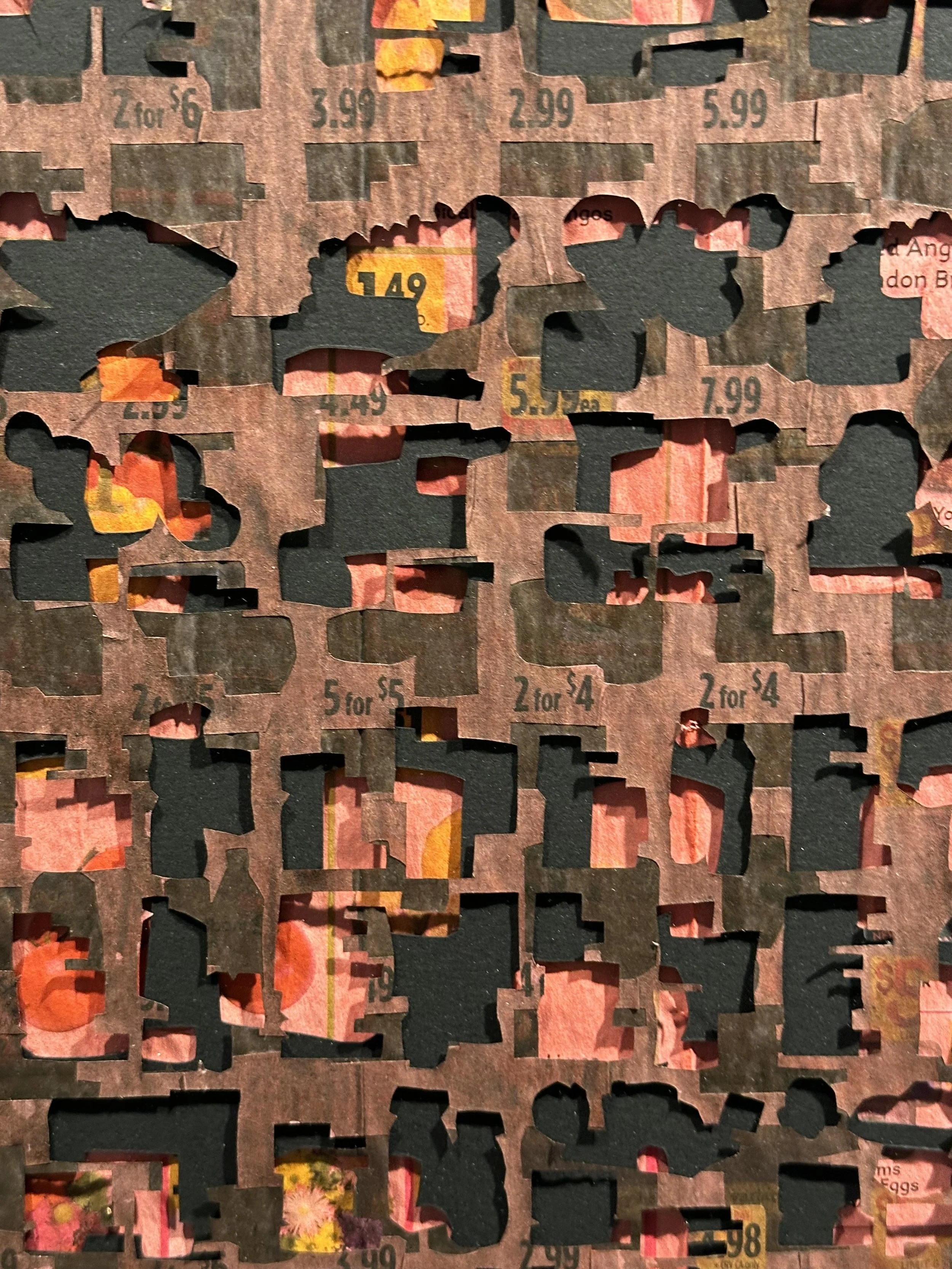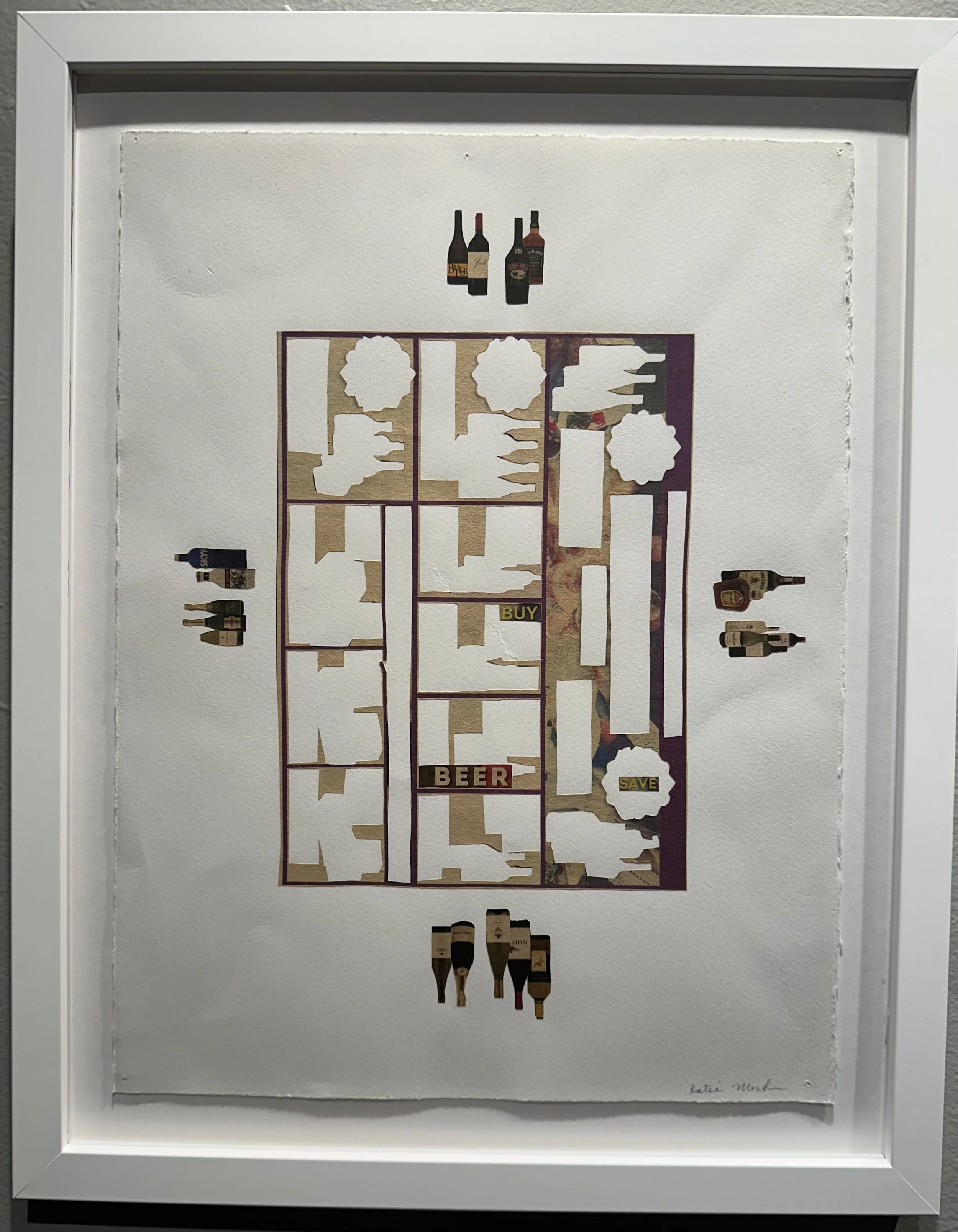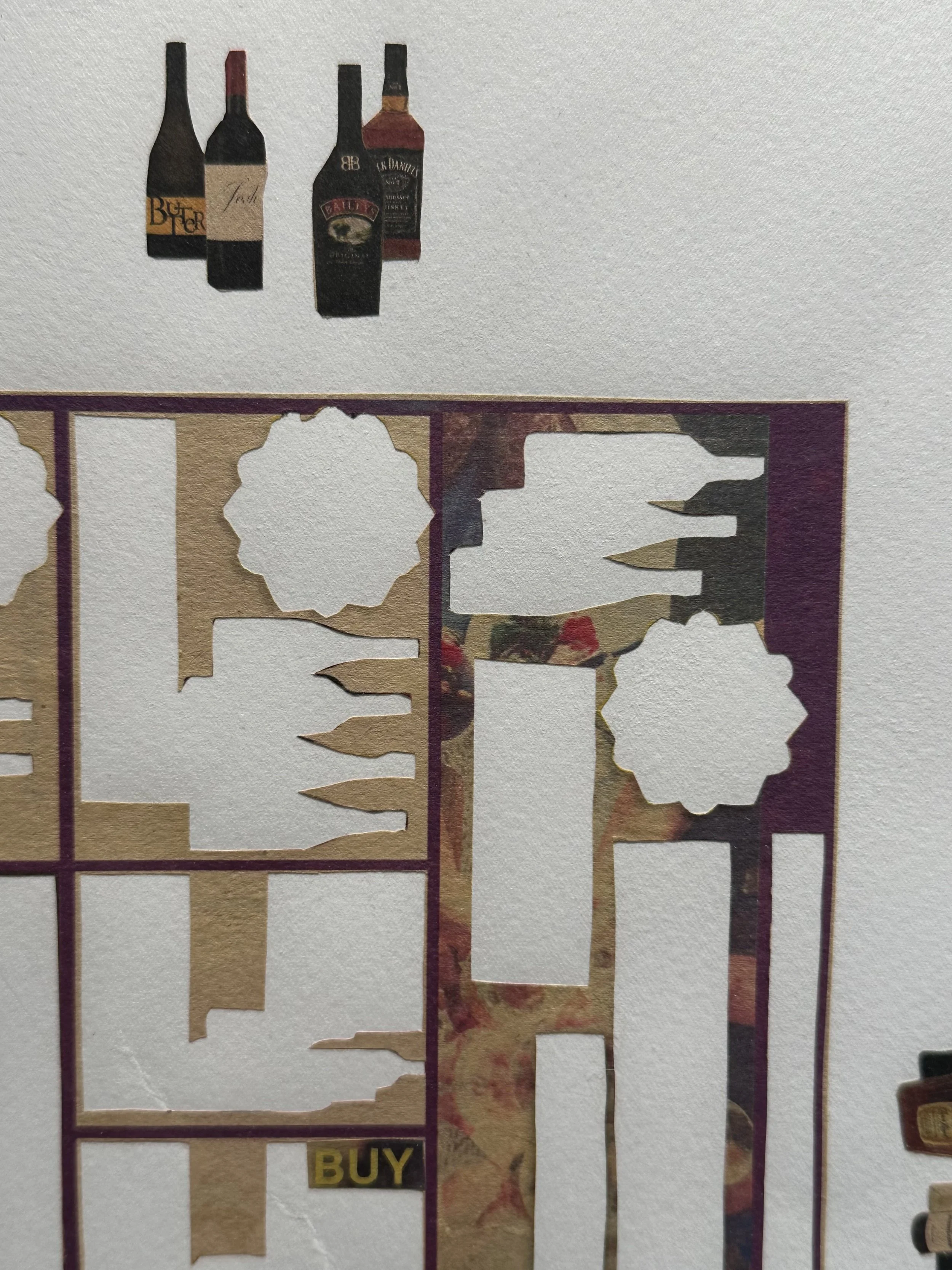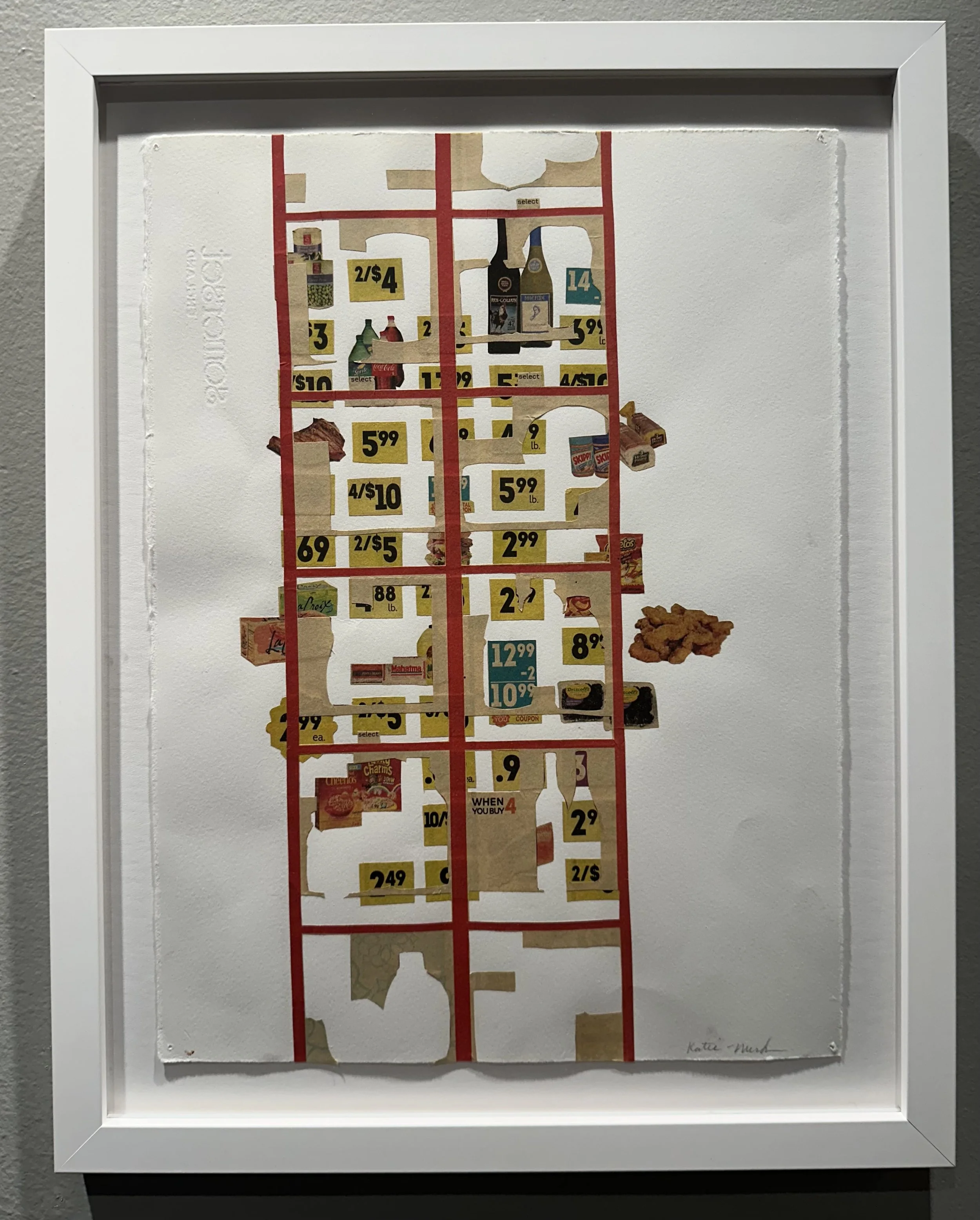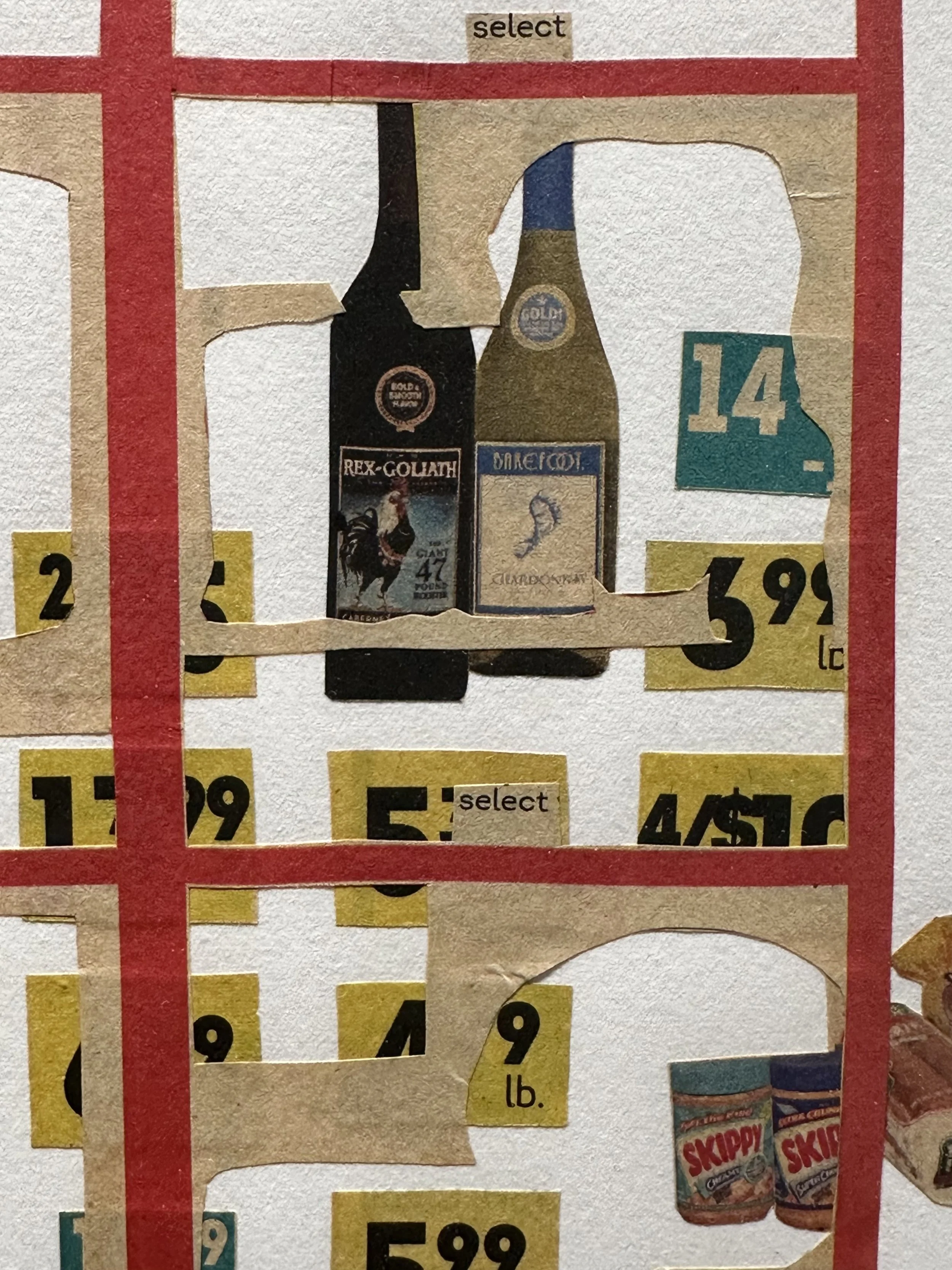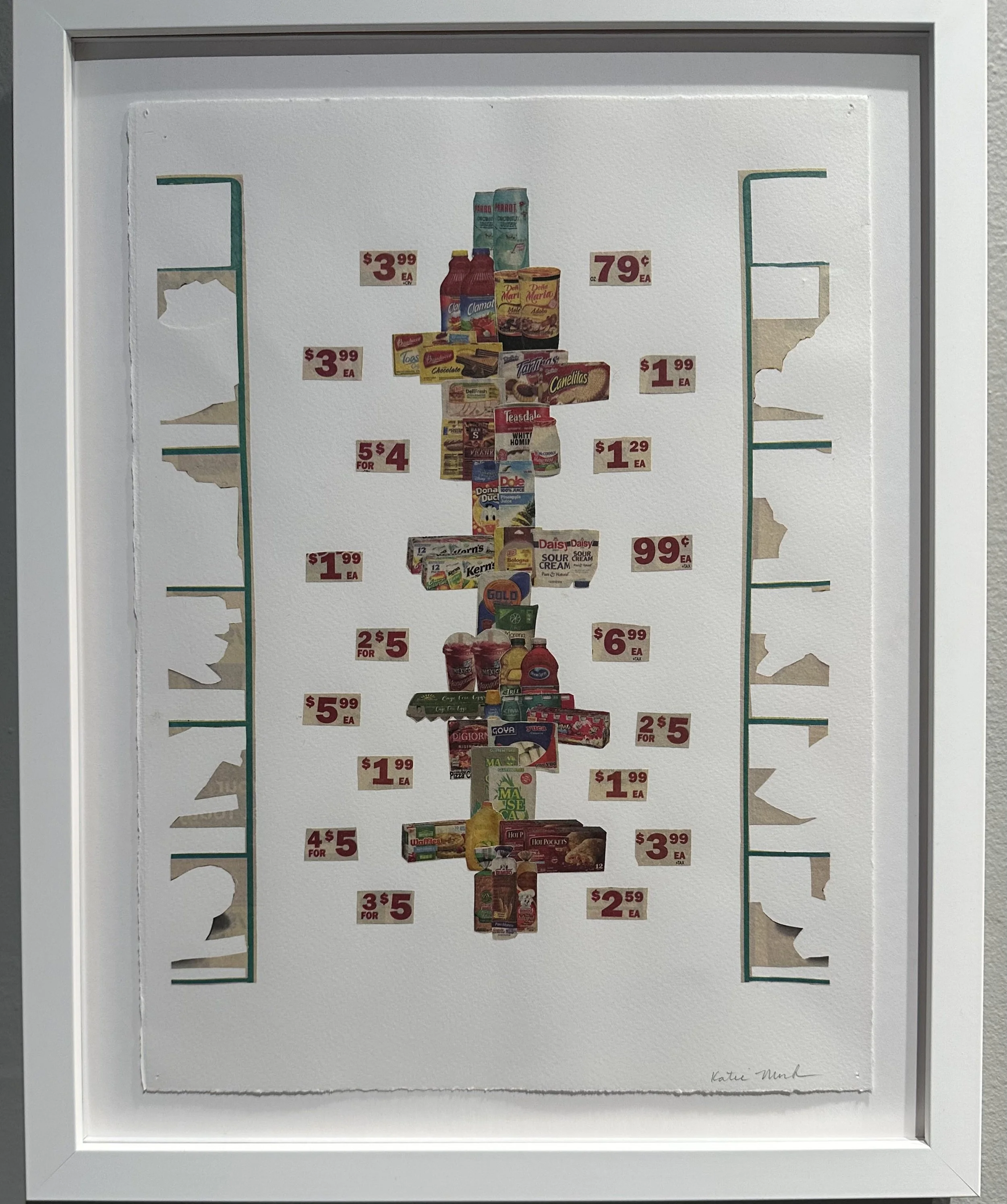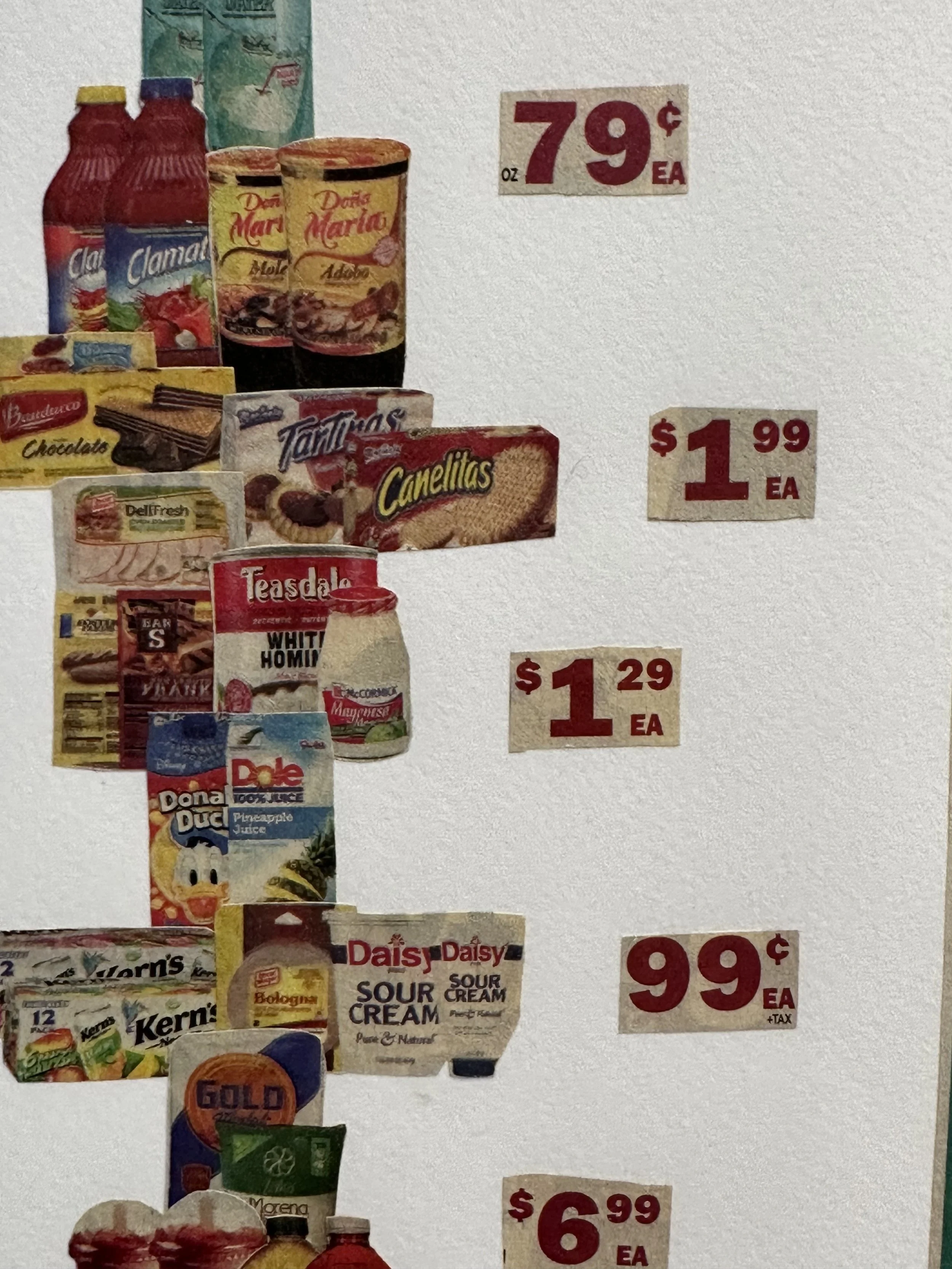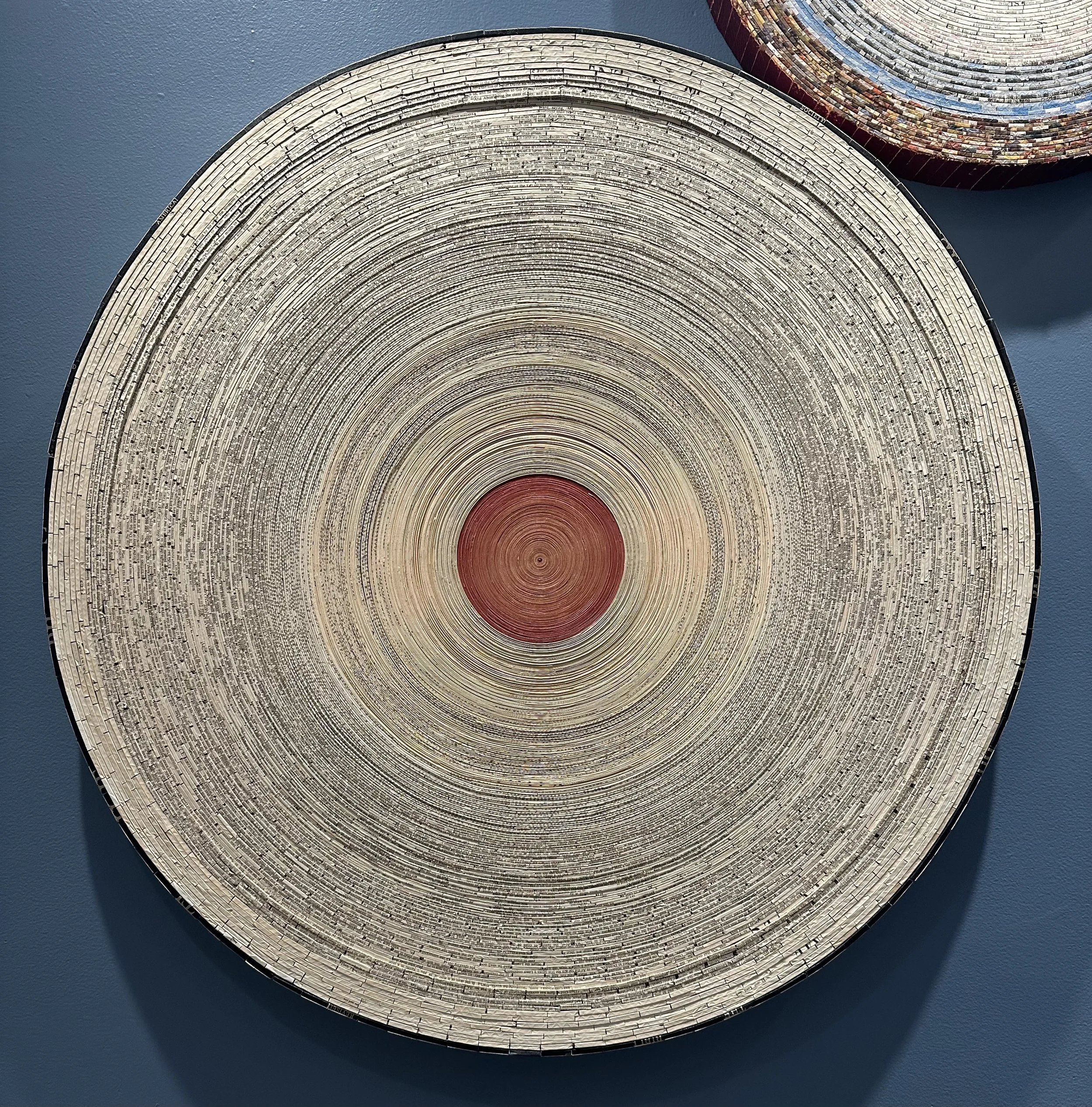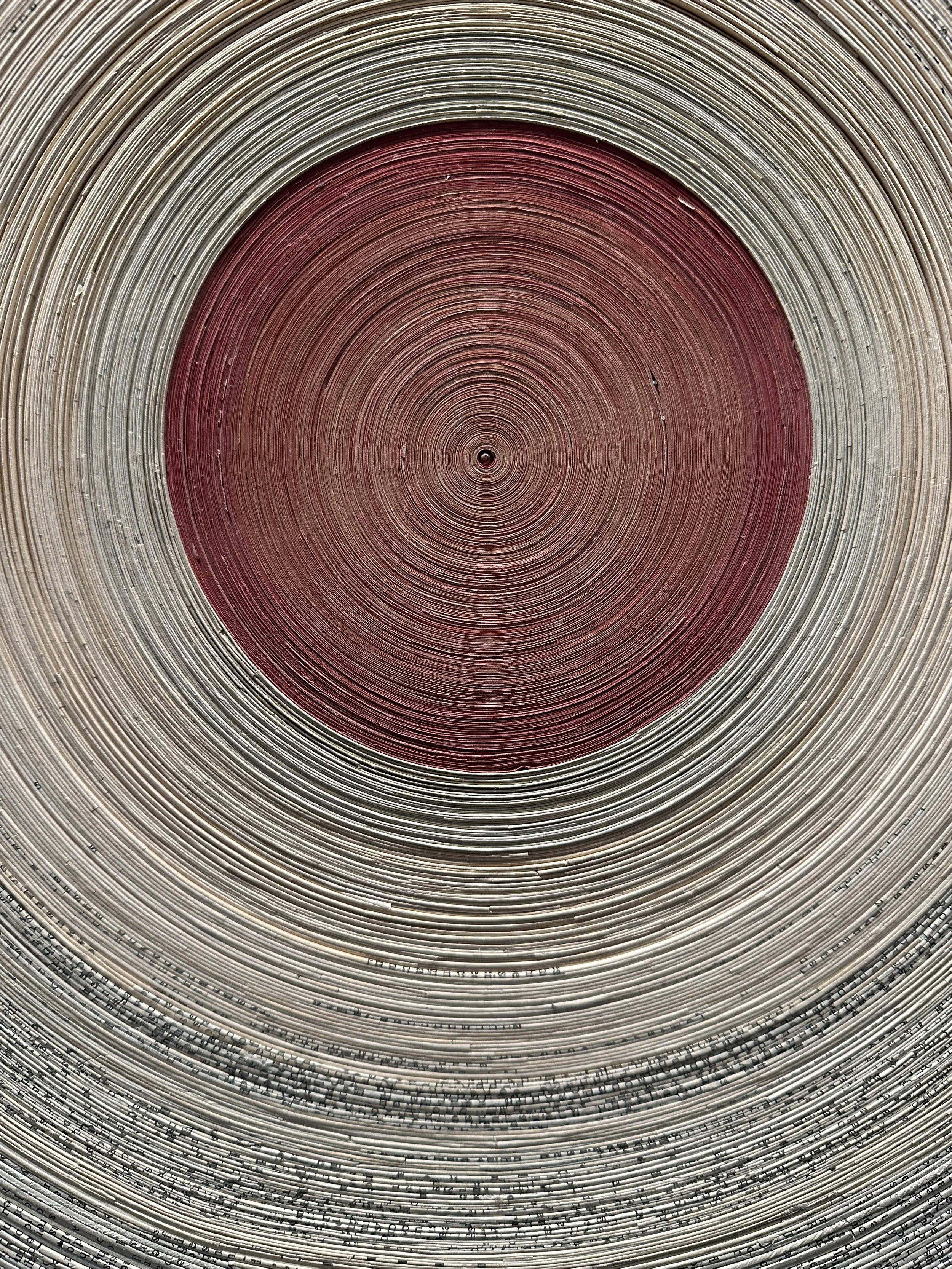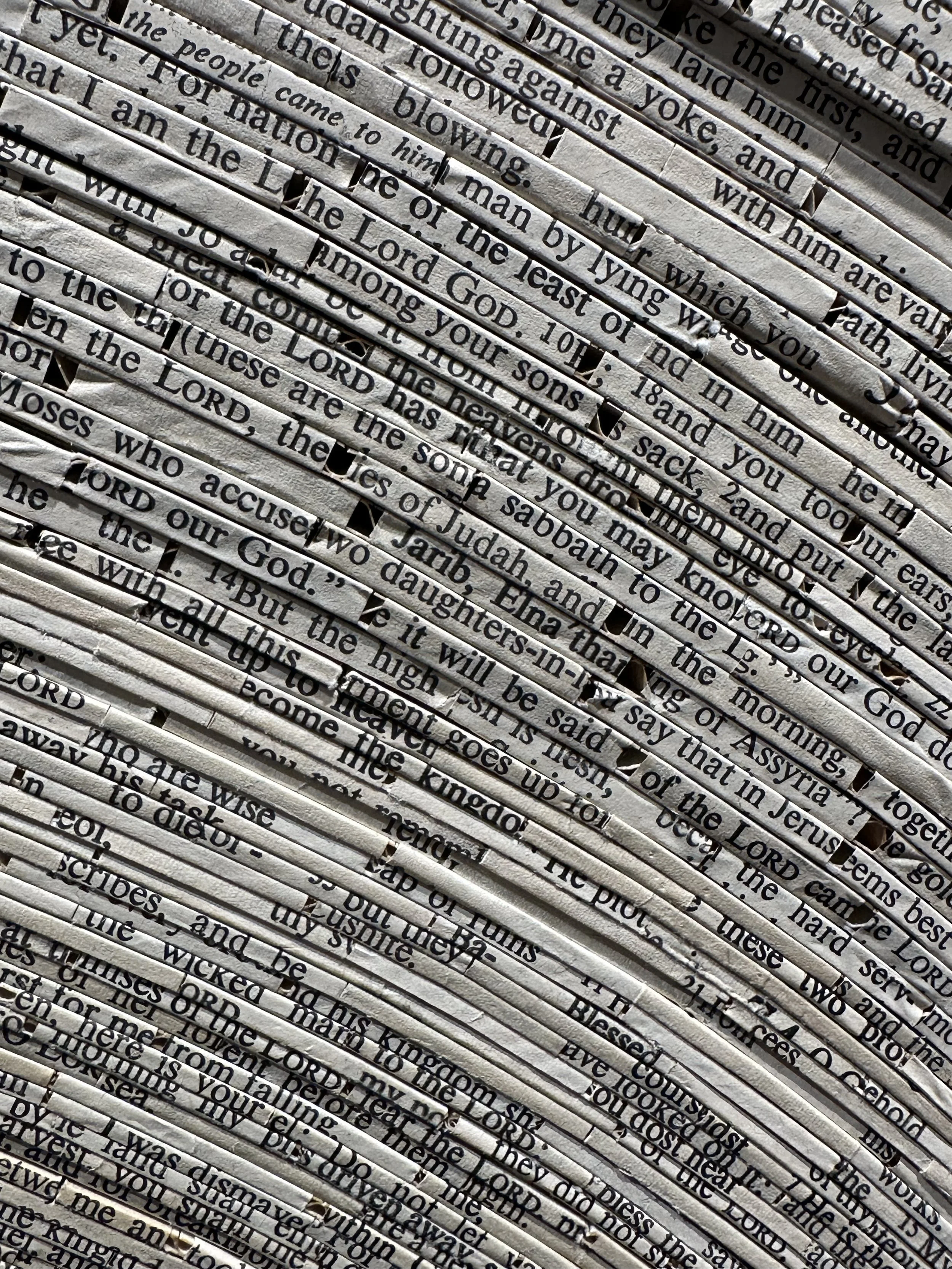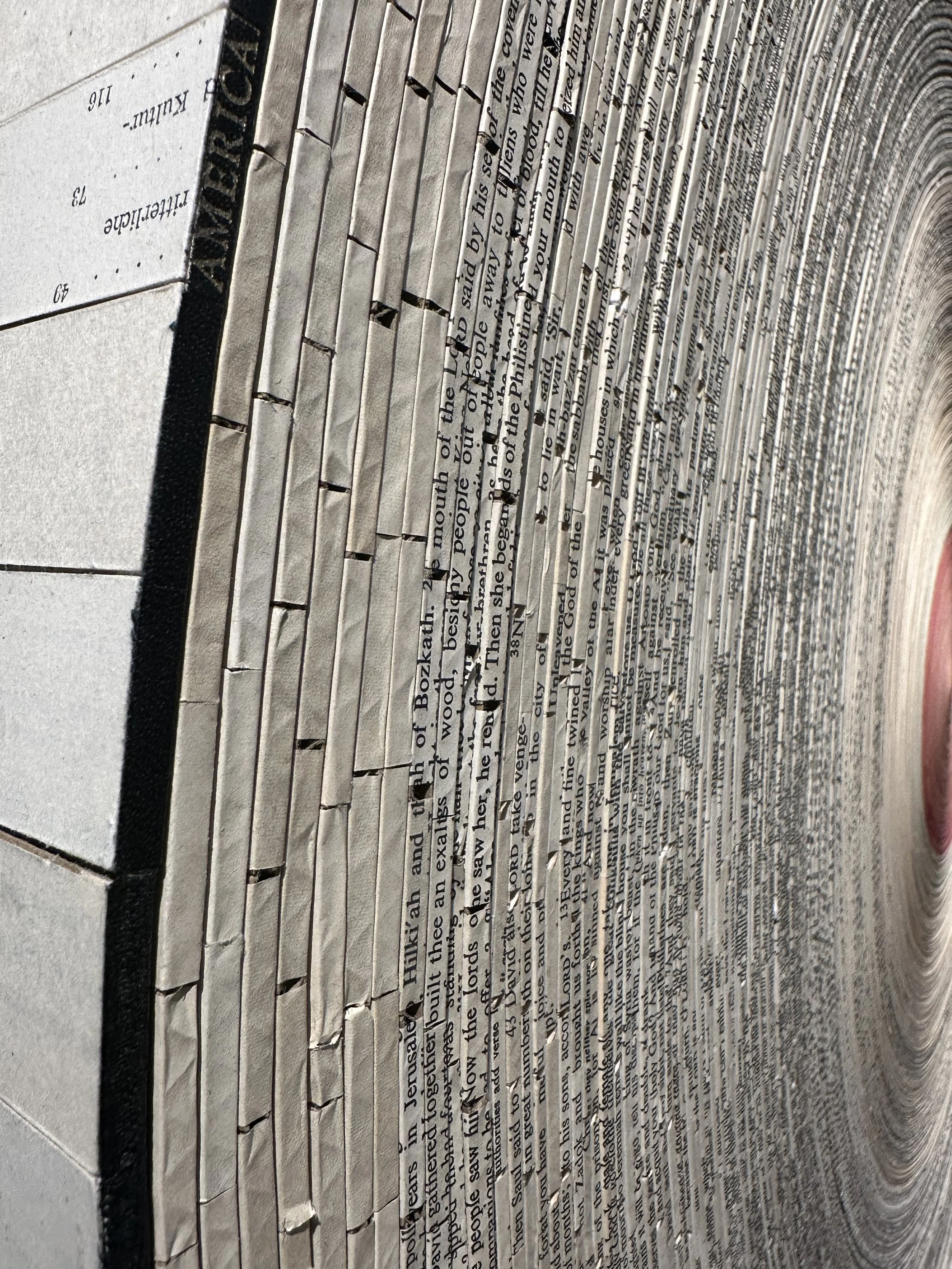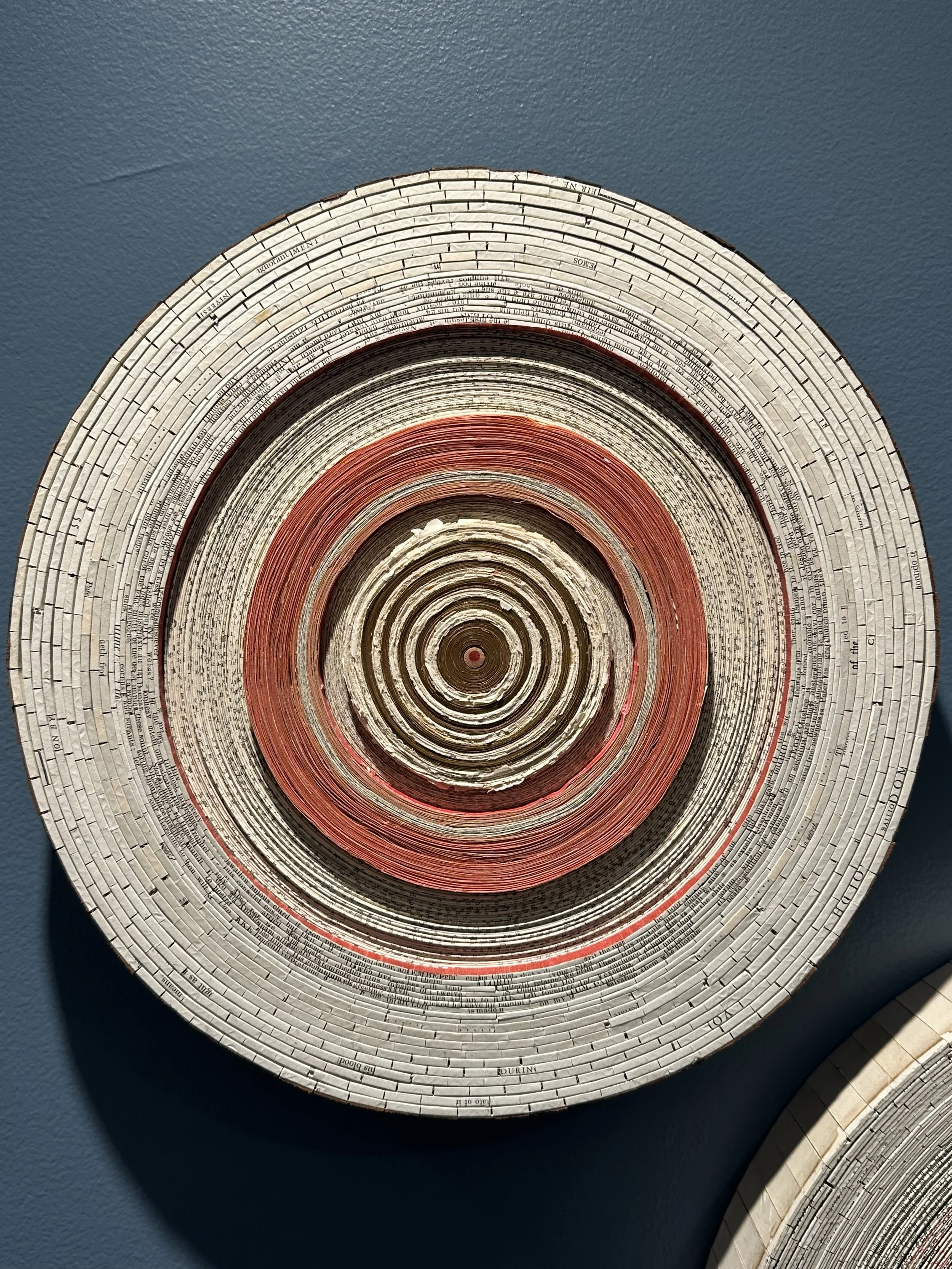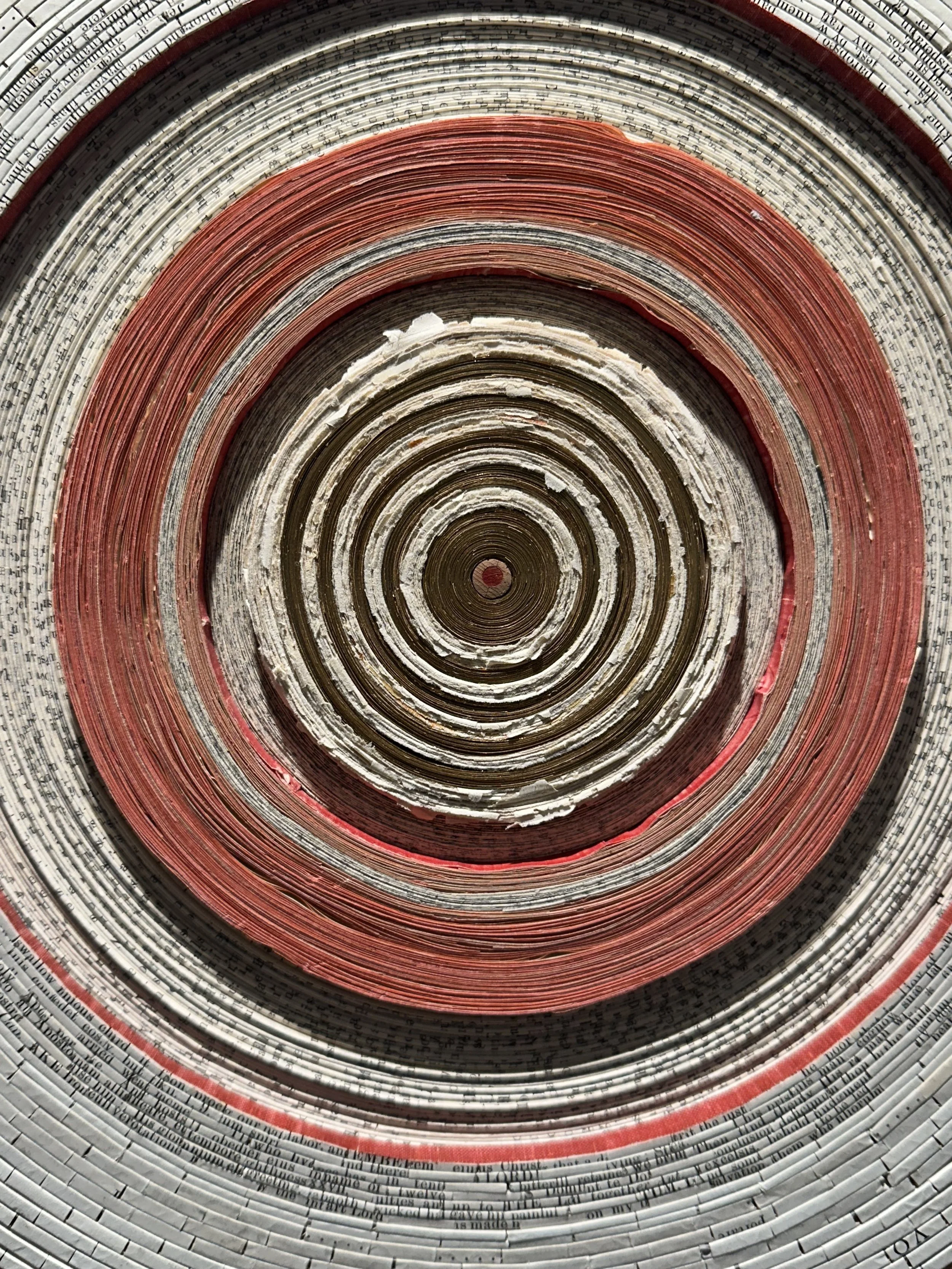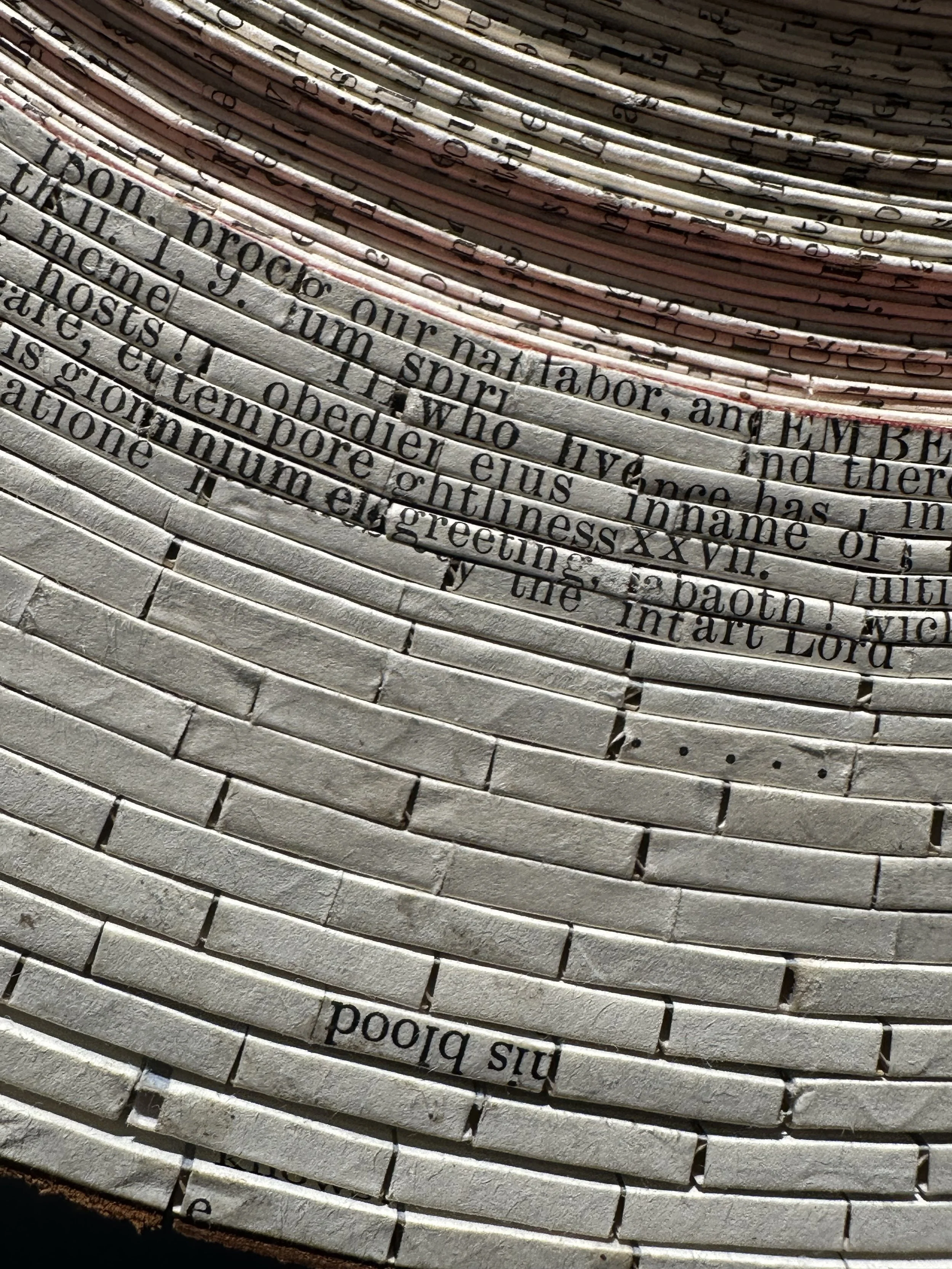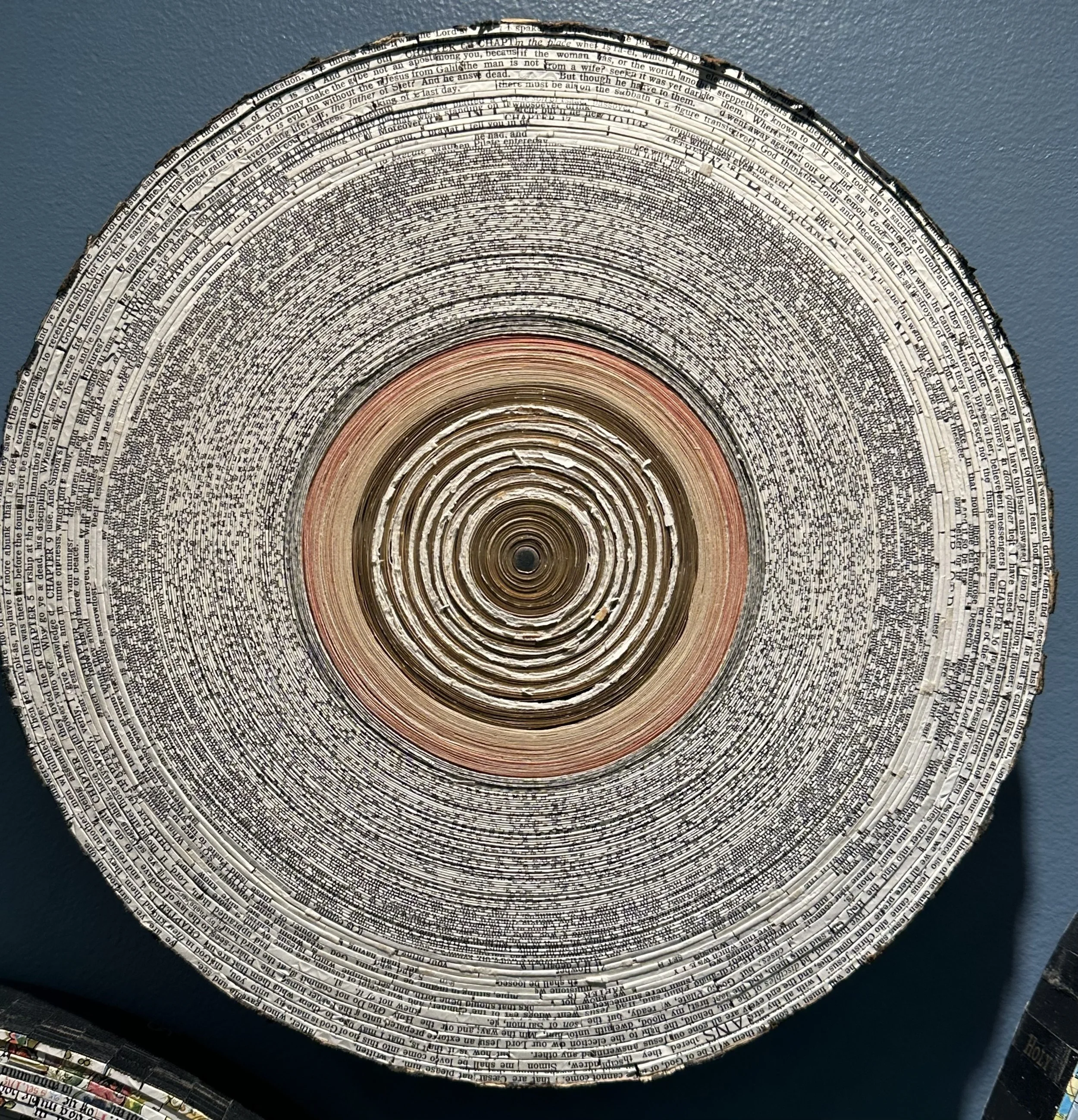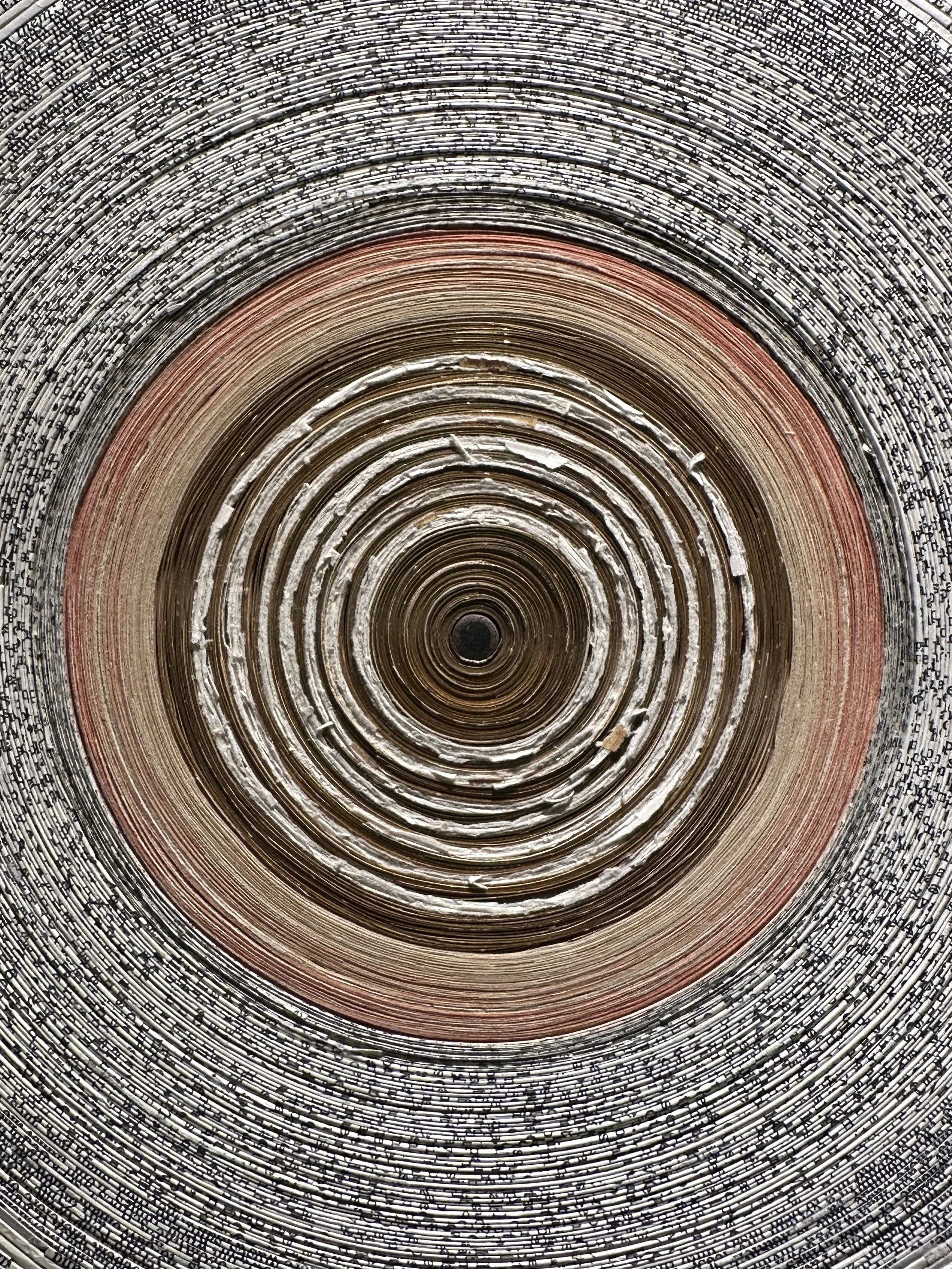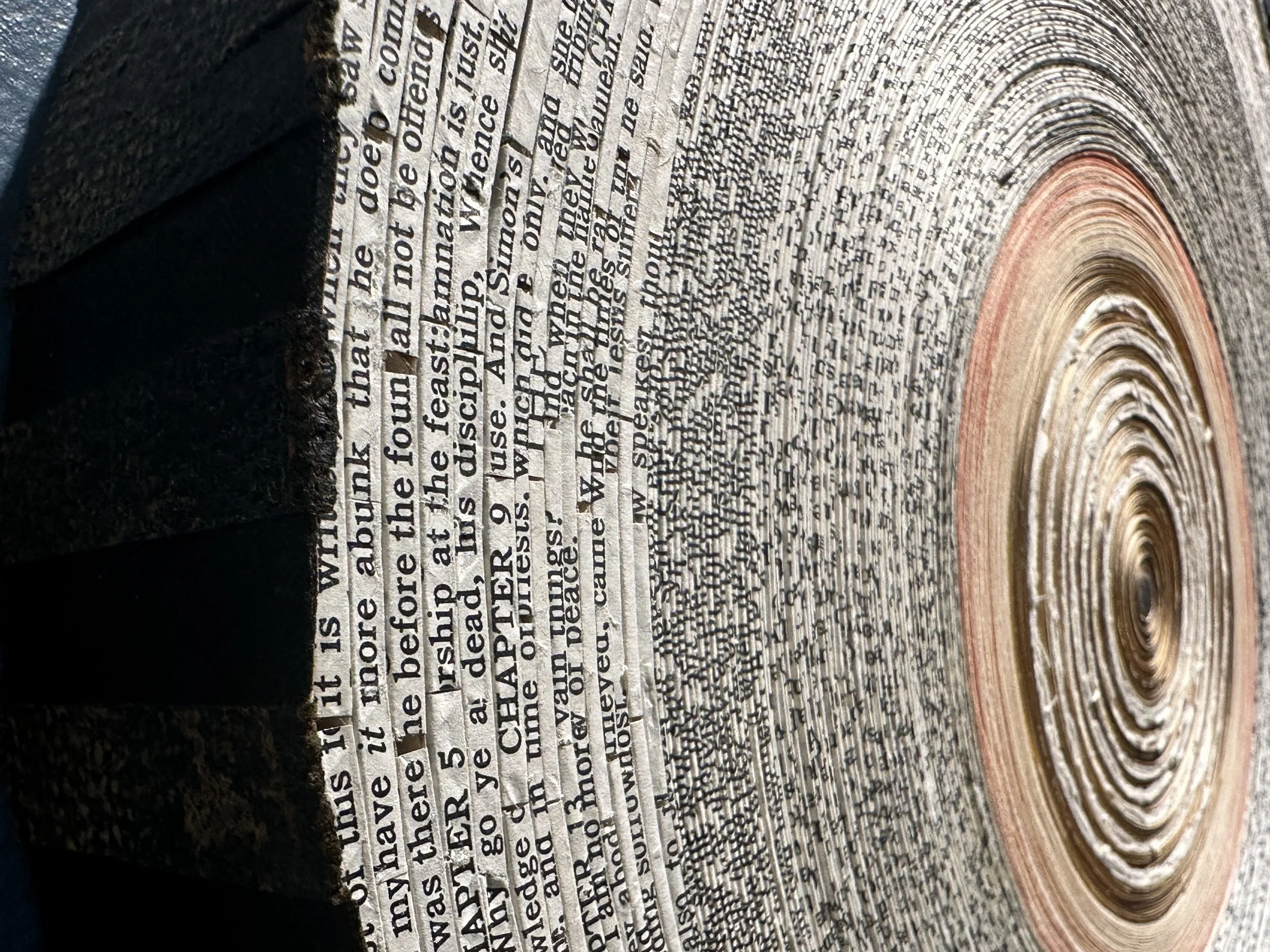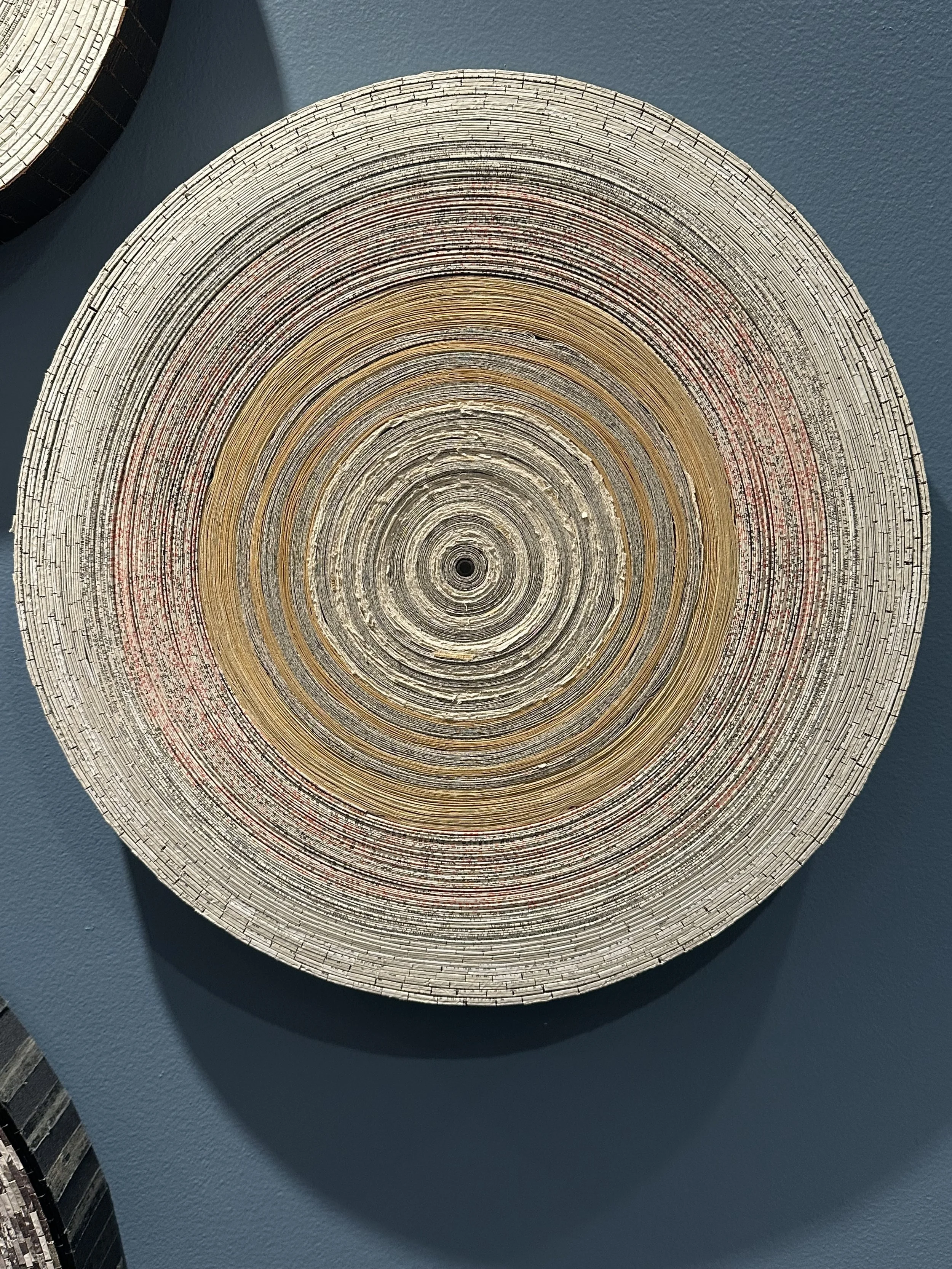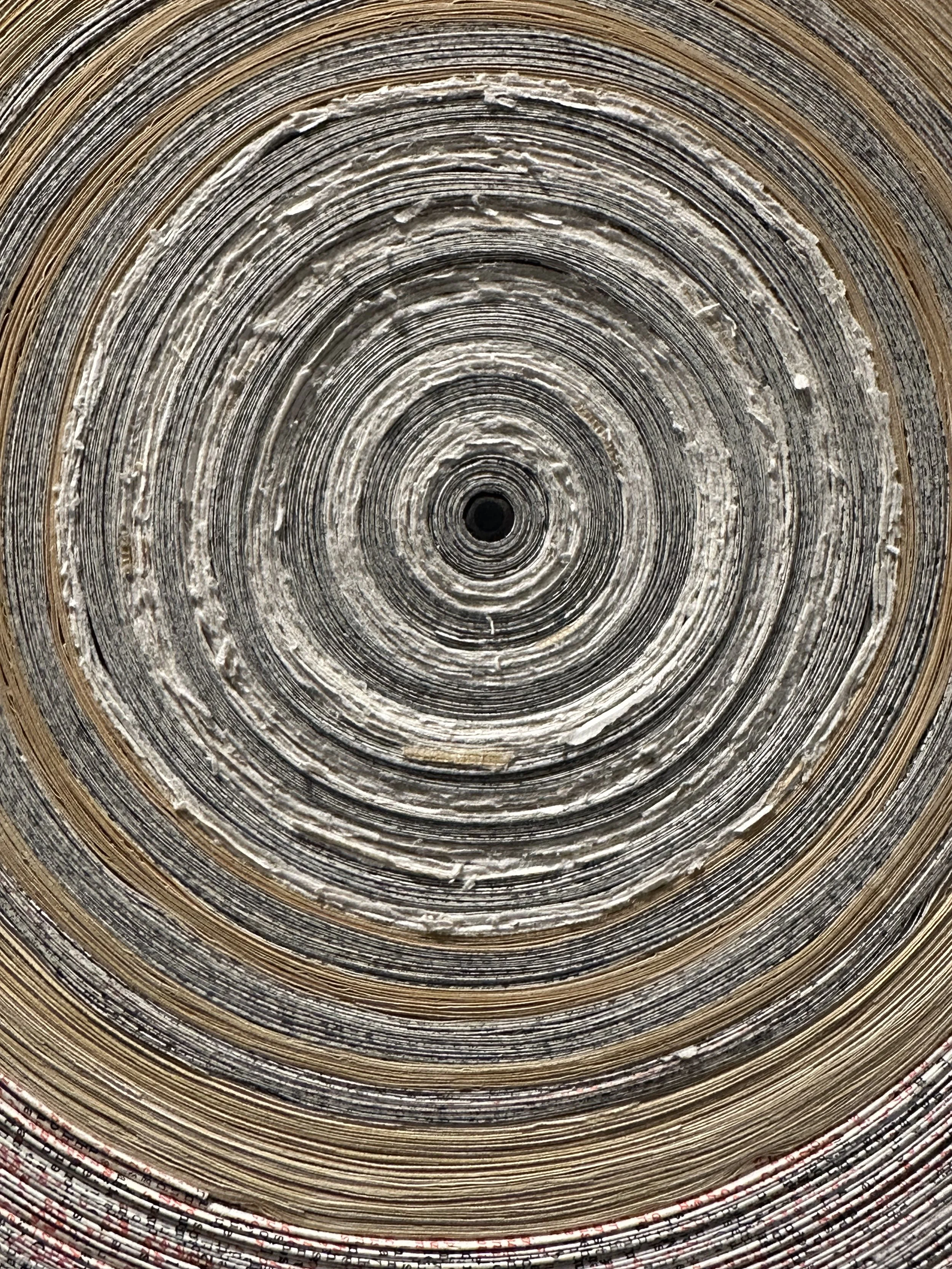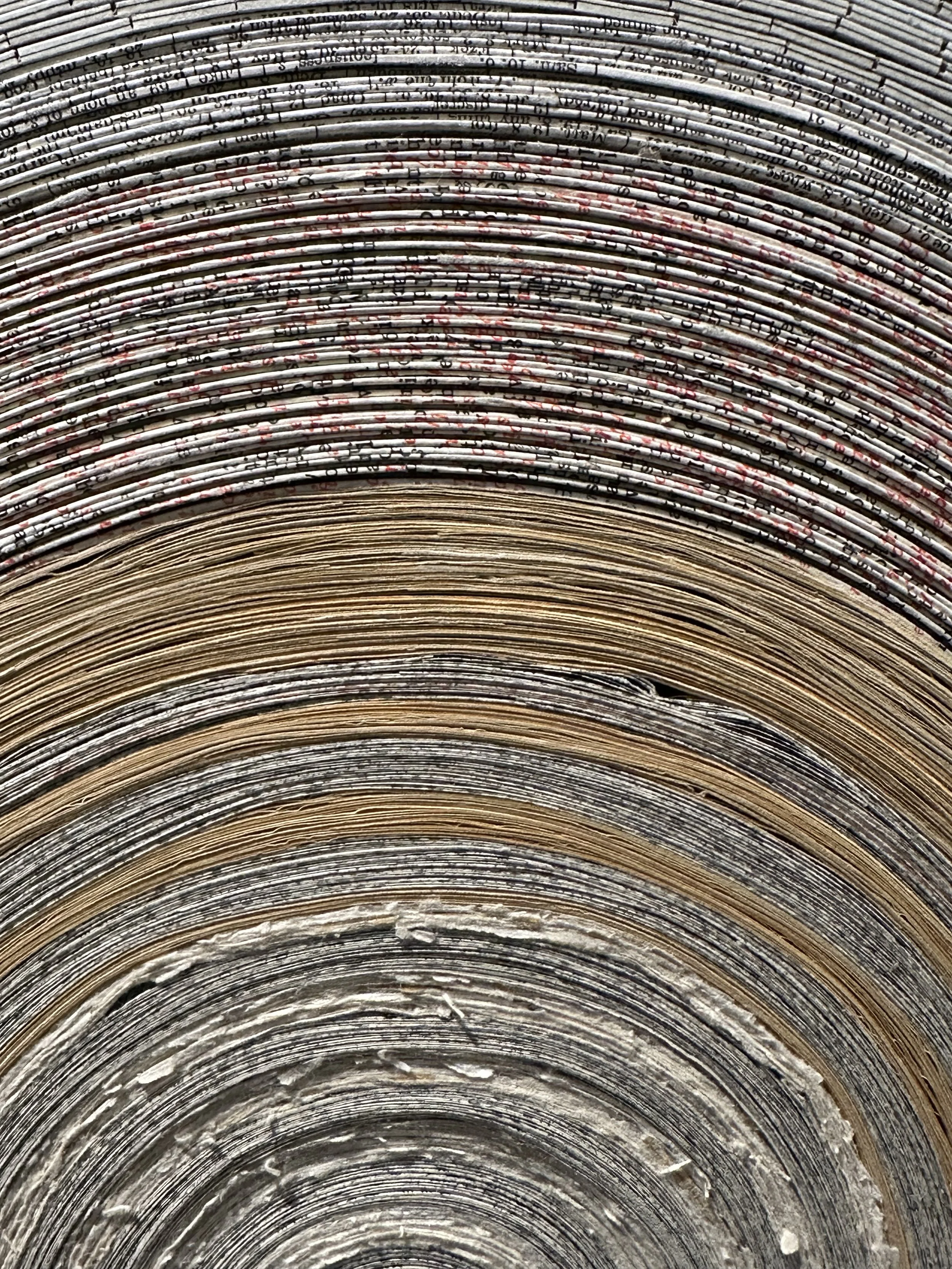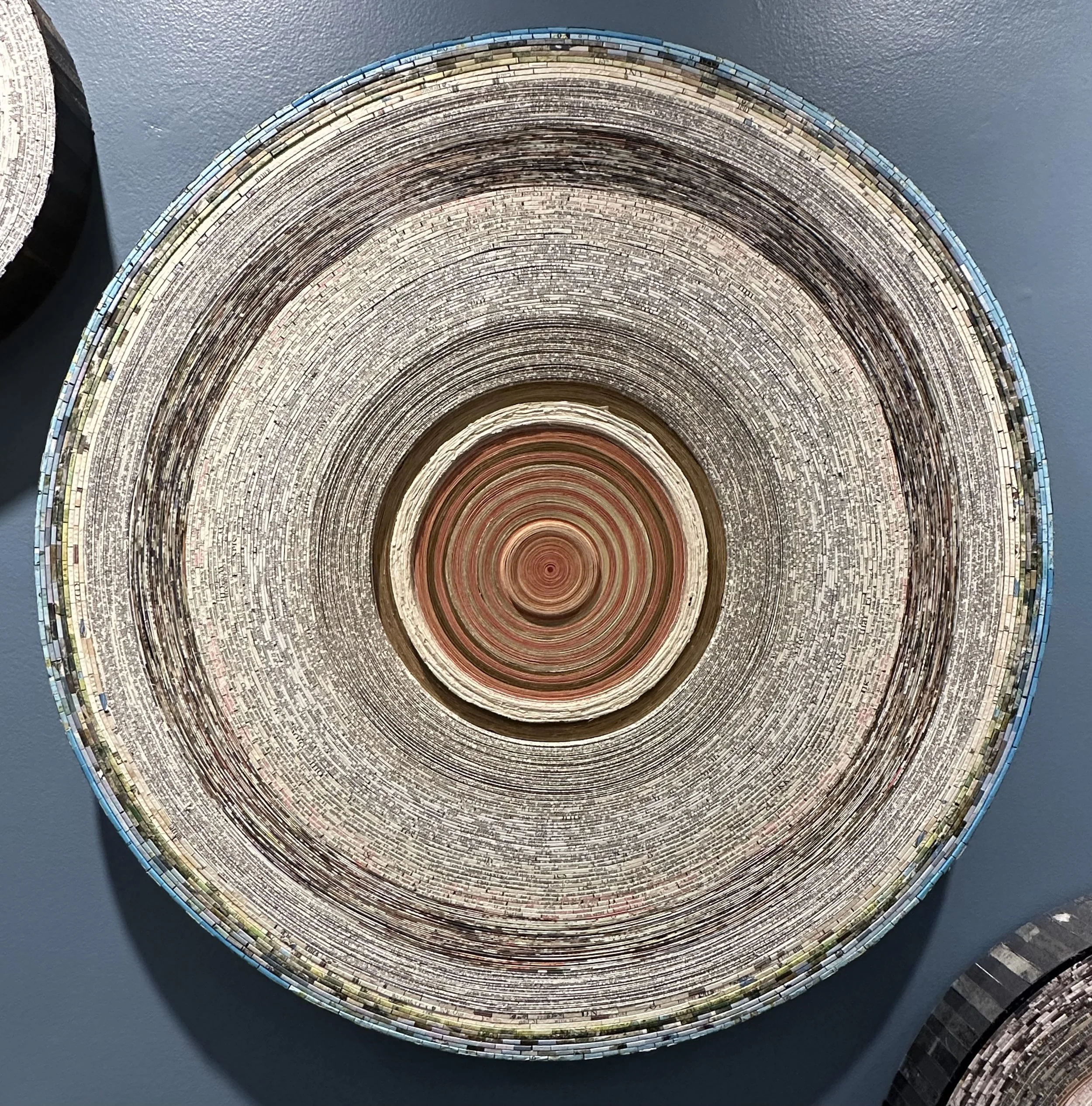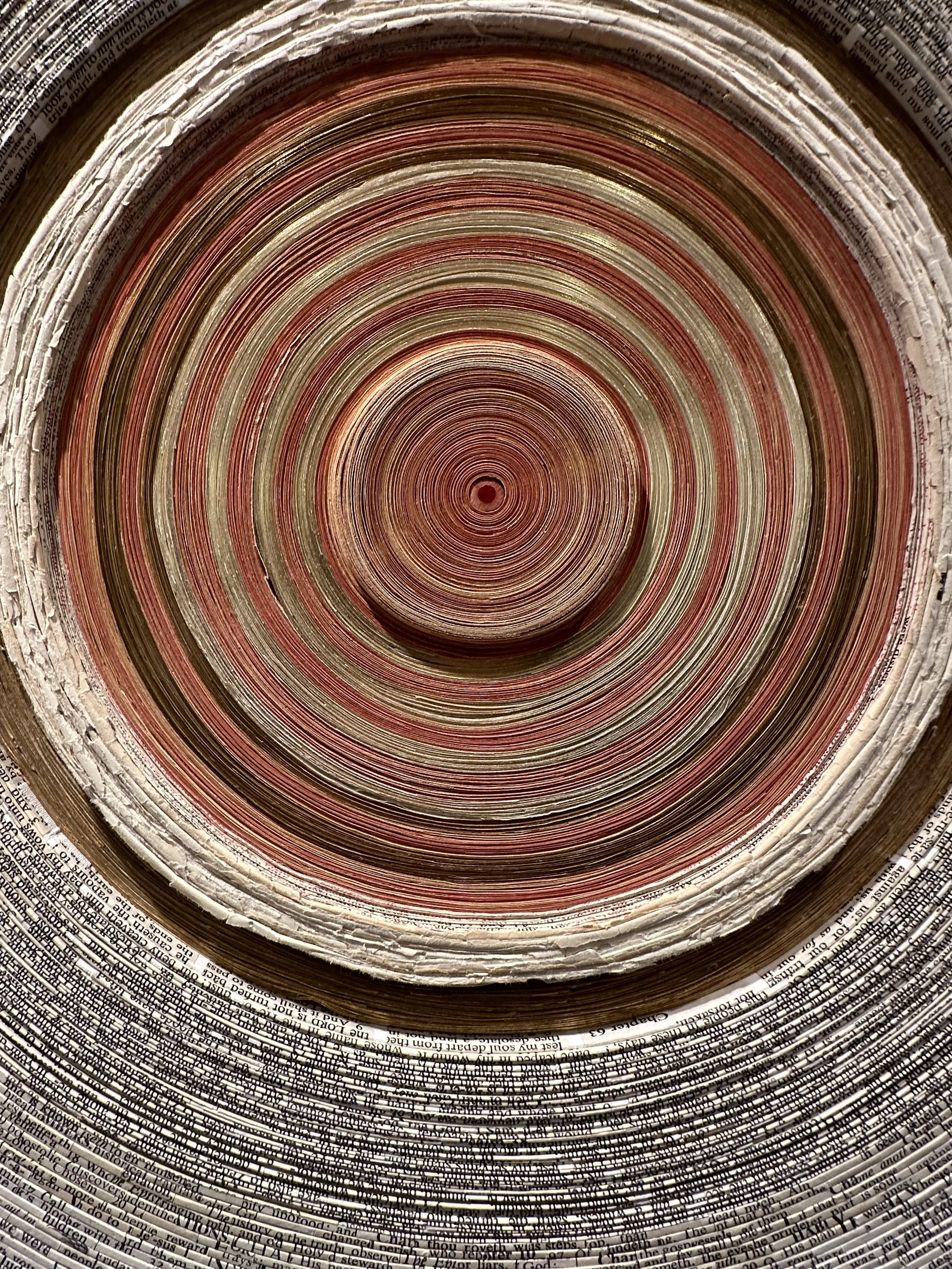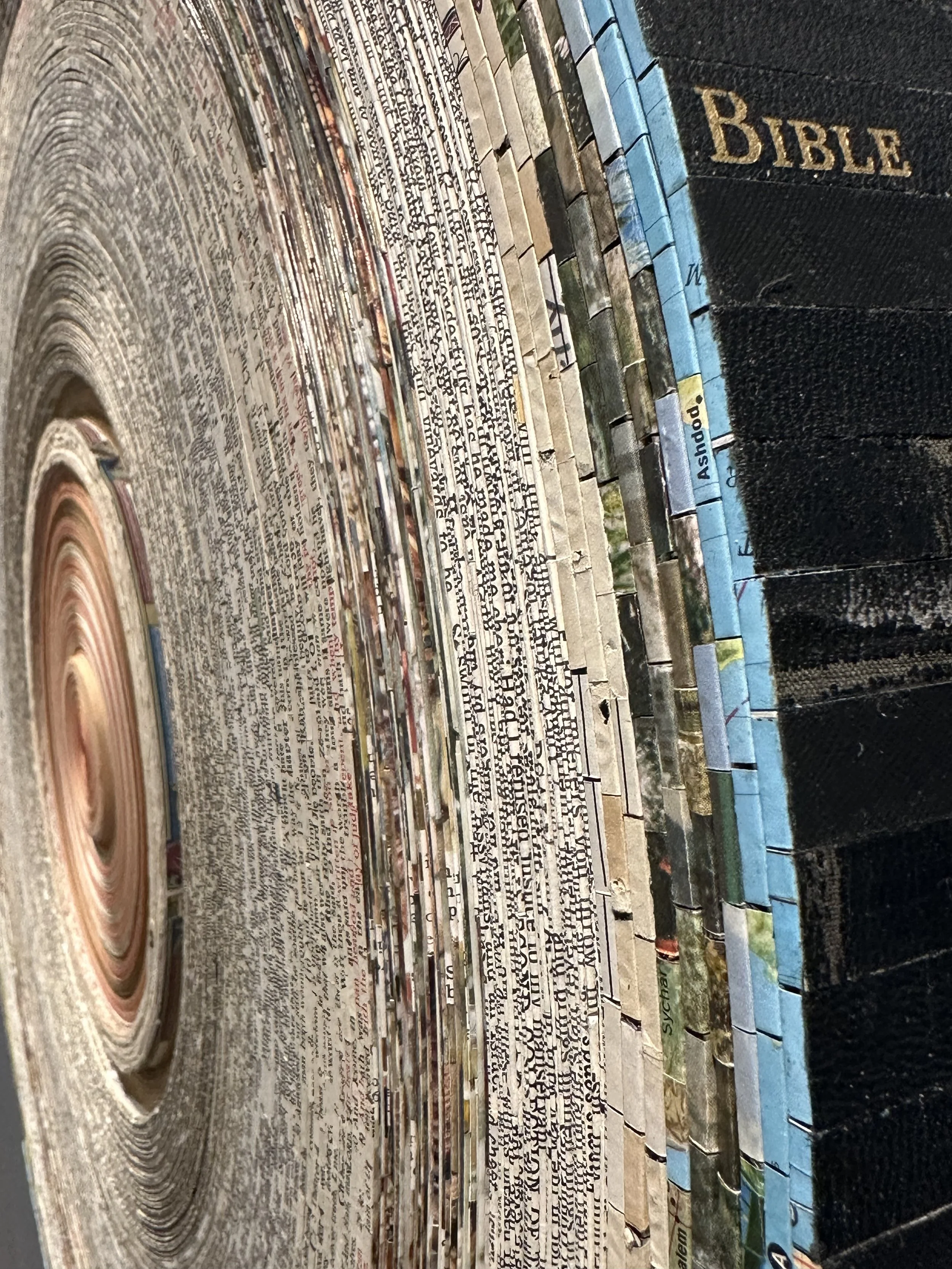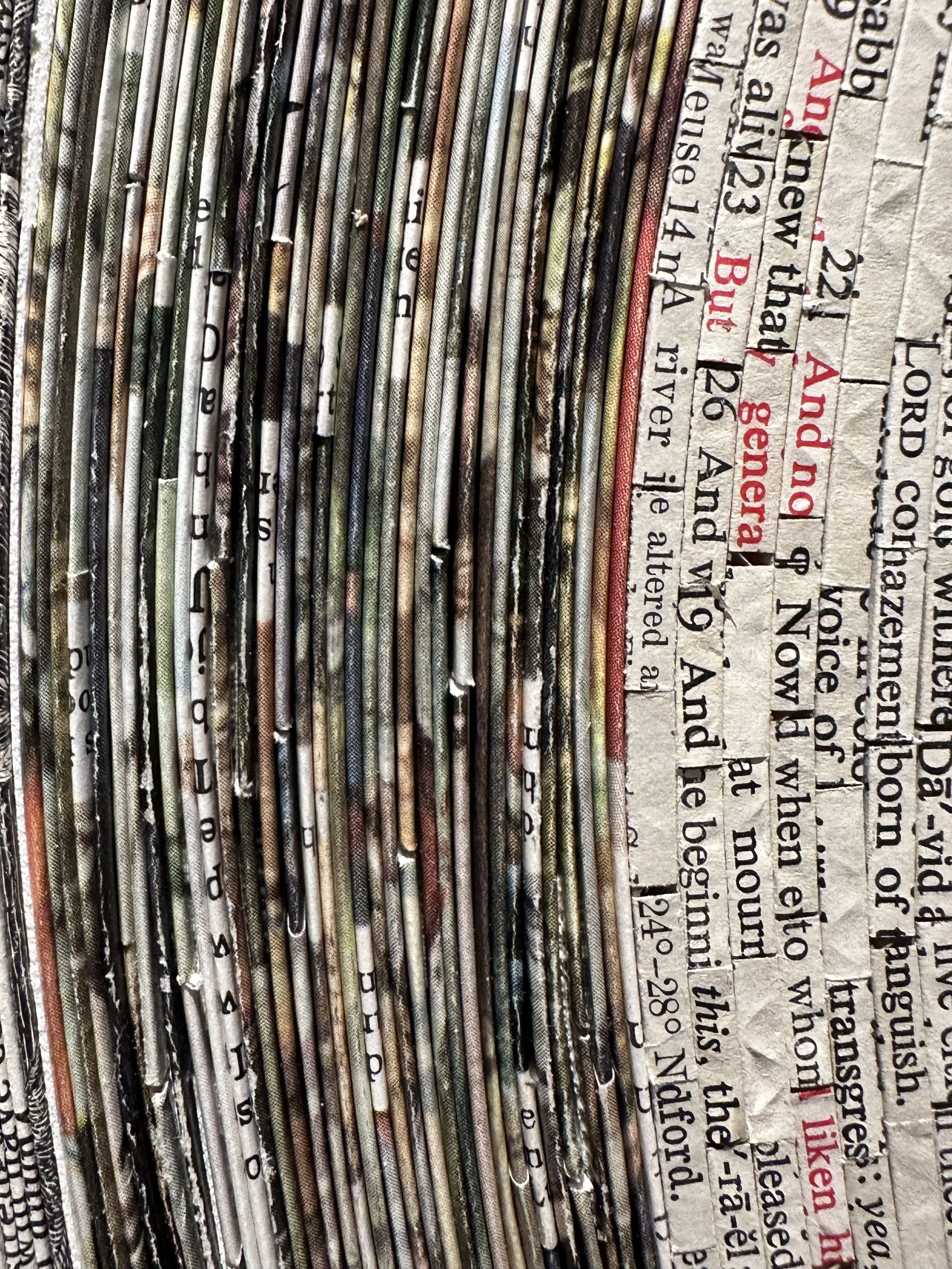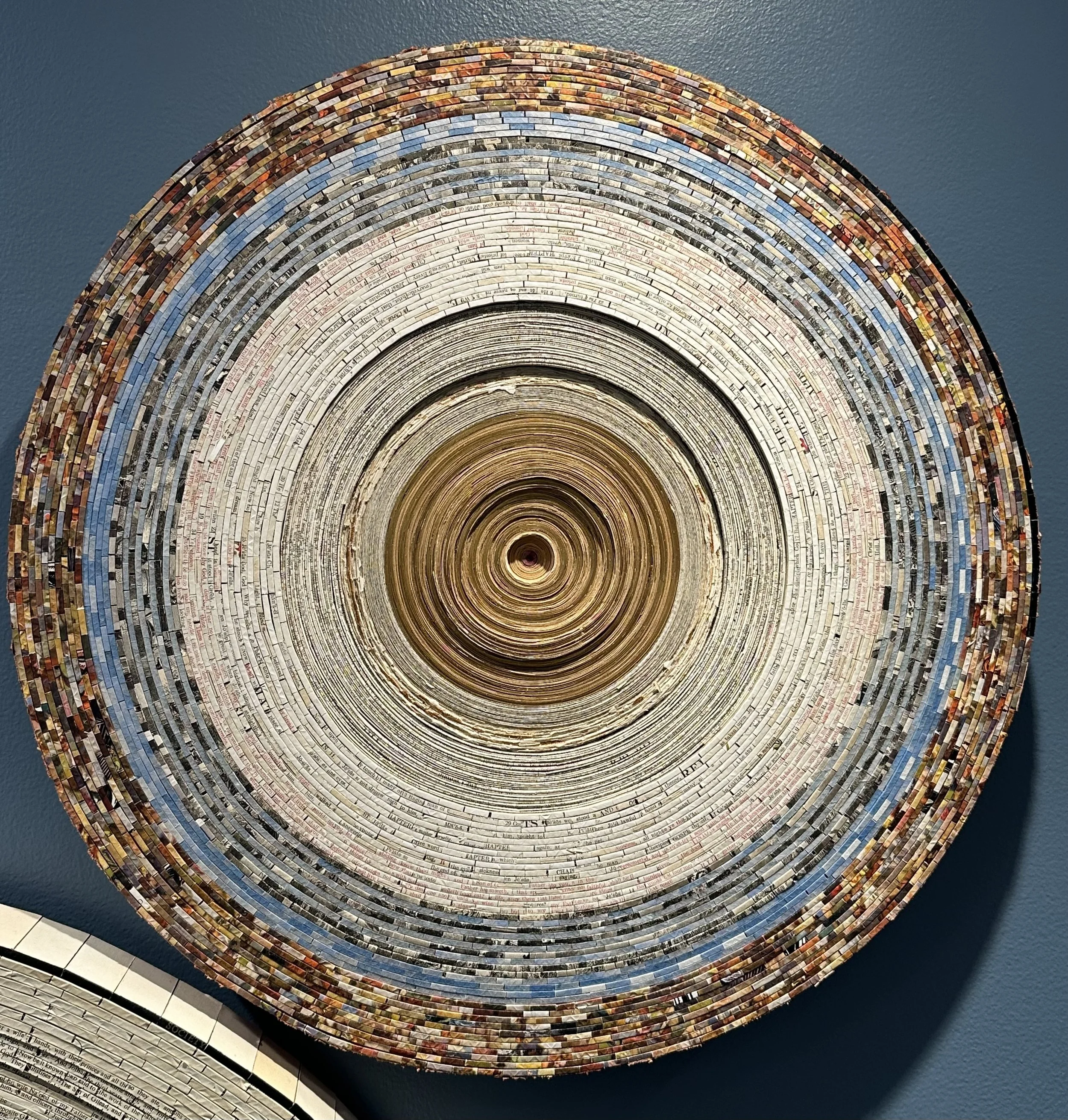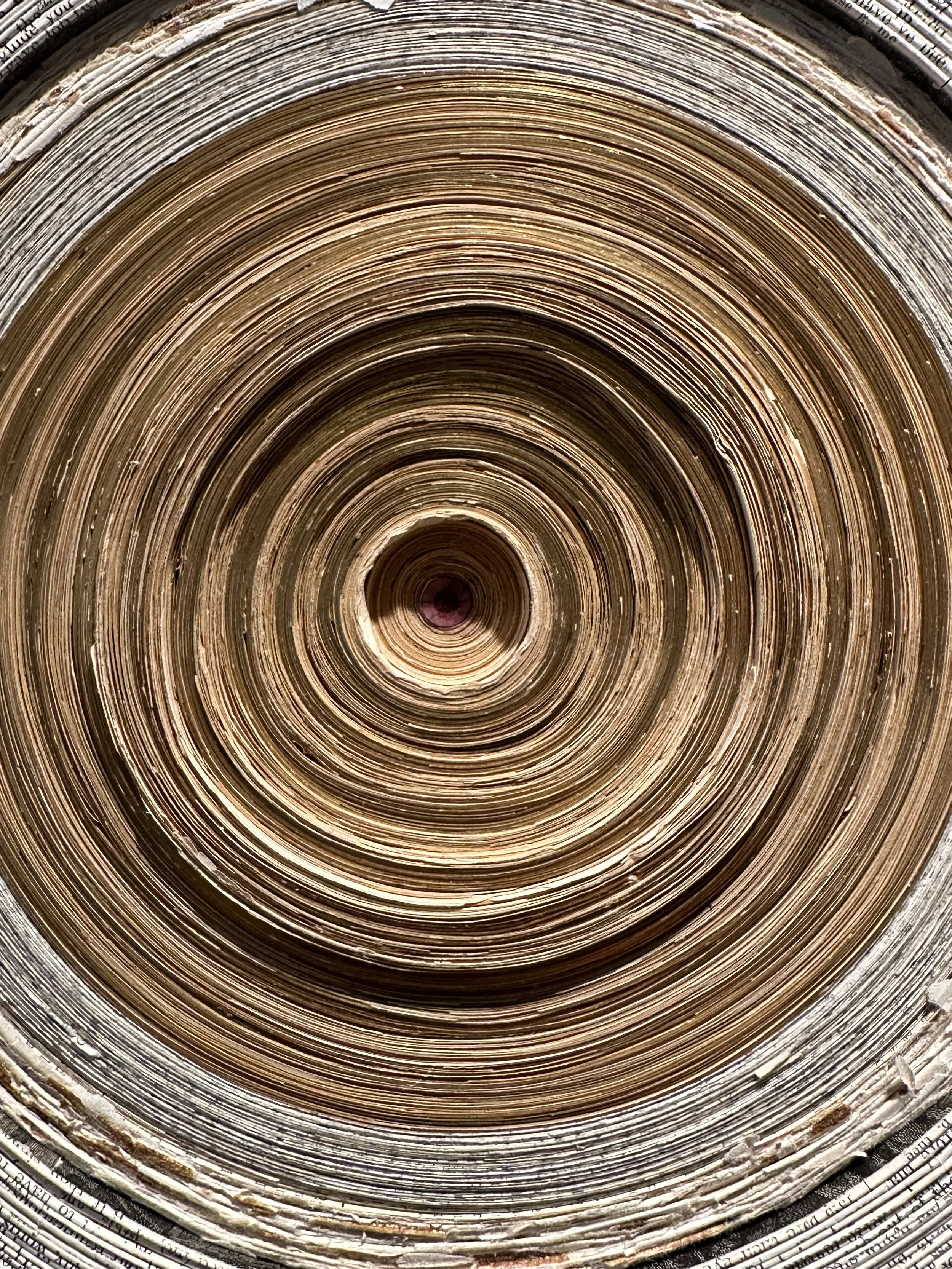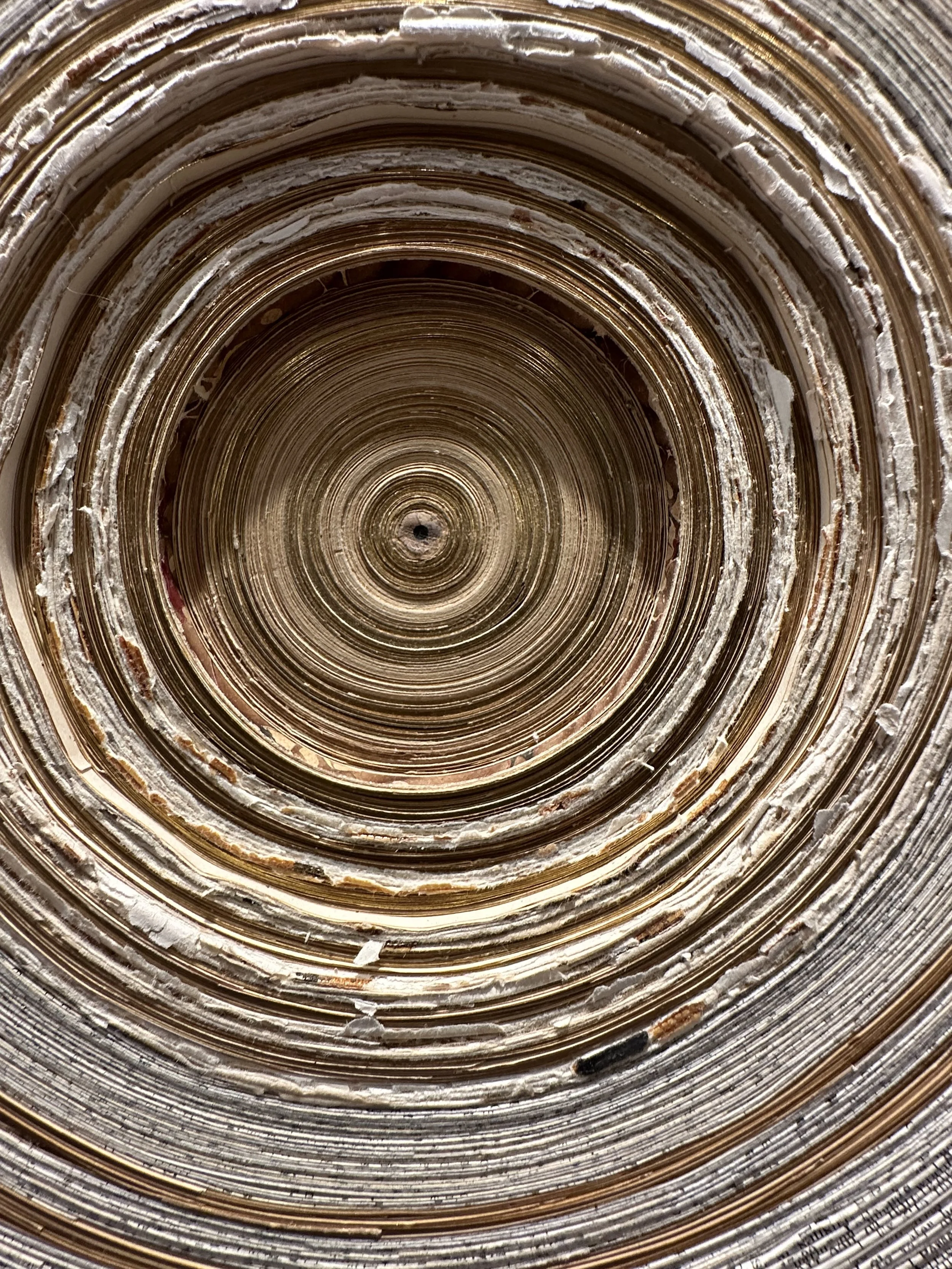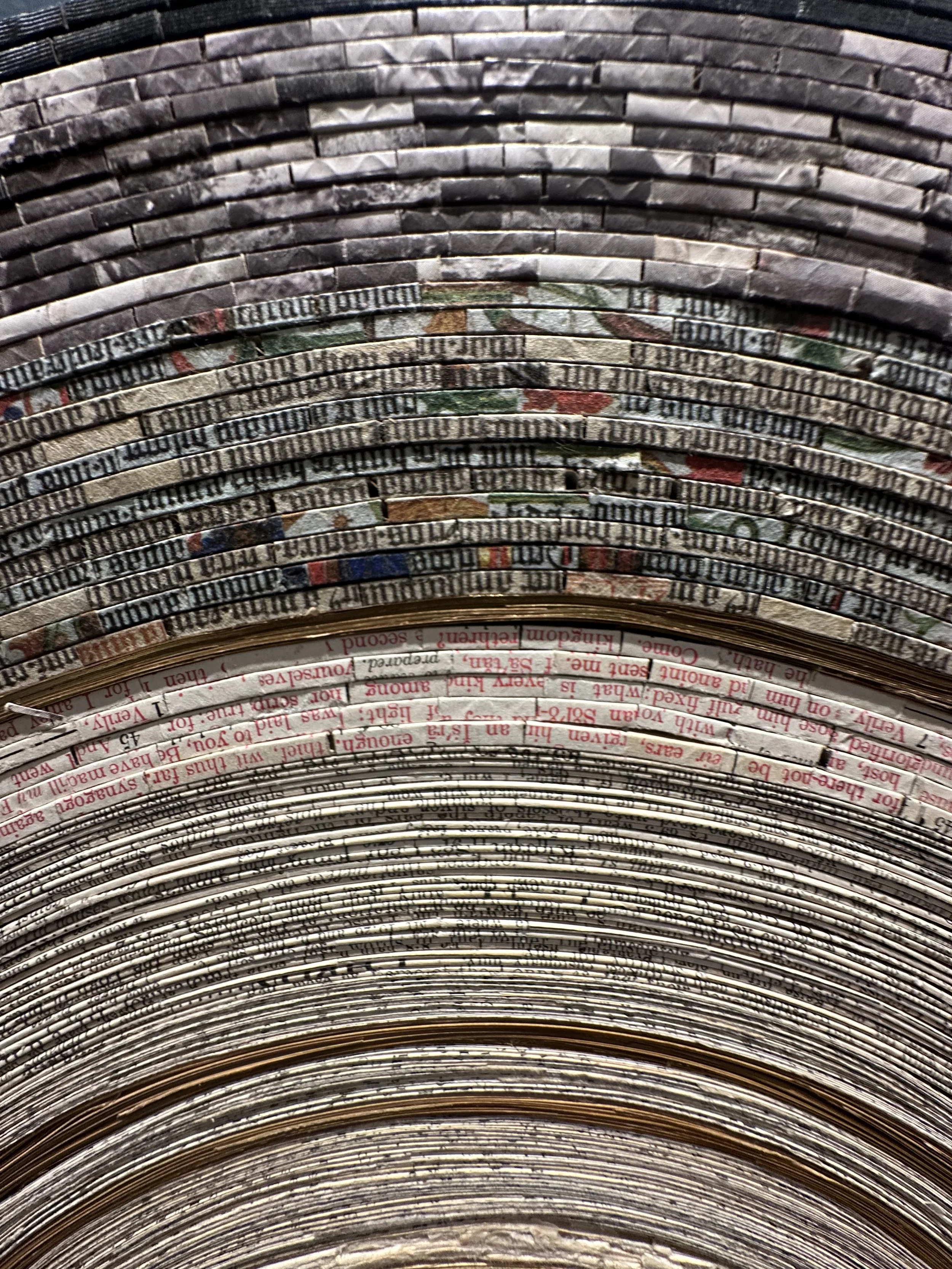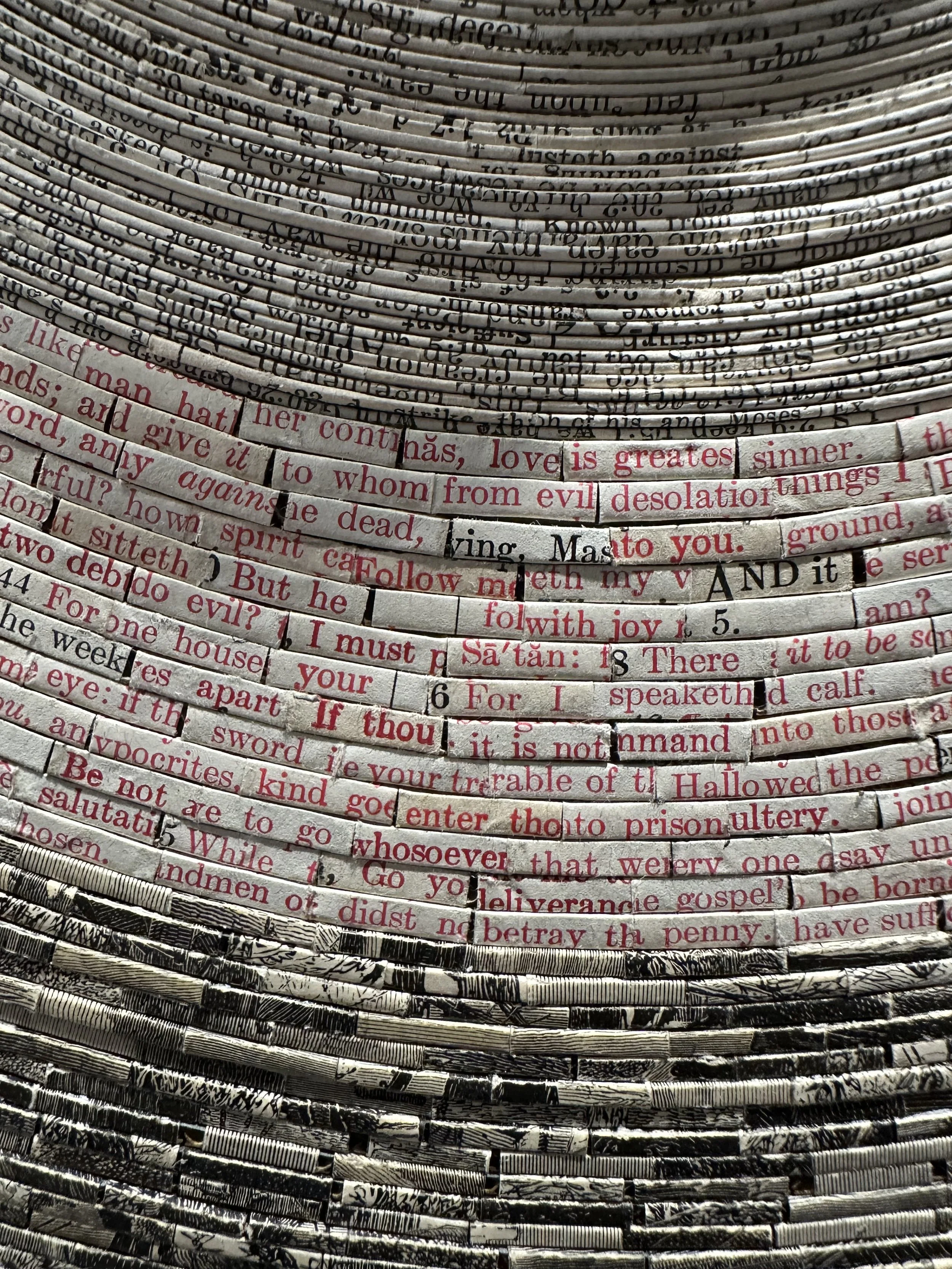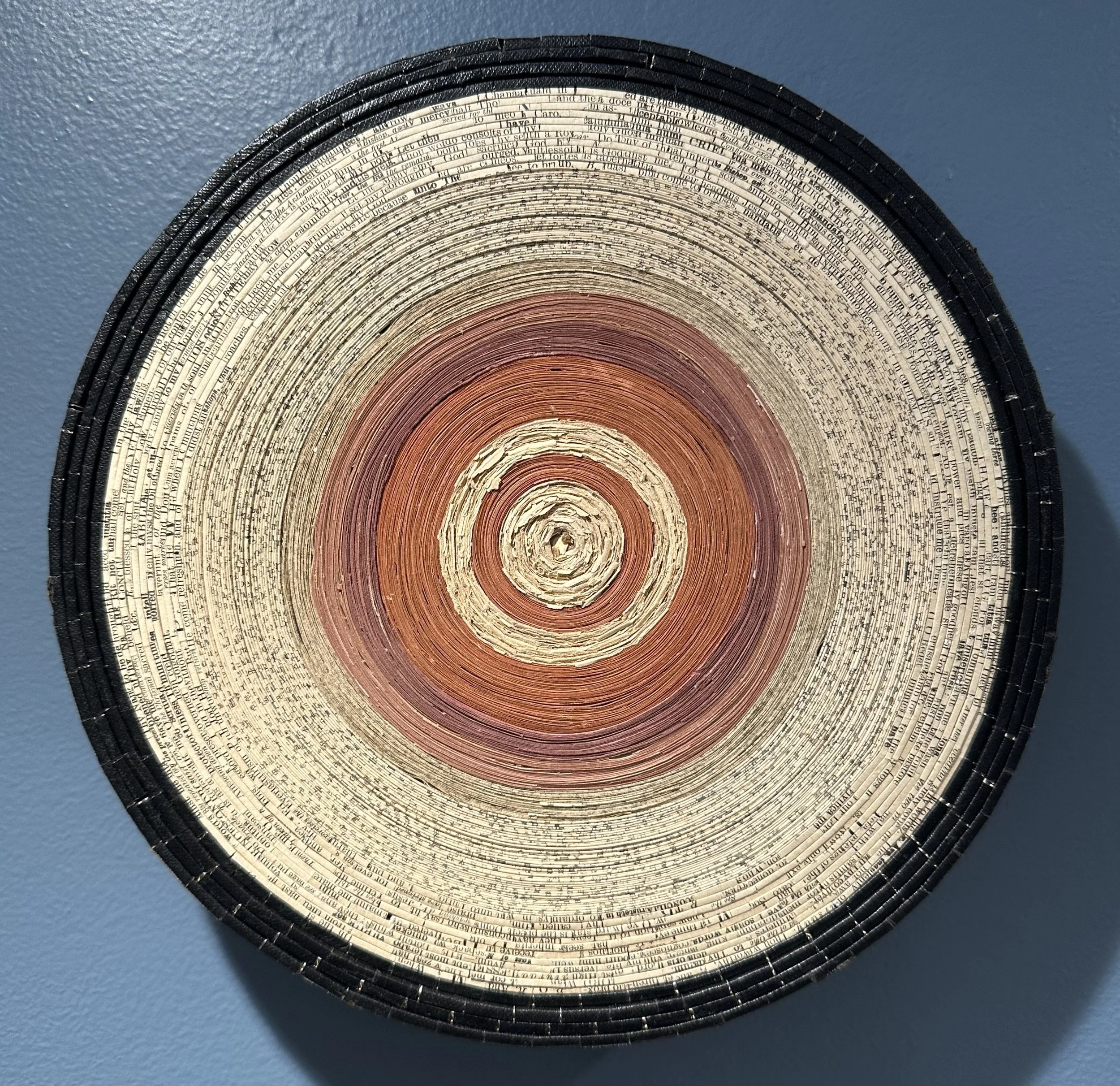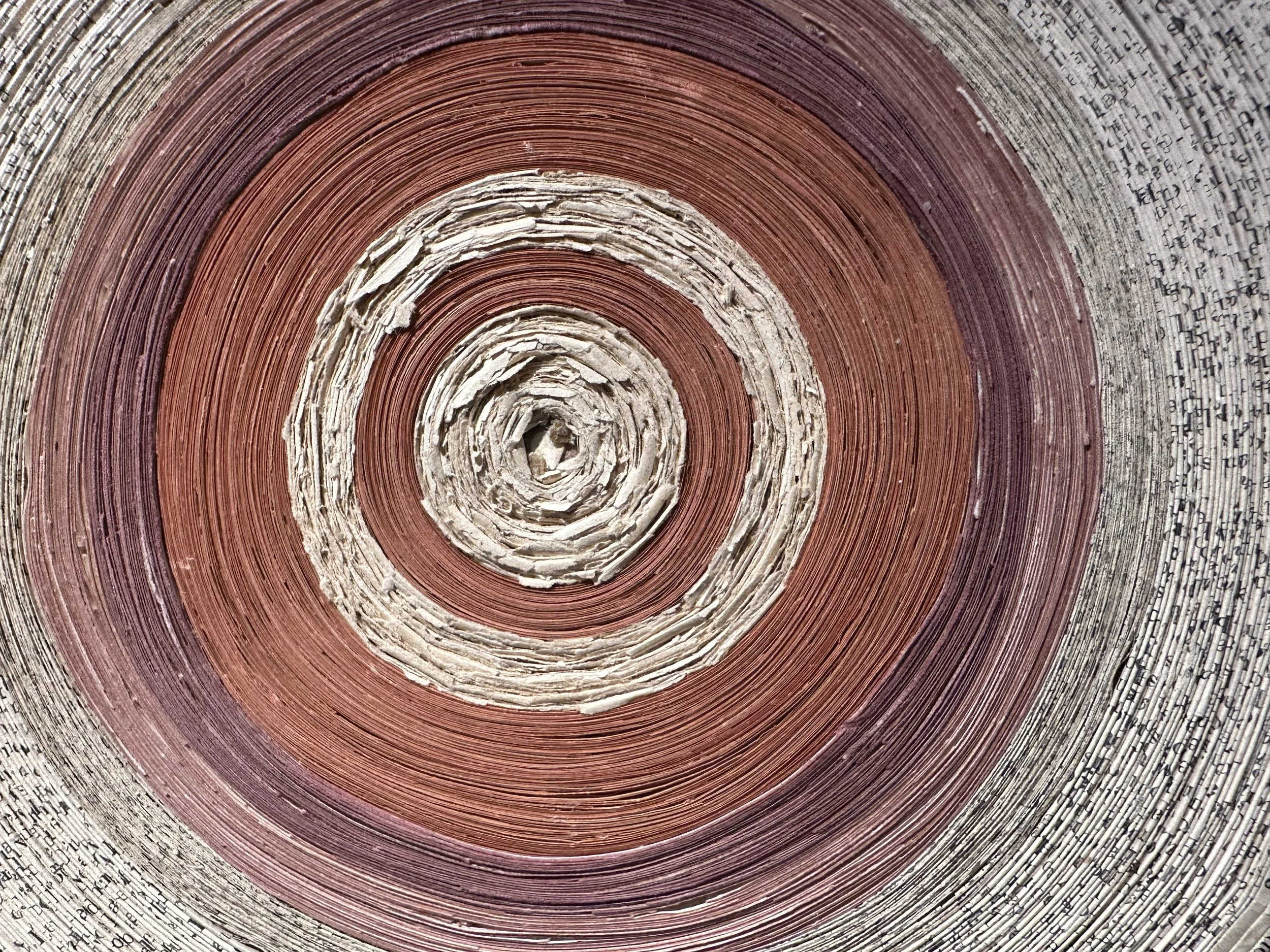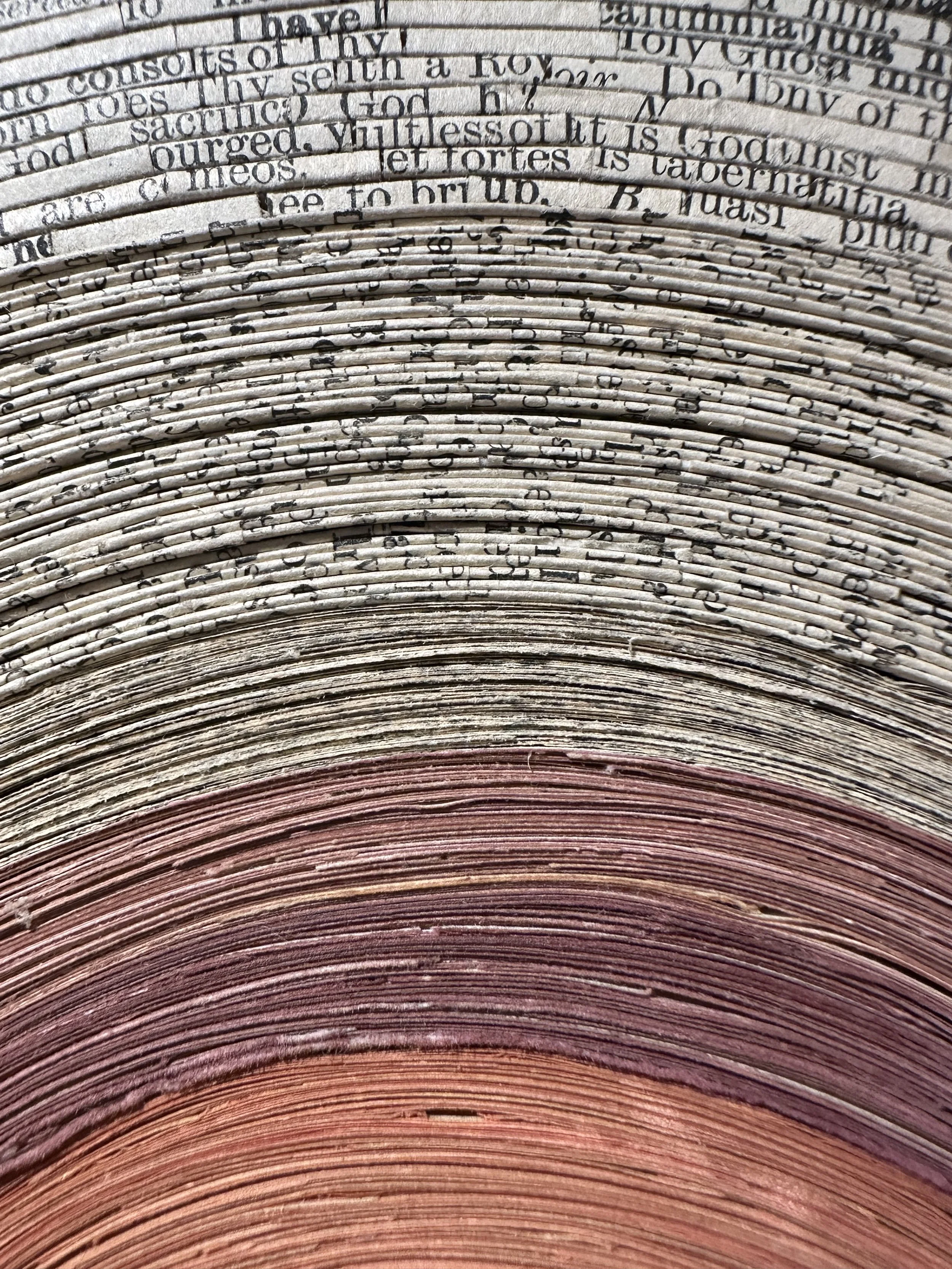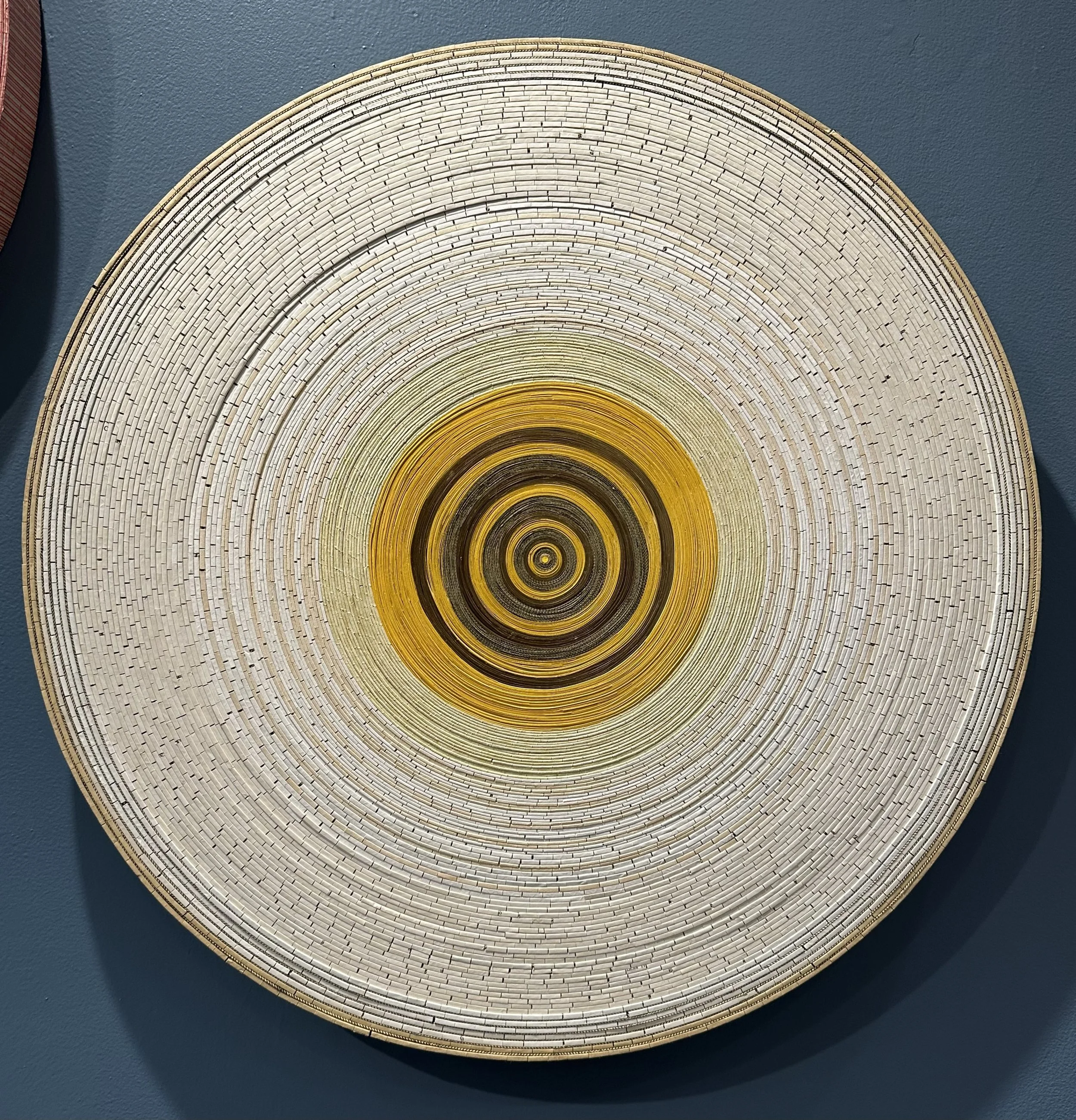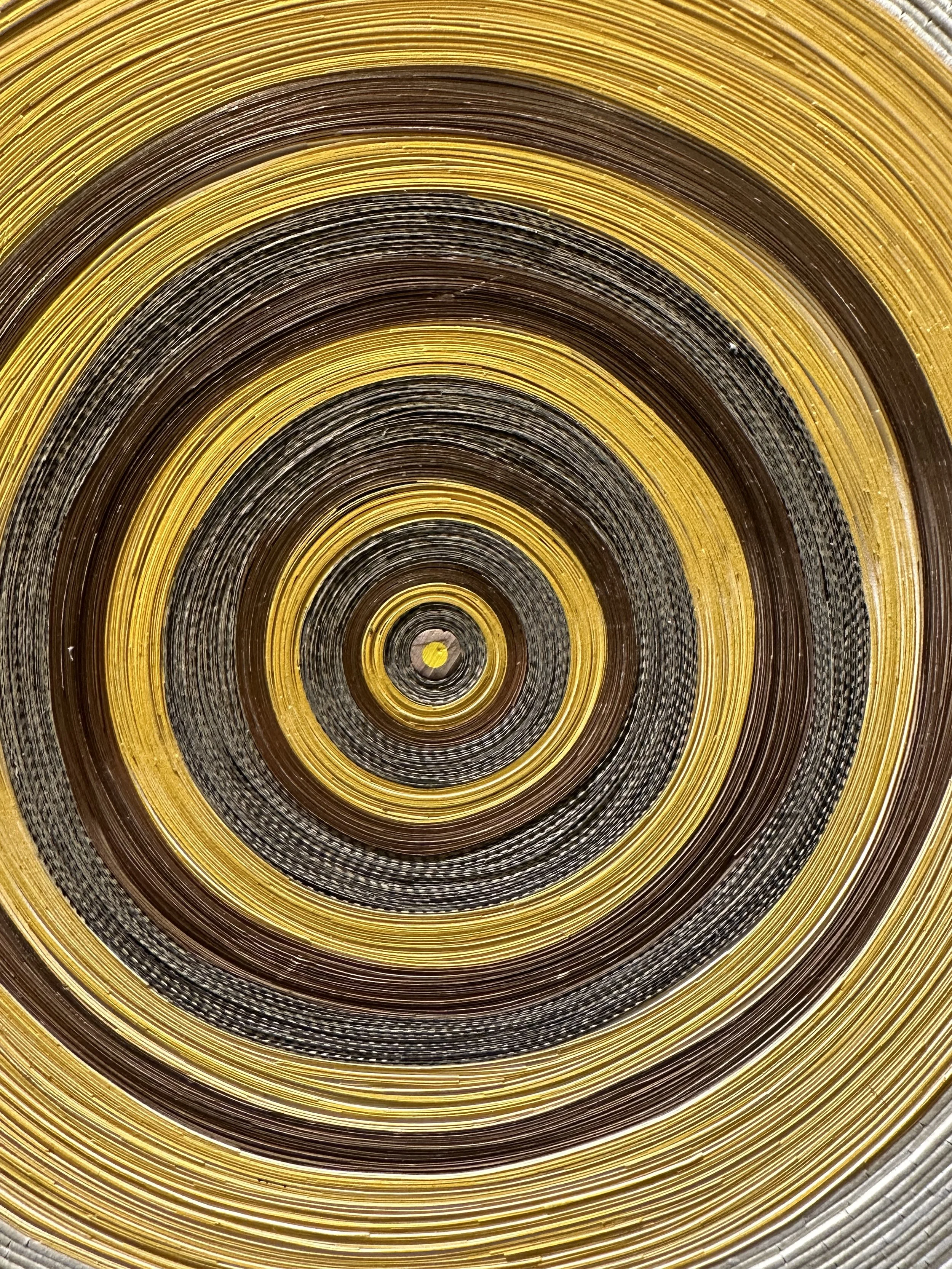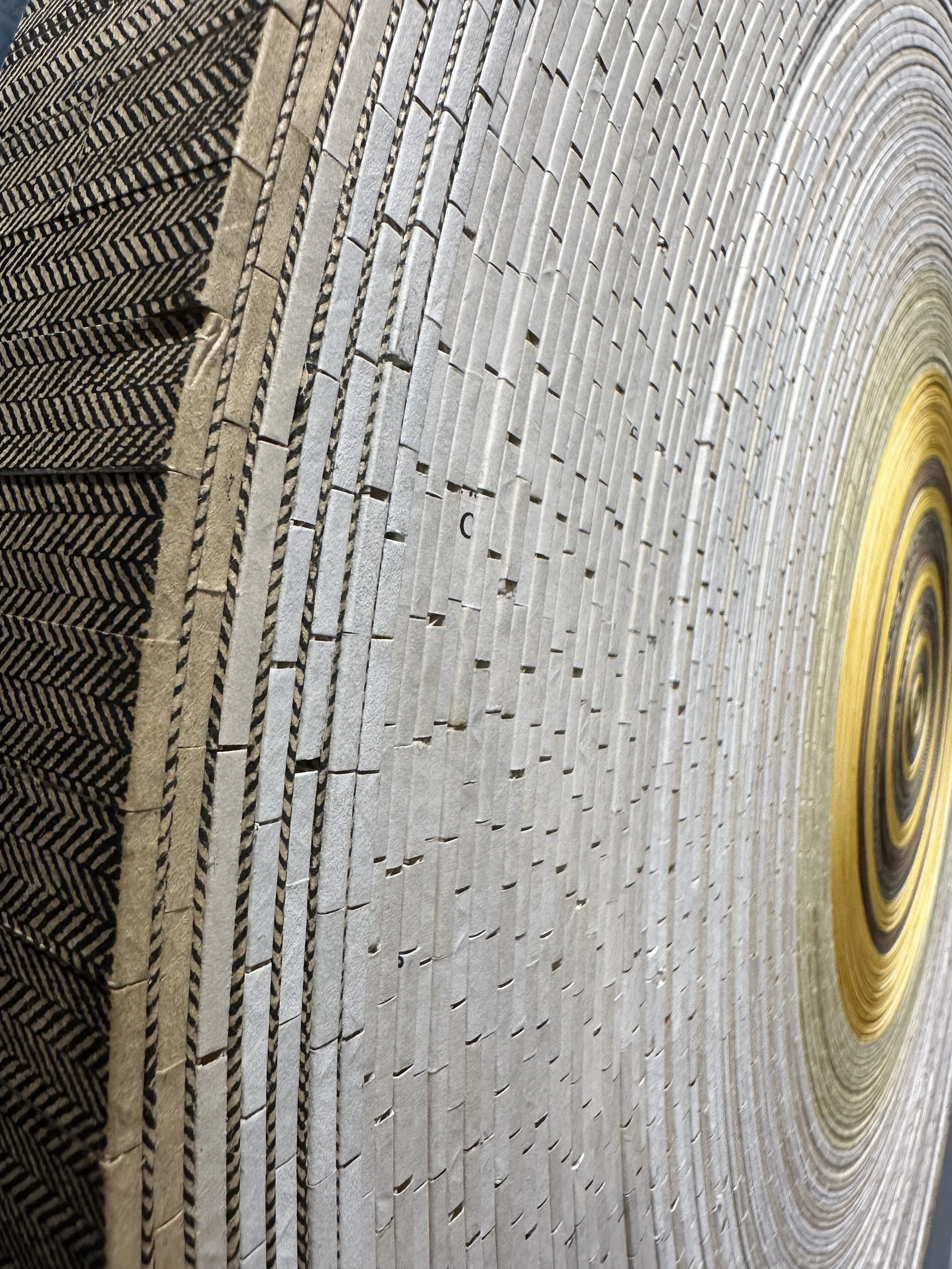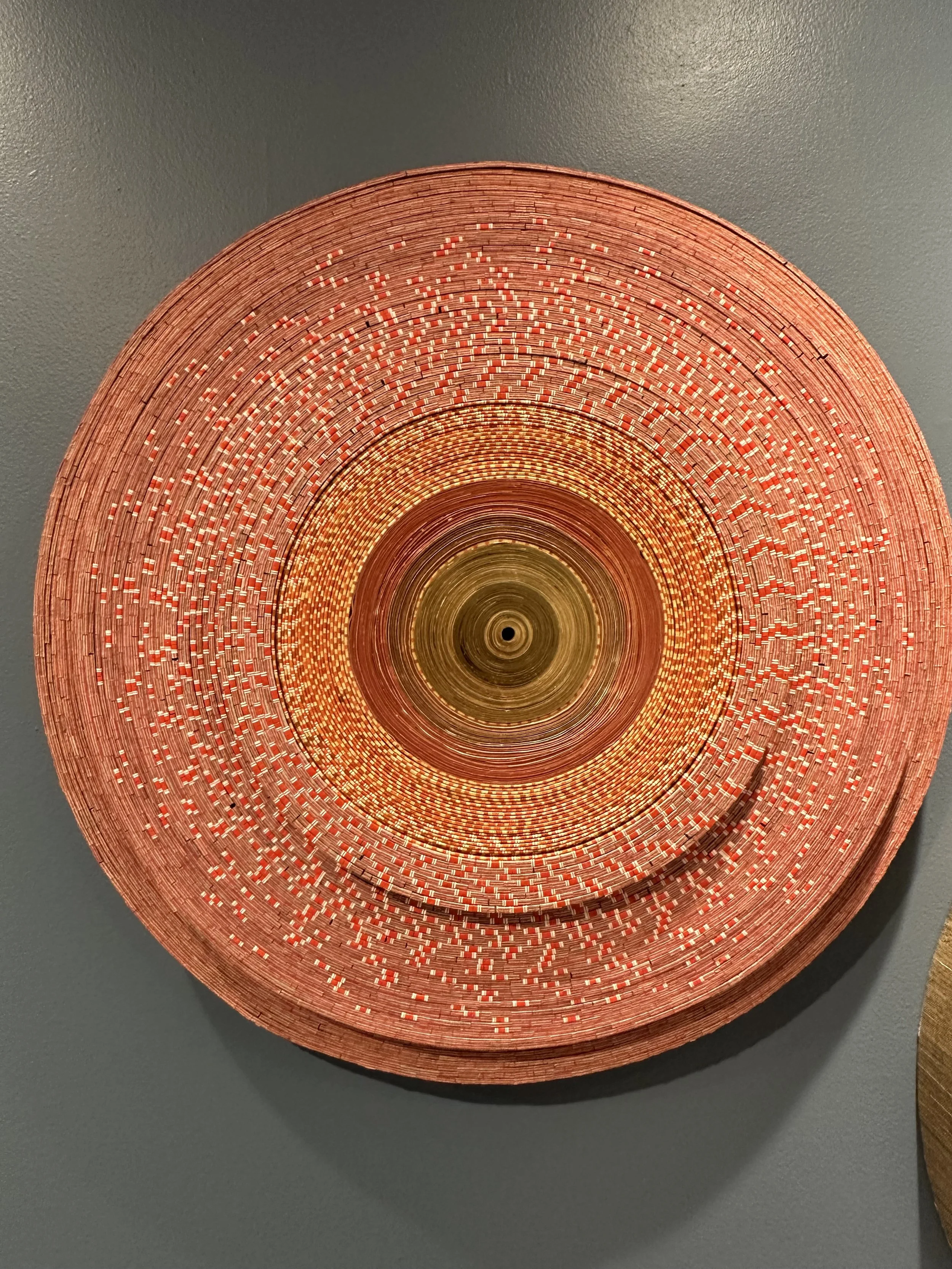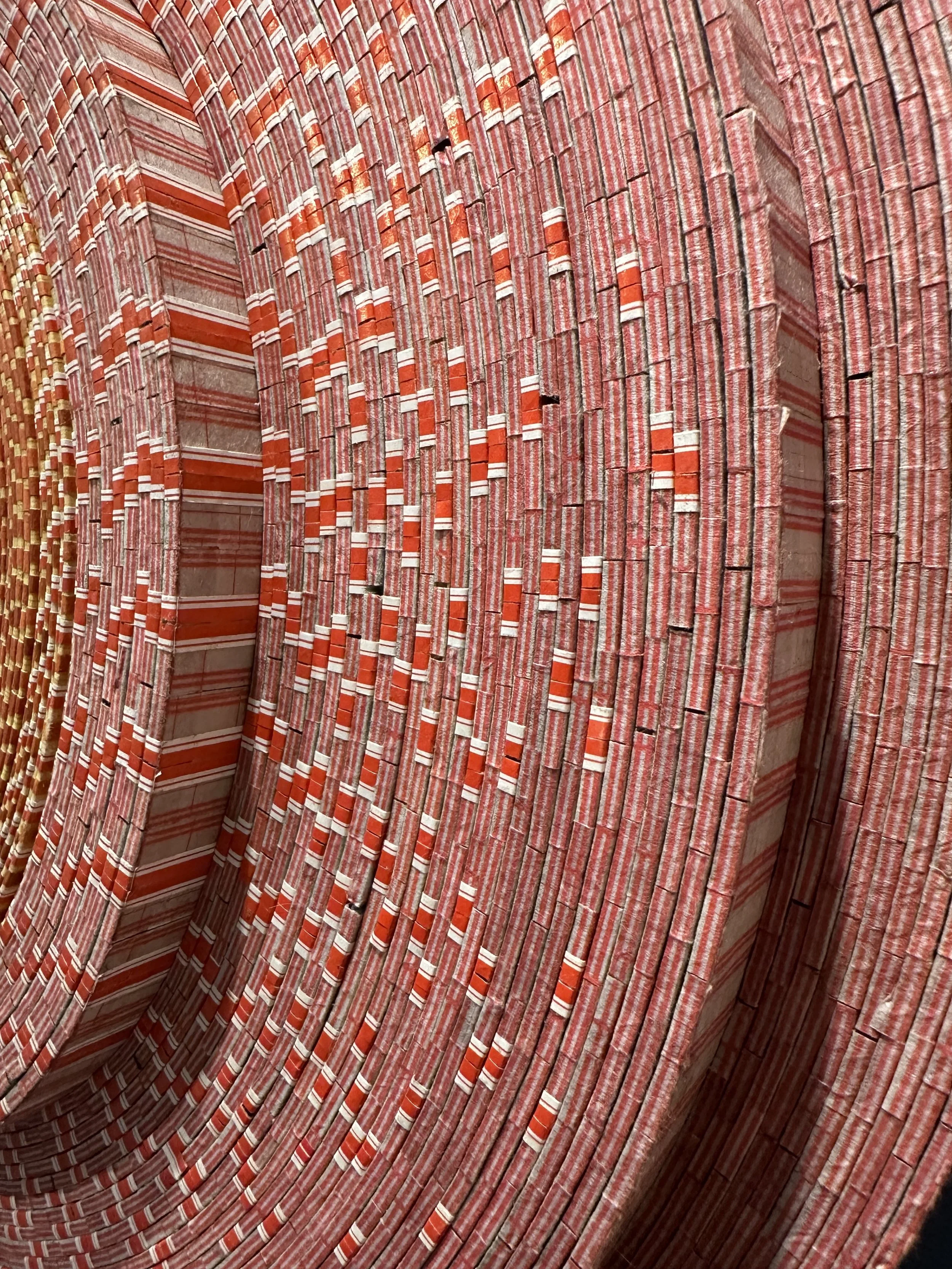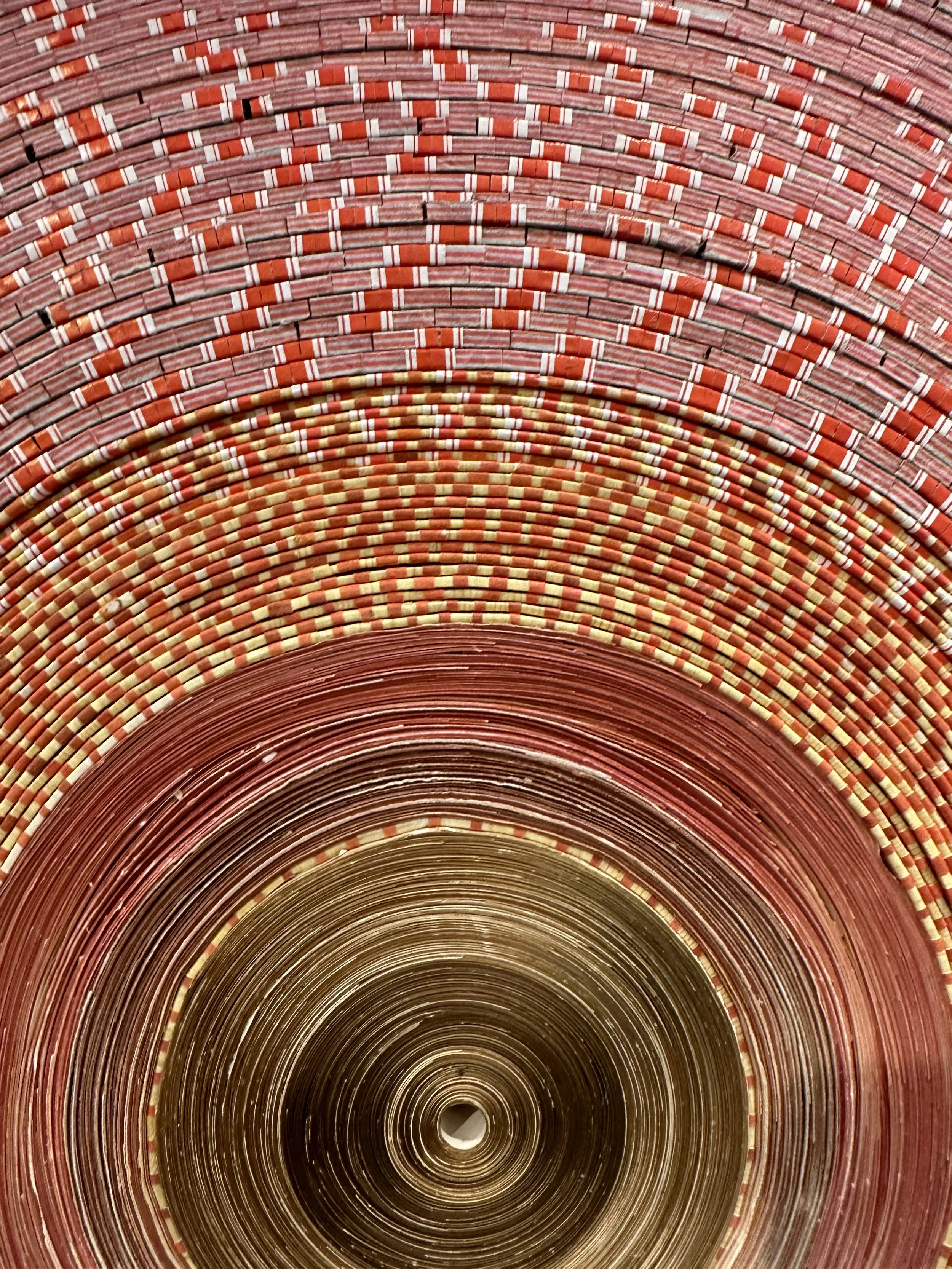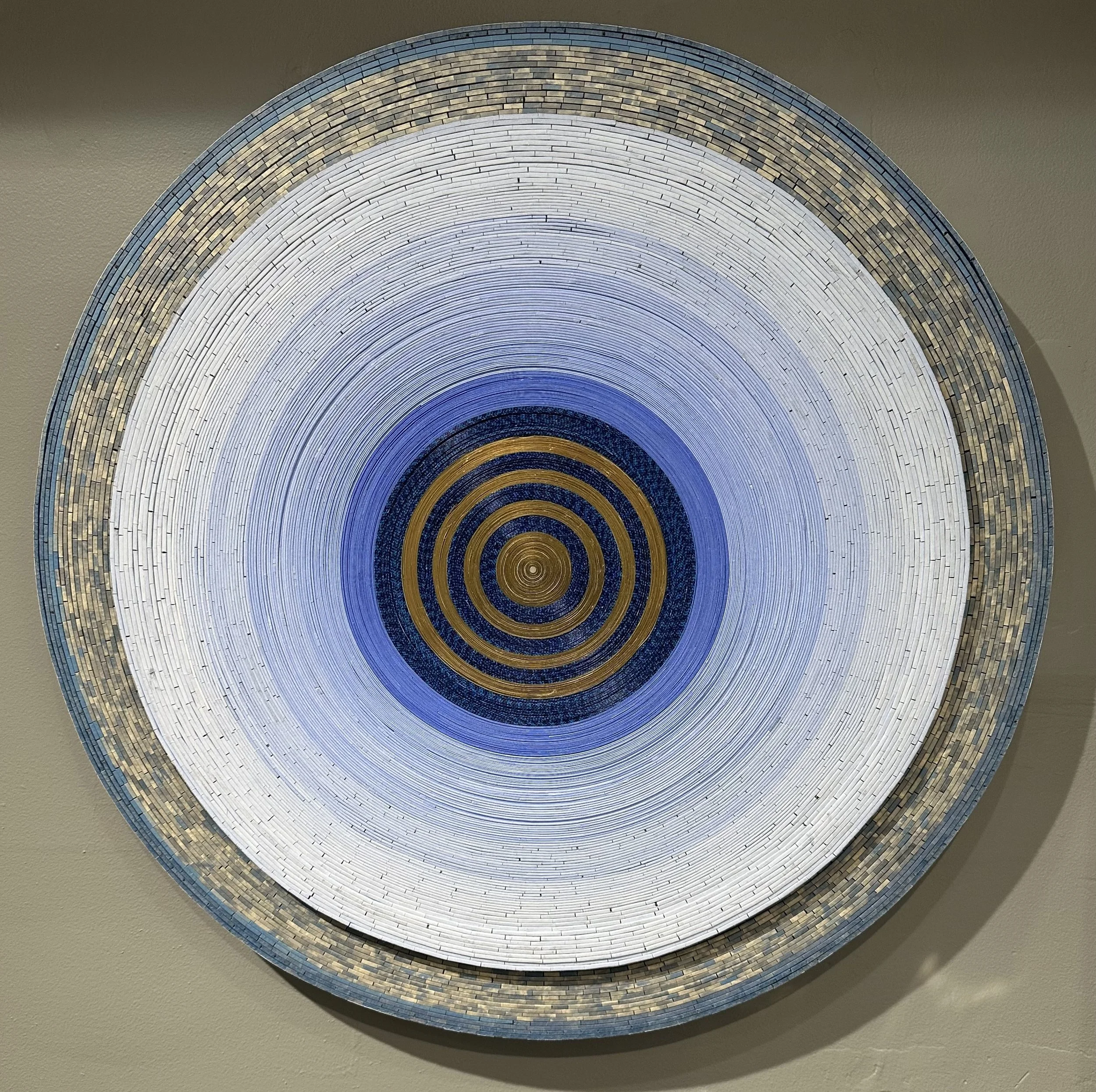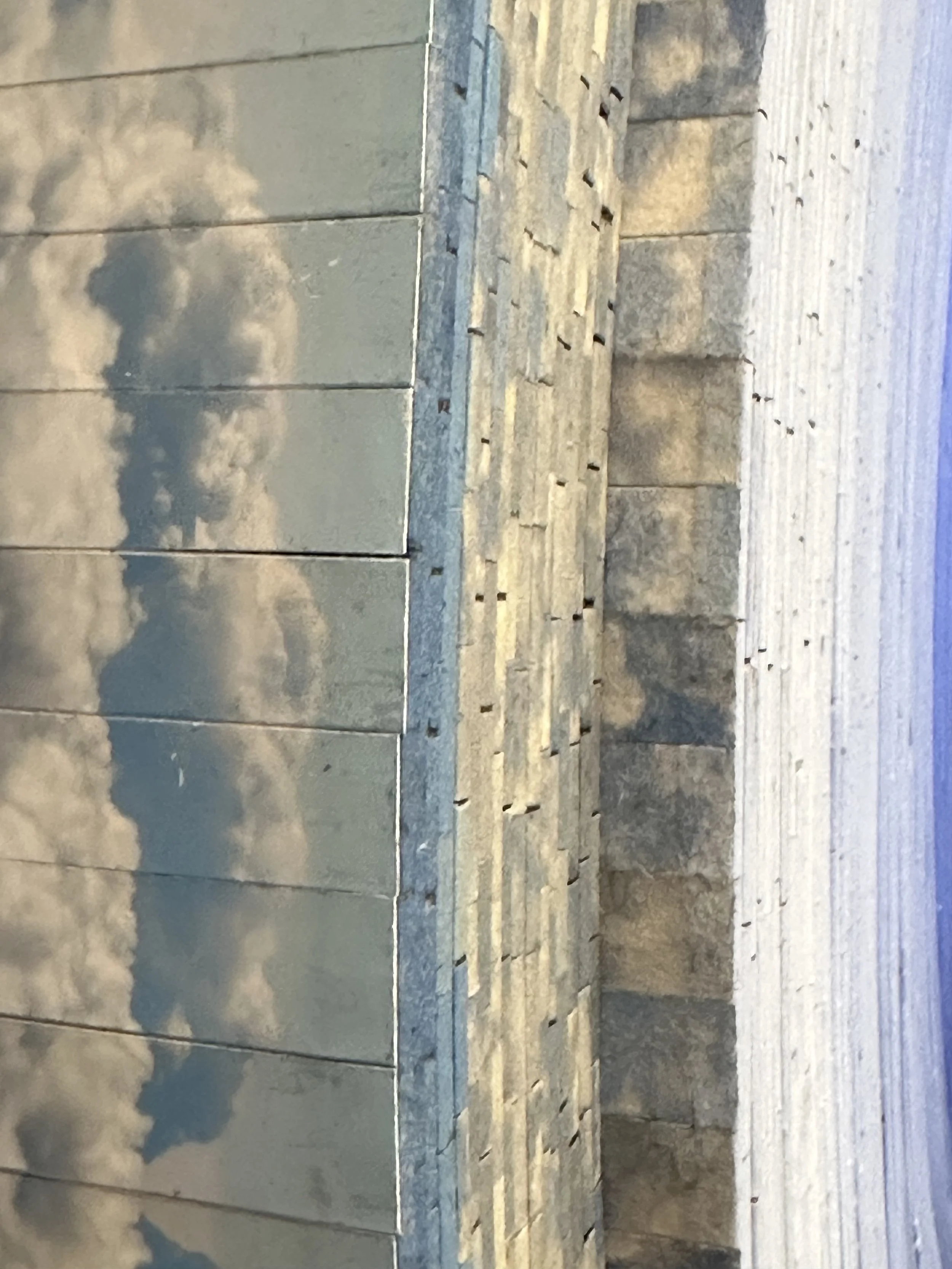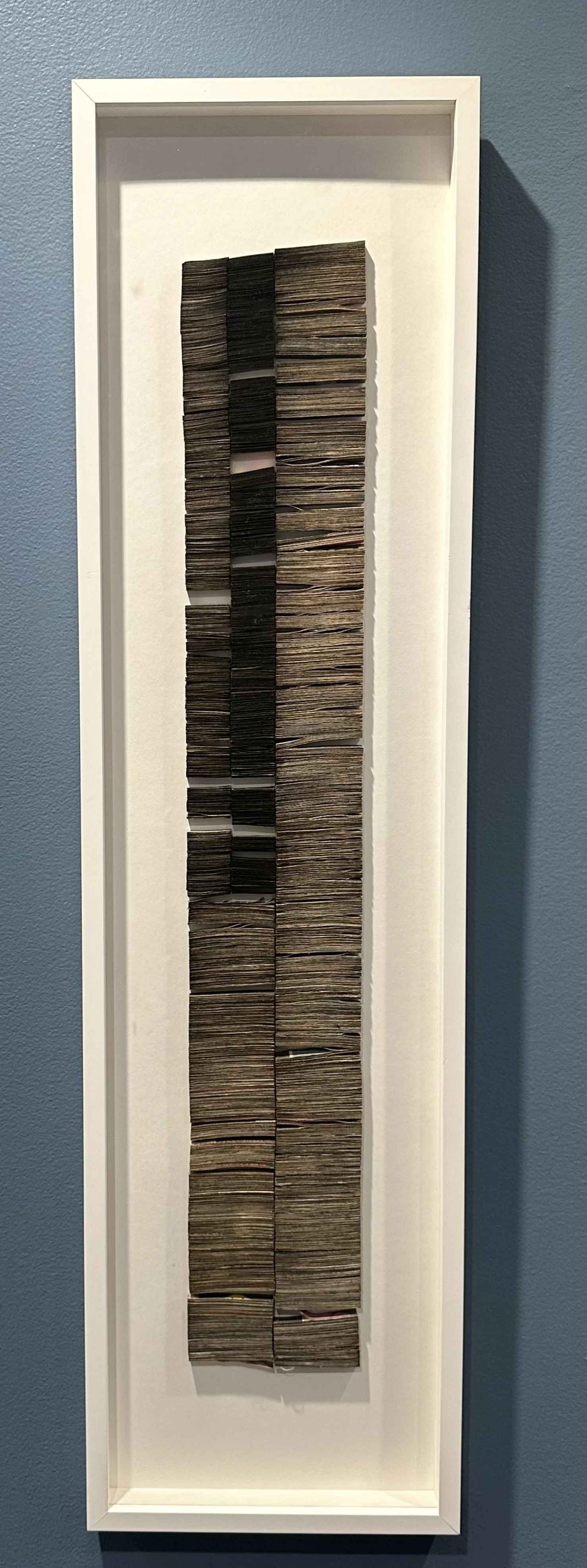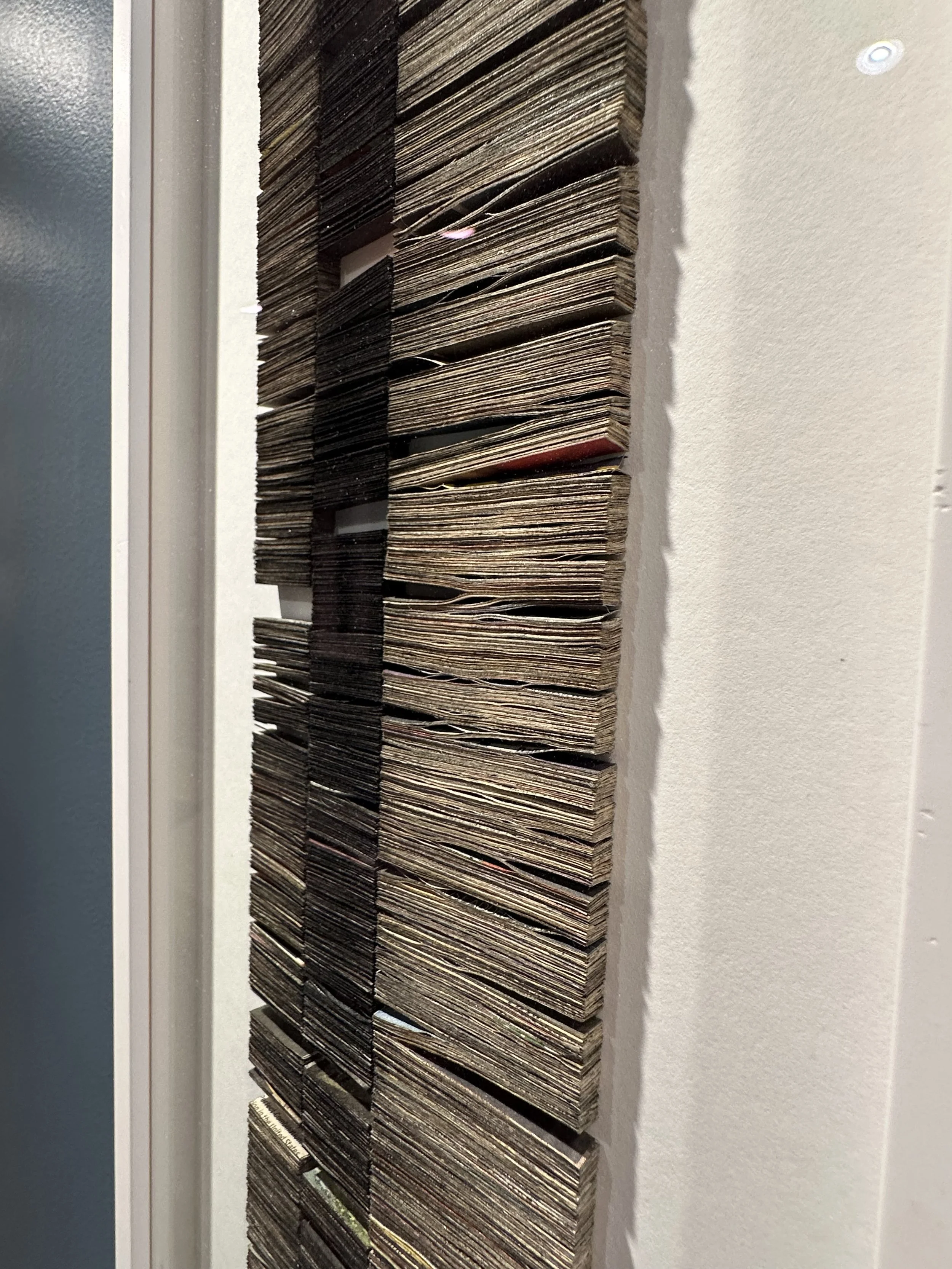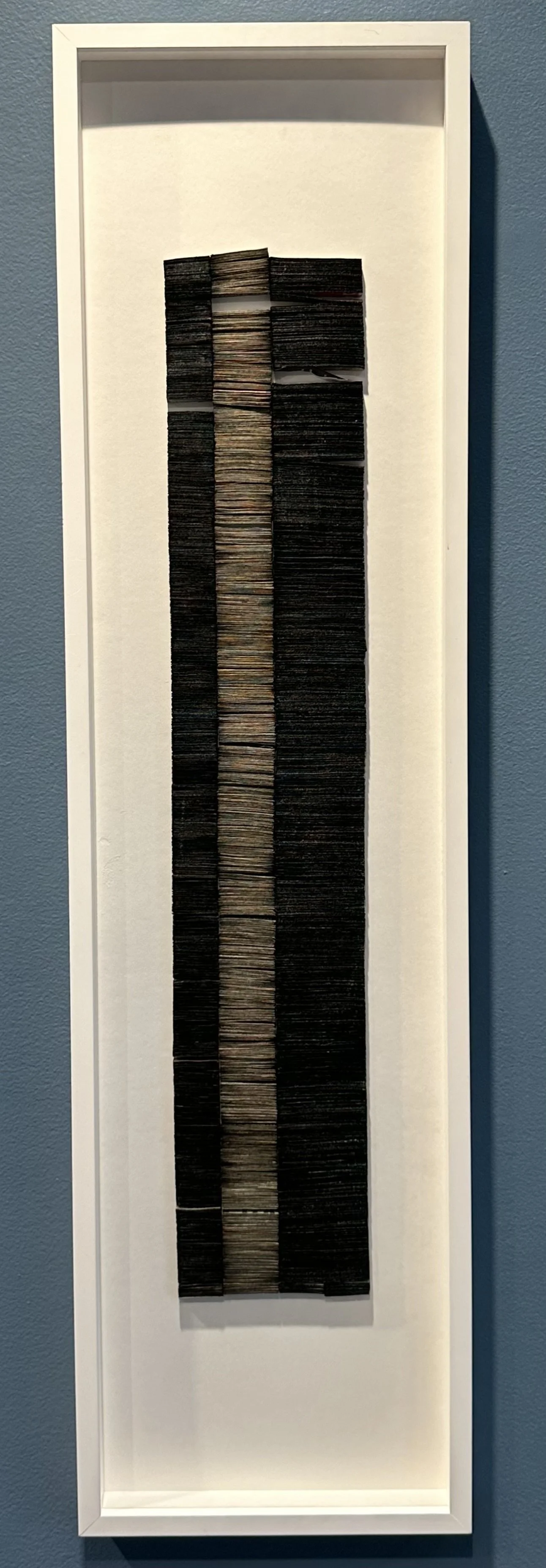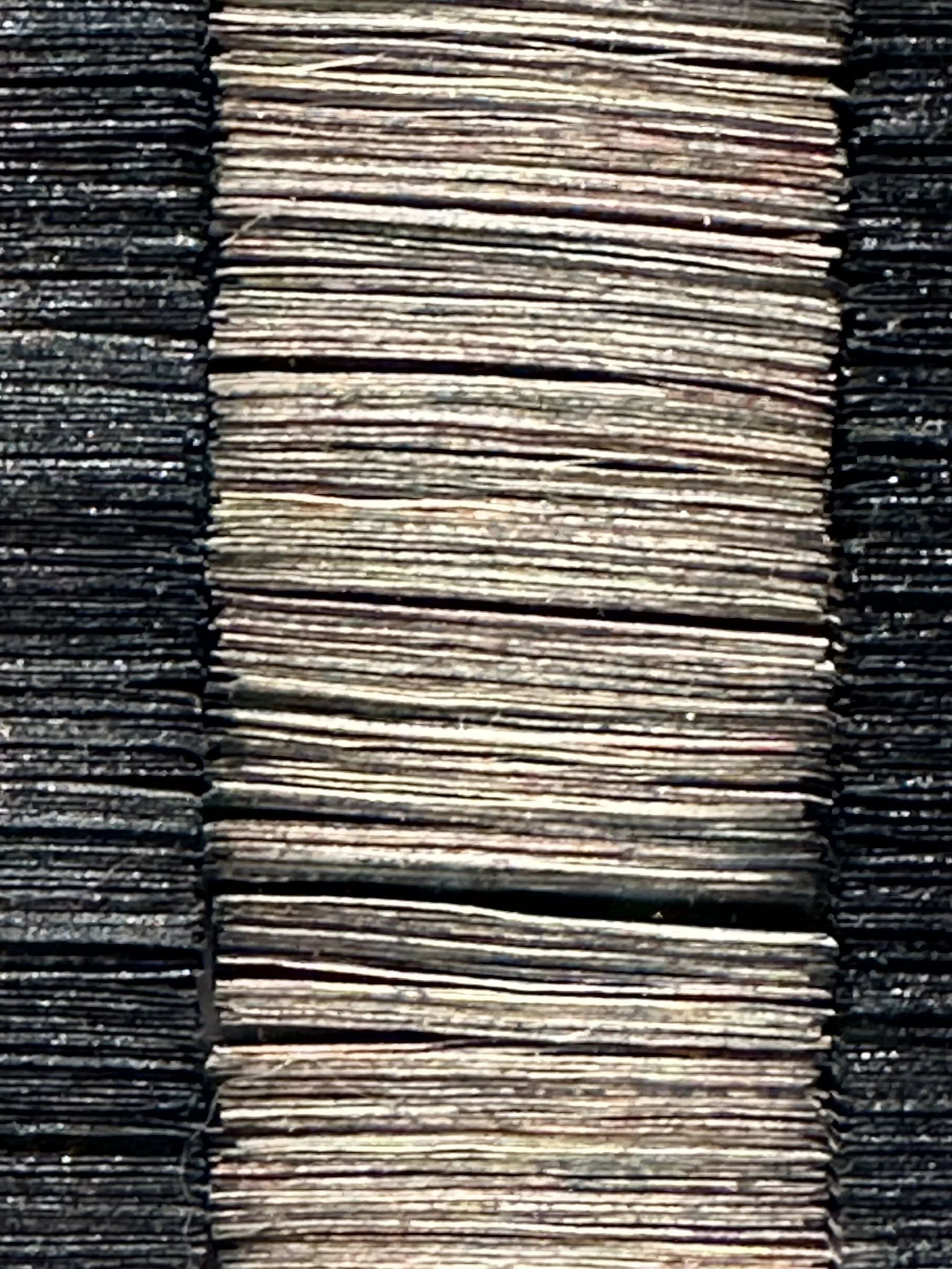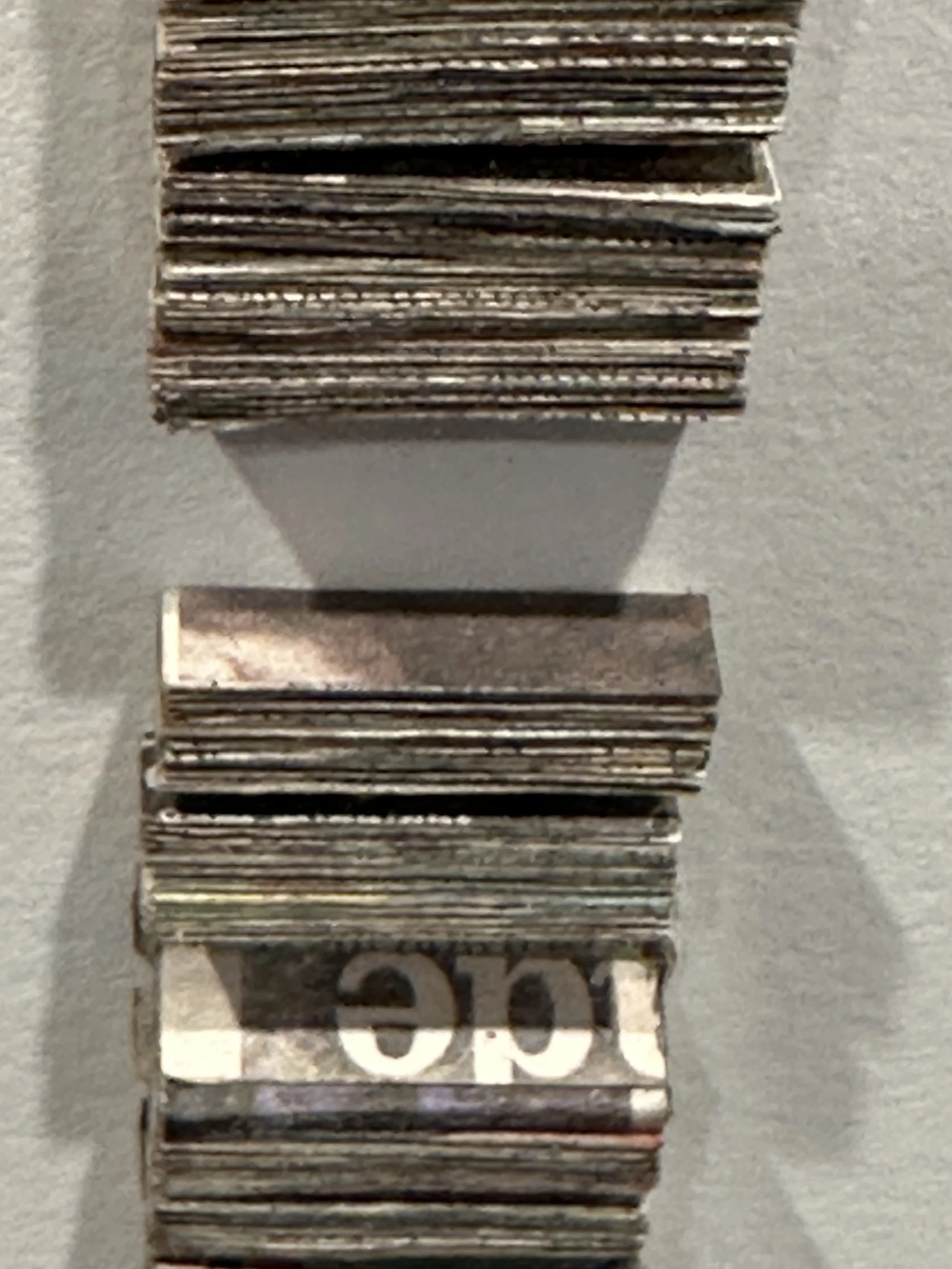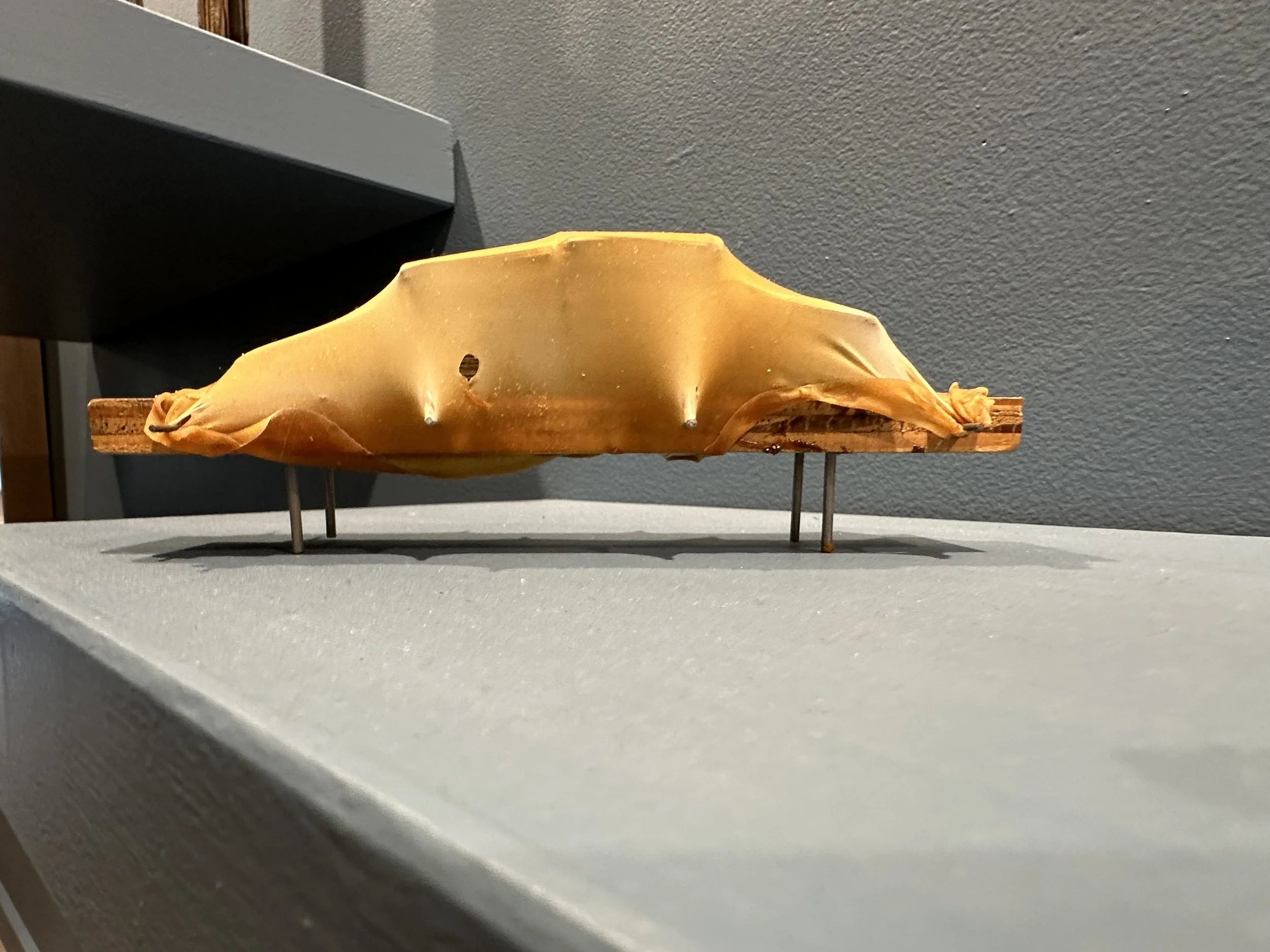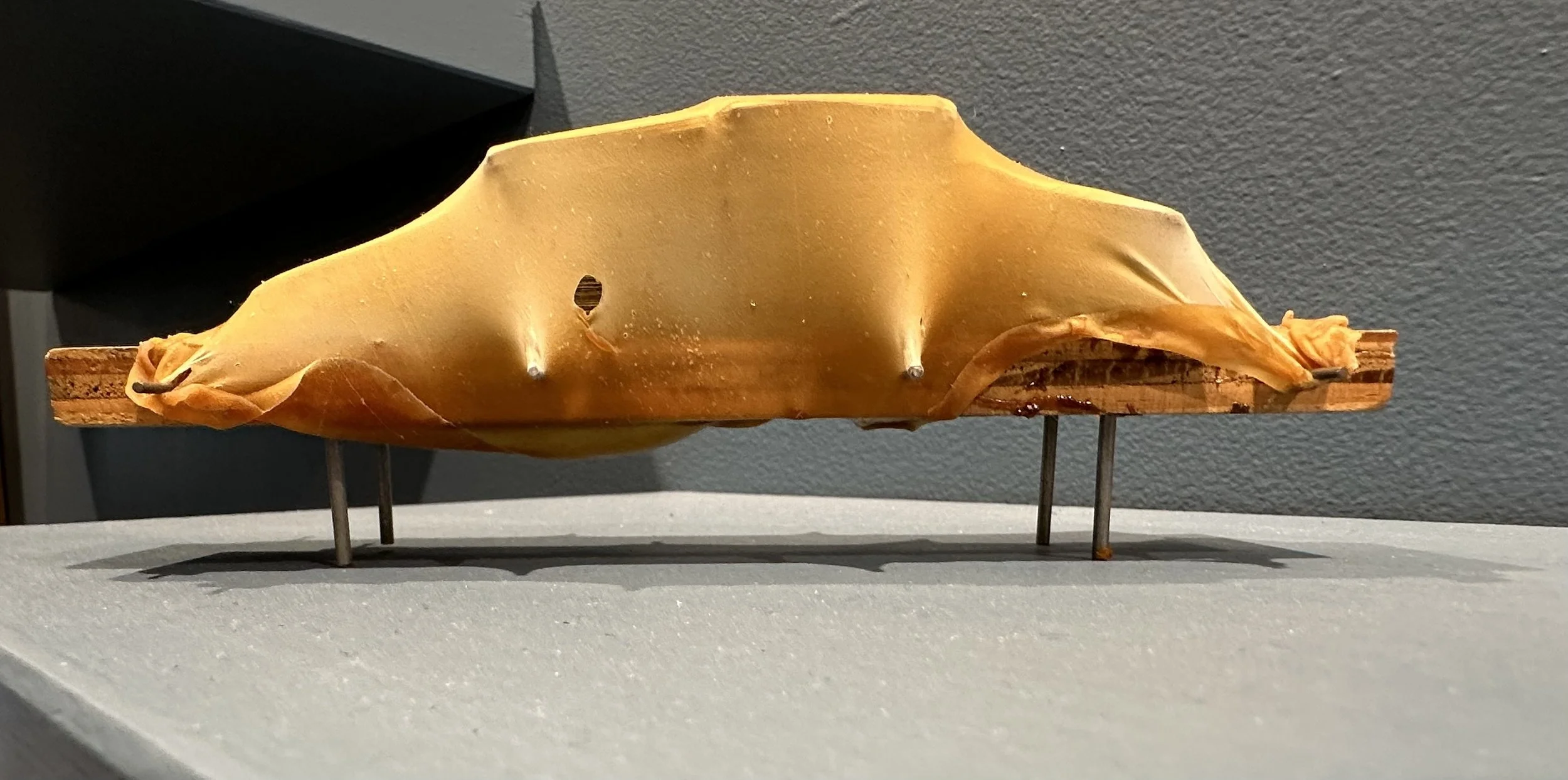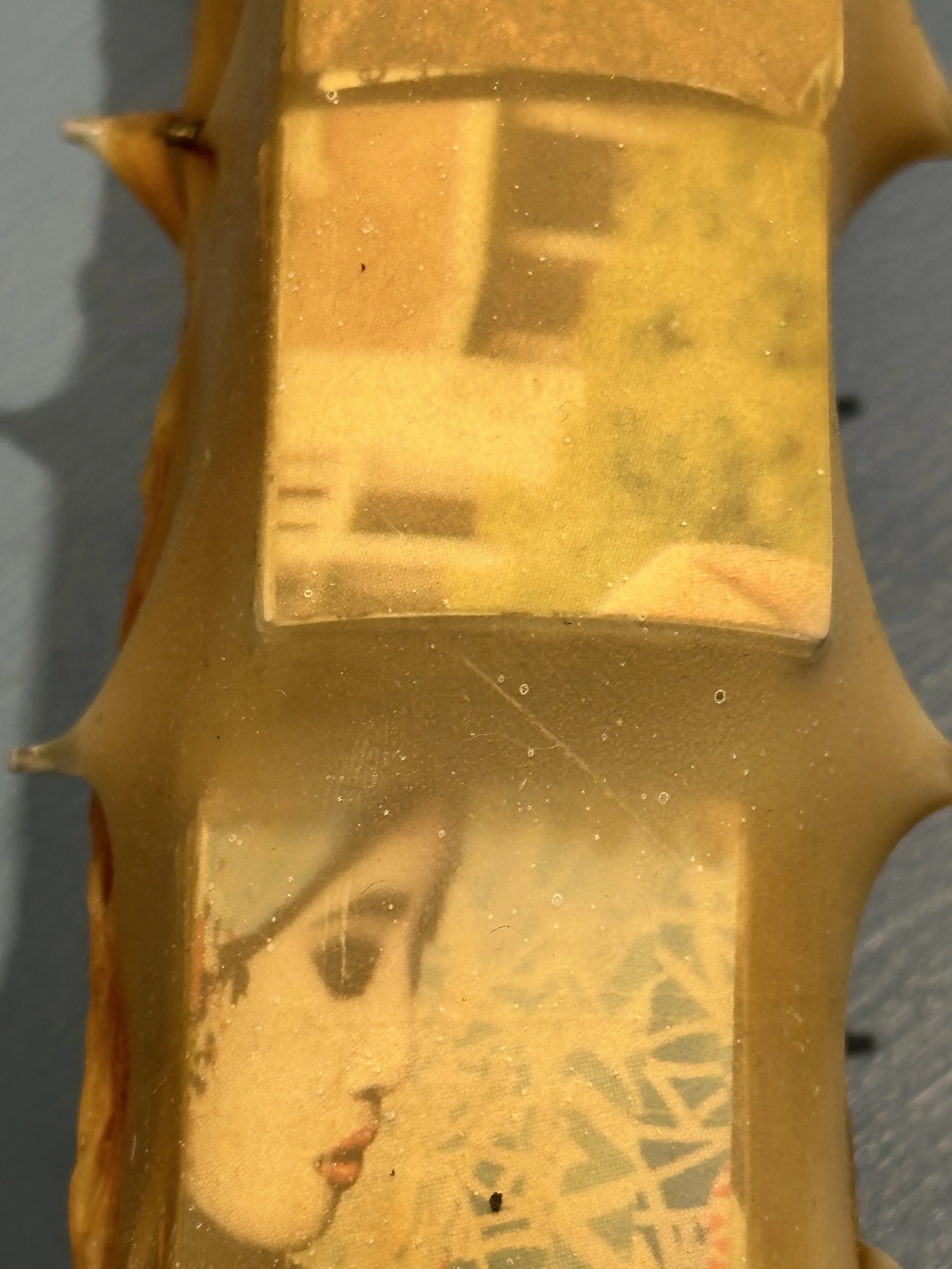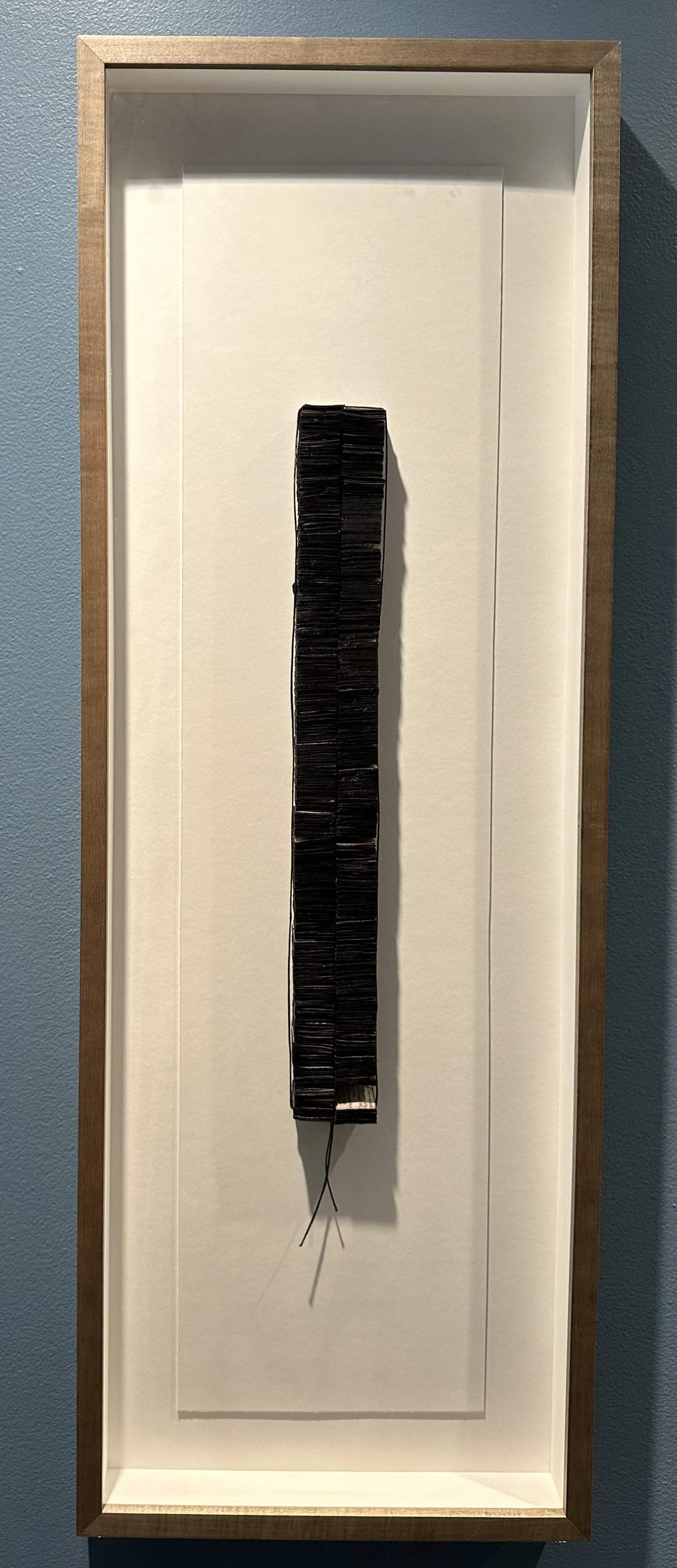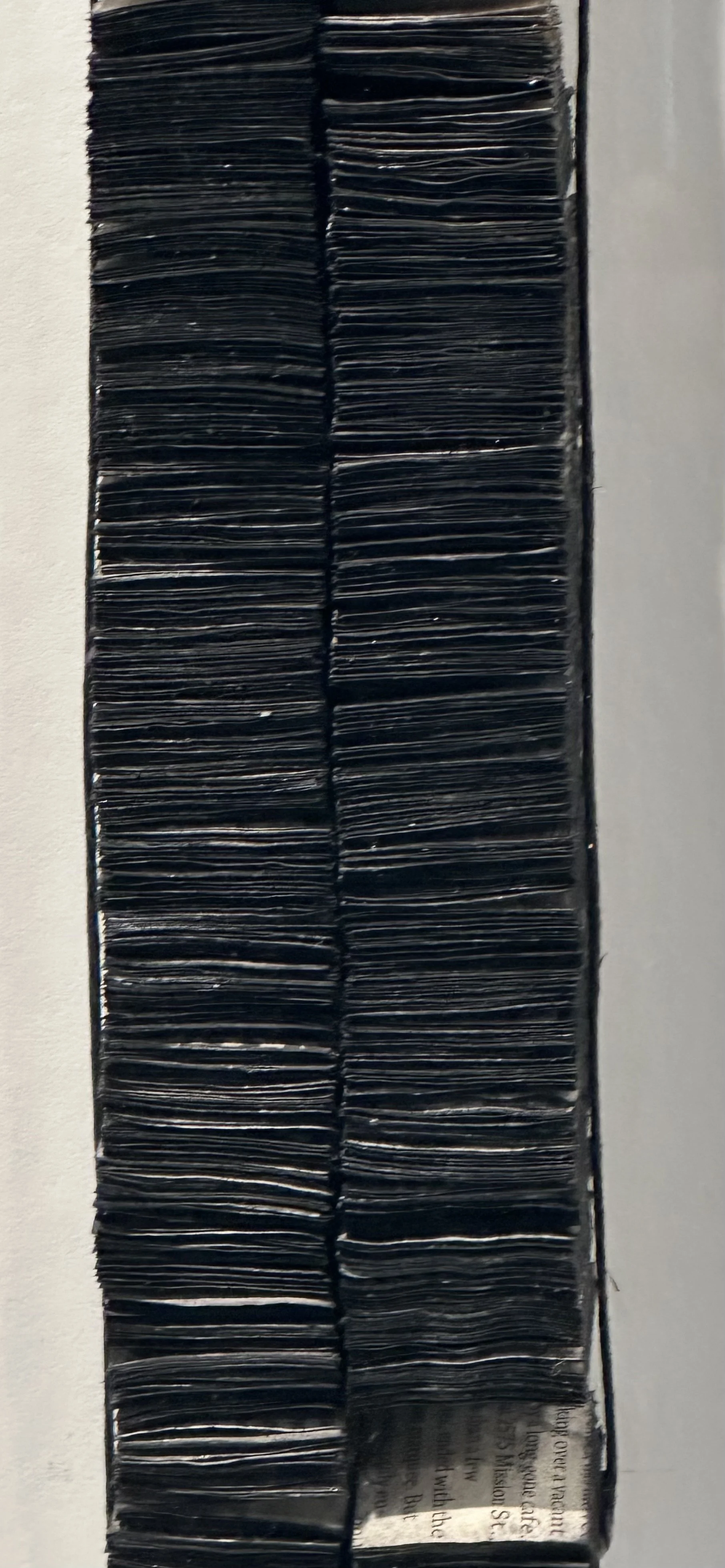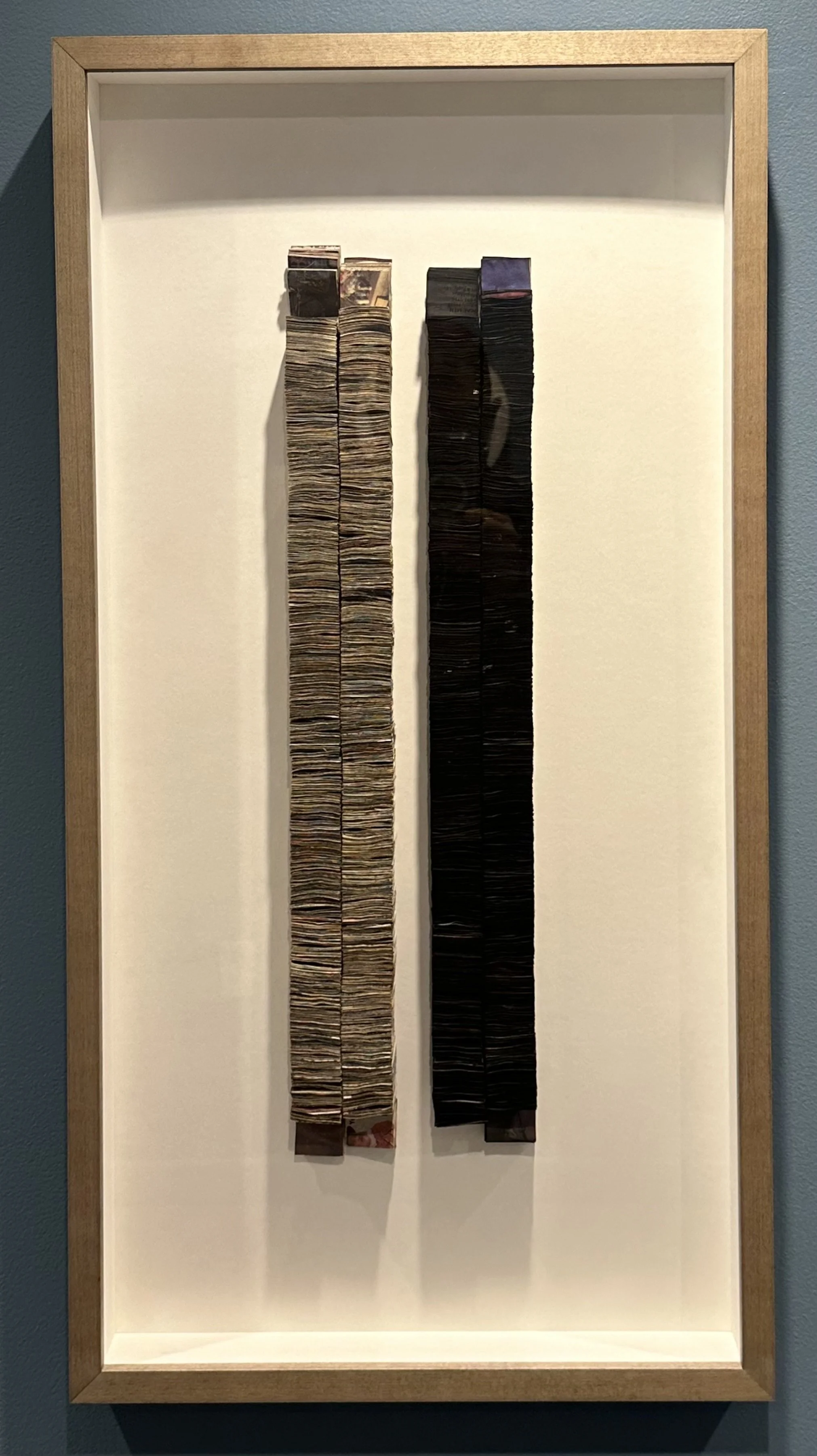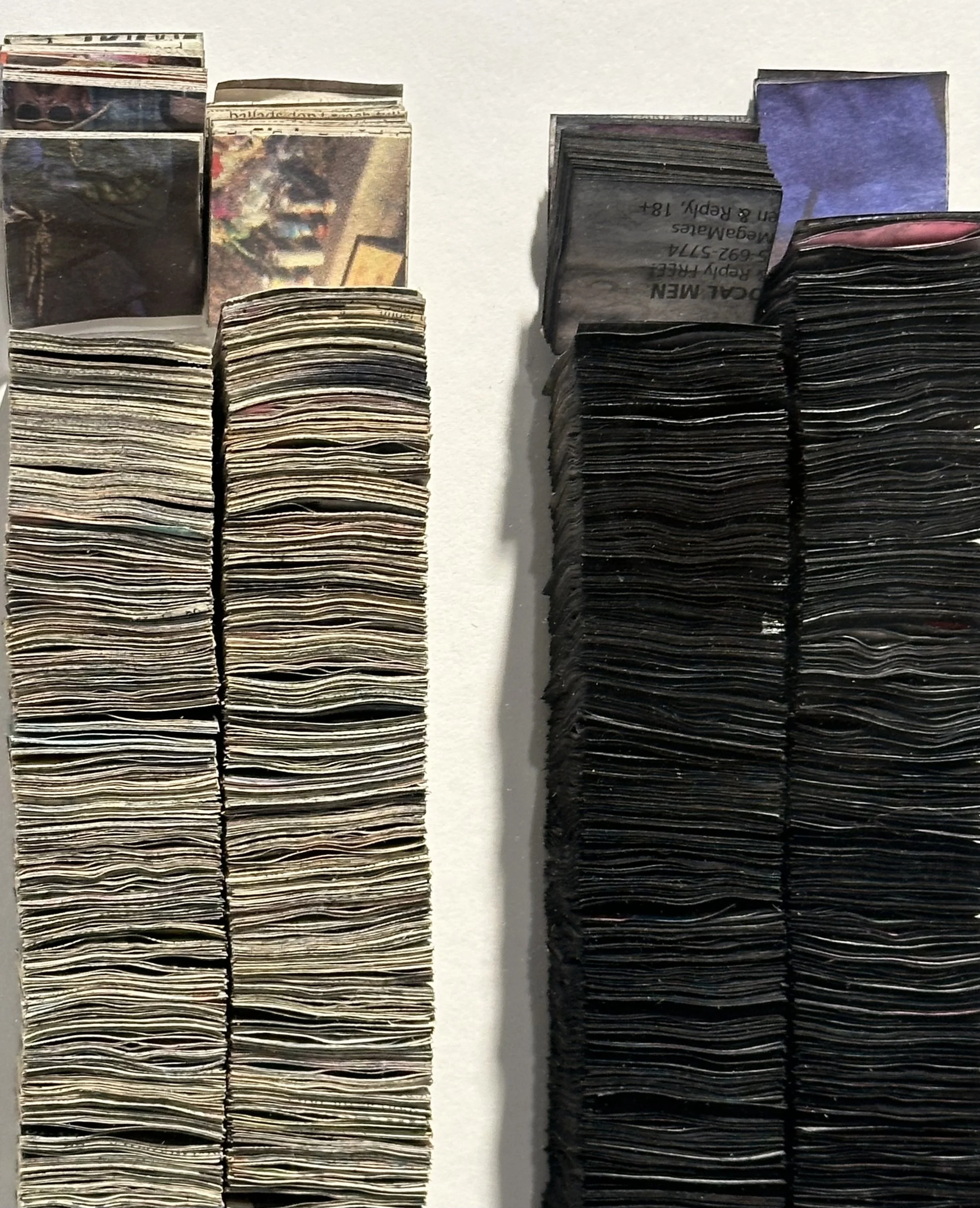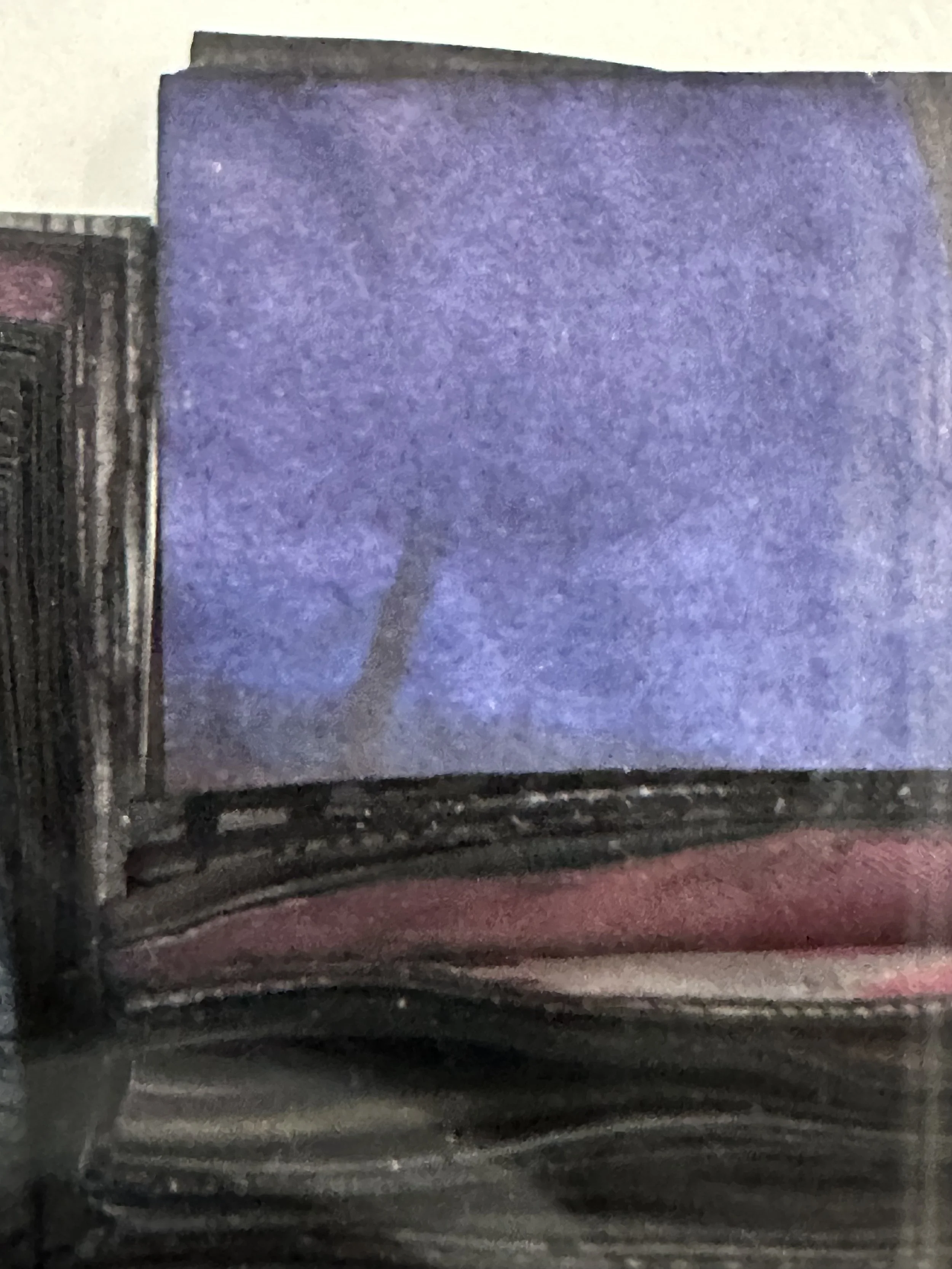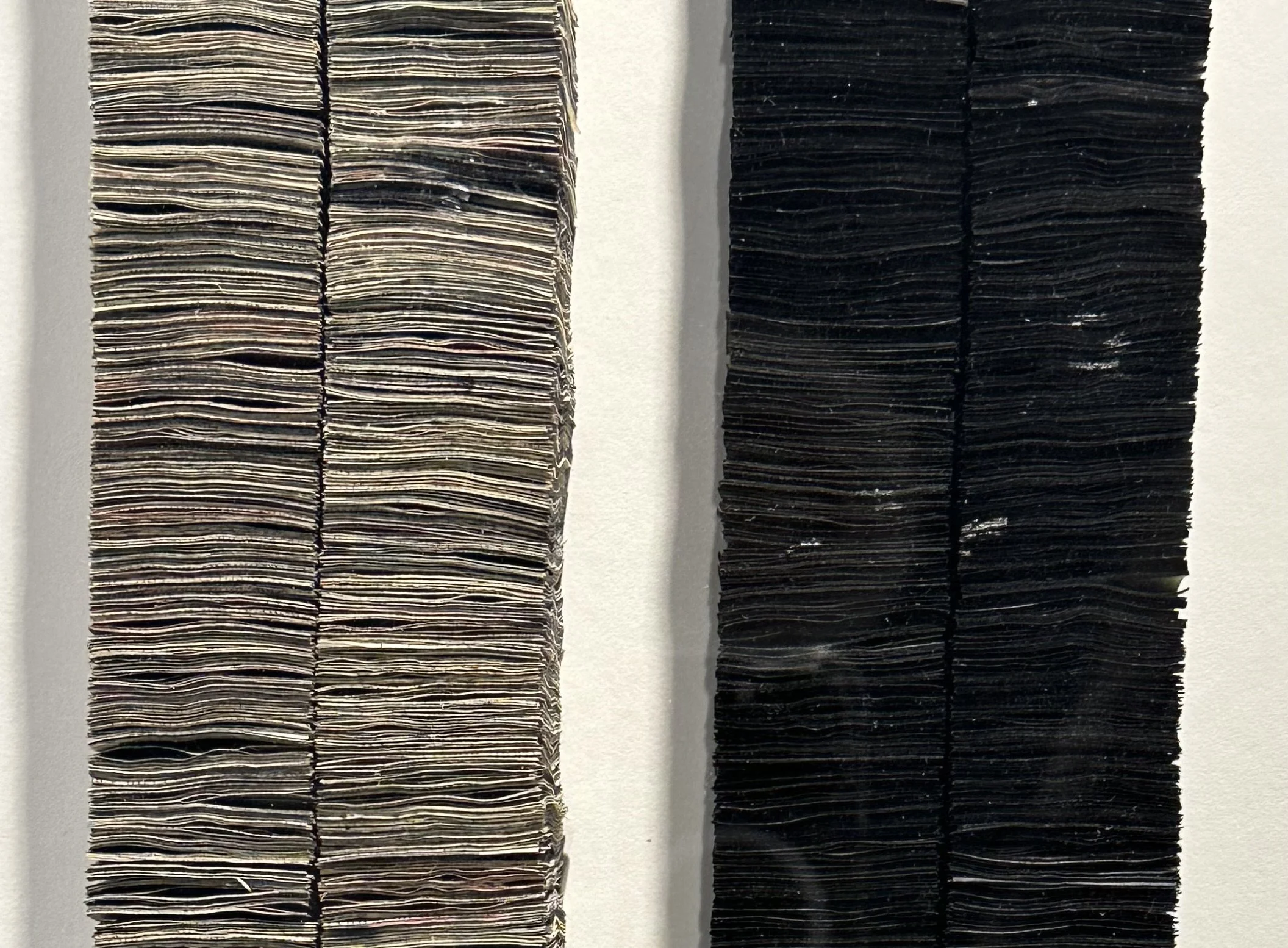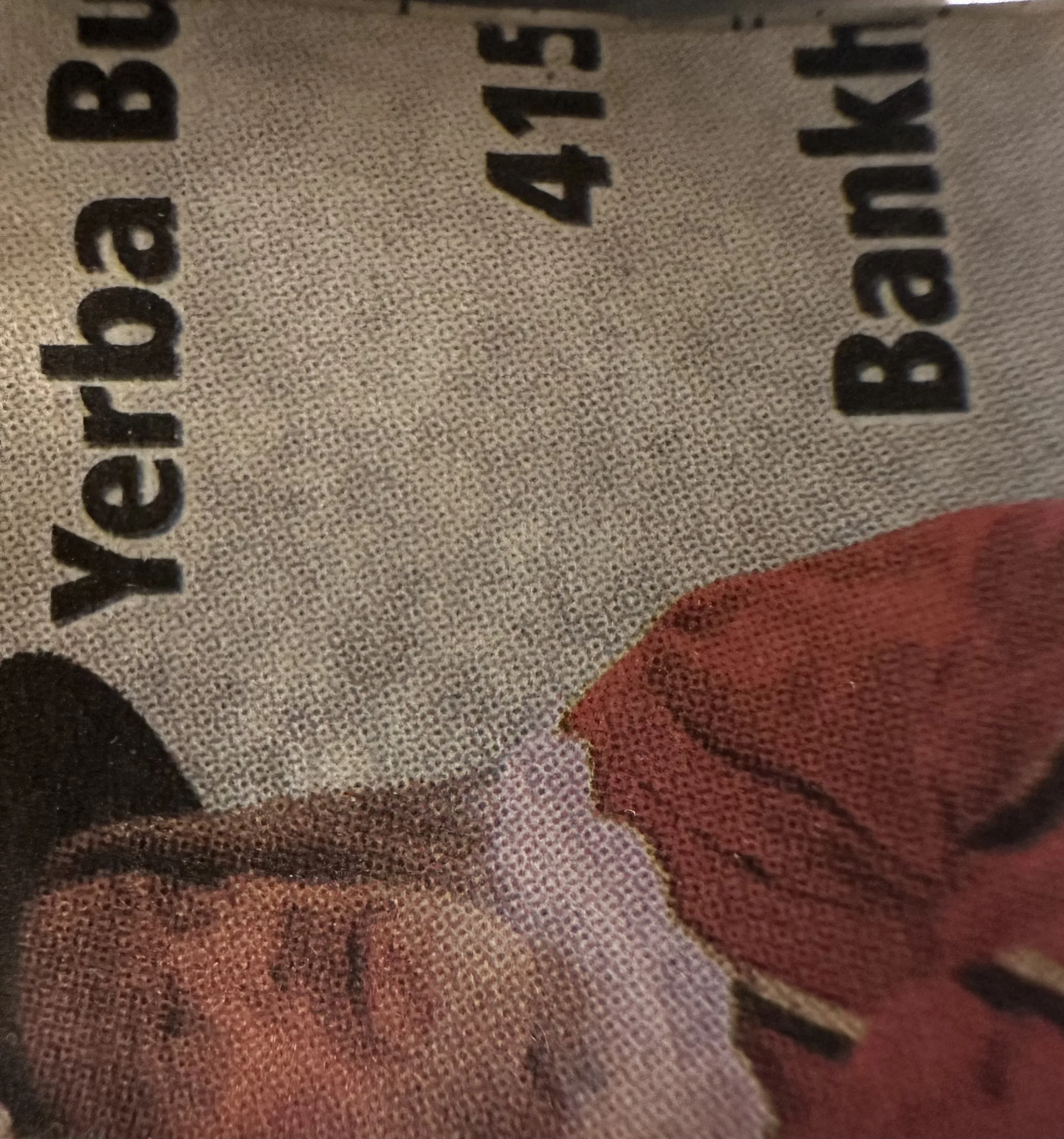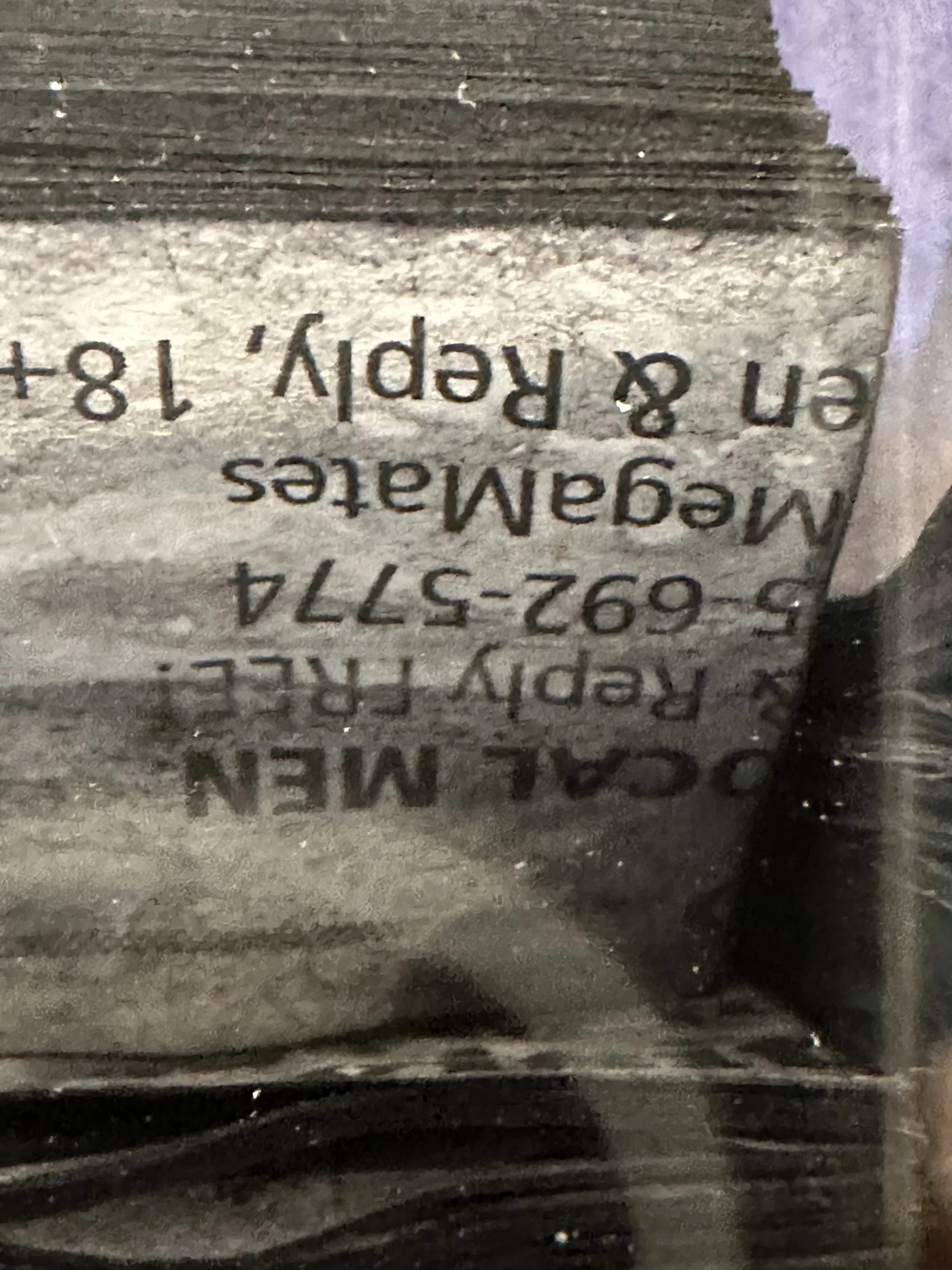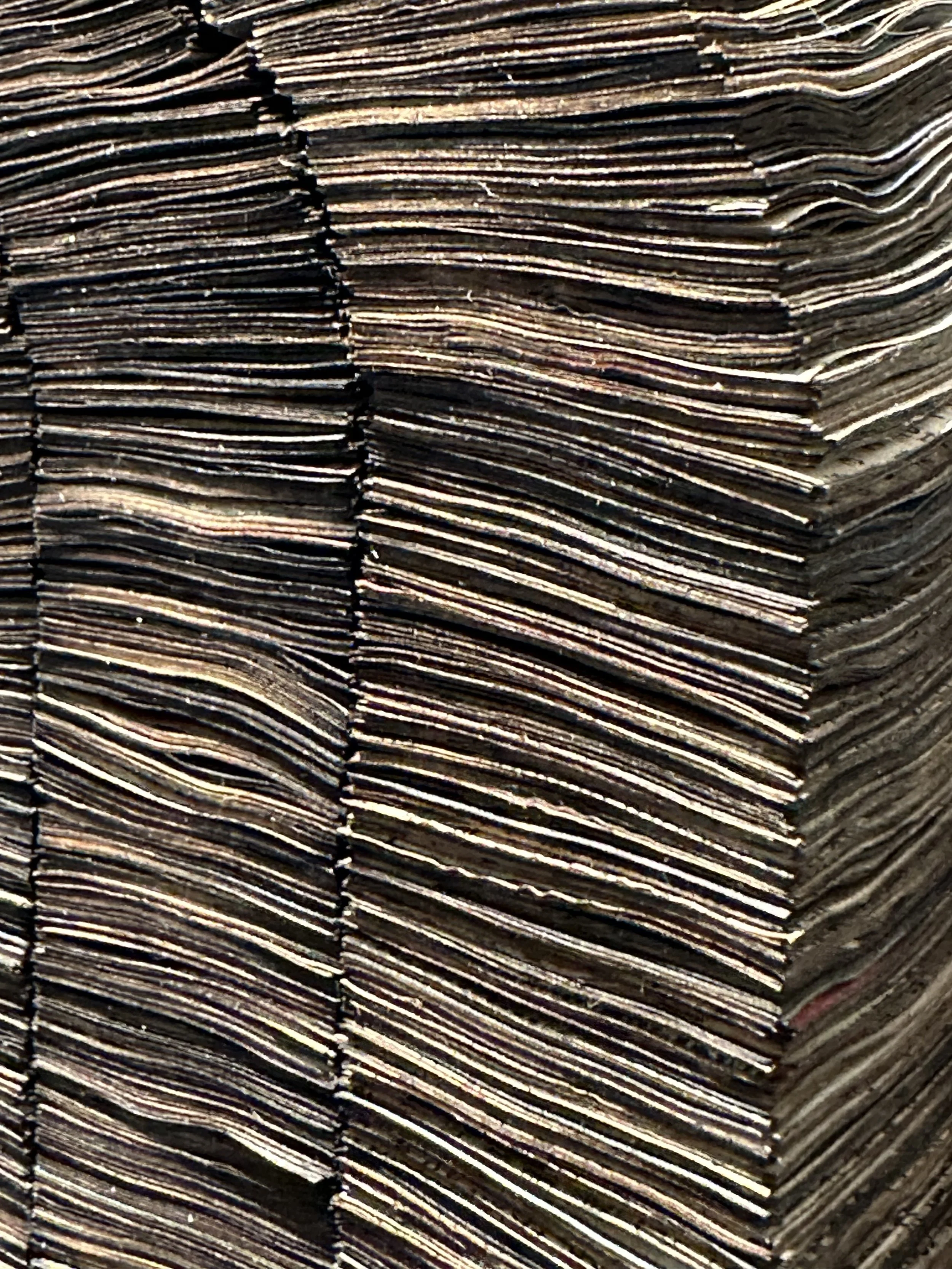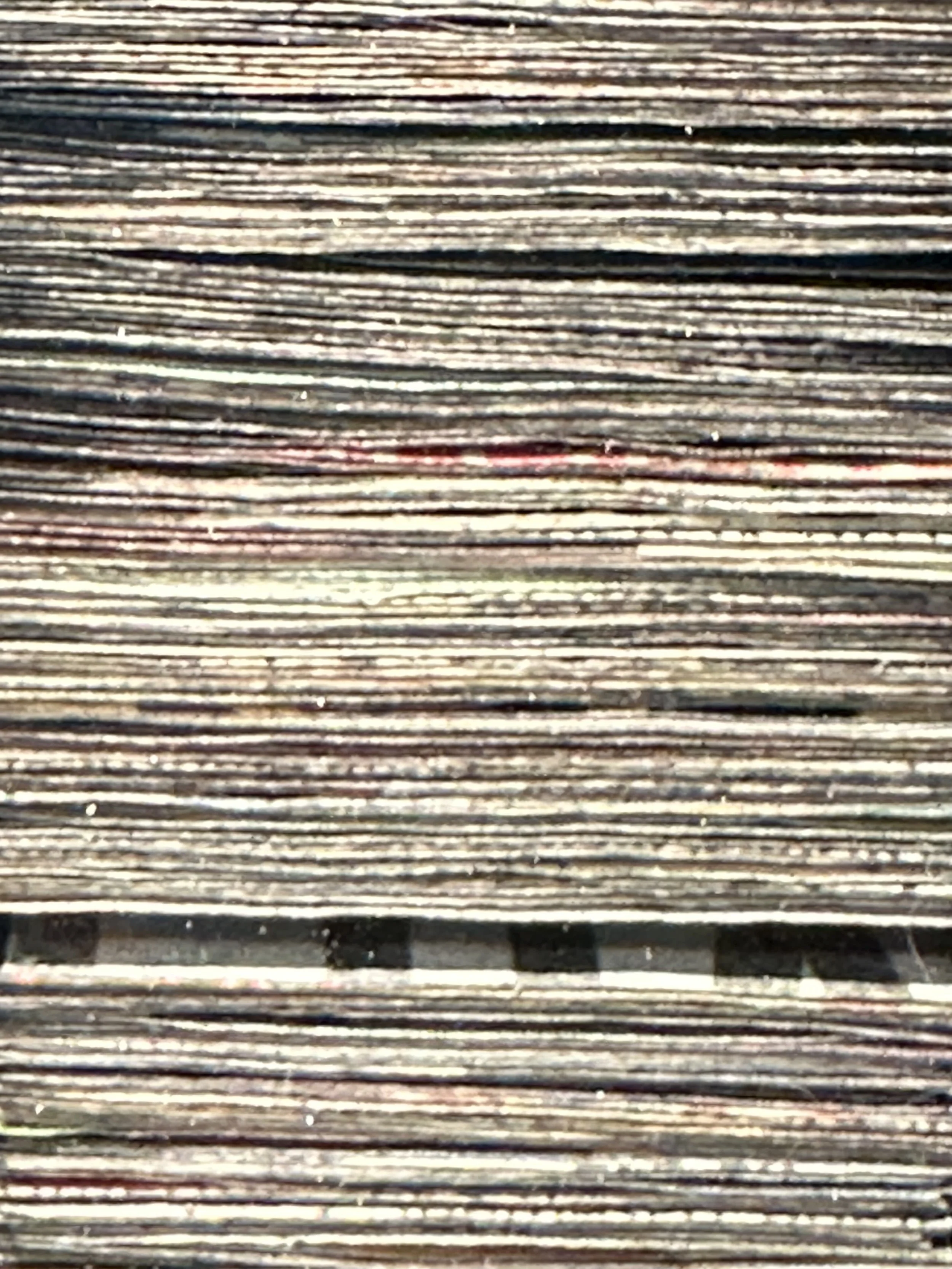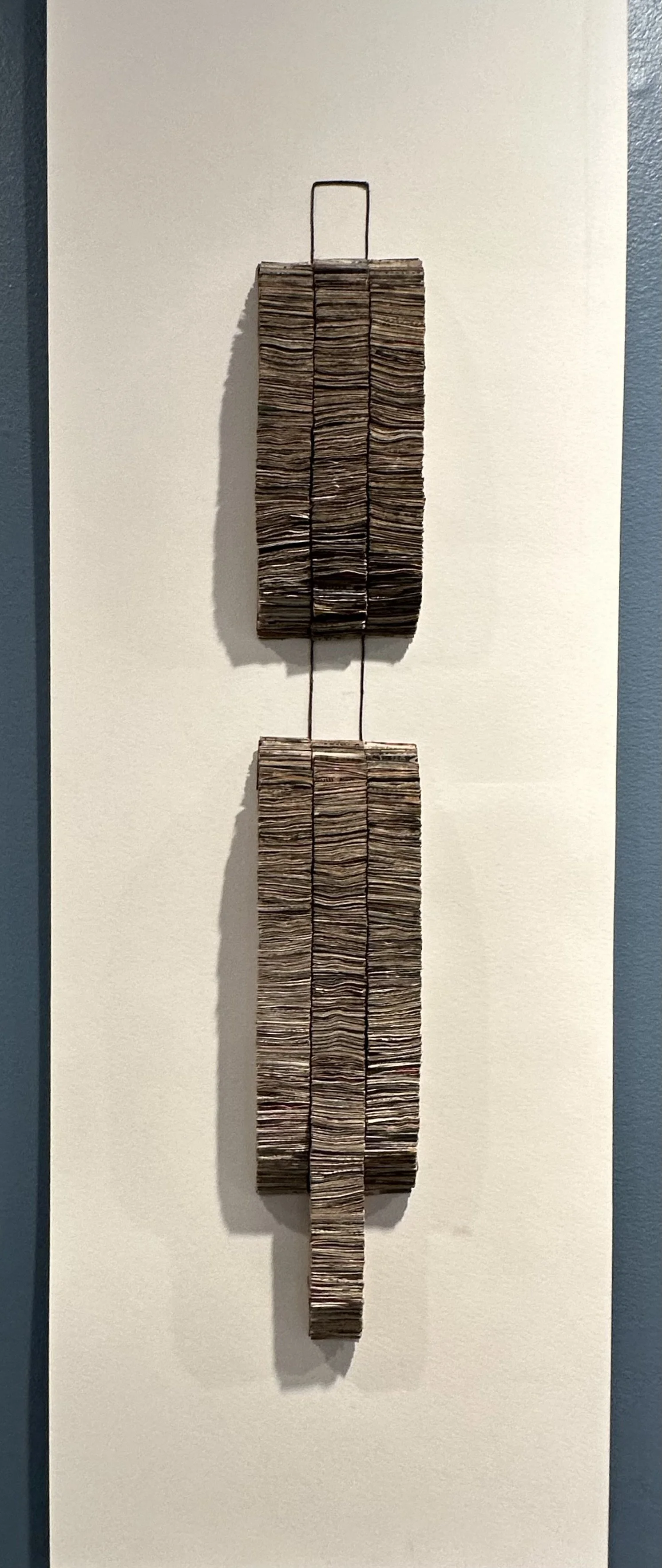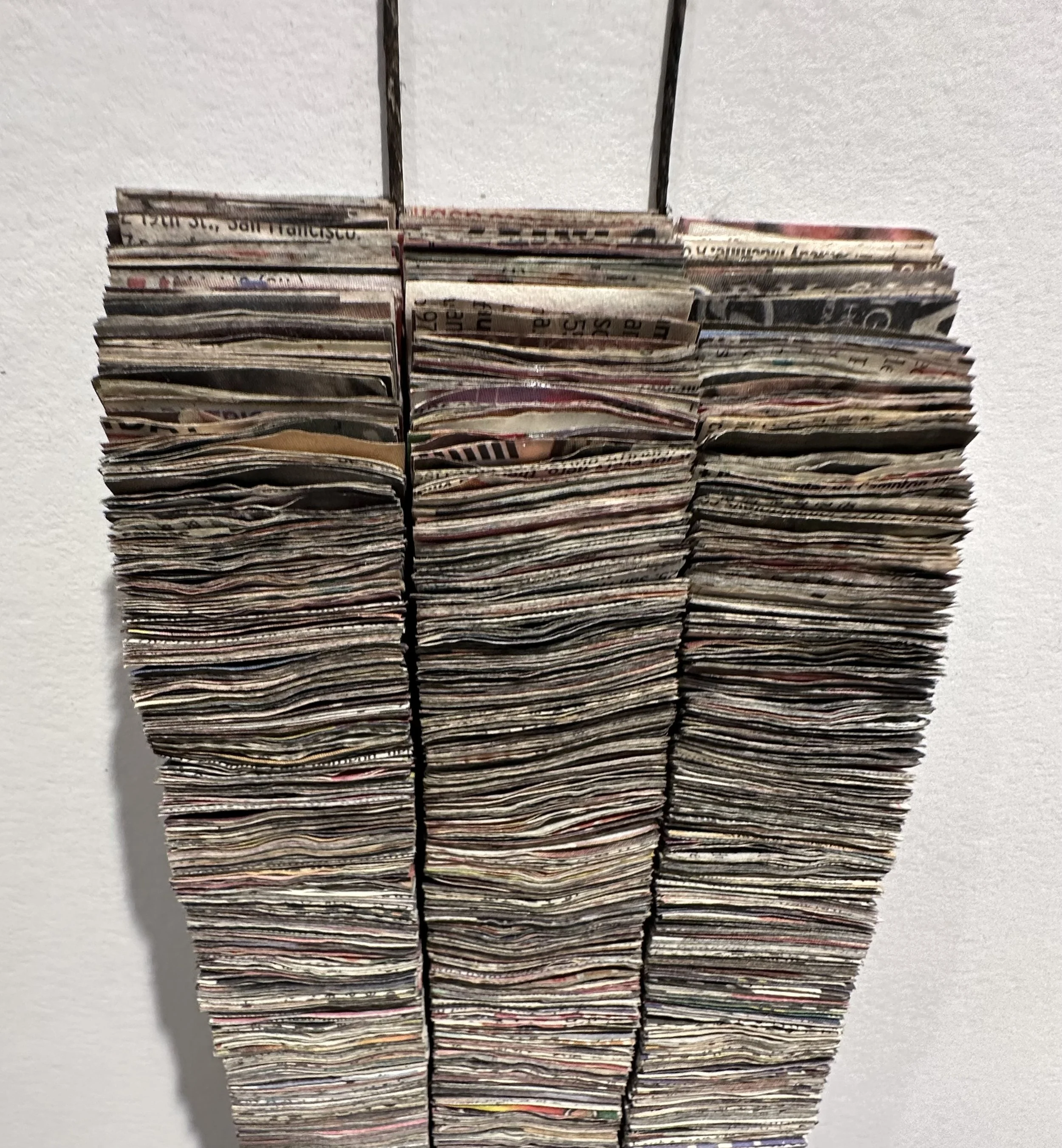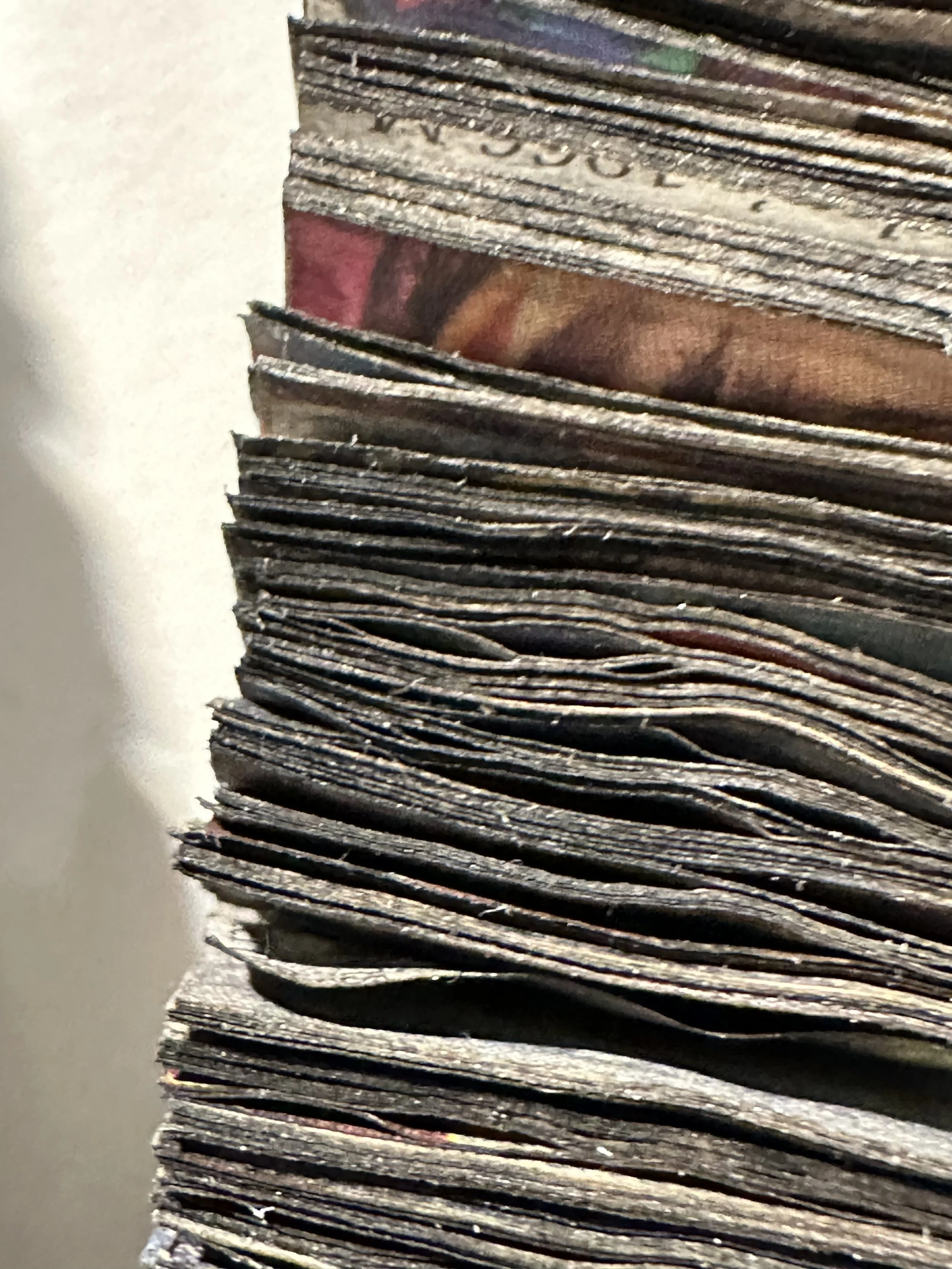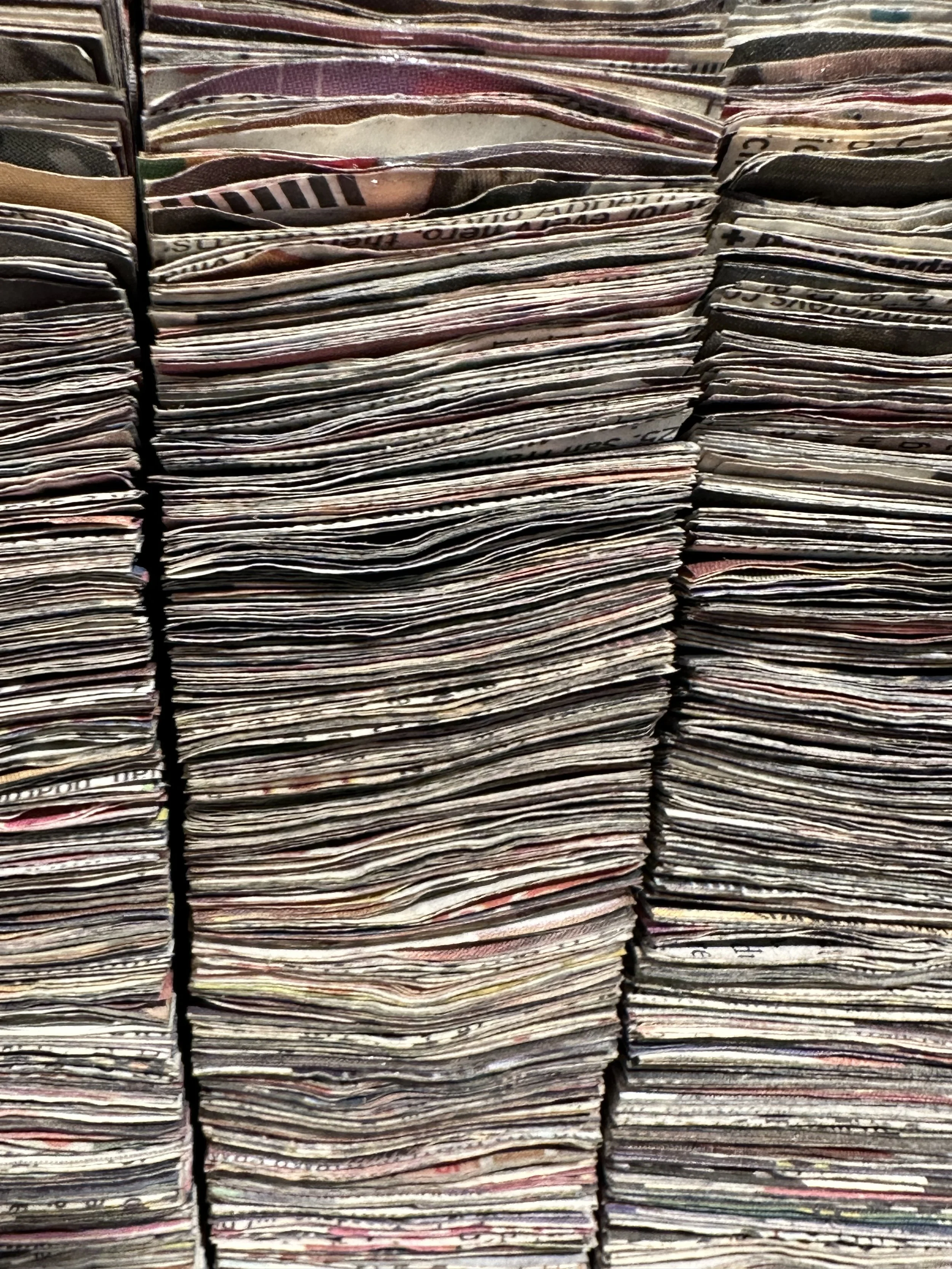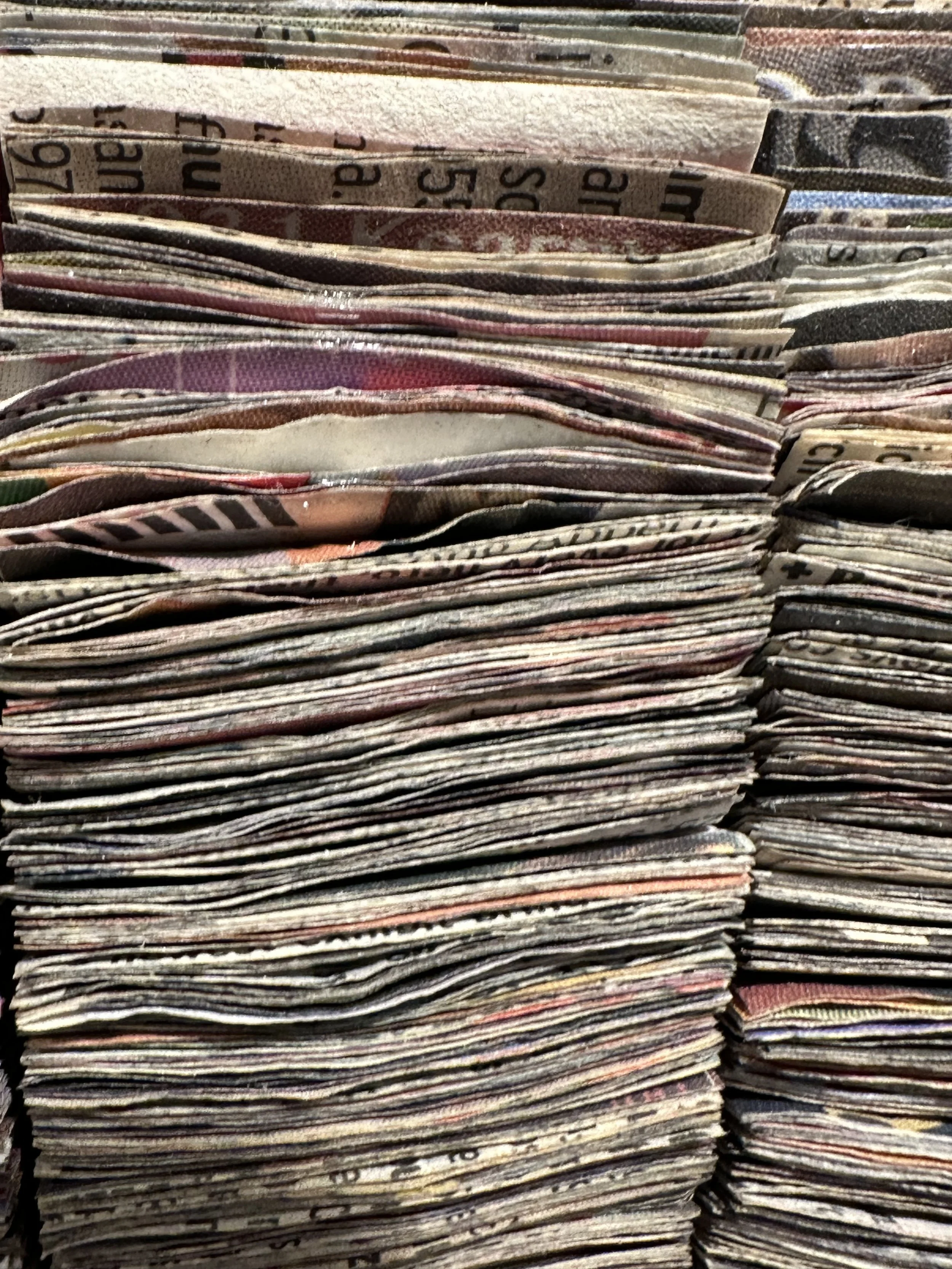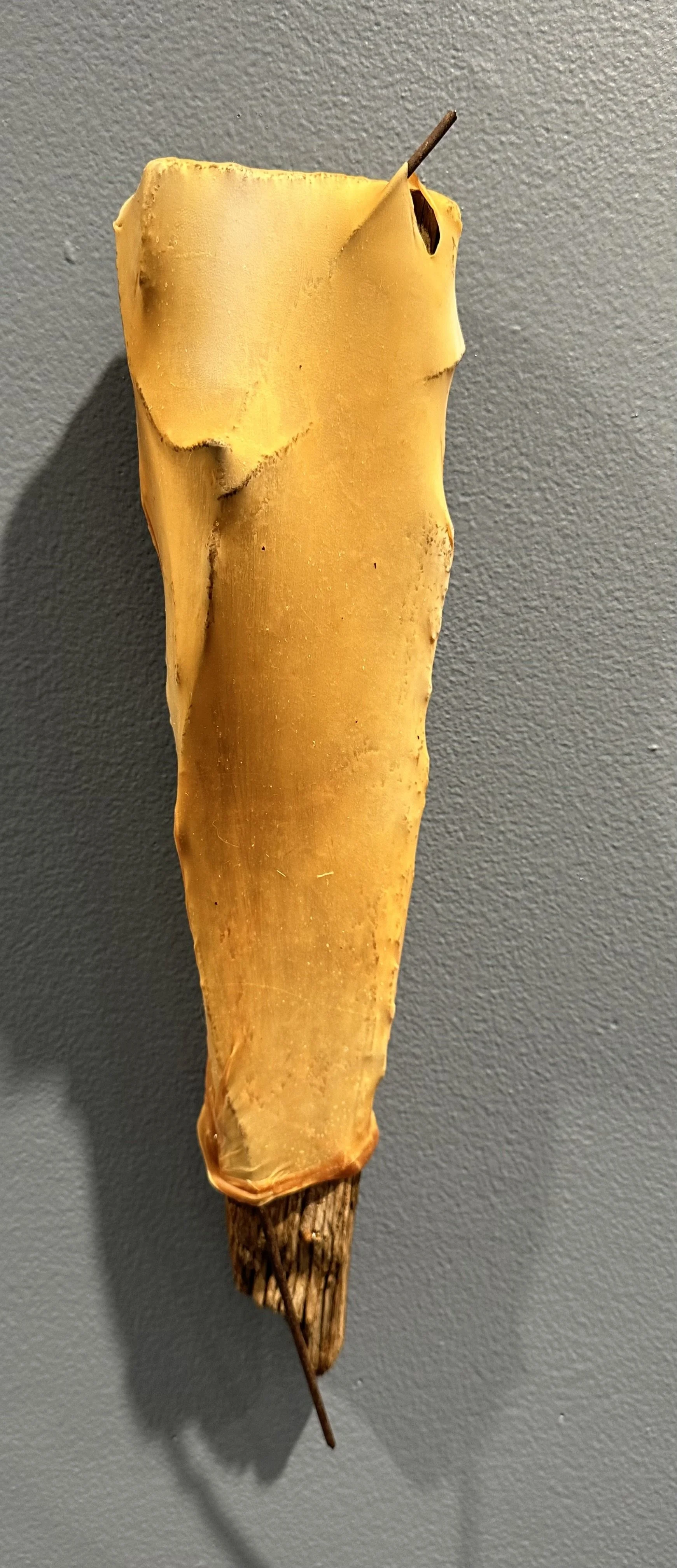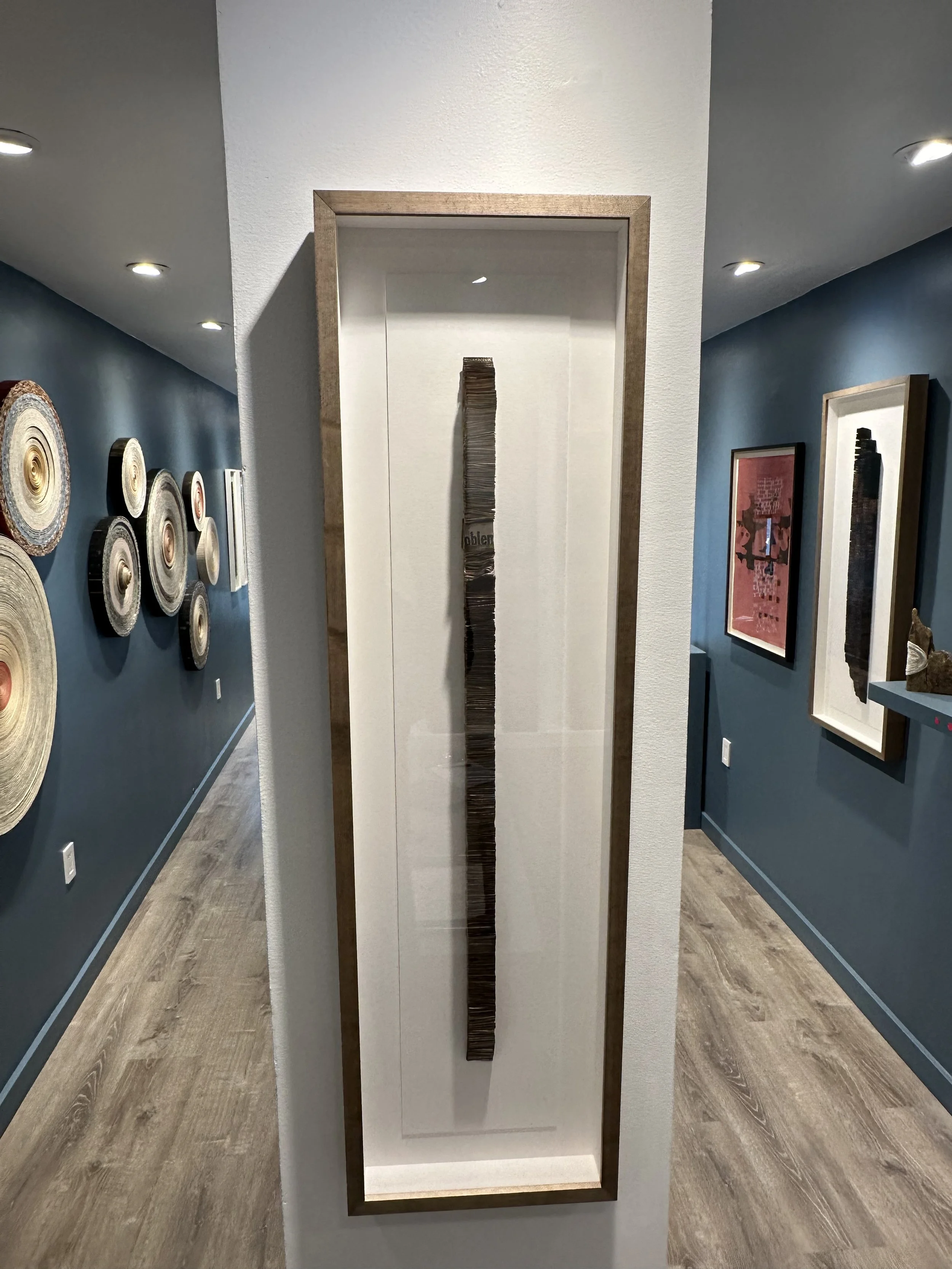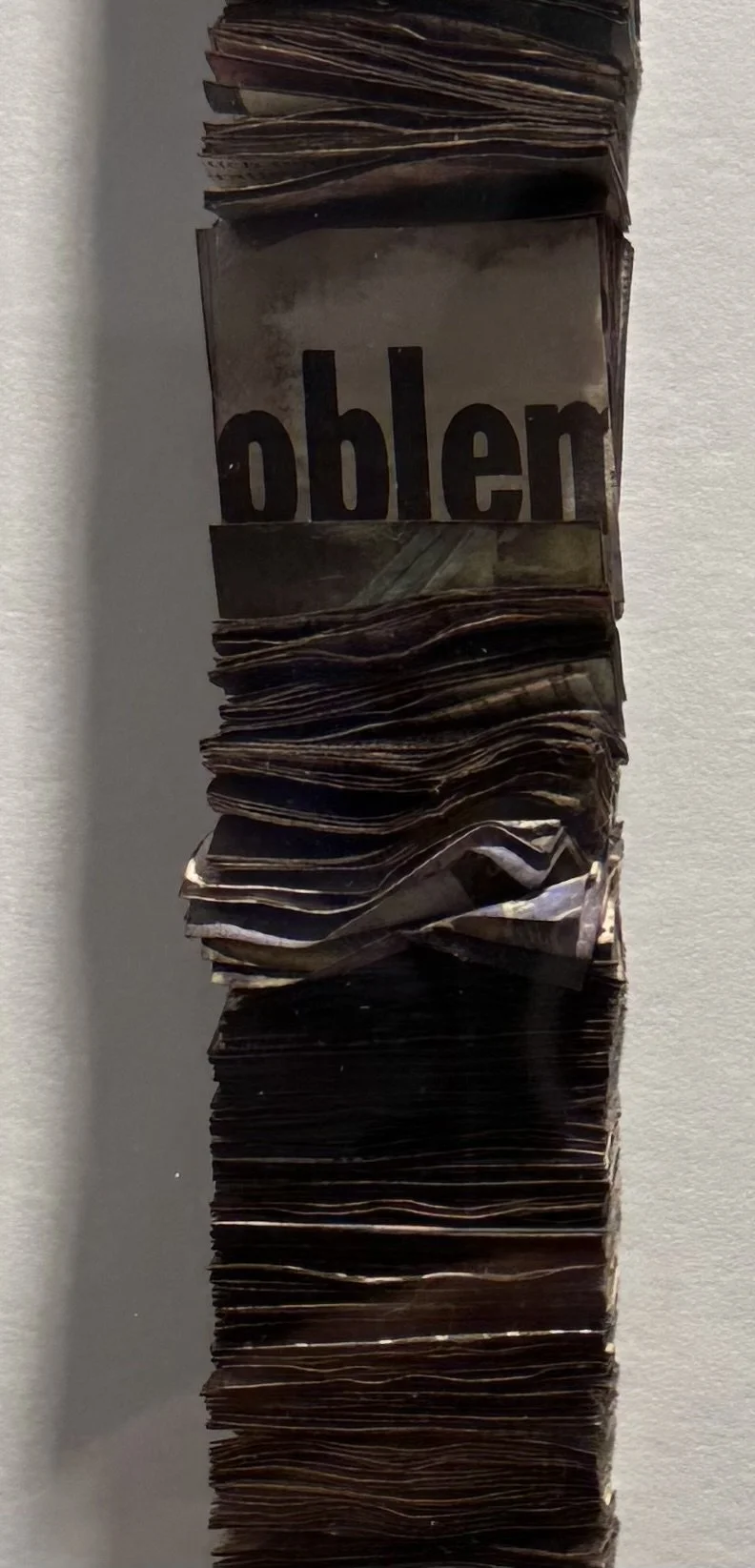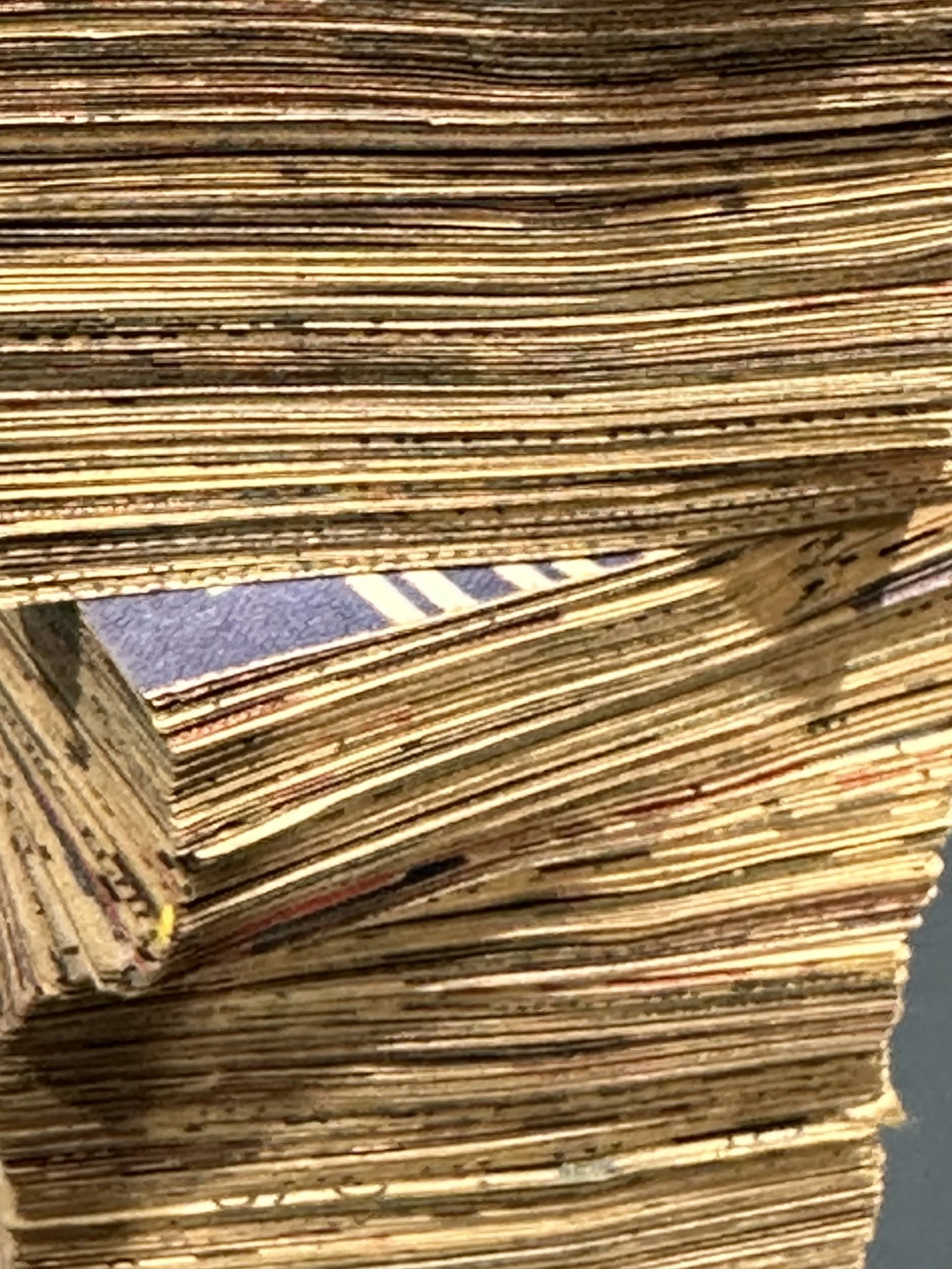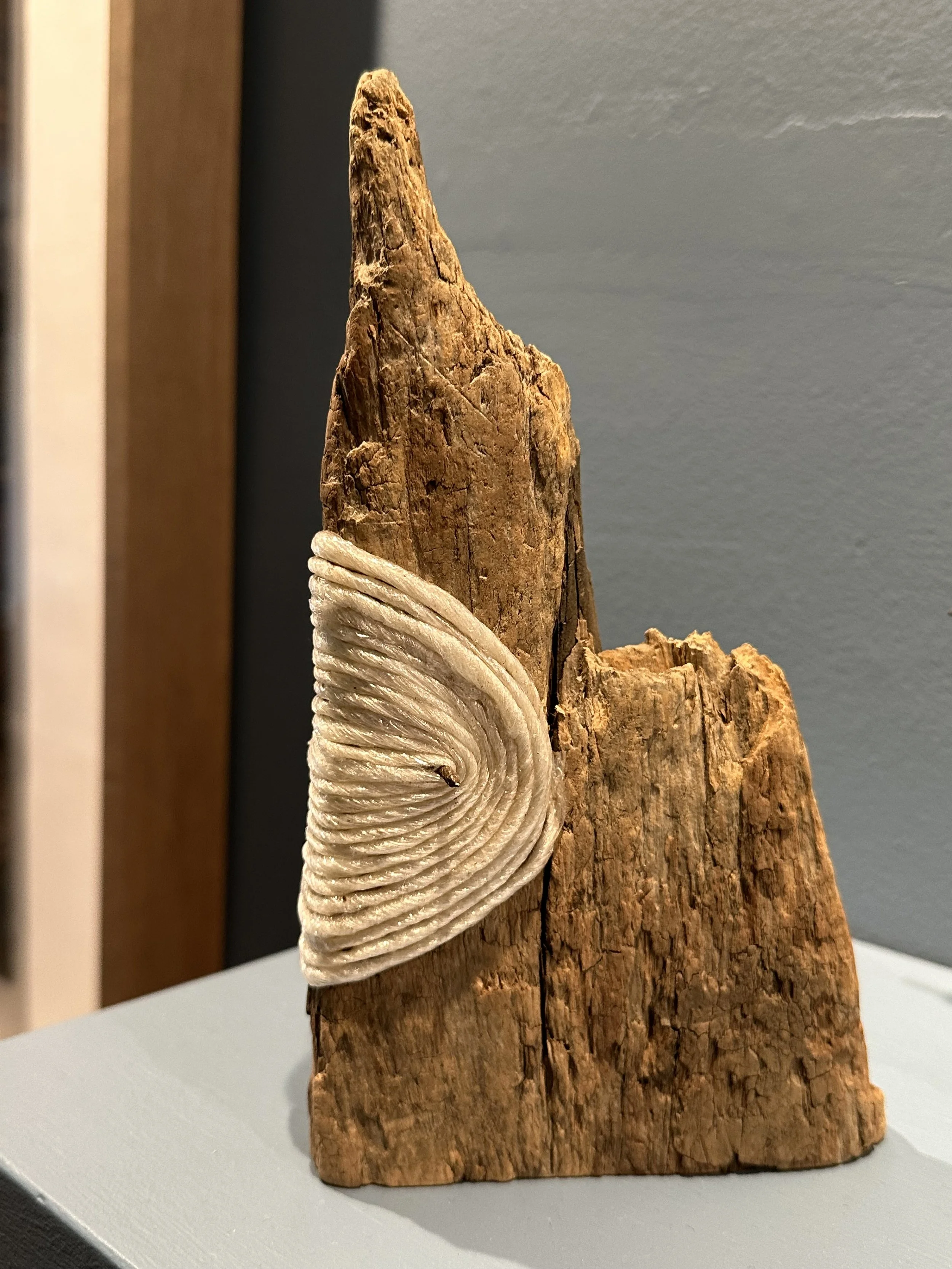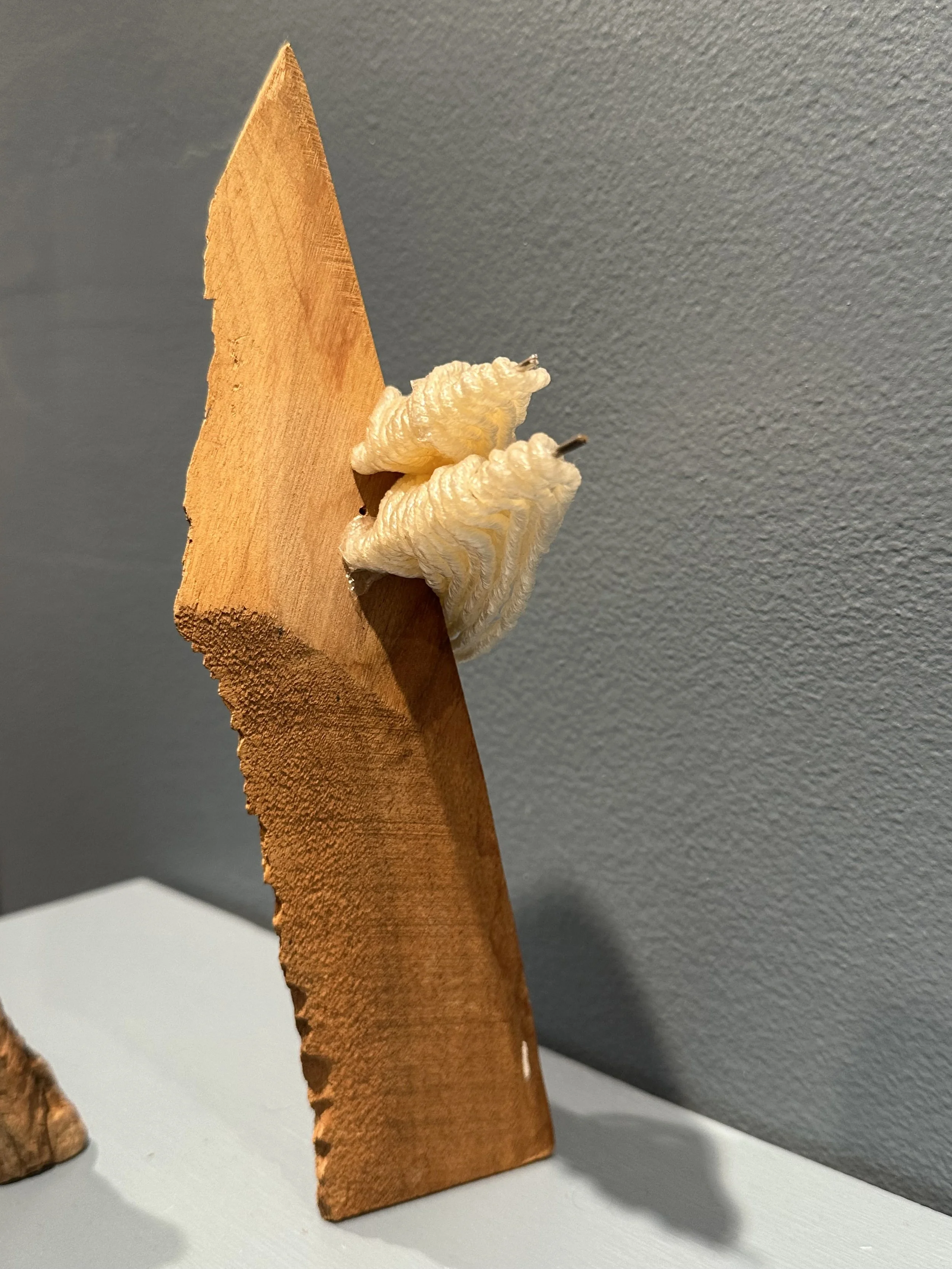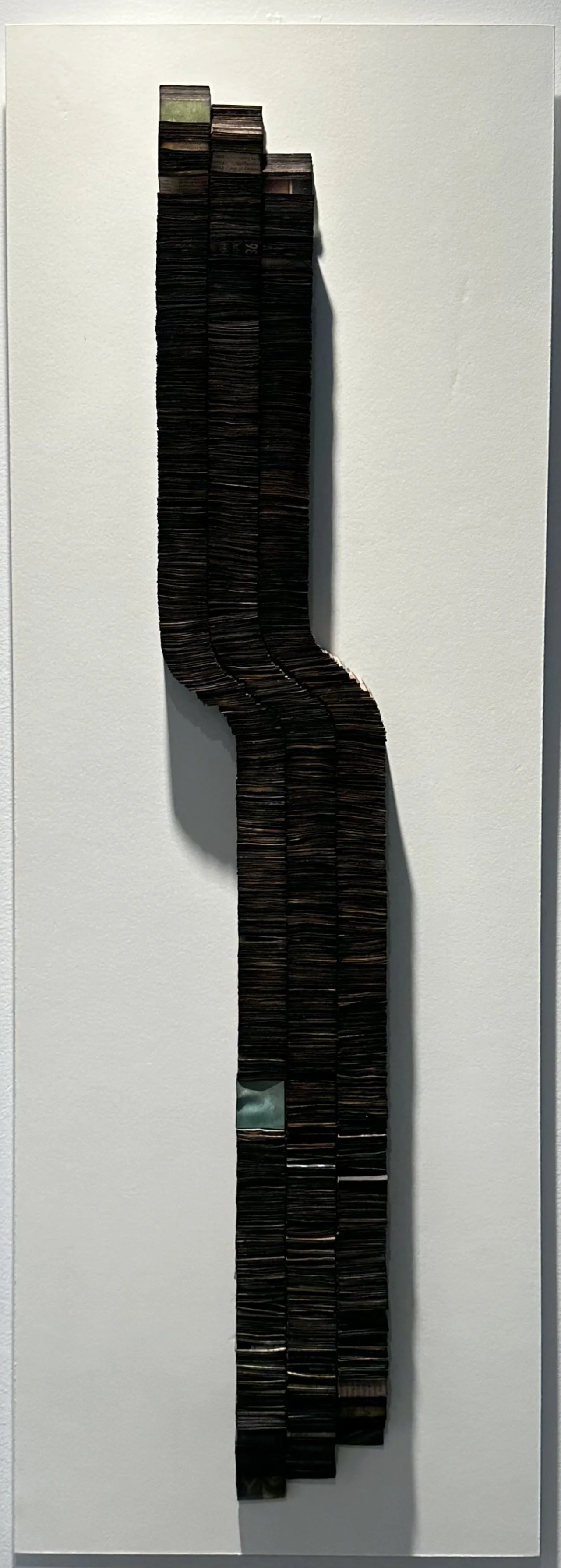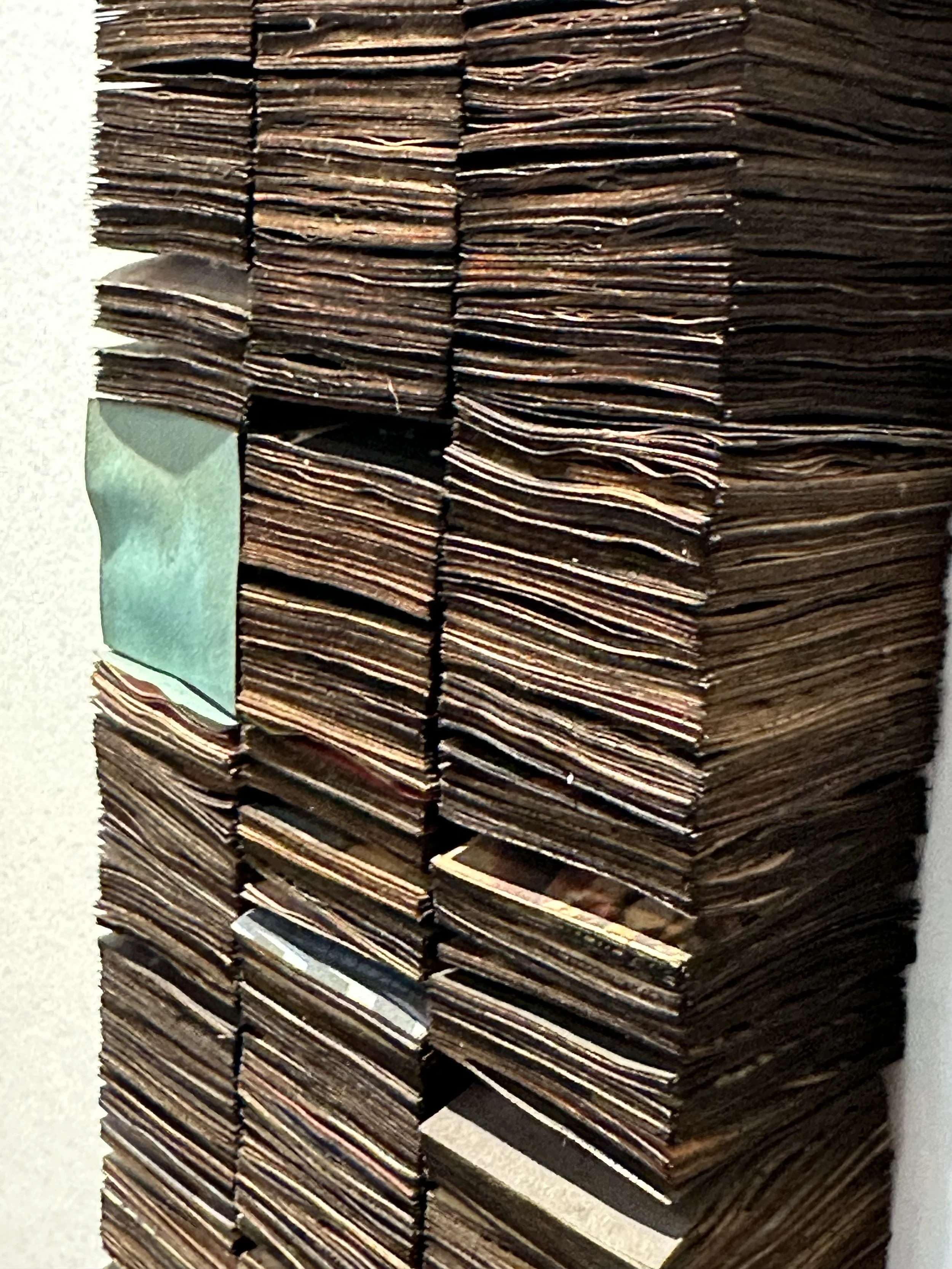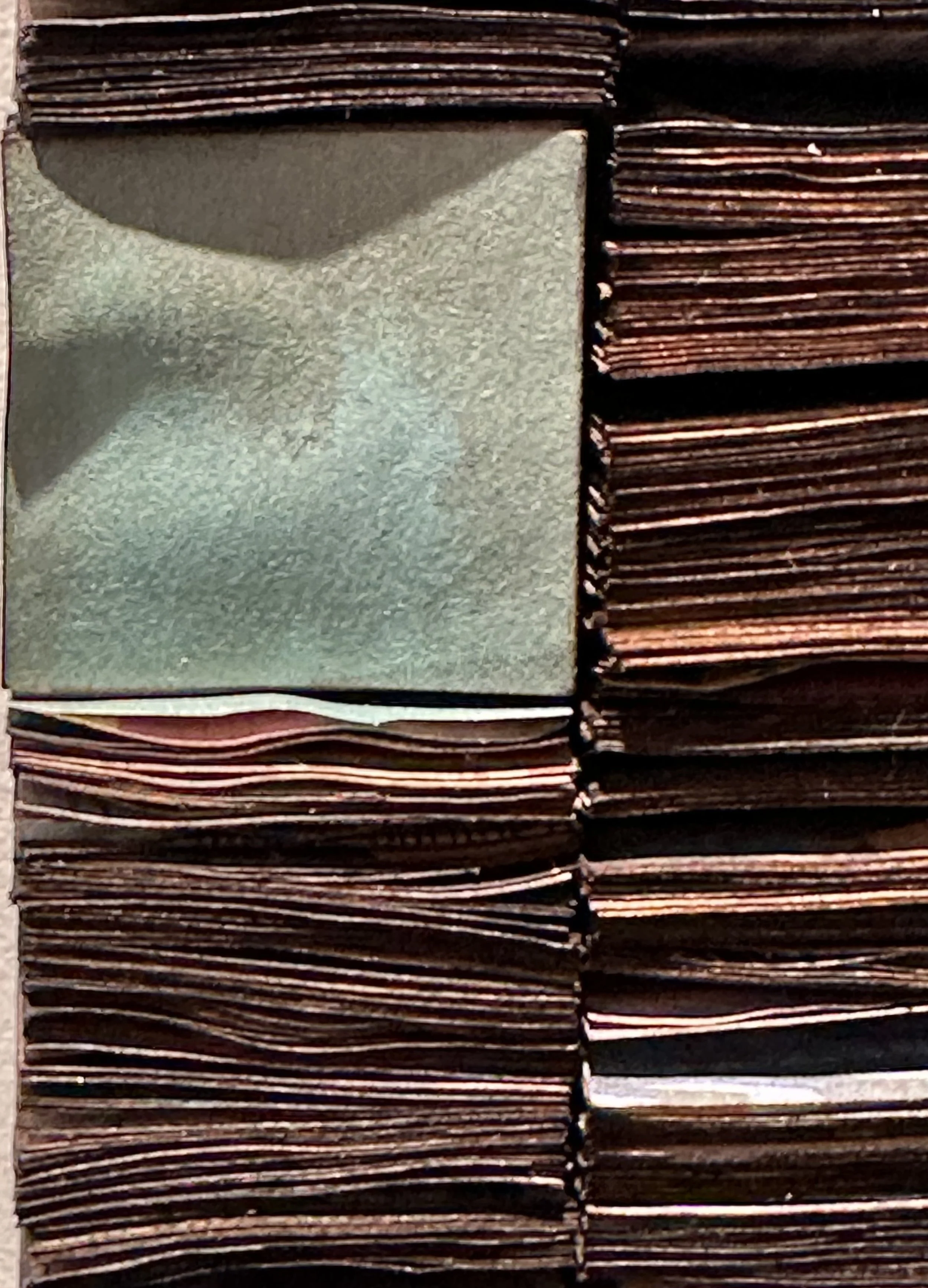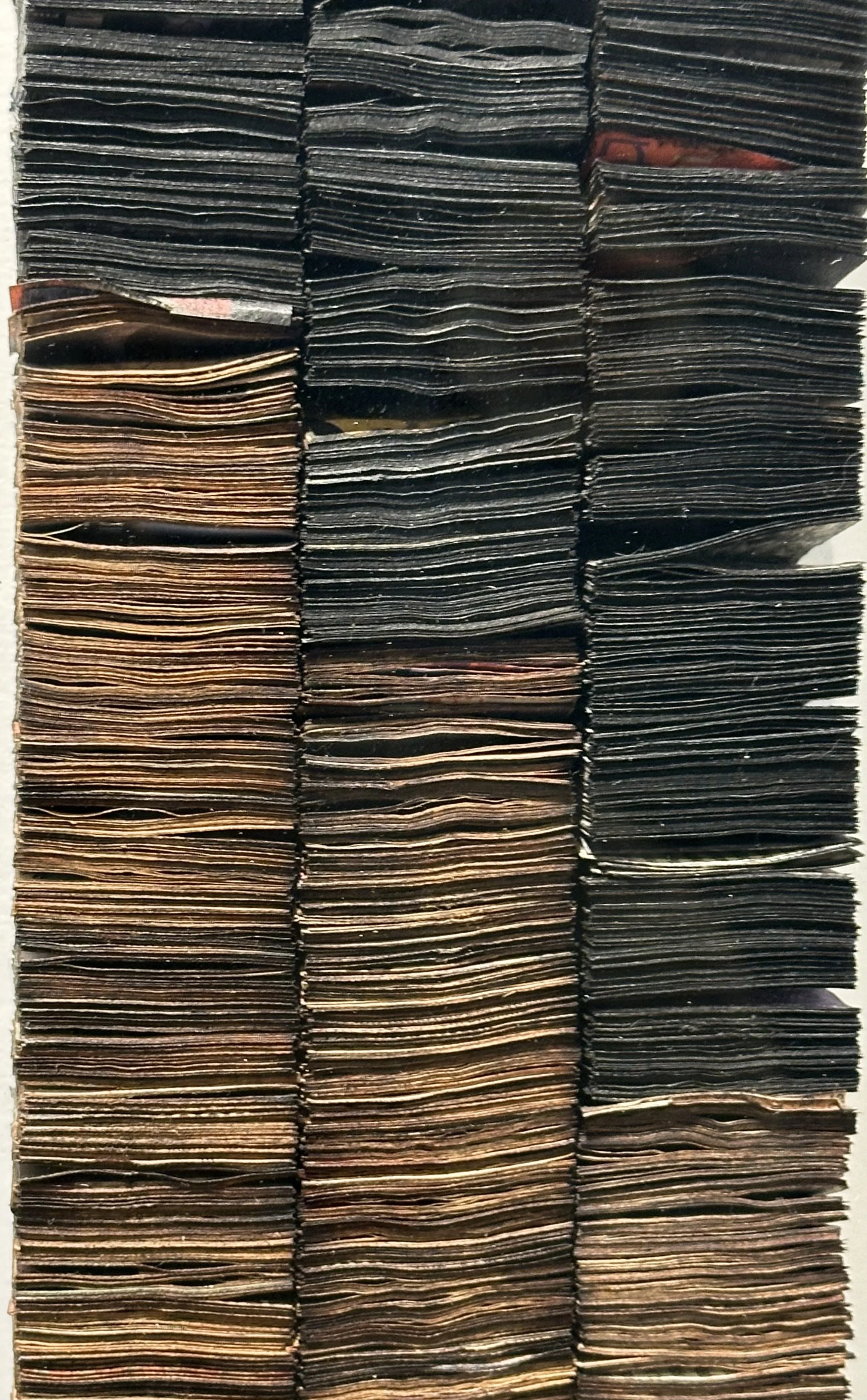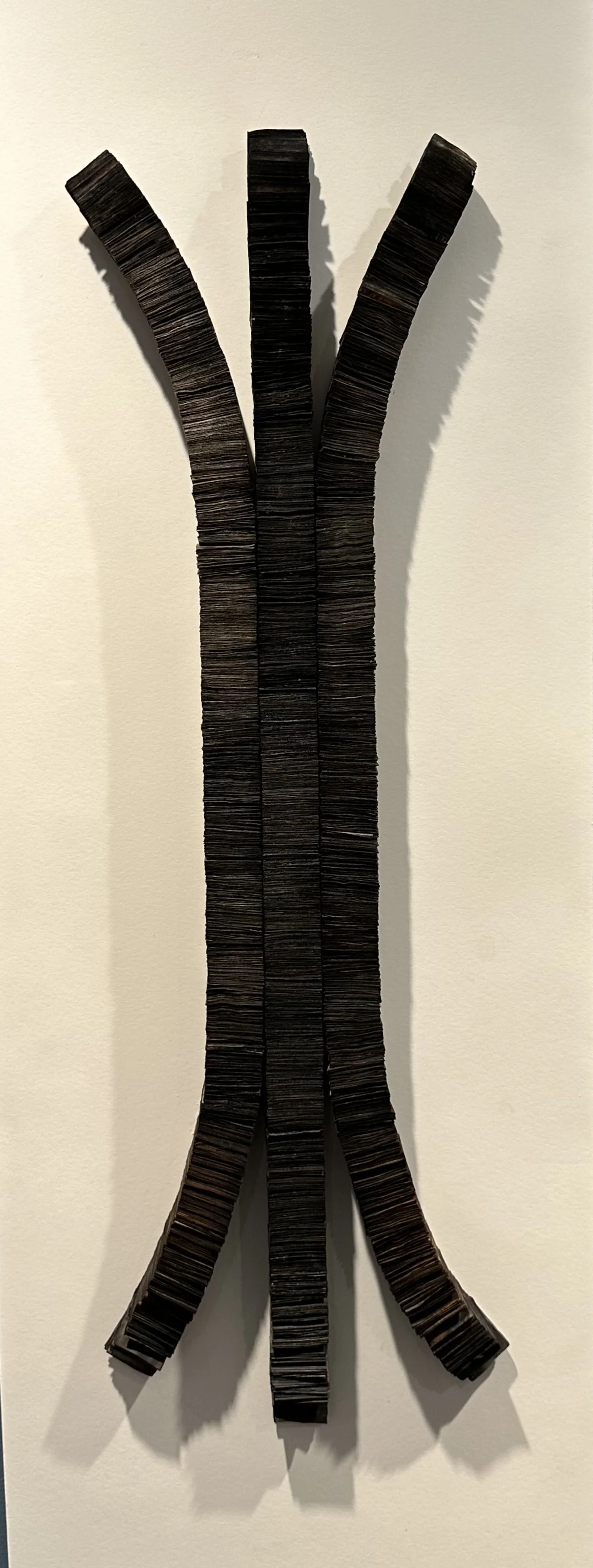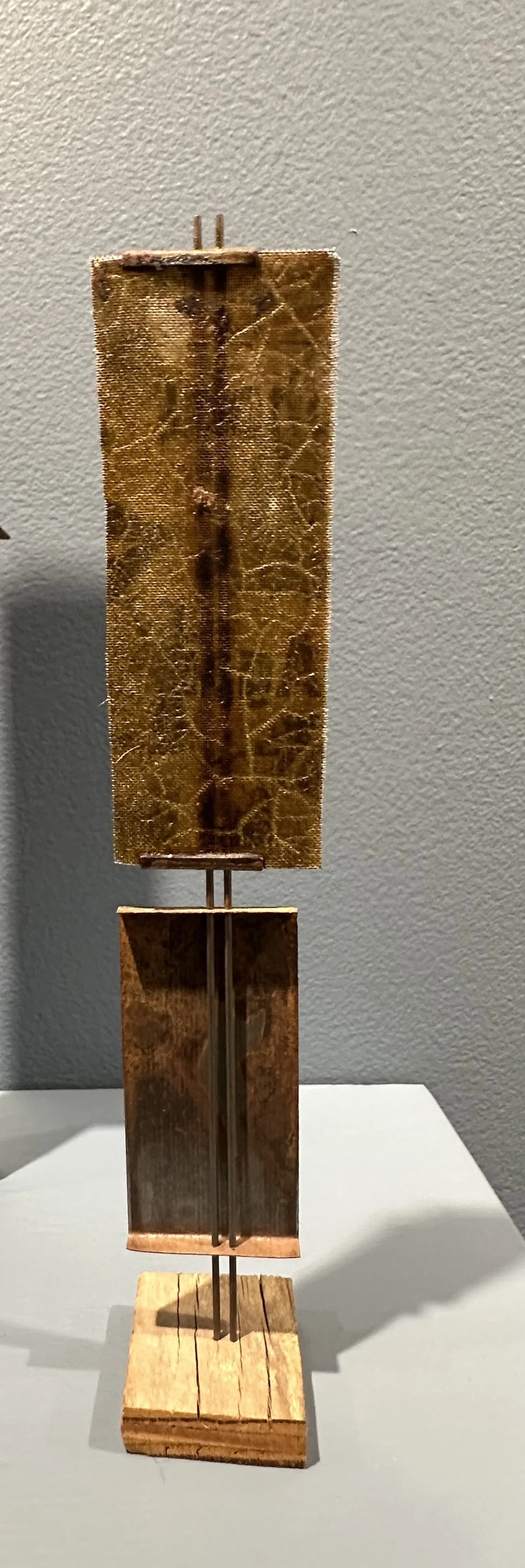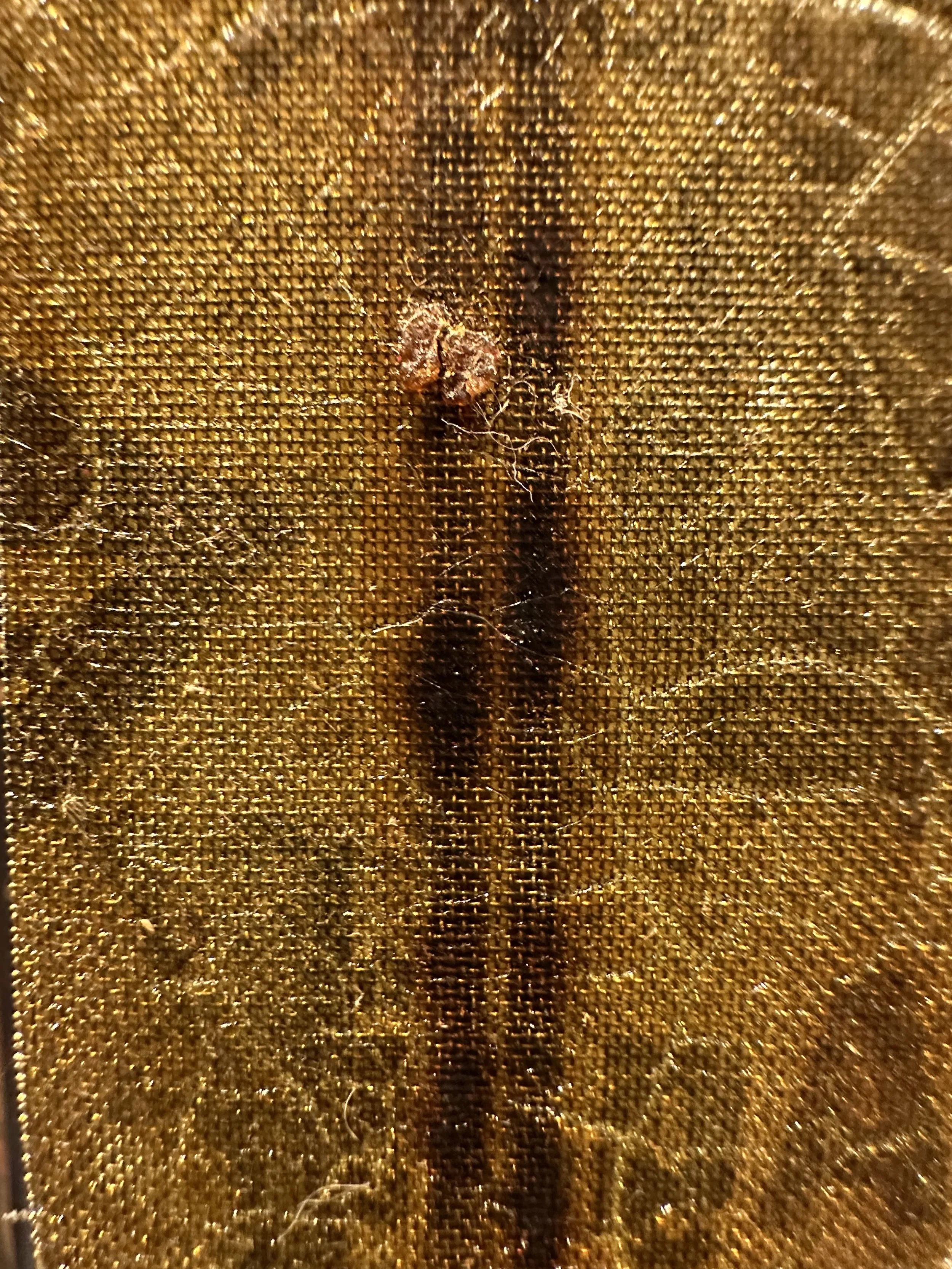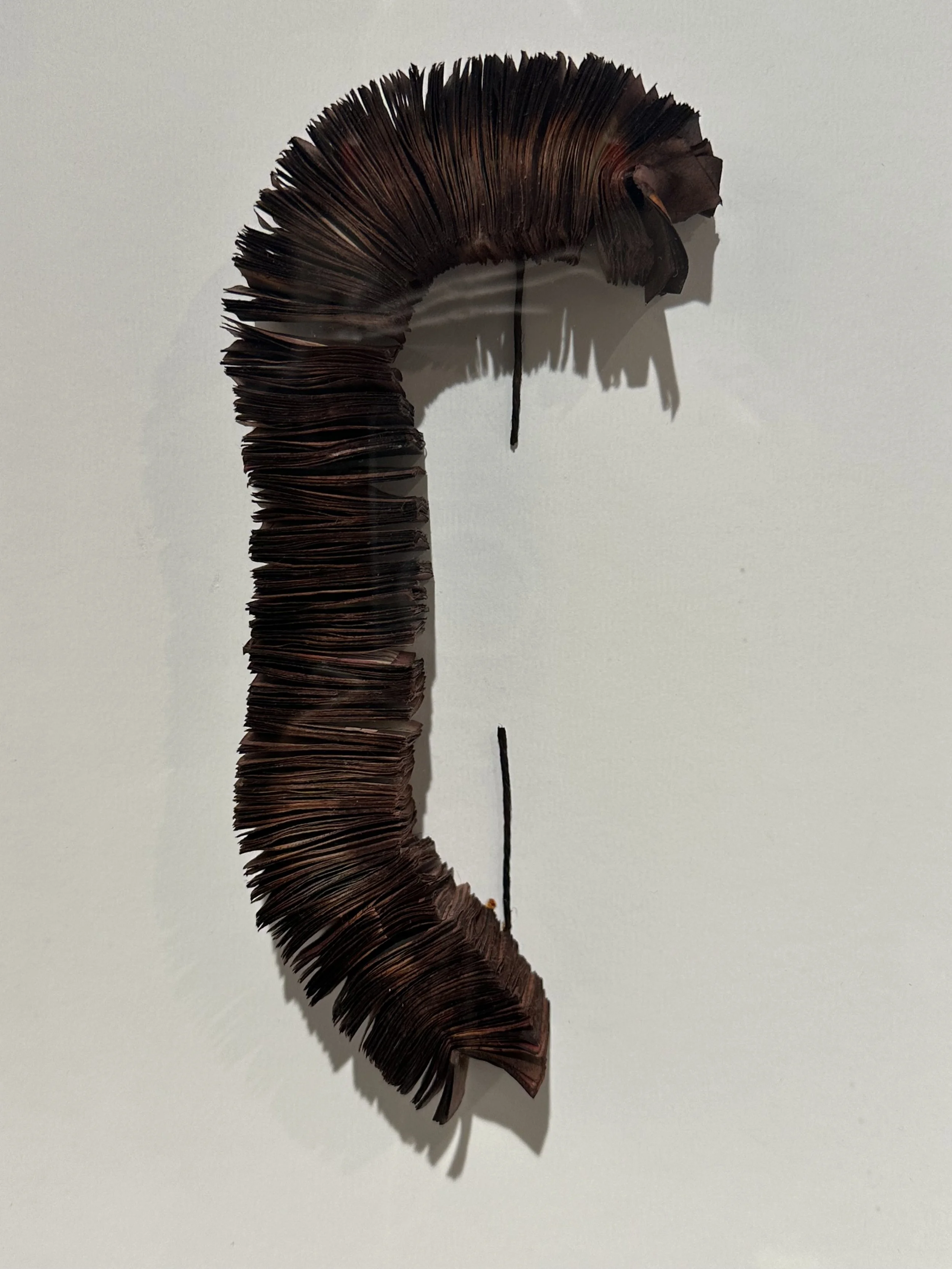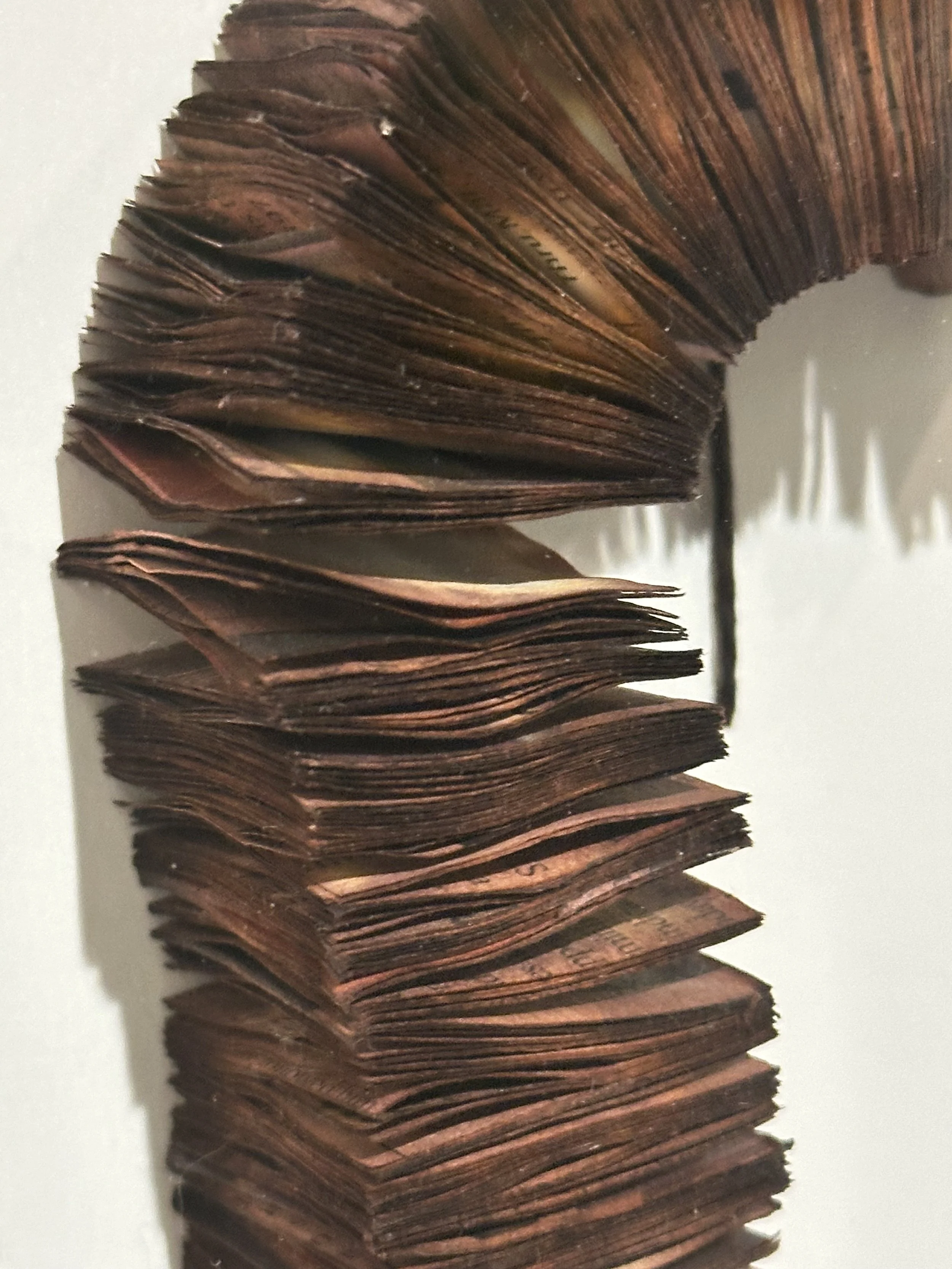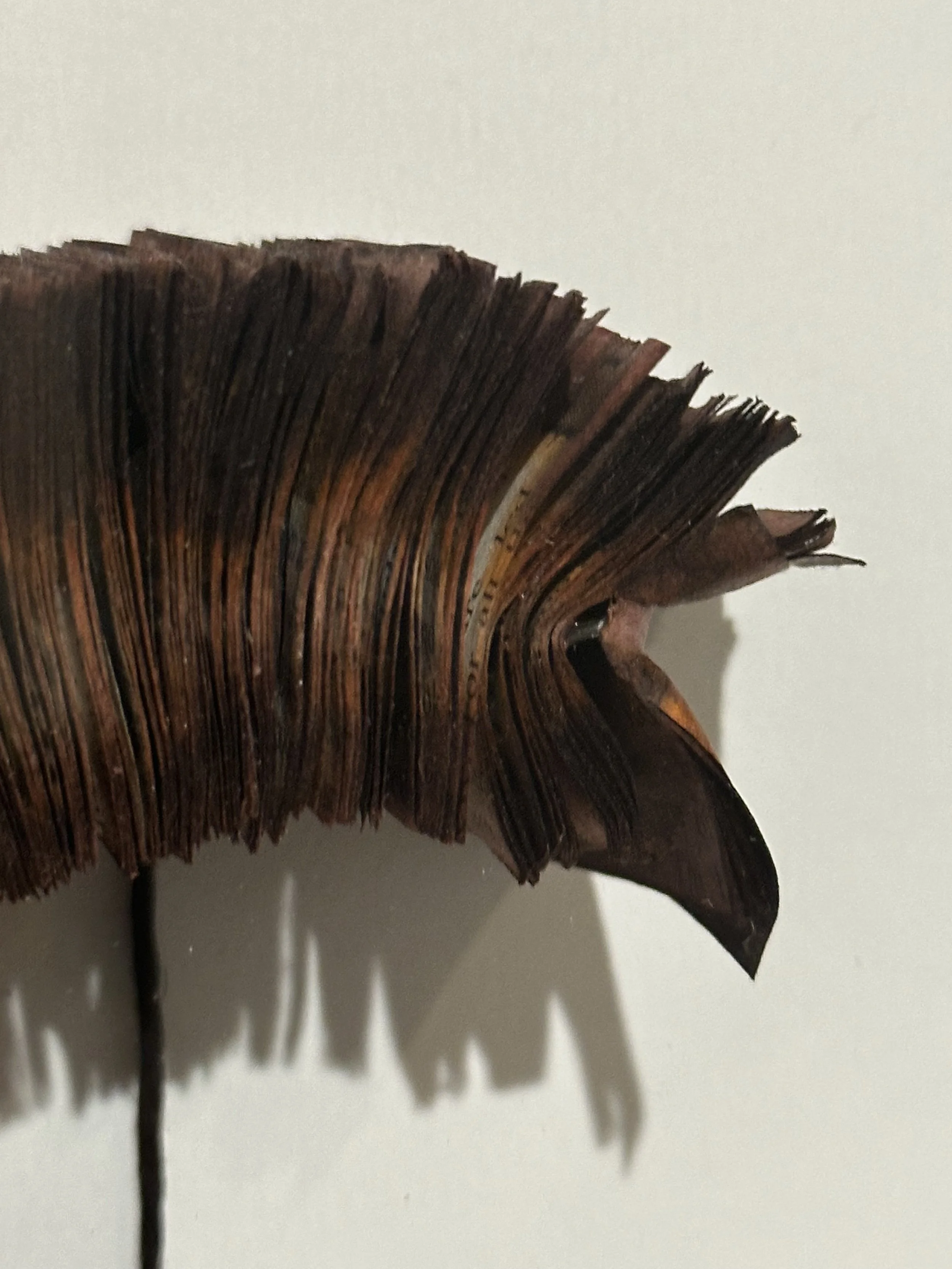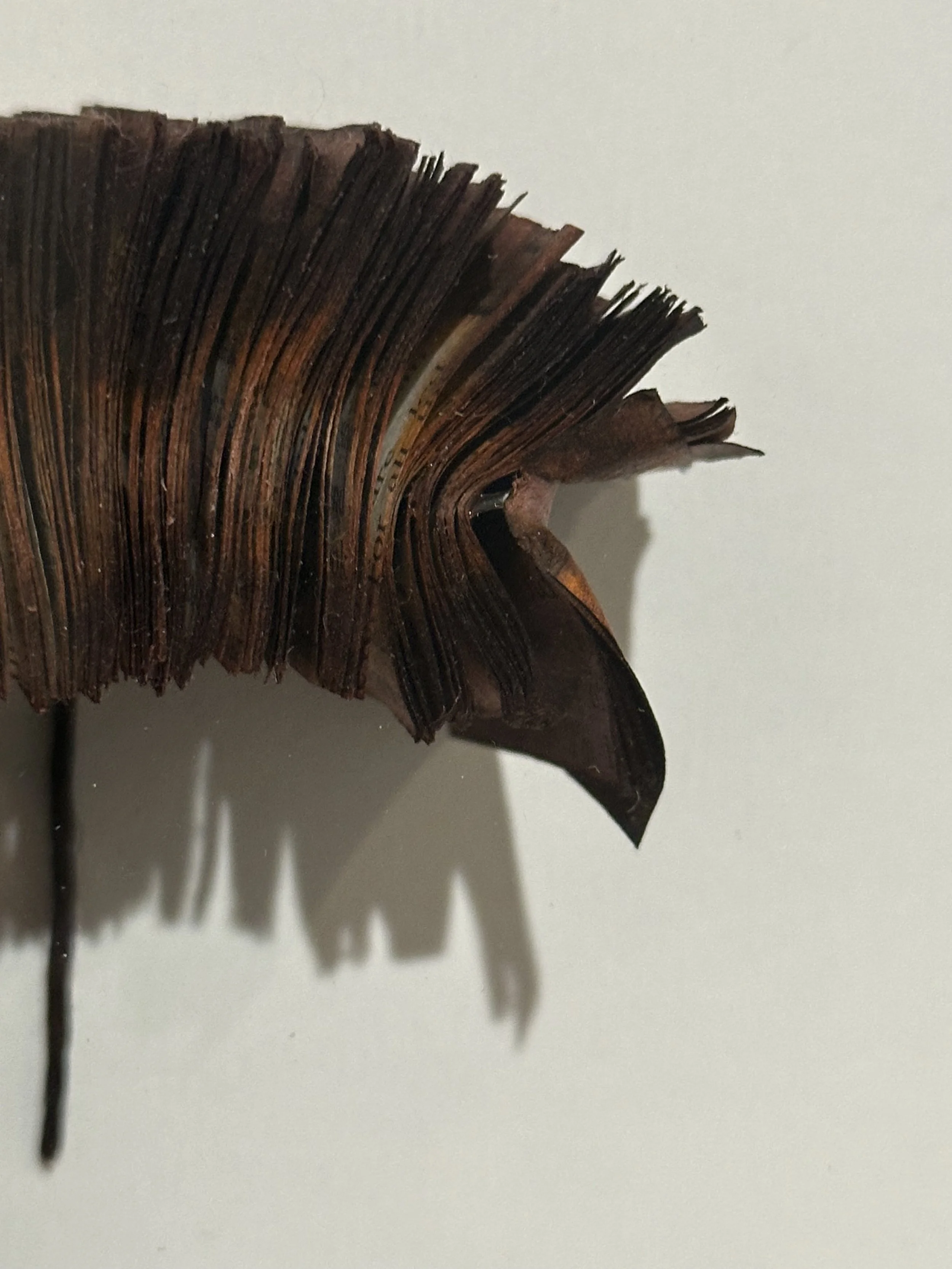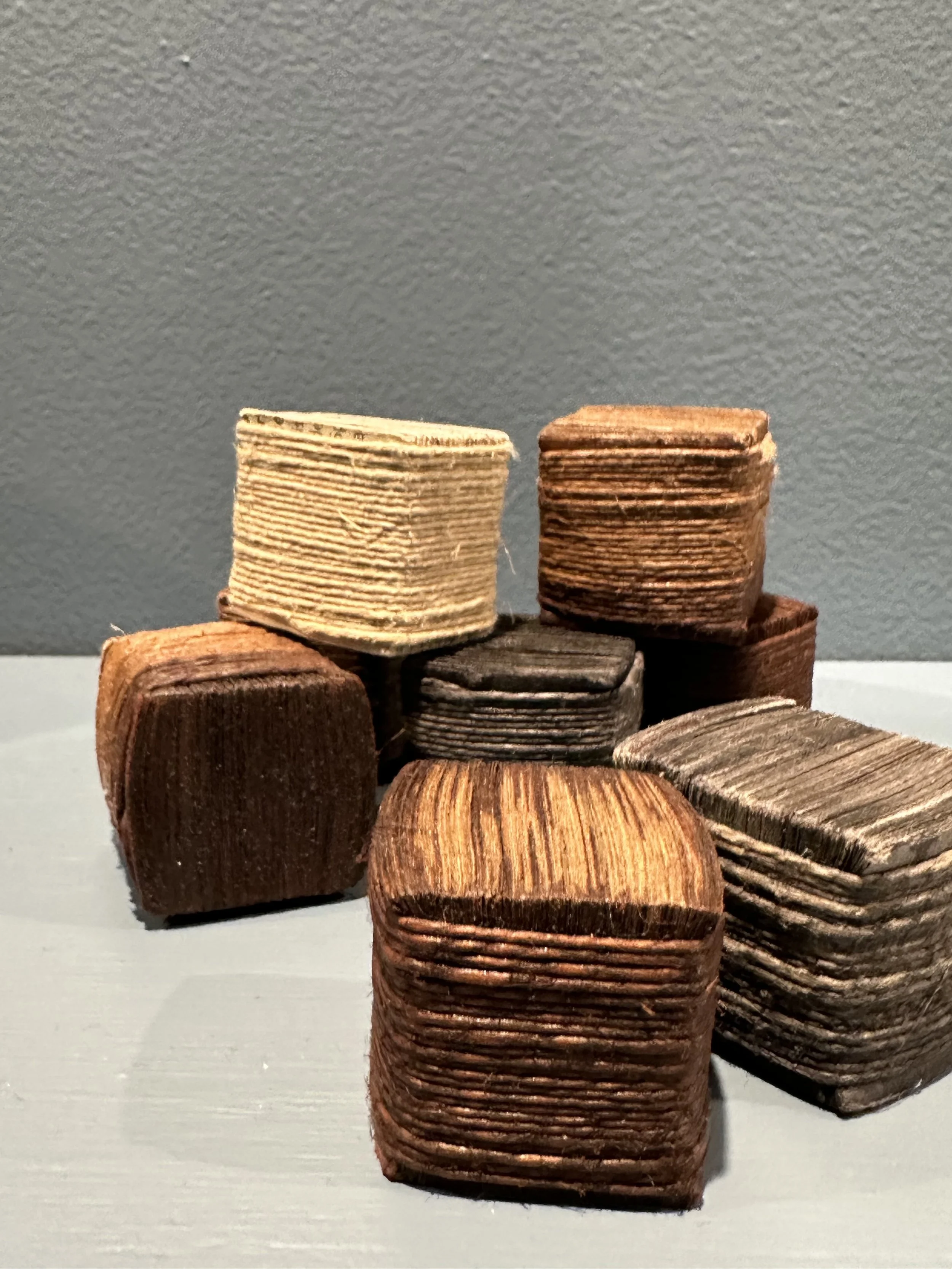WORD
Art Created from the Printed Text
Works by Byron B. Kim, Katie Murken, and
Mario Laplante
Photographs of. the Installation, Opening and Artists’ Talk
Photos by staff, Al Simball, and Castro ArtWalk Photographer, Brigitte Chanel
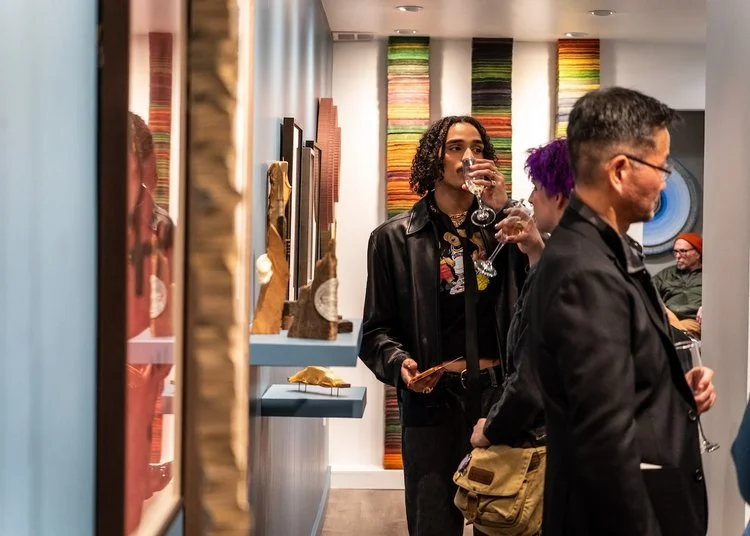
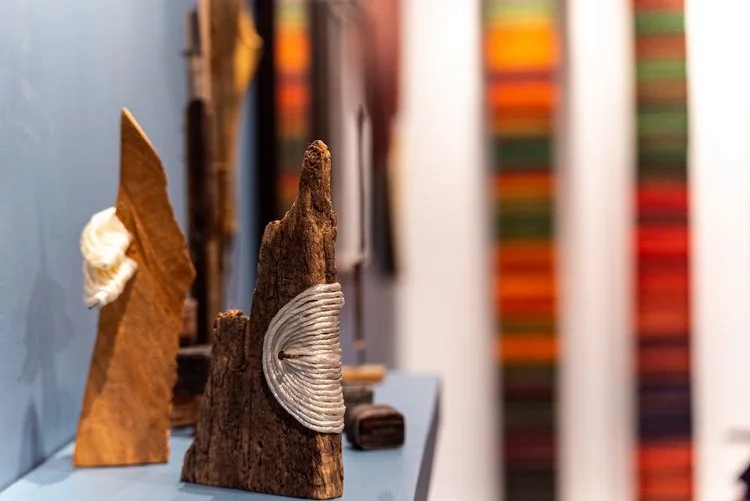
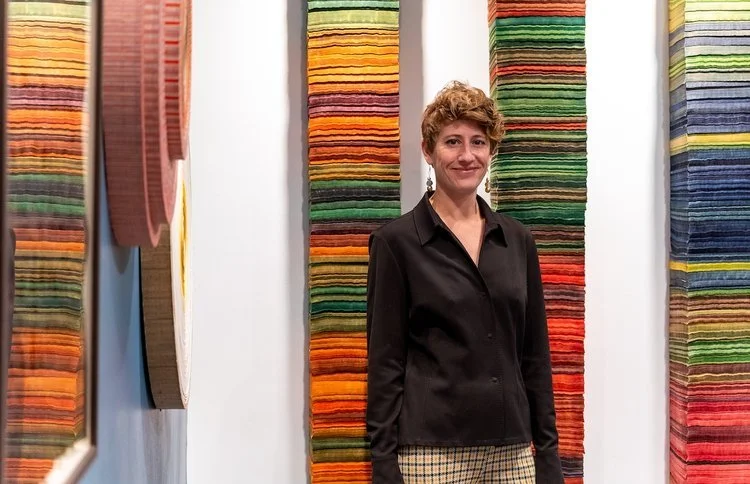
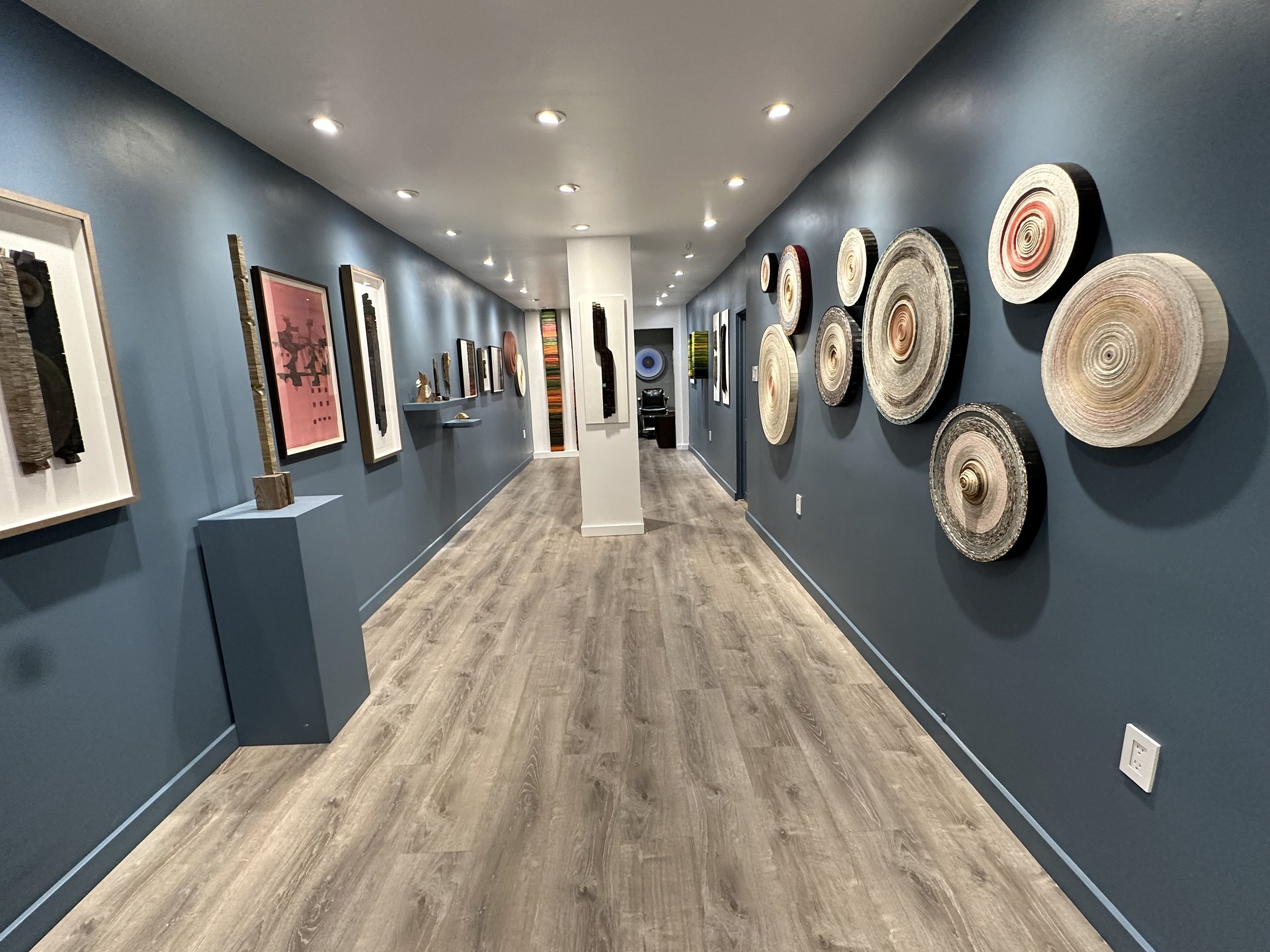
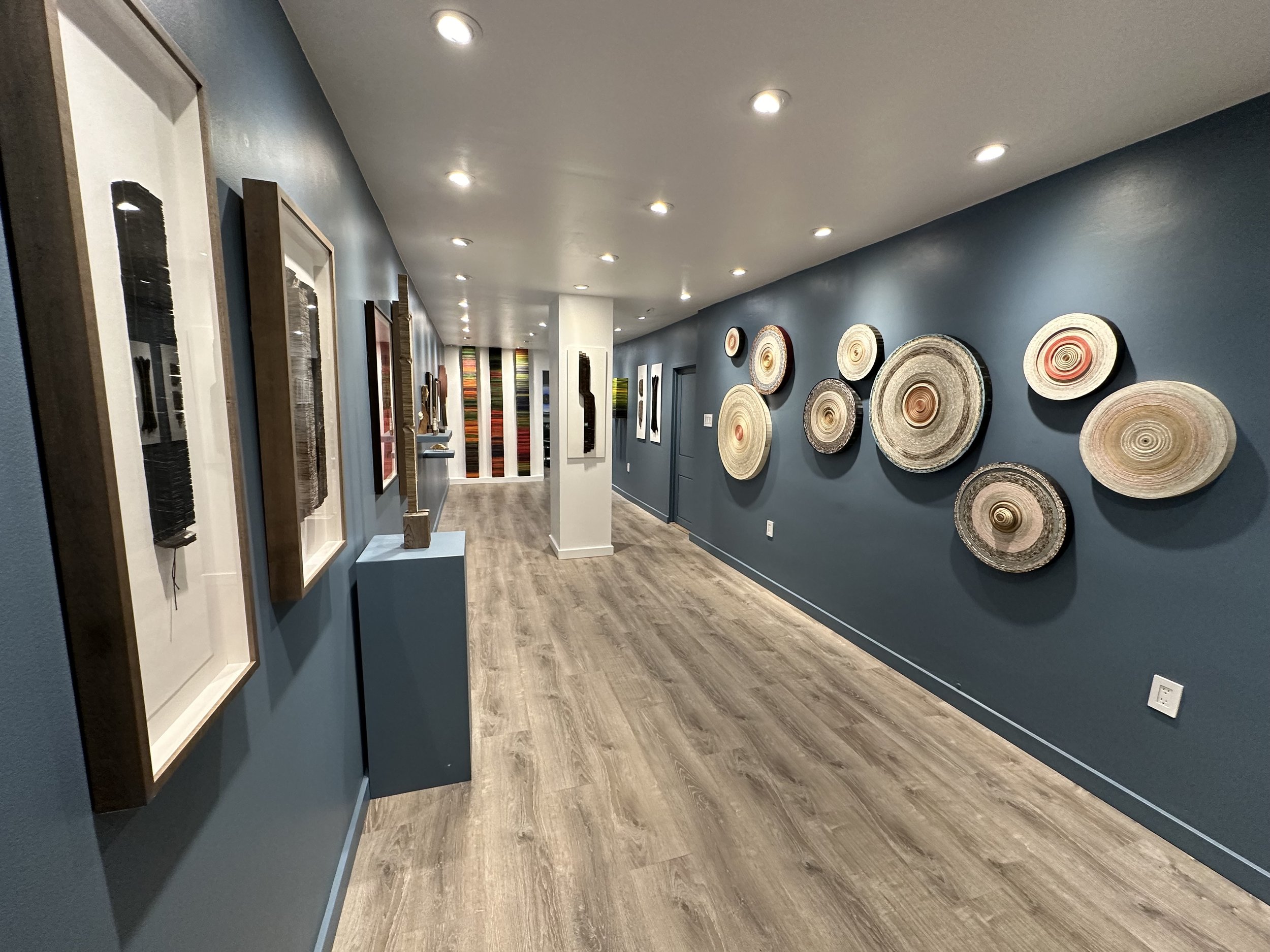
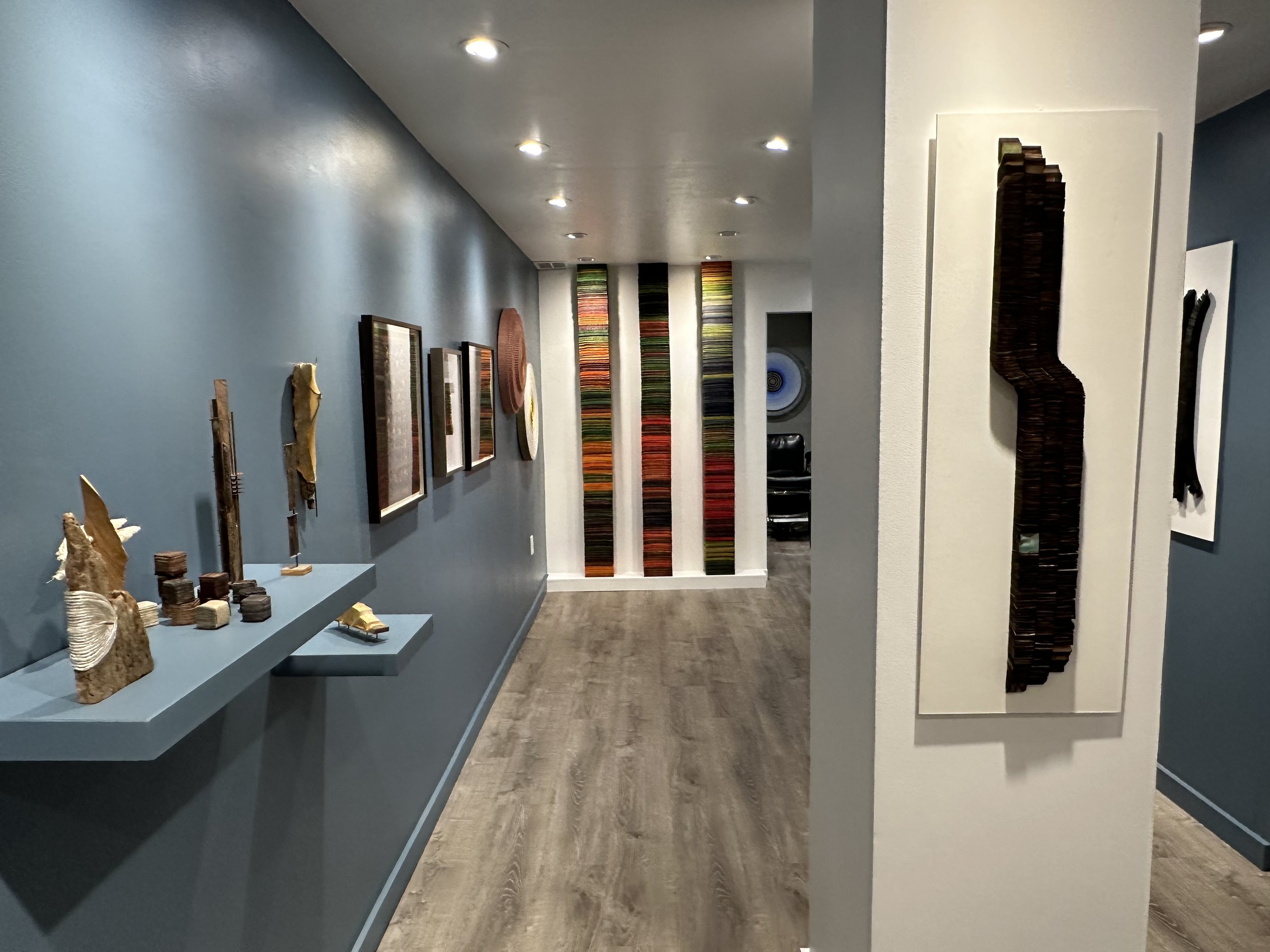
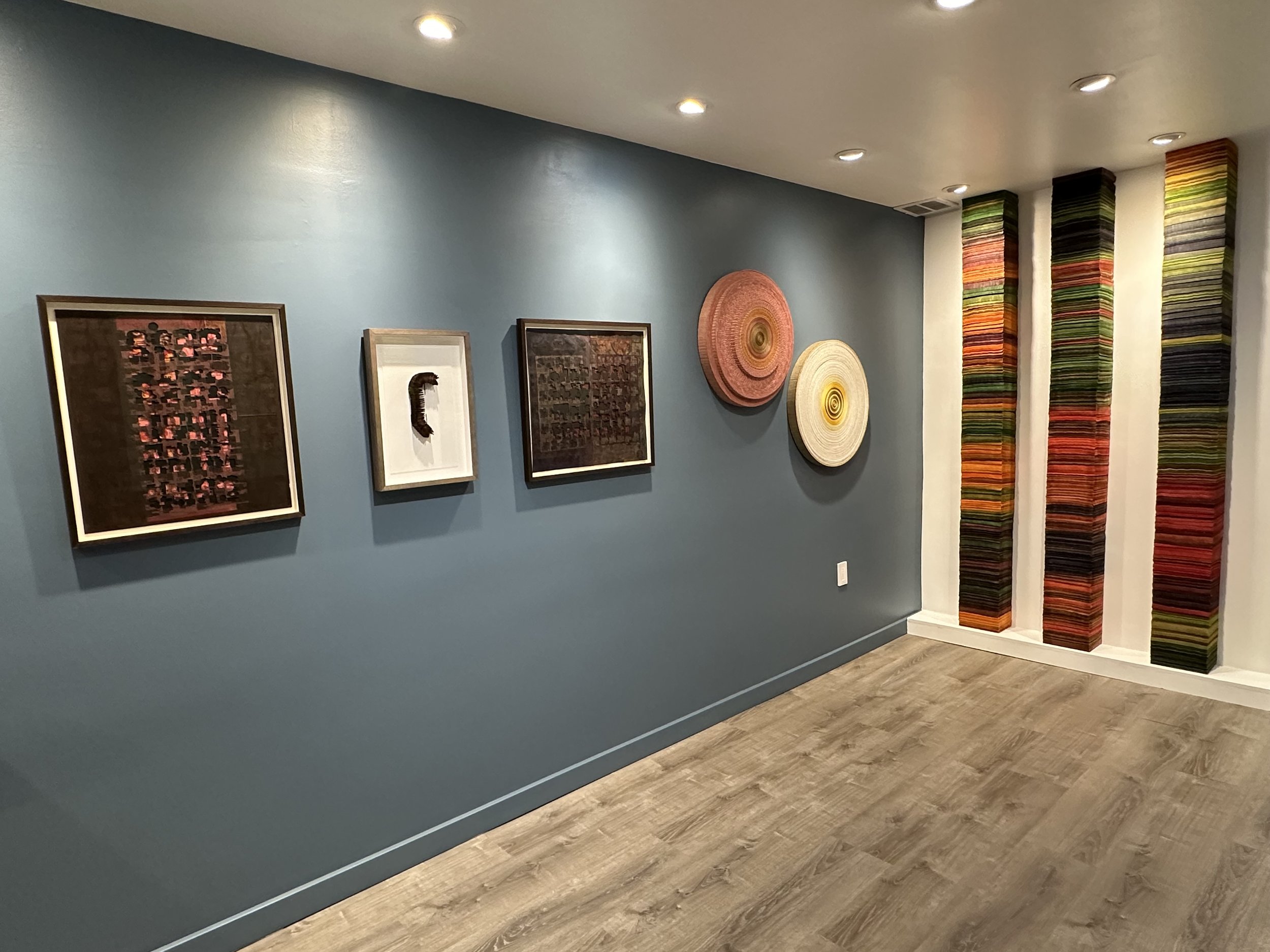
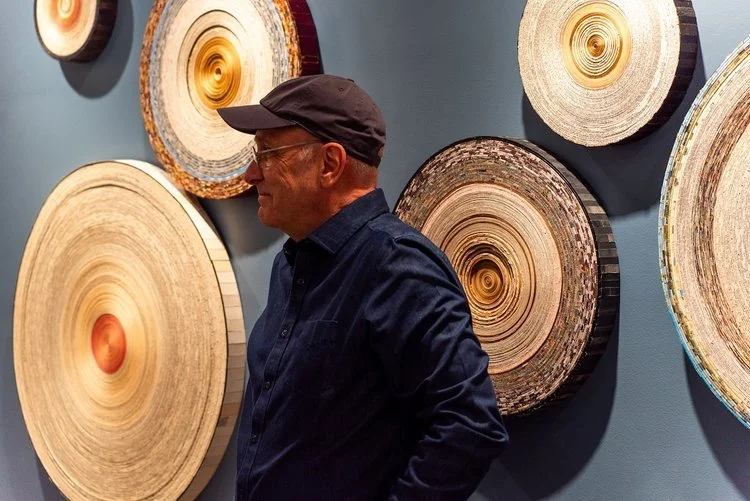
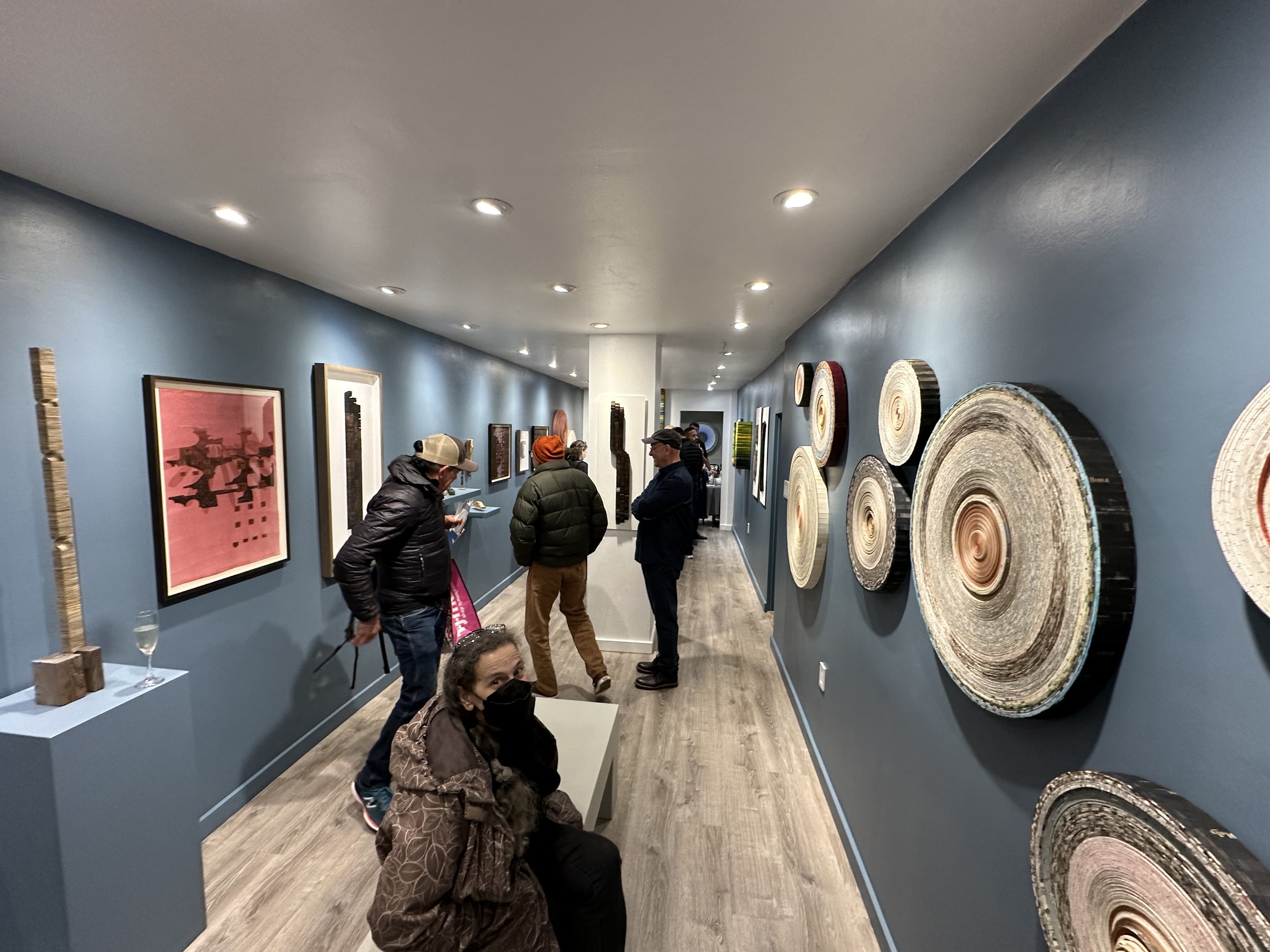
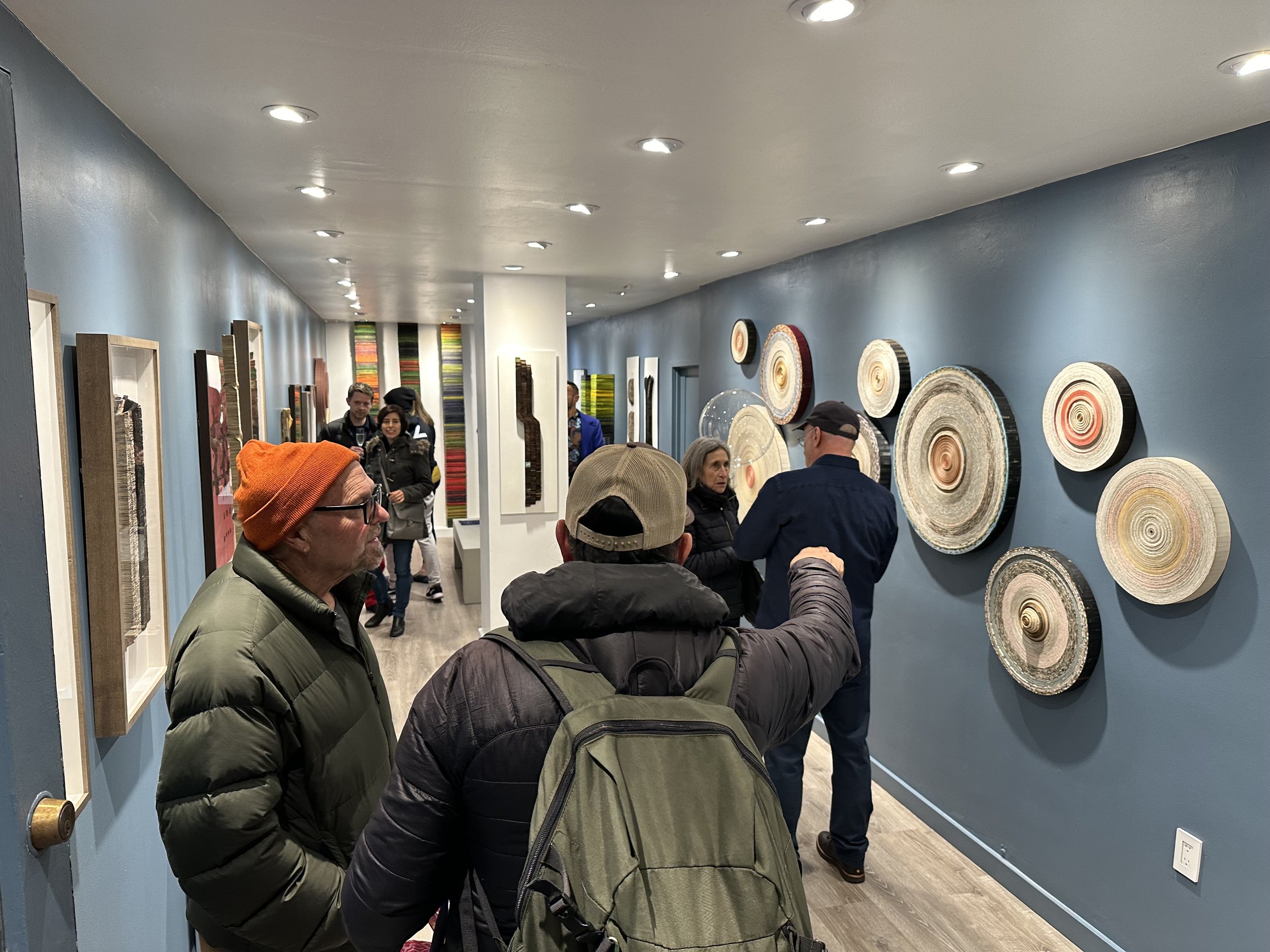
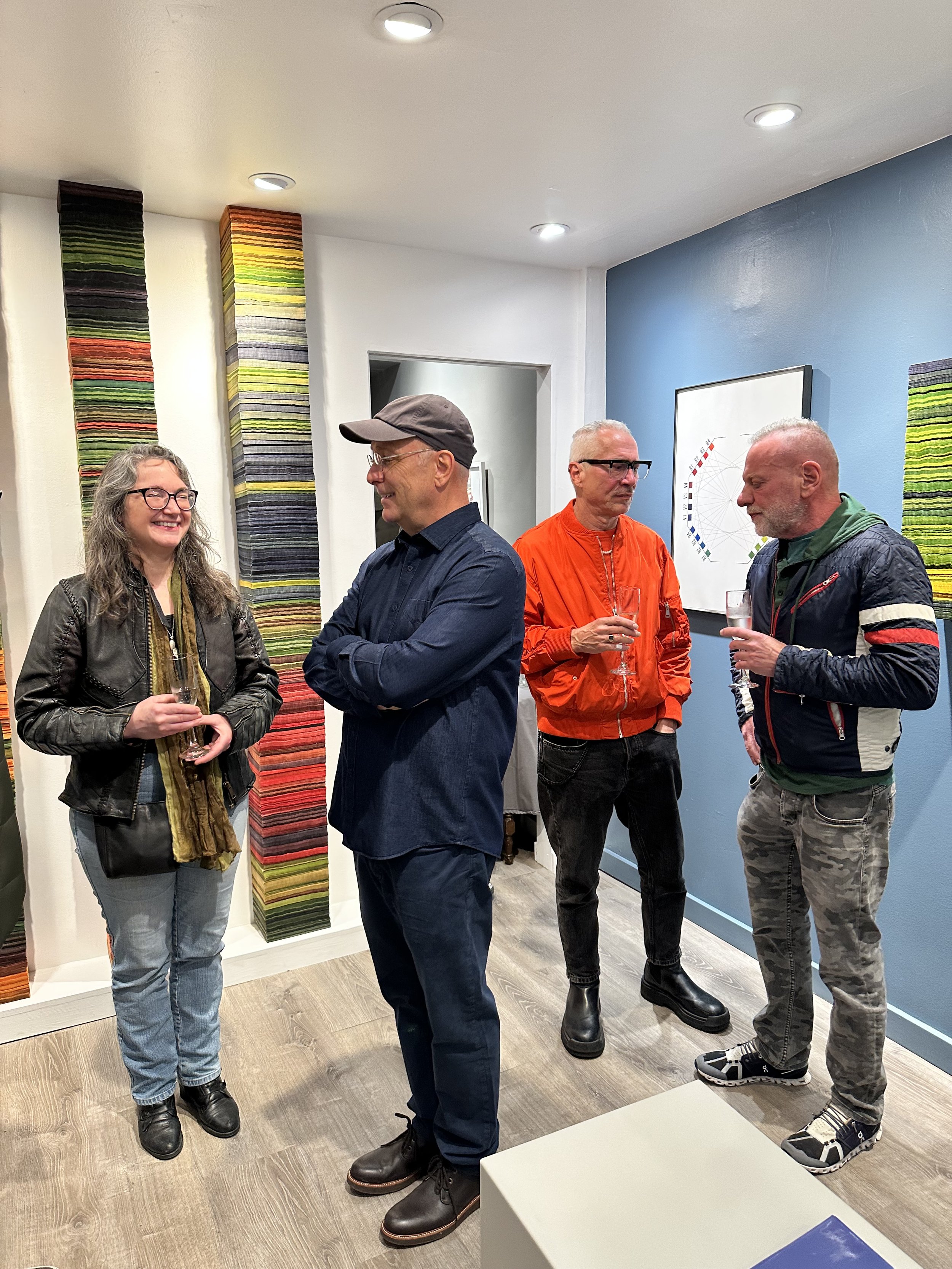
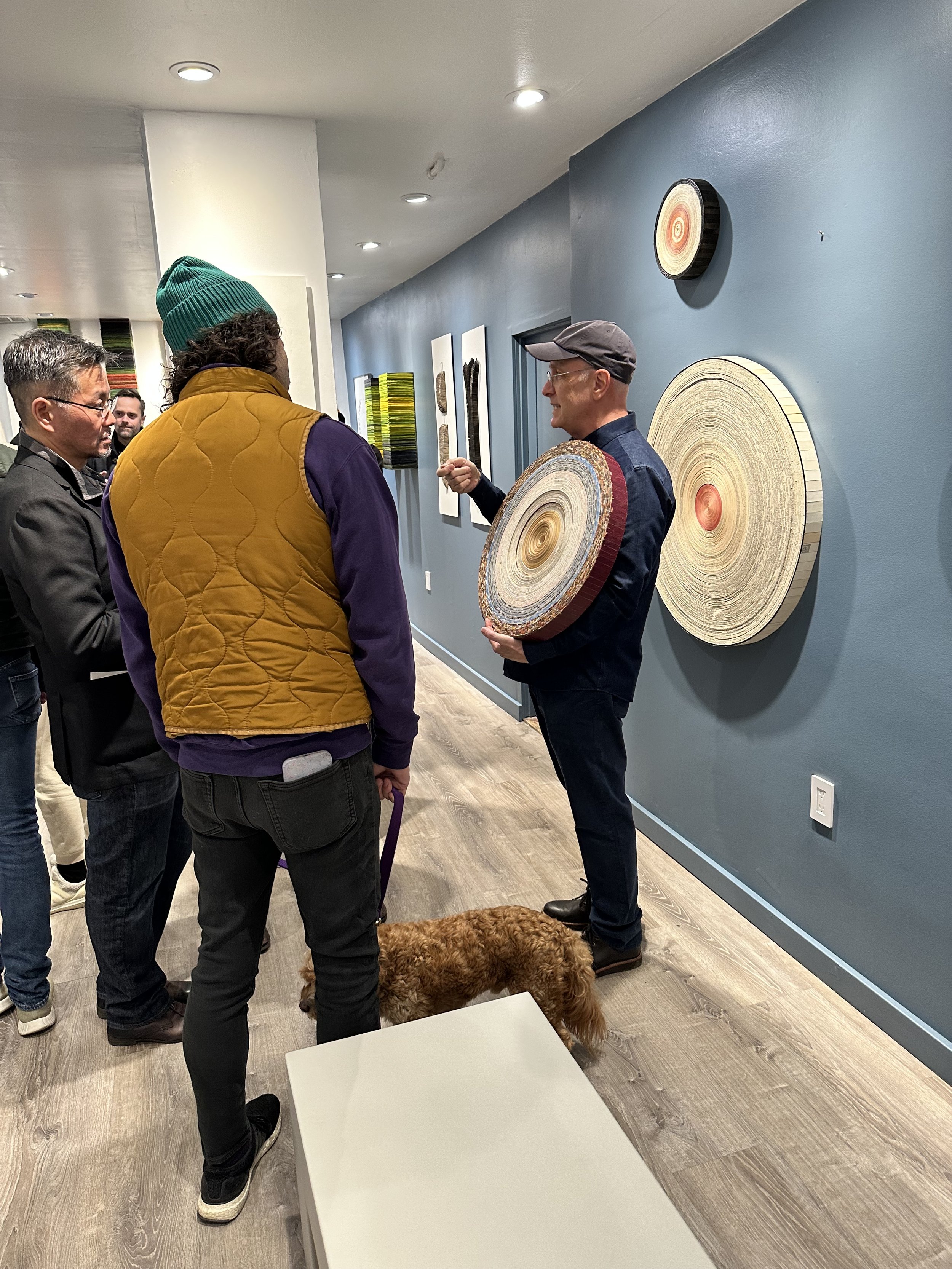

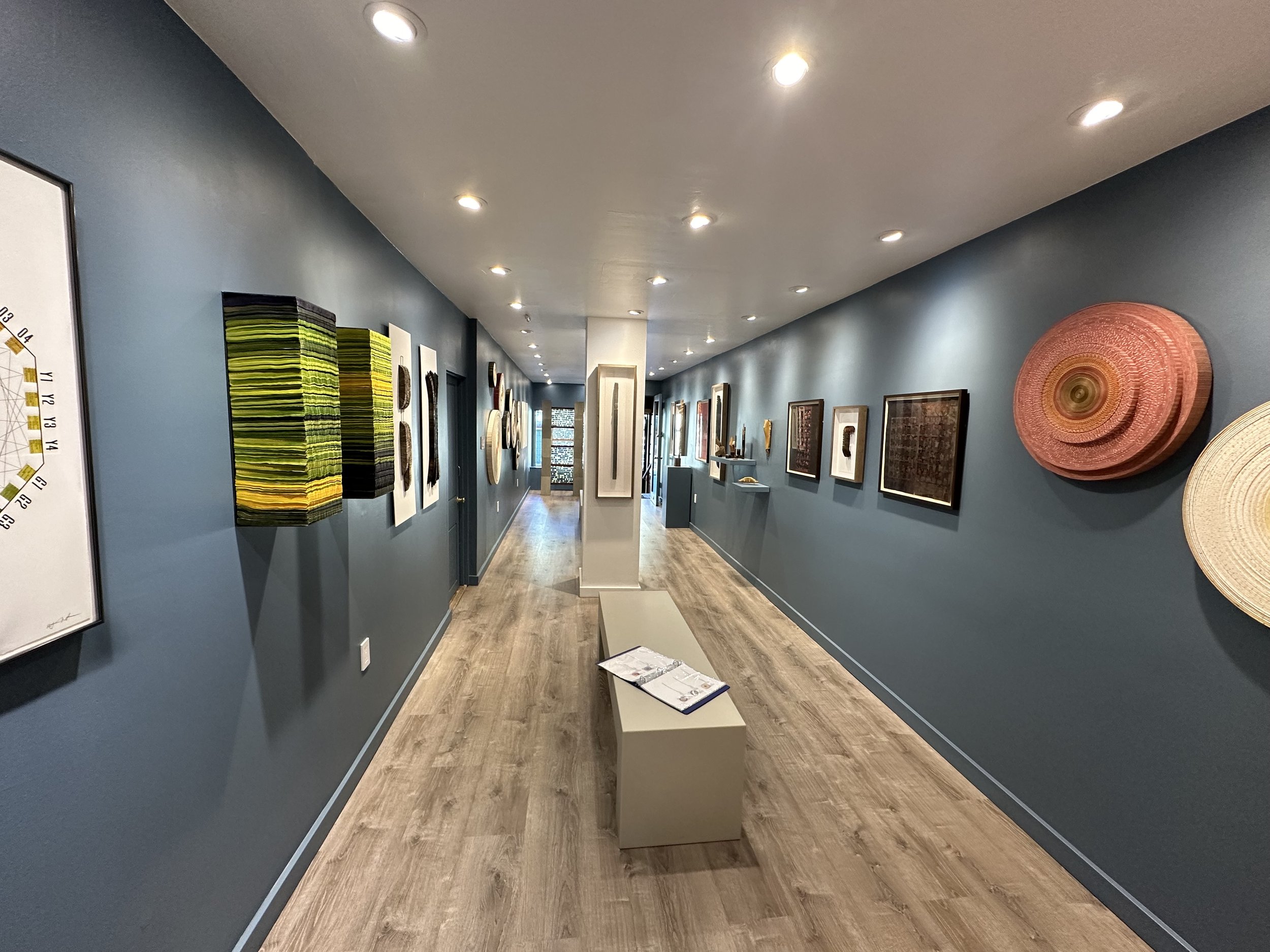
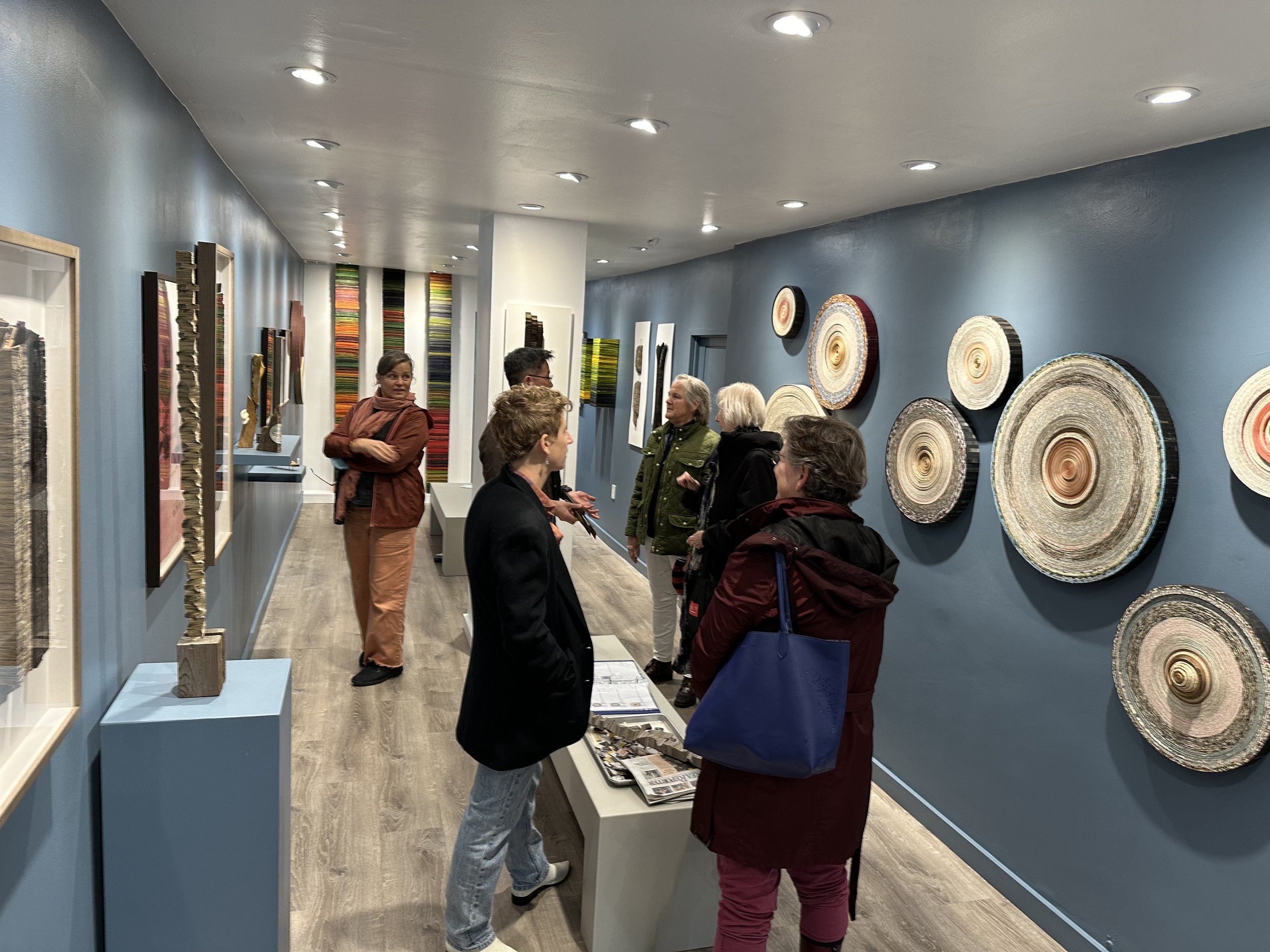
ARTISTS
KATIE MURKEN
Oakland Based Mixed Media Artist
Artist's Statement
I create art as a way to transmute injustices to women into a source of power. I work with everyday, abject materials that contain the essence of these injustices and I use my creative process to transform them into works of art that reveal the beauty in the act of giving care. I gravitate to ubiquitous materials cast-off from consumer culture because for me they represent the invisibility and devaluation of women’s labor. Throughout the course of my career I have worked with a range of materials and images that correlate to my personal and ancestral experiences of domesticity as an oppressive and insidious institution. Telephone books, plastic shopping bags, grocery ads and barbed wire are materials that speak to me of capitalist consumerism and its ability to bind and oppress women by commodifying and colonizing care. Using humble and direct techniques based in quilting, piecework, collage and assemblage I approach these objects with an attitude of maternal tenderness and the desire to breathe new life into something that feels hopeless. Through my careful and attentive reworking I transform these cast-off materials into powerful manifestations of hope and healing.
Process
My process is driven by transformation and the desire to breathe new life into cast-off materials. This process reflects my personal journey as a woman and mother who has borne witness to the effects of capitalism and patriarchy on a woman’s sense of worth and personal power. I am drawn to found materials that embody a sense of hopelessness and abjection. Over the course of my career I have worked with telephone books, plastic shopping bags and currently barbed wire. I begin by acquainting myself with the material and experimenting with its form and features to understand how it can be transformed. I immerse myself in this phase of the process and trust intuition so that the material acts as a guide and teacher for how it wishes to transform and what it wants to communicate. I do not consider myself a conceptual artist, but rather one who listens closely. Each project is unique in method and outcome, but I tend to use different forms of deconstruction to “take apart” the material. Then I identify how I will integrate these different parts. It might mean adding color, or creating a compositional arrangement, but there is always an intention to create wholeness and this reflects my inner journey as well.
"Array/ New York Booze Bag: Purple, Black, Blue," Plastic Bags, cinder block, plexiglass, salvaged wood.
Detail, "Array/ New York Booze Bag: Purple, Black, Blue," Plastic Bags, cinder block, plexiglass, salvaged wood.
Detail, "Array/ New York Booze Bag: Purple, Black, Blue," Plastic Bags, cinder block, plexiglass, salvaged wood.
"Array/ New York Booze Bag: Yellow, Black, Blue," Plastic bags, cinder block, plexiglass, salvaged wood
Detail, "Array/ New York Booze Bag: Yellow, Black, Blue," Plastic bags, cinder block, plexiglass, salvaged wood
Detail, "Array/ New York Booze Bag: Yellow, Black, Blue," Plastic bags, cinder block, plexiglass, salvaged wood
Detail, "Array/ New York Booze Bag: Yellow, Black, Blue," Plastic bags, cinder block, plexiglass, salvaged wood
3 Separate Works, Left to Right, "Continua: V3", "Continua: V2", "Continua V1", Phone books and pigment dye.
Detail, "Continua: V3", Phone books and pigment dye.
Detail, "Continua: V3", Phone books and pigment dye.
Detail, "Continua: V3", Phone books and pigment dye.
Detail, "Continua: V2", Phone books and pigment dye.
Detail, "Continua: V2", Phone books and pigment dye.
Detail, "Continua: V", Phone books and pigment dye.
Detail, "Continua: V1", Phone books and pigment dye.
Detail, "Continua: V1", Phone books and pigment dye.
"Continua Color Wheel, " Screenprint, collage and embossment on Rives BFK paper, Edition of 6
Detail, "Continua Color Wheel, " Screenprint, collage and embossment on Rives BFK paper, Edition of 6
Detail, "Continua Color Wheel, " Screenprint, collage and embossment on Rives BFK paper, Edition of 6
Detail, "Continua Color Wheel, " Screenprint, collage and embossment on Rives BFK paper, Edition of 6
Detail, "Continua Color Wheel, " Screenprint, collage and embossment on Rives BFK paper, Edition of 6
"Continua: G3 (Section 3)," Phone books, pigment dye and steel frame
Detail, "Continua: G3 (Section 3)," Phone books, pigment dye and steel frame
"Continua: G3 (Section 1)," Phone books, pigment dye and steel frame
Detail "Continua: G3 (Section 1)," Phone books, pigment dye and steel frame
"Daily Bread, " Collage with grocery ads, acrylic wash and black Somerset paper
Detail, "Daily Bread, " Collage with grocery ads, acrylic wash and black Somerset paper
Detail, "Daily Bread, " Collage with grocery ads, acrylic wash and black Somerset paper
"Proudly Serving," Collage with inkjet print, cut-up grocery ads and acrylic wash
Detail, "Proudly Serving," Collage with inkjet print, cut-up grocery ads and acrylic wash
"Exhume," Collage with grocery ads, acrylic Wash and black Somerset paper
Detail, "Exhume," Collage with grocery ads, acrylic Wash and black Somerset paper
"Tabula/Buy Beers," Cut-up grocery ads on Somerset paper
Detail, "Tabula/Buy Beers," Cut-up grocery ads on Somerset paper
"Tabula/Select," Cut-up grocery ads on Somerset paper
Detail, "Tabula/Select," Cut-up grocery ads on Somerset paper
"Tabula/Totem," Cut-up grocery ads on Somerset paper
Detail, "Tabula/Totem," Cut-up grocery ads on Somerset paper
MARIO LAPLANTE
PROFESSOR OF PRINTMAKING
Artist’s Statement
As a printmaker I have accumulated and archived years of printed matters that are calling to be revived. The work made for the Palimpsest Series has allowed me to look back at my past work as a source of reference that can be re-contextualized. The process began in a series of small prototypes where I’ve created discuss like structures made of prints dating from 1984-1986. Old prints were torn and hinged into a long narrow strip of paper that was then rolled into a paper discuss twelve inches in diameter. The end result shows hints of imagery from previous works covered, or partly erased, underneath many new layers. The hint of a black and white etching from 1985 done in Montreal, Quebec, wrapped around discarded old lithographs printed while I was student in Madison, WI. Upon looking at the artwork I am not unlike a Dendrochronologist who uses tree rings to answer questions about how past events affects the present. When applying this principle to the recent pieces for the Palimpsest Series, it reveals that the variations the artwork’s qualities present today has been affected directly by the past. What I have created in the past is again making its presence known in what I’m making today.
Biography
Mario Laplante lives in San Francisco and is a native of Quebec. He exhibits regularly and his work is represented in a number of public collections including: The Bibliotheque National du Canada, Museum of Modern Art in New York, the Tate Gallery and the Victoria and Albert Museum in London.
He received his MFA from University of Wisconsin – Madison. These were extremely formative years for him, combining his interest of book and periodical illustration, typography and type design with the “fine arts” potential of woodcuts, etching, lithography, screen-printing, and digital prints.
His teaching is deeply connected to his work as a studio artist, and his interactions with students and the dialogue that develops within the academic environment are integral to his research and projects. His work with students has provided him with problems to solve and questions to answer. Art has the ability to raise consciousness and engage critical thinking, and he believes this is now more important than ever.
"First Book no 2," Paper &covers from one Bible, museum board & heritage corrugated board
Detail, "First Book no 2," Paper &covers from one Bible, museum board & heritage corrugated board
Detail, "First Book no 2," Paper &covers from one Bible, museum board & heritage corrugated board
Detail, "First Book no 2," Paper &covers from one Bible, museum board & heritage corrugated board
Detail, "First Book no 2," Paper &covers from one Bible, museum board & heritage corrugated board
"First Book no 9," Paper &covers from one Bible, museum board & heritage corrugated board
Detail, "First Book no 9," Paper &covers from one Bible, museum board & heritage corrugated board
Detail, "First Book no 9," Paper &covers from one Bible, museum board & heritage corrugated board
"First Book no 10," Paper &covers from one Bible, museum board & heritage corrugated board
Detail, "First Book no 10," Paper &covers from one Bible, museum board & heritage corrugated board
Detail, "First Book no 10," Paper &covers from one Bible, museum board & heritage corrugated board
"First Book no 11," Paper &covers from one Bible, museum board & heritage corrugated board
Detail, "First Book no 11," Paper &covers from one Bible, museum board & heritage corrugated board
Detail, "First Book no 11," Paper &covers from one Bible, museum board & heritage corrugated board
"First Book no 12," Paper &covers from one Bible, museum board & heritage corrugated board
Detail, "First Book no 12," Paper &covers from one Bible, museum board & heritage corrugated board
Detail, "First Book no 12," Paper &covers from one Bible, museum board & heritage corrugated board
Detail, "First Book no 12," Paper &covers from one Bible, museum board & heritage corrugated board
"First Book no 13," Paper &covers from one Bible, museum board & heritage corrugated board
Detail, "First Book no 13," Paper &covers from one Bible, museum board & heritage corrugated board
Detail, "First Book no 13," Paper &covers from one Bible, museum board & heritage corrugated board
"First Book no 14," Paper &covers from one Bible, museum board & heritage corrugated board
Detail, "First Book no 14," Paper &covers from one Bible, museum board & heritage corrugated board
Detail, "First Book no 14," Paper &covers from one Bible, museum board & heritage corrugated board
"First Book no 15," Paper &covers from one Bible, museum board & heritage corrugated board
Detail, "First Book no 15," Paper &covers from one Bible, museum board & heritage corrugated board
Detail, "First Book no 15," Paper &covers from one Bible, museum board & heritage corrugated board
"First Book no 16," Paper &covers from one Bible, museum board & heritage corrugated board
Detail, "First Book no 16," Paper &covers from one Bible, museum board & heritage corrugated board
Detail, "First Book no 16," Paper &covers from one Bible, museum board & heritage corrugated board
Detail, "First Book no 16," Paper &covers from one Bible, museum board & heritage corrugated board
"Fléchée," Gilded edge paper from books, archival ink, museum board & heritage corrugated board
Detail, "Fléchée," Gilded edge paper from books, archival ink, museum board & heritage corrugated board
Detail, "Fléchée," Gilded edge paper from books, archival ink, museum board & heritage corrugated board
"Tribal," Gilded edge paper from books, archival ink, museum board & heritage corrugated board
Detail, "Tribal," Gilded edge paper from books, archival ink, museum board & heritage corrugated board
Detail, "Tribal," Gilded edge paper from books, archival ink, museum board & heritage corrugated board
"Firmament," Gilded edge paper from books, archival ink, museum board & heritage corrugated board
Detail, "Firmament," Gilded edge paper from books, archival ink, museum board & heritage corrugated board
Detail, "Firmament," Gilded edge paper from books, archival ink, museum board & heritage corrugated board
BYRON B. KIM
ARTIST & ARCHITECT
Artist Statement
My process in art developed during graduate studies in Architecture. It was at this time that I became focussed on exploring the innate qualities of different materials and how those materials might relate to each other and be connected or joined. Rather than (or in addition to) picking up a sketchbook, I’d ‘sketch’ with the actual building/construction materials. These studies often resulted in a sort of specialized language in which a vocabulary and/or grammar began to form from how these materials inherently wanted to come together, both physically and compositionally. It was through this unique material language, a language derived from the innate qualities of the materials themselves, that idea development or question answering occurred.
The material palette of my most recent work is primarily focussed on old newsprint (the BAR and SFWeekly), ink, wood and twine. The squares of newsprint began as an abstract representation of physical archives for architectural studies (c. 2006-2013). But as physical printed media began to rapidly transition to digital media, what the newsprint represent also began to change. I began to push these stacks to incorporate ideas of an endless accretion of information, sediment, an infinite scroll, etc. More broadly across different pieces, I explore the notion of how the idea of identity is changing (and how these changes may be represented) when constructed from an amorphous/mutable stack of information.
"Issues 1.2," Newsprint, ink
Details, "Issues 1.2," Newsprint, ink
Details, "Issues 1.2," Newsprint, ink
Details, "Issues 1.2," Newsprint, ink
"Issues 1.3," Newsprint, ink
Detail, "Issues 1.3," Newsprint, ink
Detail, "Issues 1.3," Newsprint, ink
"Issues 1.7," Newsprint, ink
Detail, "Issues 1.7," Newsprint, ink
Detail, "Issues 1.7," Newsprint, ink
"Study-Archive," Plywood, steel, Newsprint, latex
"Study-Archive," Plywood, steel, Newsprint, latex
Detail, "Study-Archive," Plywood, steel, Newsprint, latex
"Chord 1," Newsprint, ink, string
"Chord 1," Newsprint, ink, string
"Chord II," Newsprint, ink
Detail, "Chord II," Newsprint, ink
Detail, "Chord II," Newsprint, ink
Detail, "Chord II," Newsprint, ink
Detail, "Chord II," Newsprint, ink
Detail, "Chord II," Newsprint, ink
Detail, "Chord II," Newsprint, ink
Detail, "Chord II," Newsprint, ink
"Tethered II," Newsprint, string
Detail, "Tethered II," Newsprint, string
Detail, "Tethered II," Newsprint, string
Detail, "Tethered II," Newsprint, string
Detail, "Tethered II," Newsprint, string
Detail, "Tethered II," Newsprint, string
Detail, "Tethered II," Newsprint, string
"Grasp," Wood, steel, latex
"Oblem," Newsprint, ink
"Oblem," Newsprint, ink
"Pressipice III," Newsprint, steel, wood
"Pressipice III," Newsprint, steel, wood
"Rapt 11," Wood, steel, plastic wrap
"Rapt III," Wood, steel, plastic wrap
"Shifting Narrative," Newsprint, ink
Detail, "Shifting Narrative," Newsprint, ink
Detail, "Shifting Narrative," Newsprint, ink
"Sister," Newsprint, ink
Detail, "Sister," Newsprint, ink
"Sprite," Newsprint, ink
"Study-Formwork," Steel, wood, copper, resin
"Study-Screen," Steel, plywood, latex, toner
Detail, "Study-Screen," Steel, plywood, latex, toner
"Tethered," Newsprint, ink, twine
Detail, "Tethered," Newsprint, ink, twine
Detail, "Tethered," Newsprint, ink, twine
Detail, "Tethered," Newsprint, ink, twine
"Snippets," Wood, steel, plastic wrap


